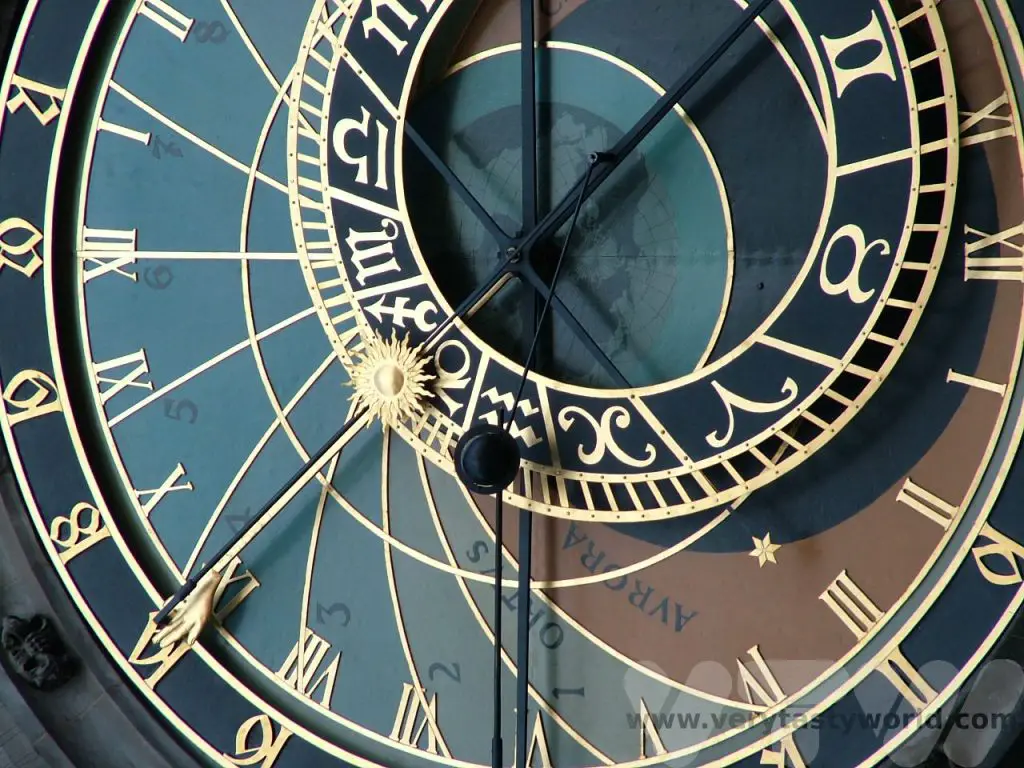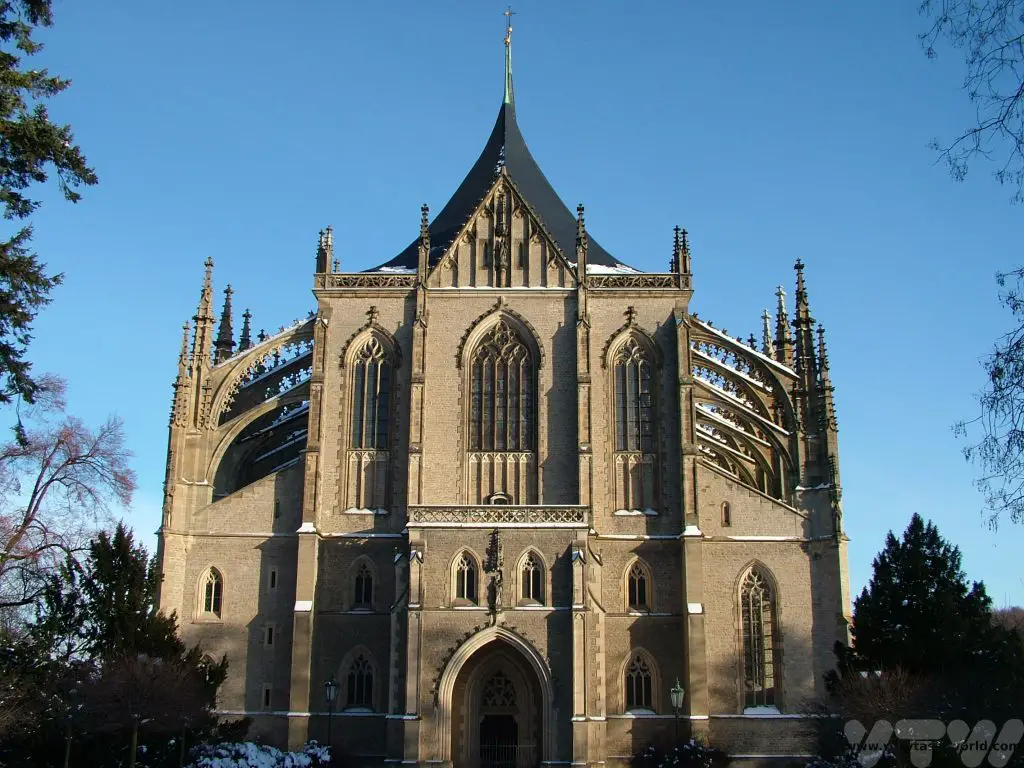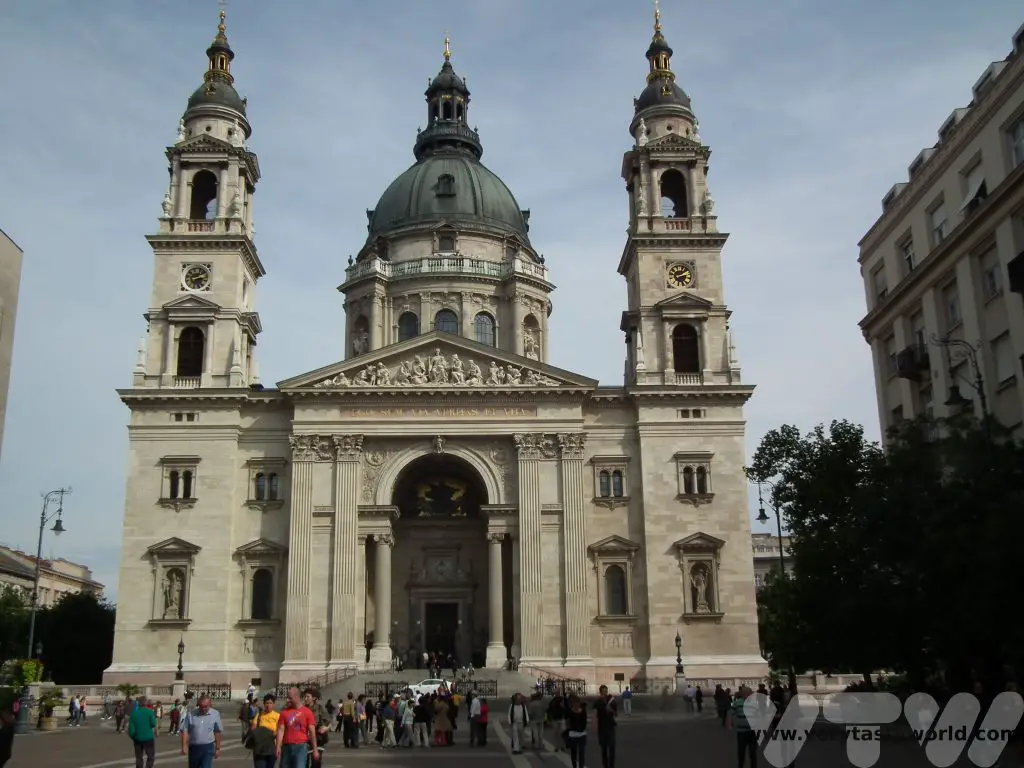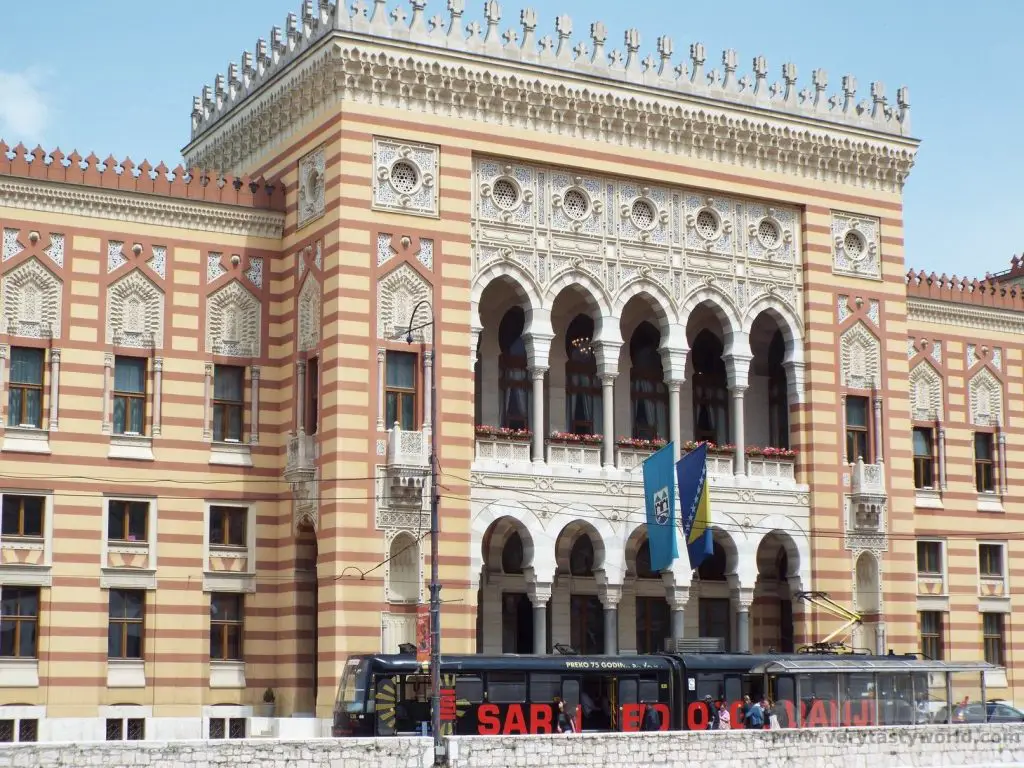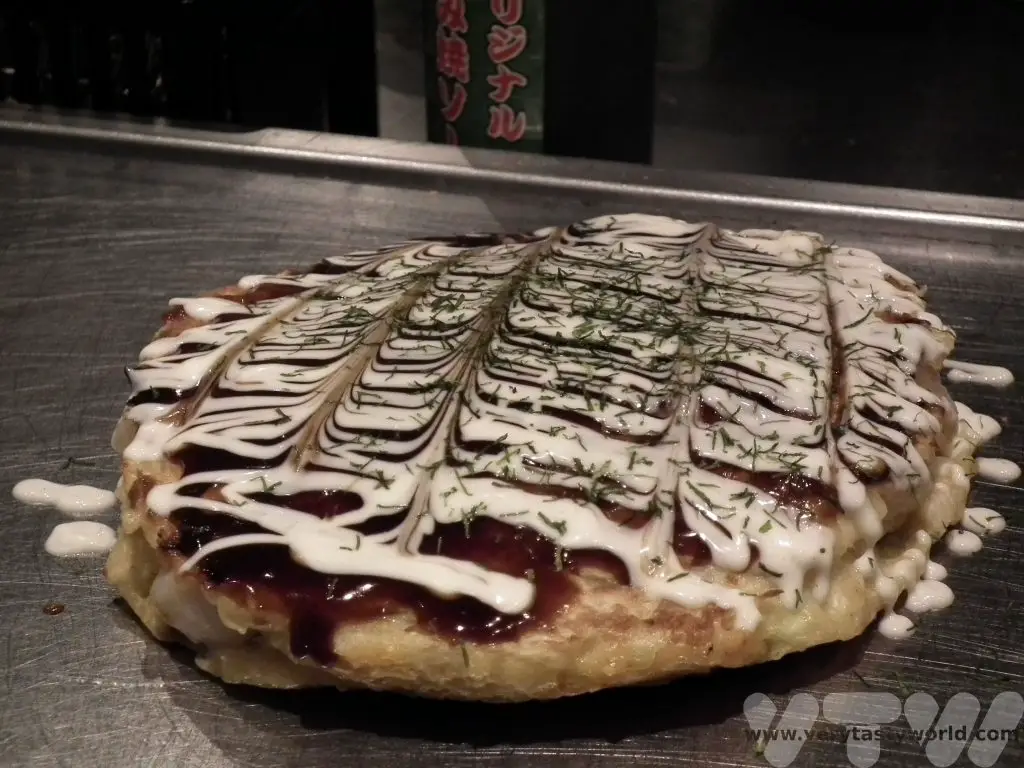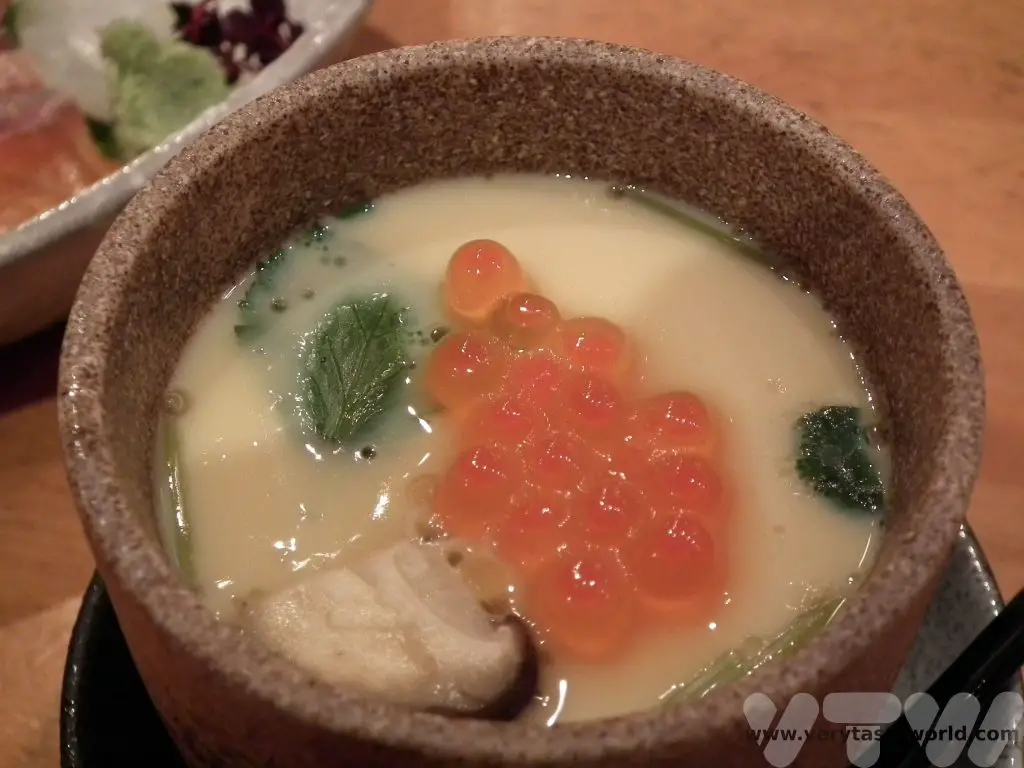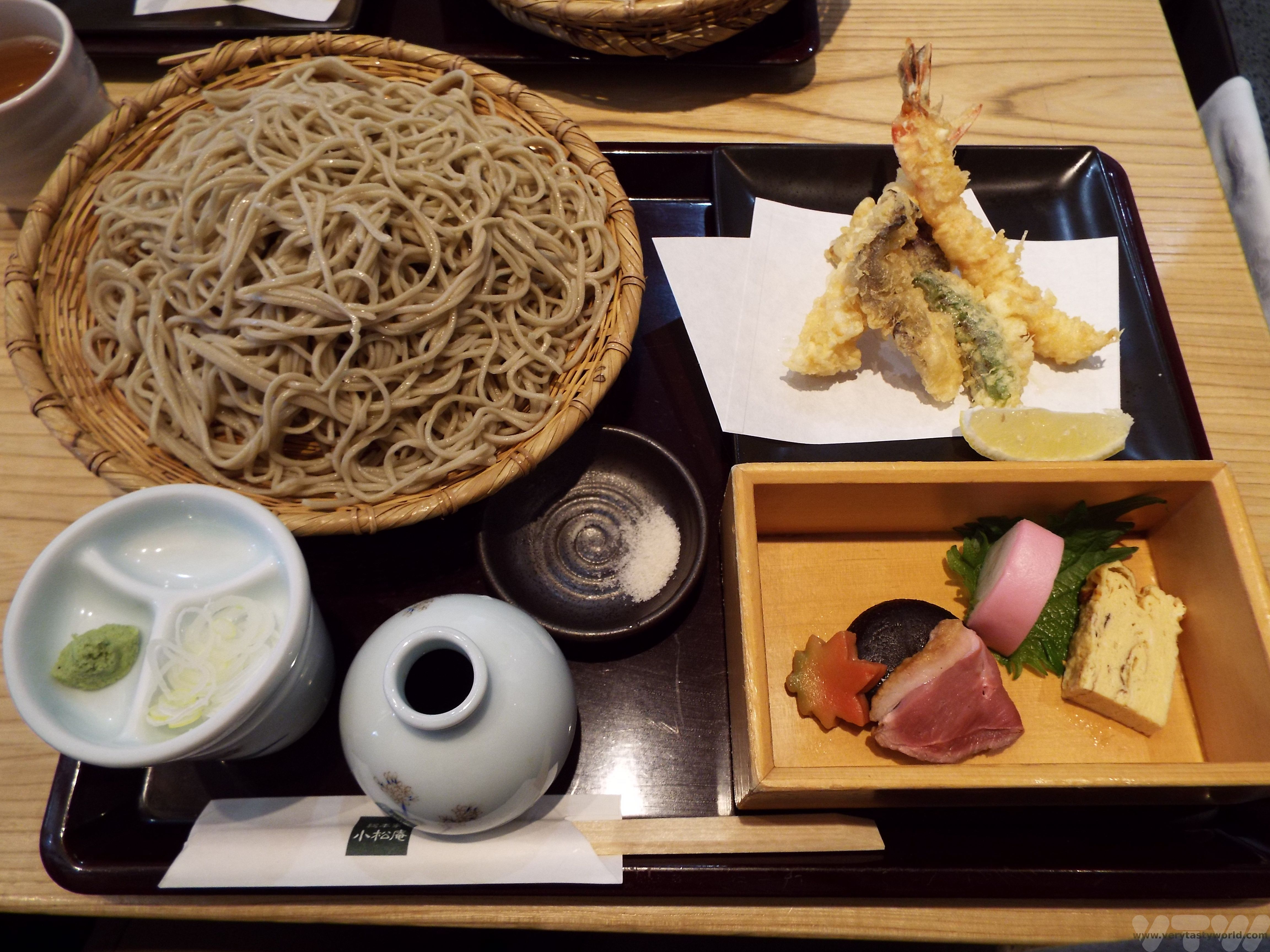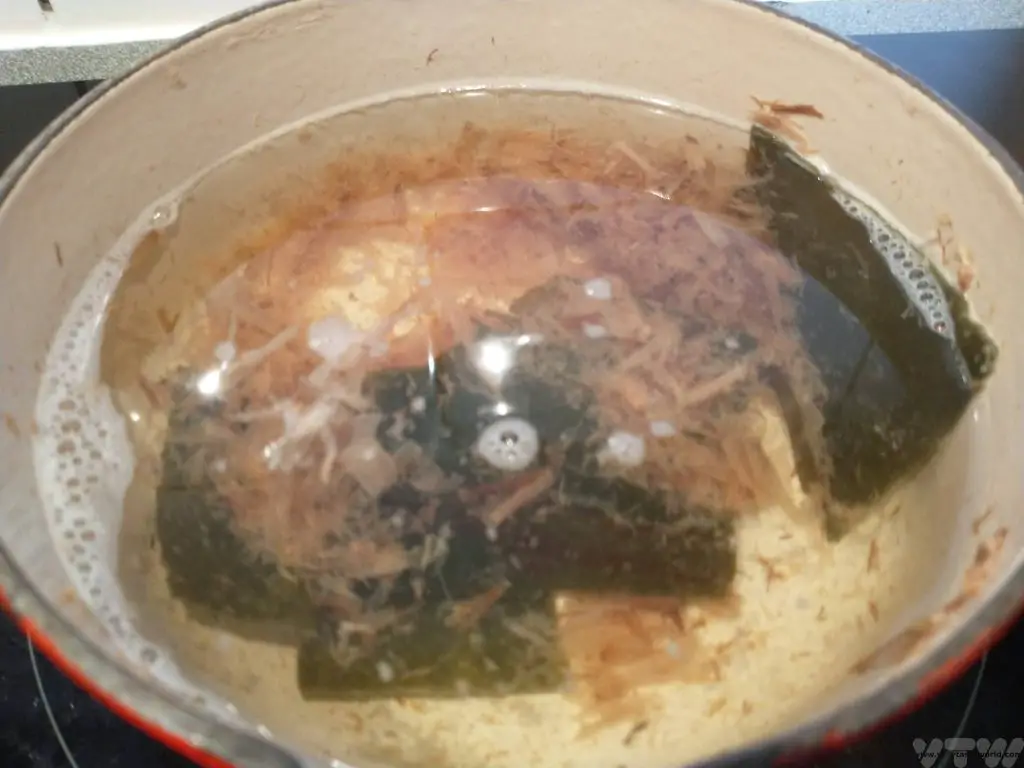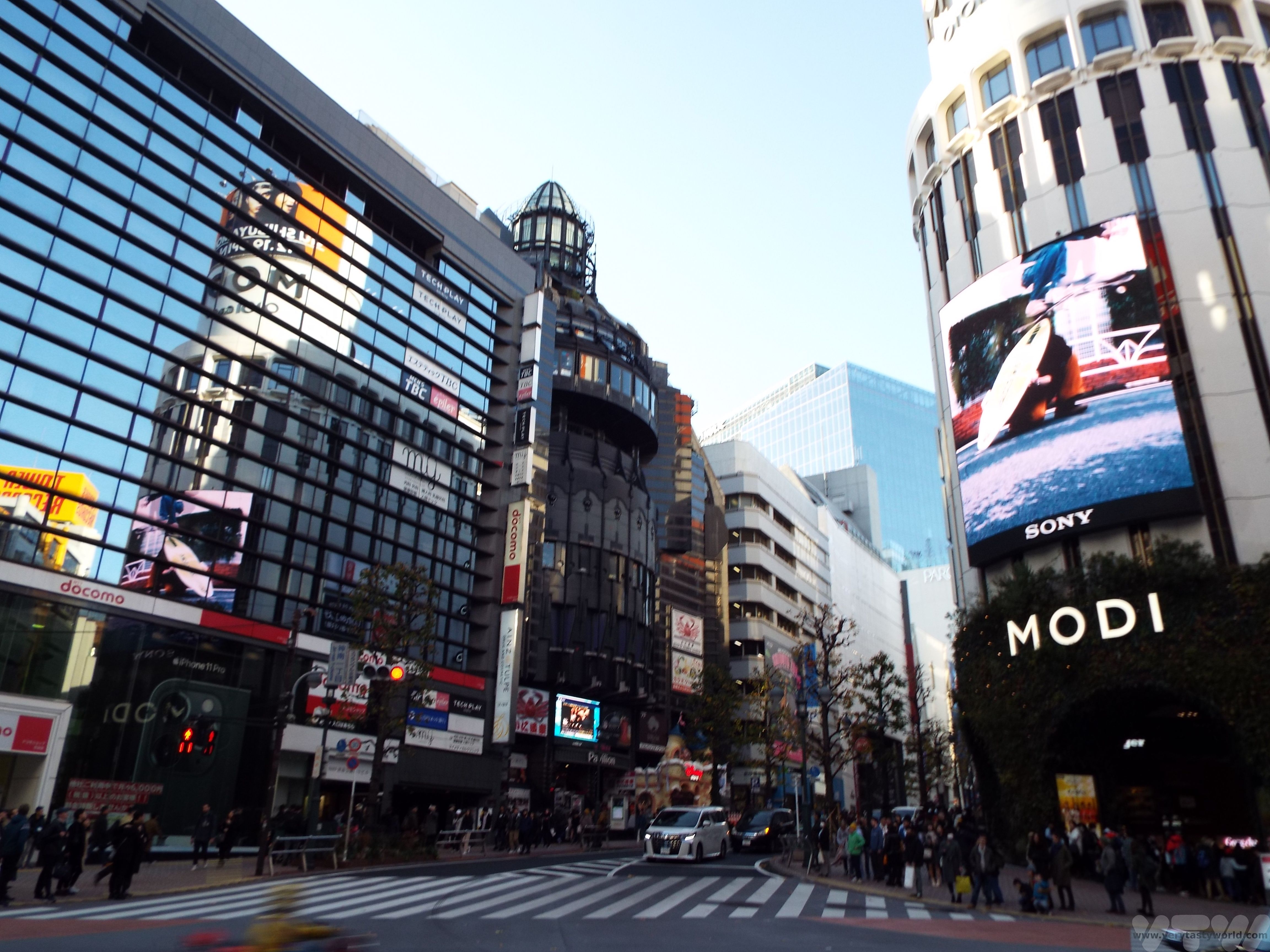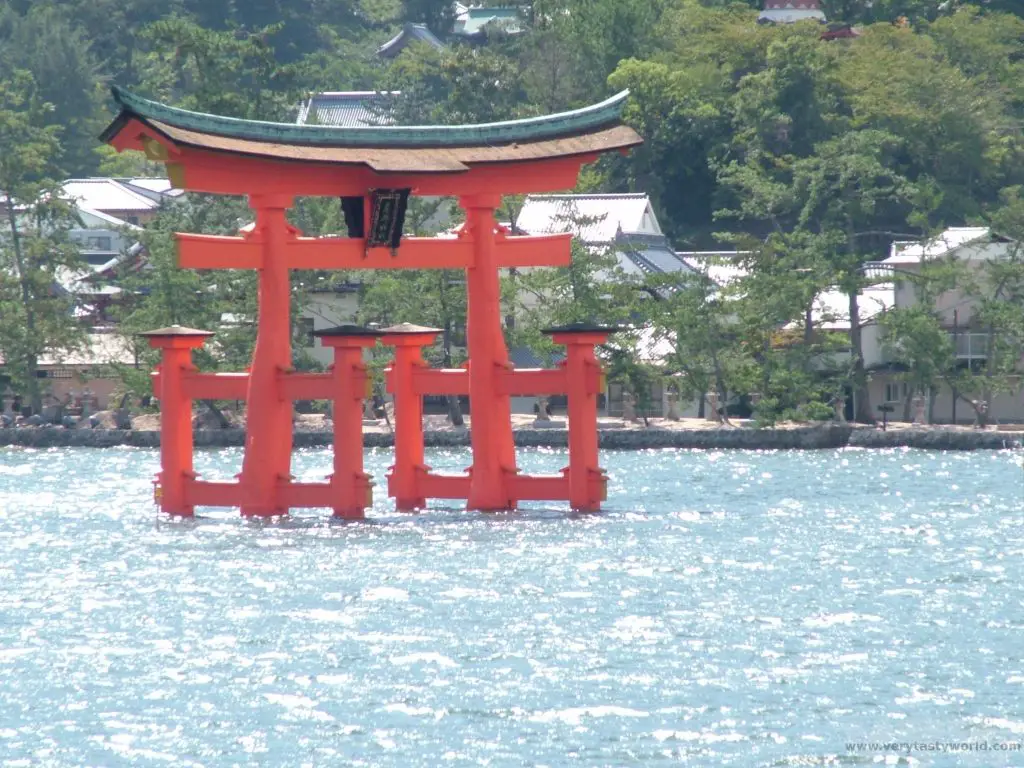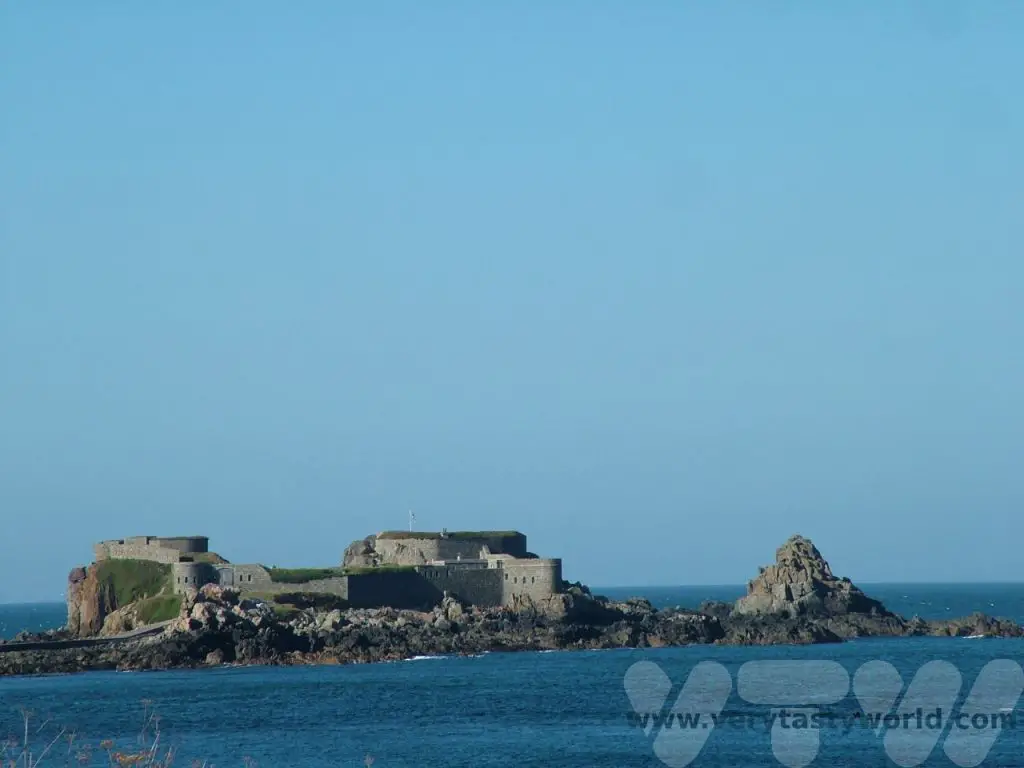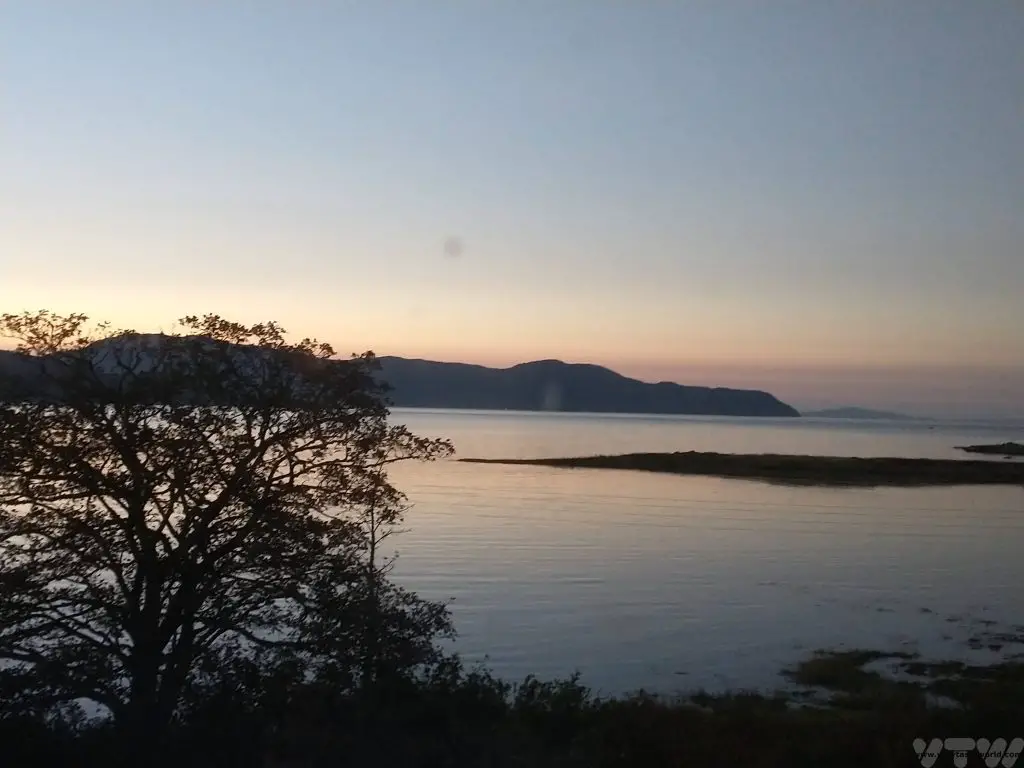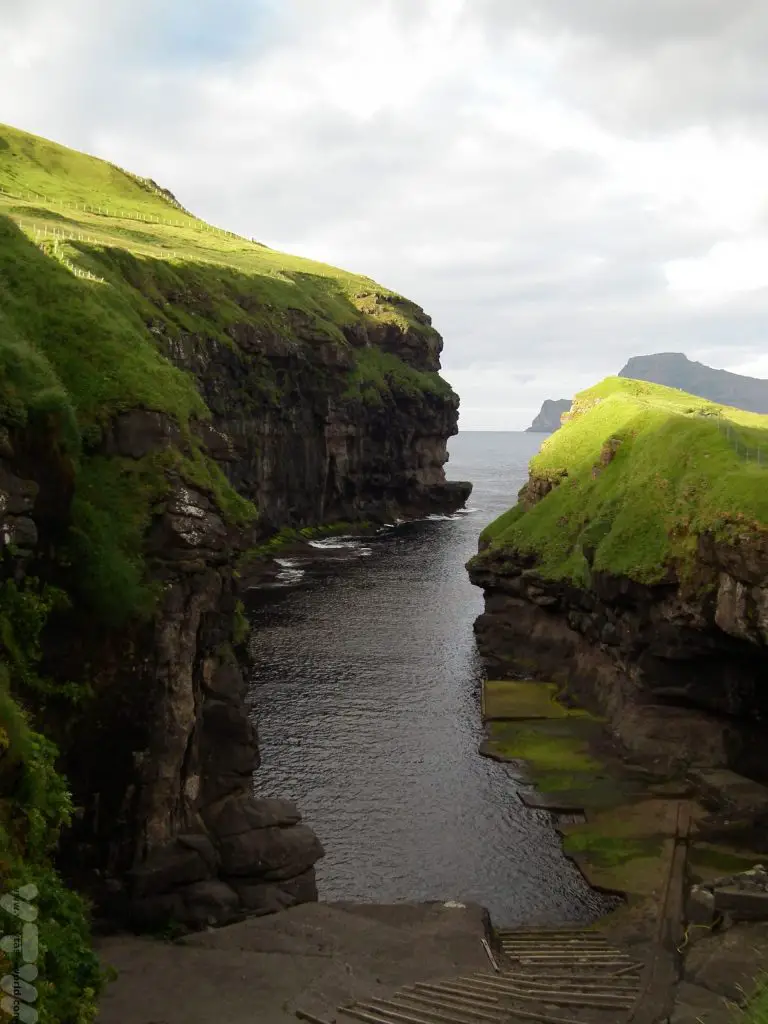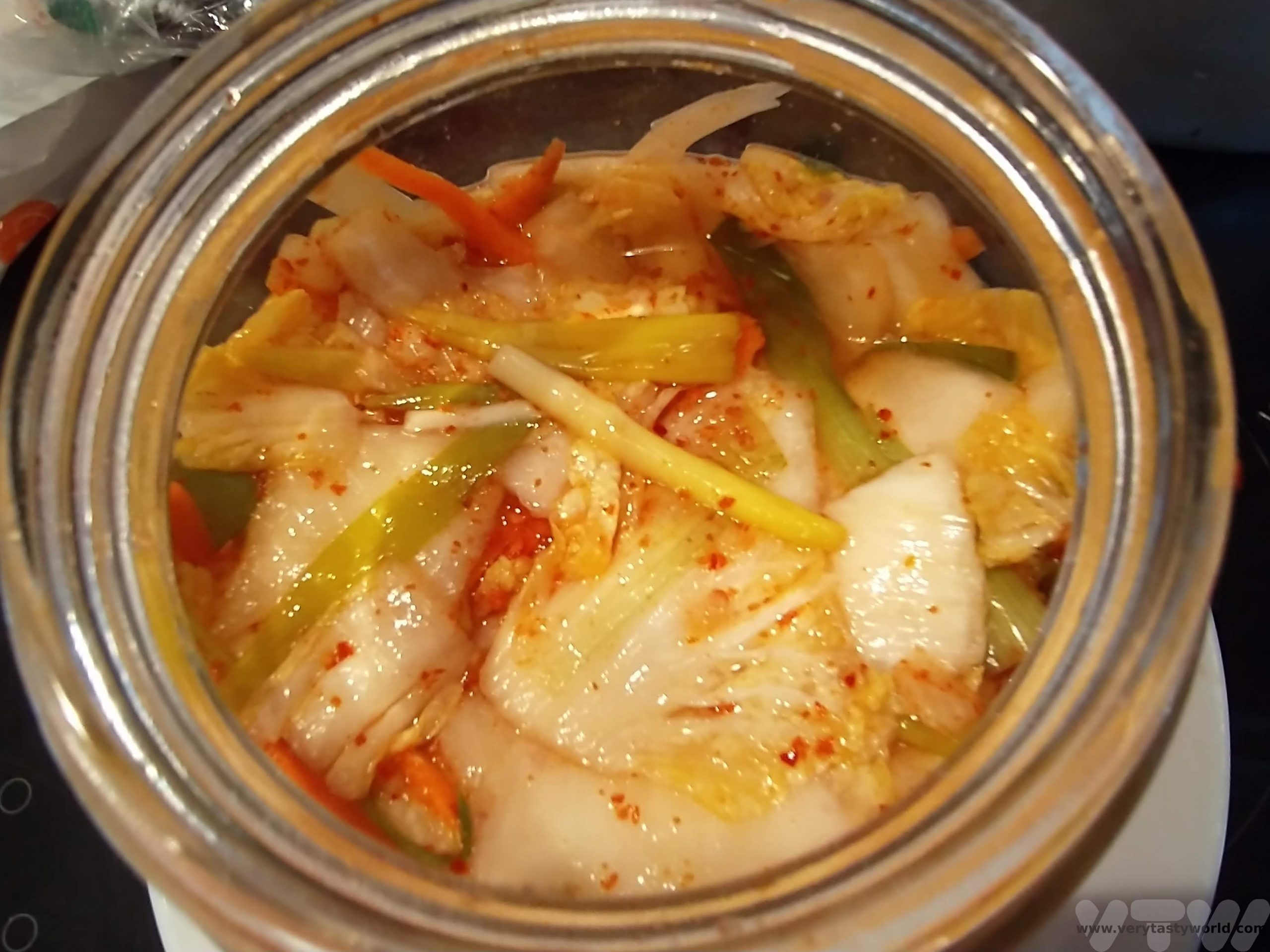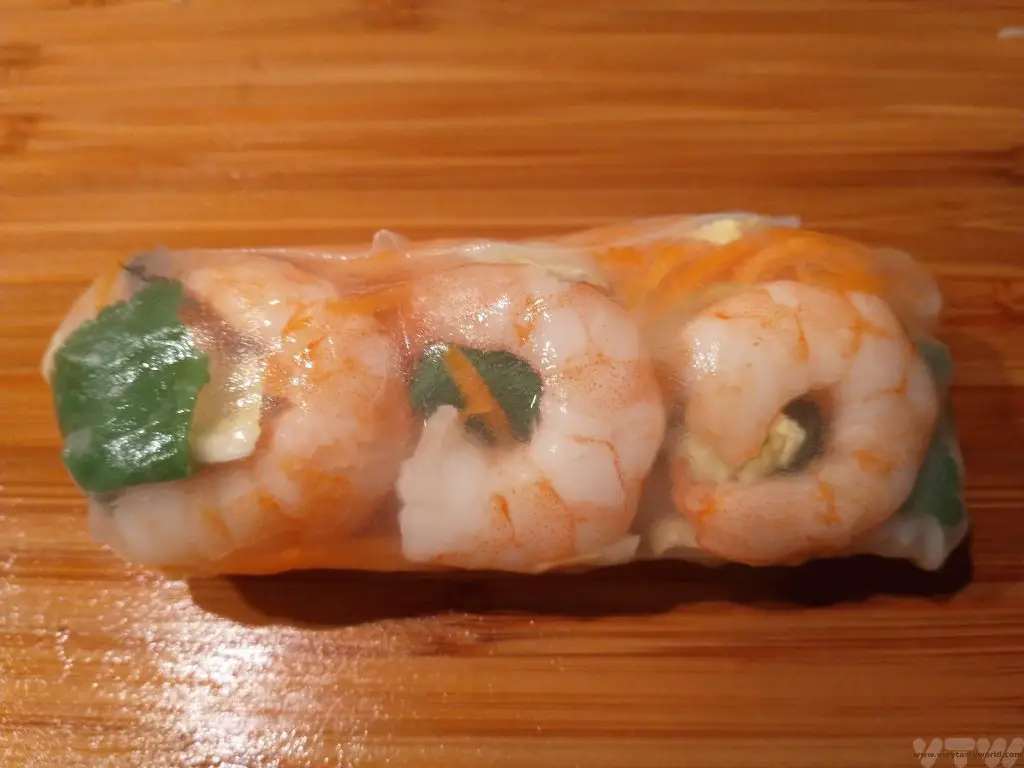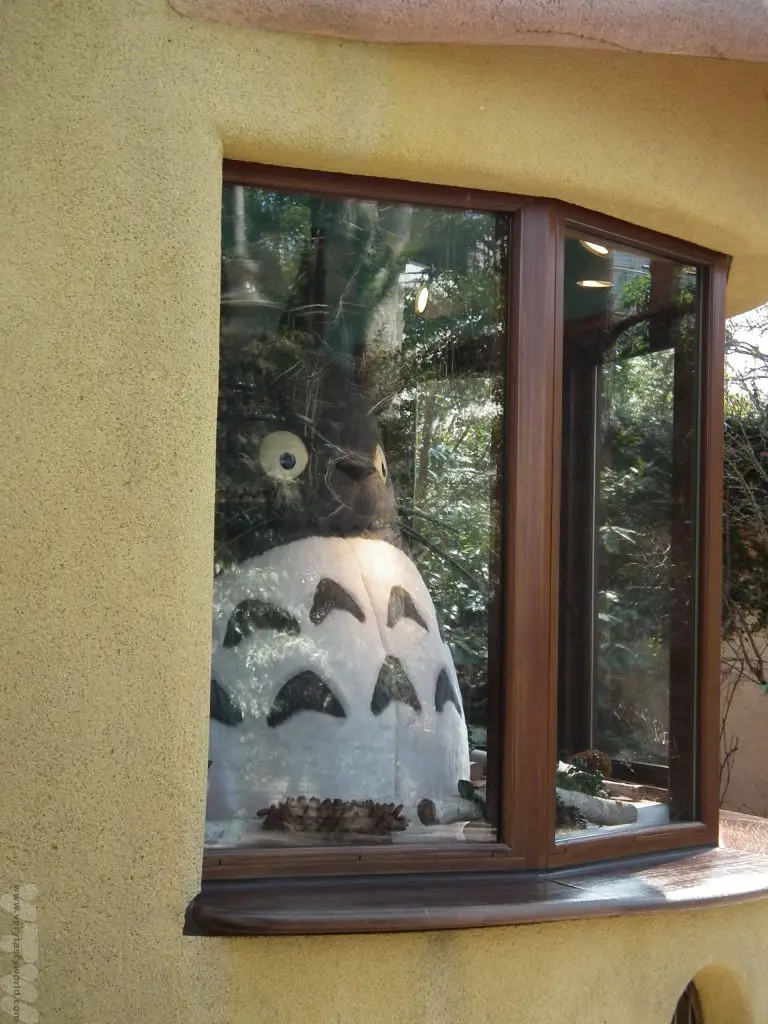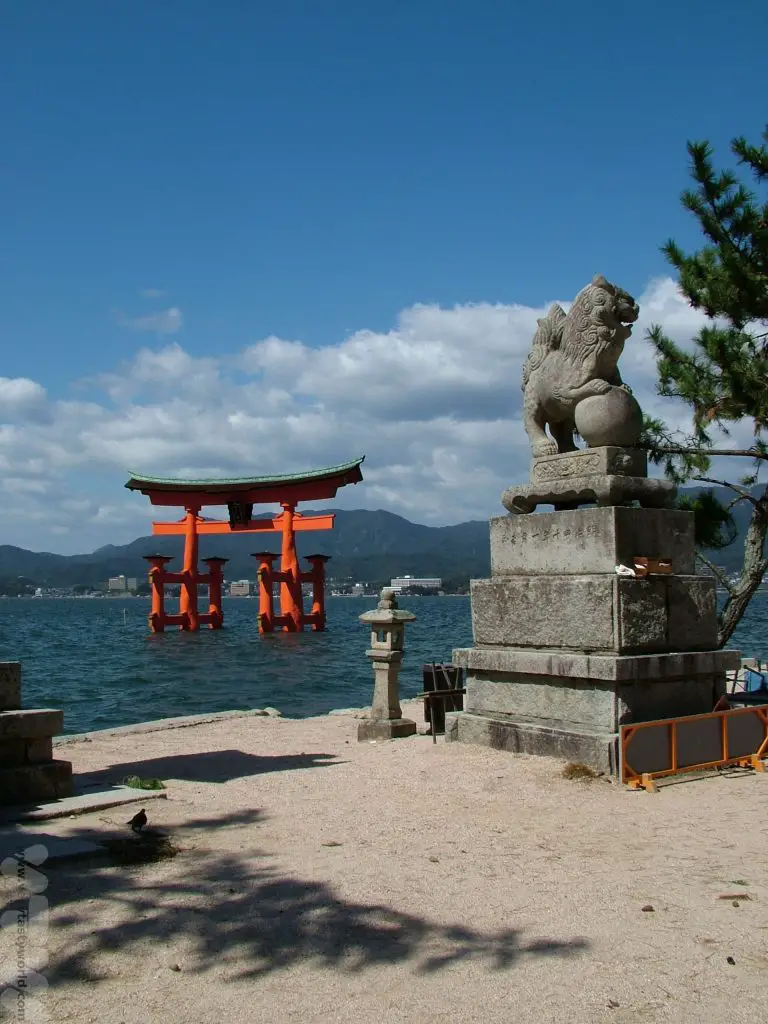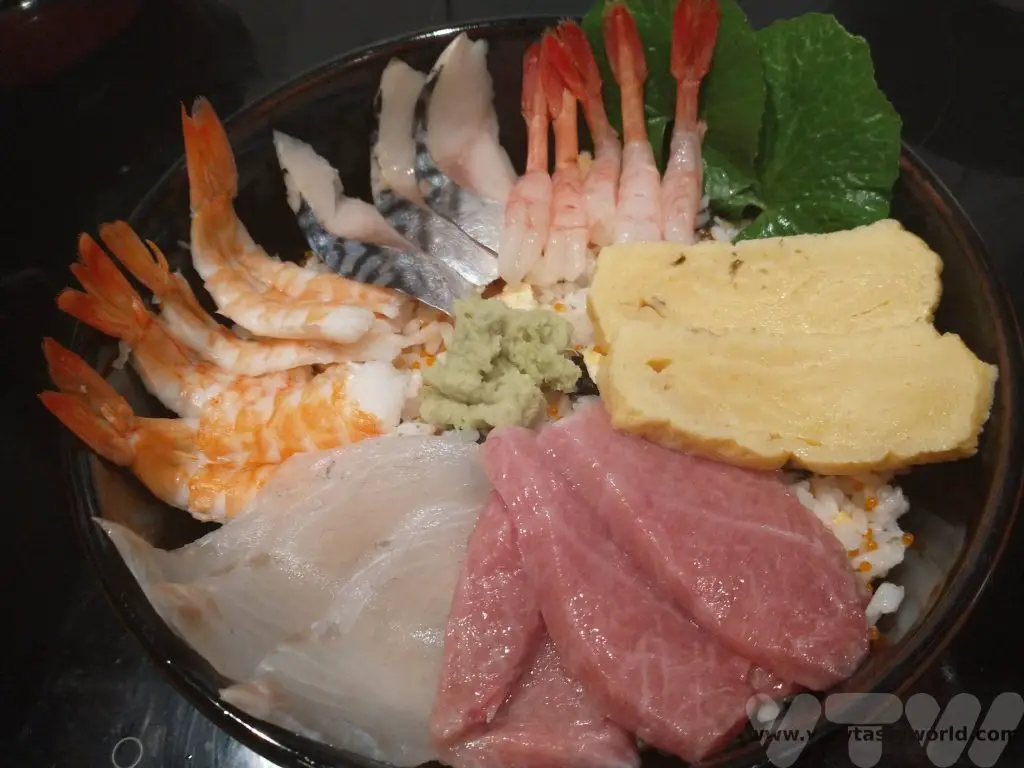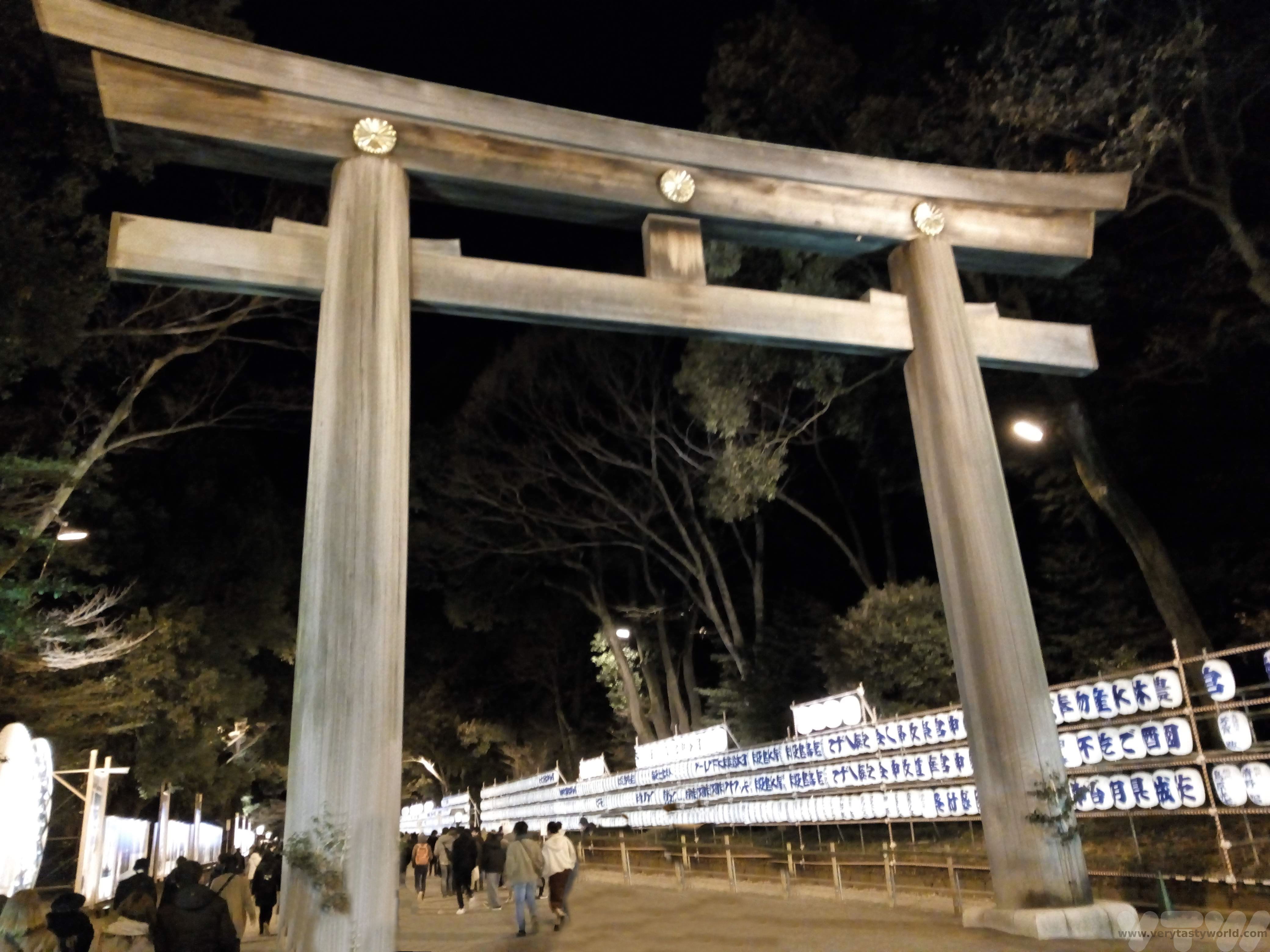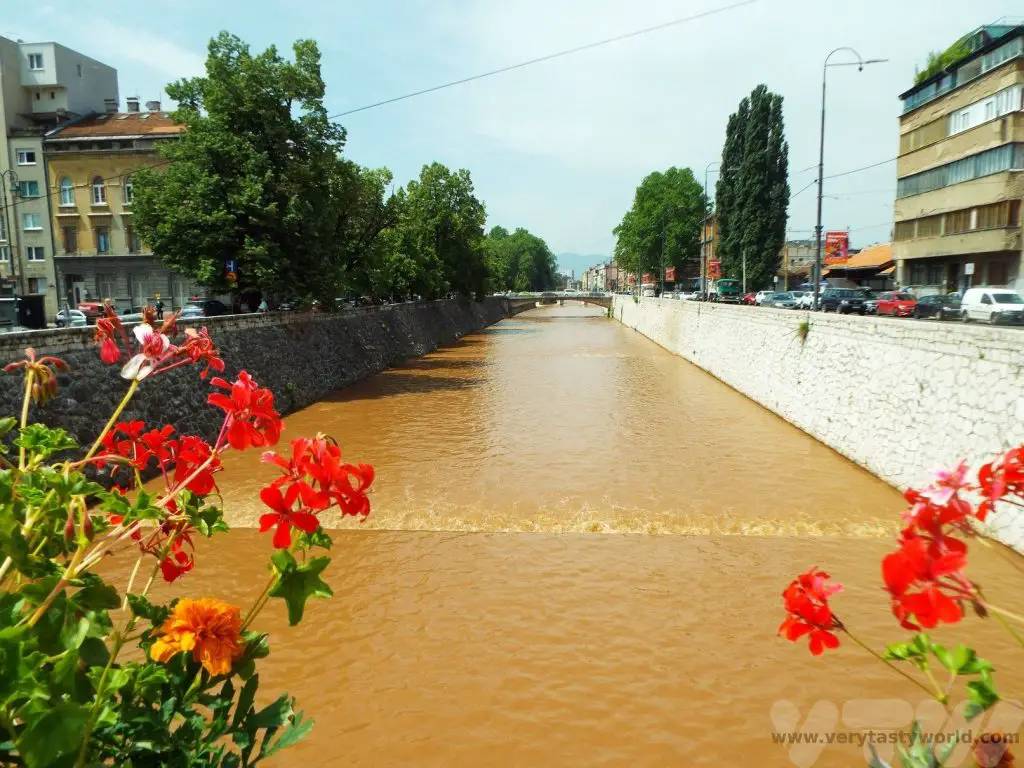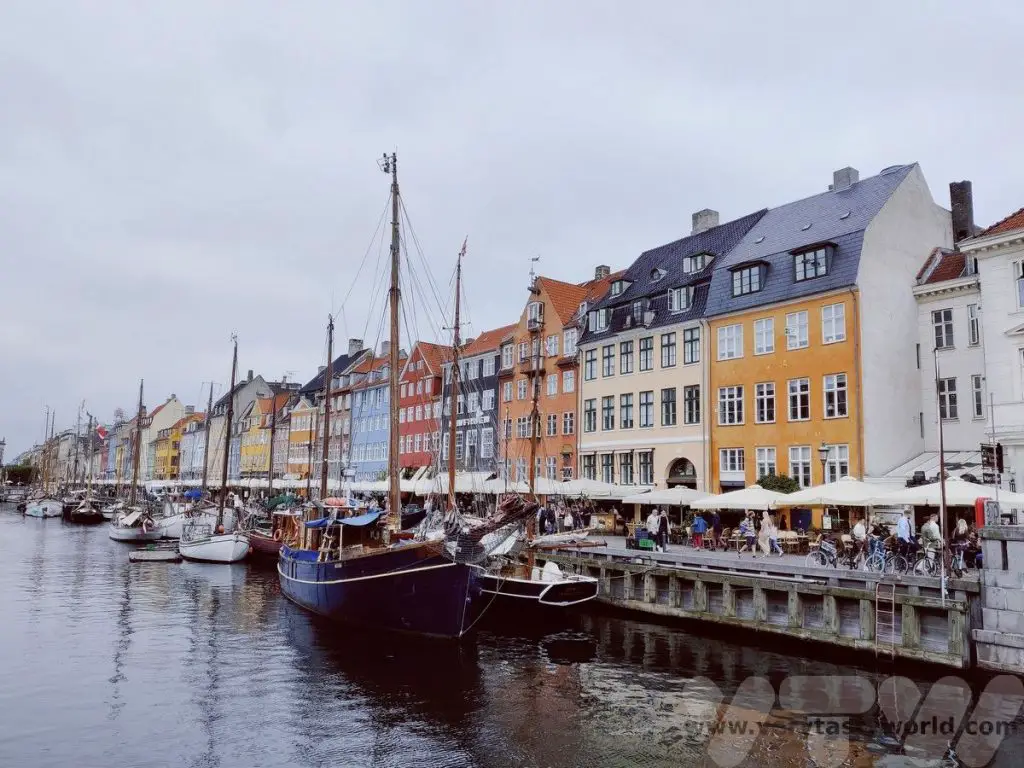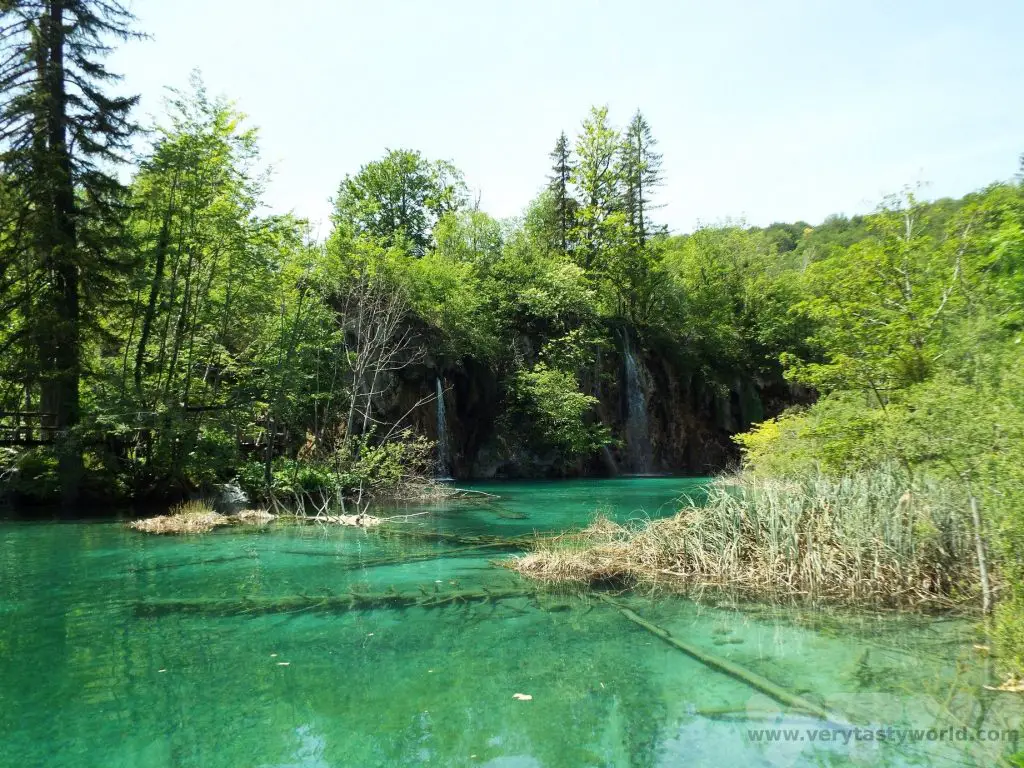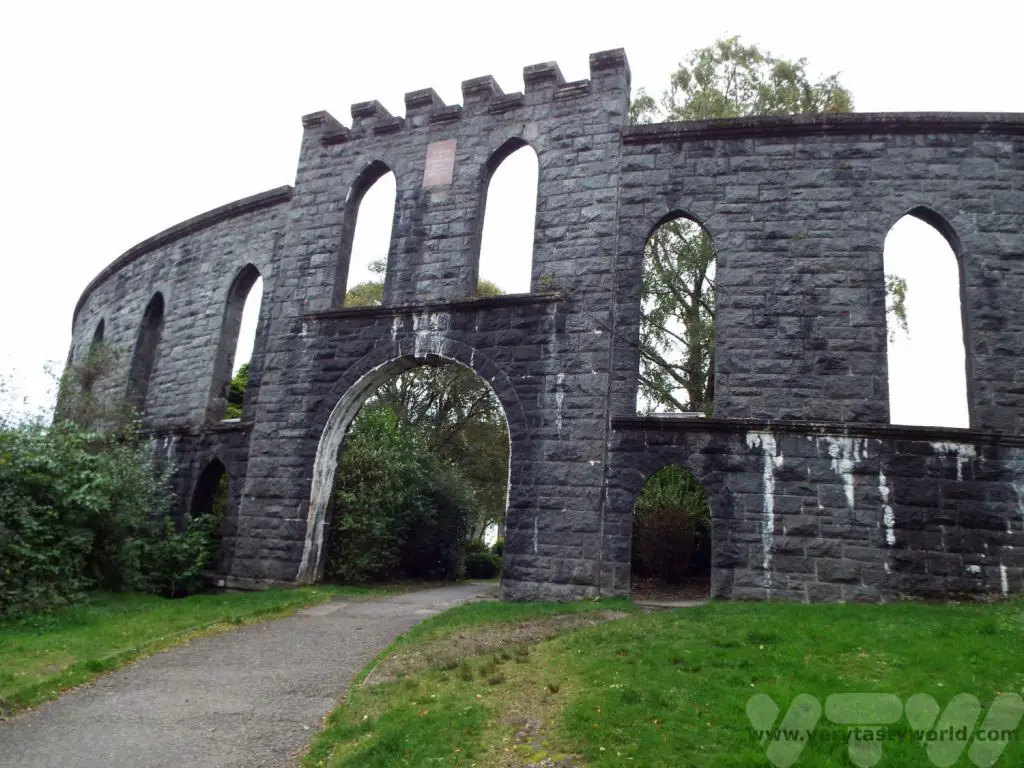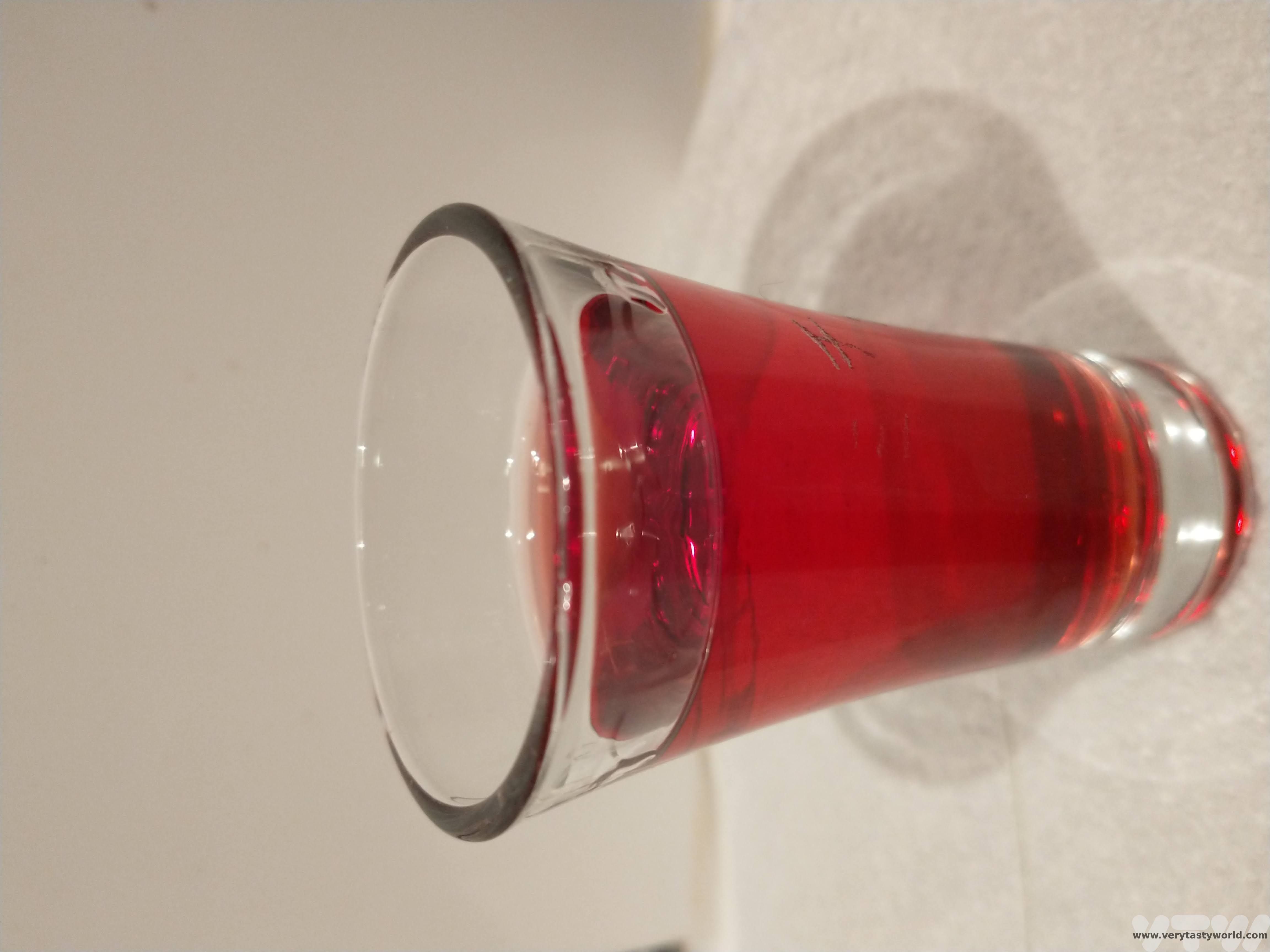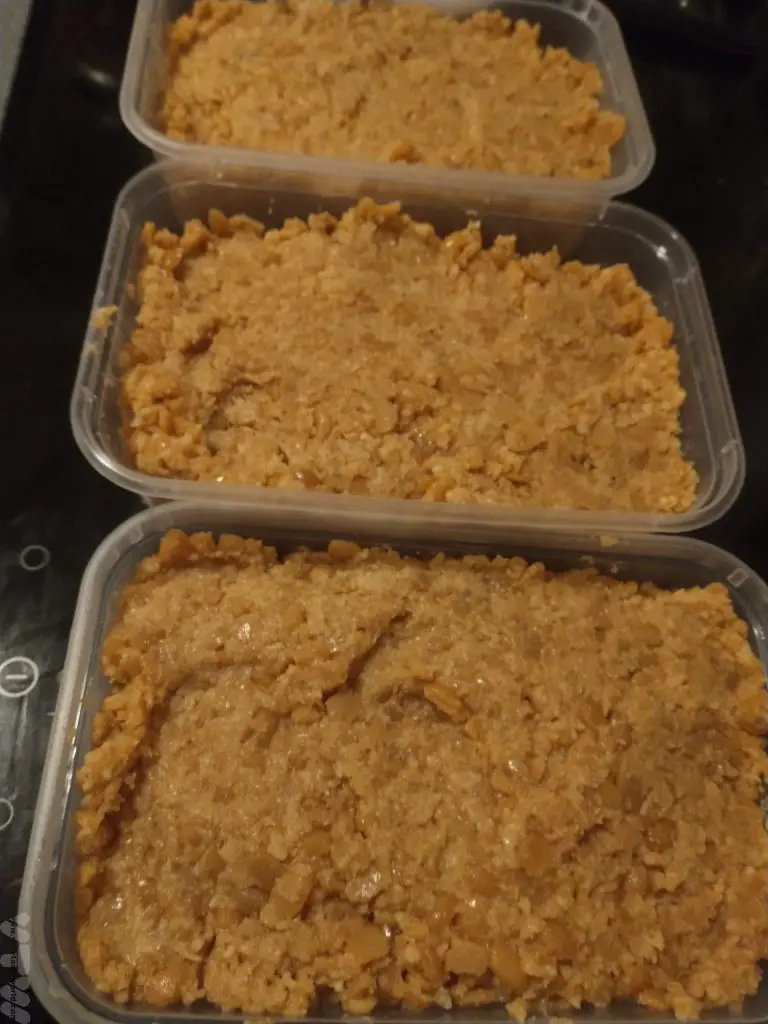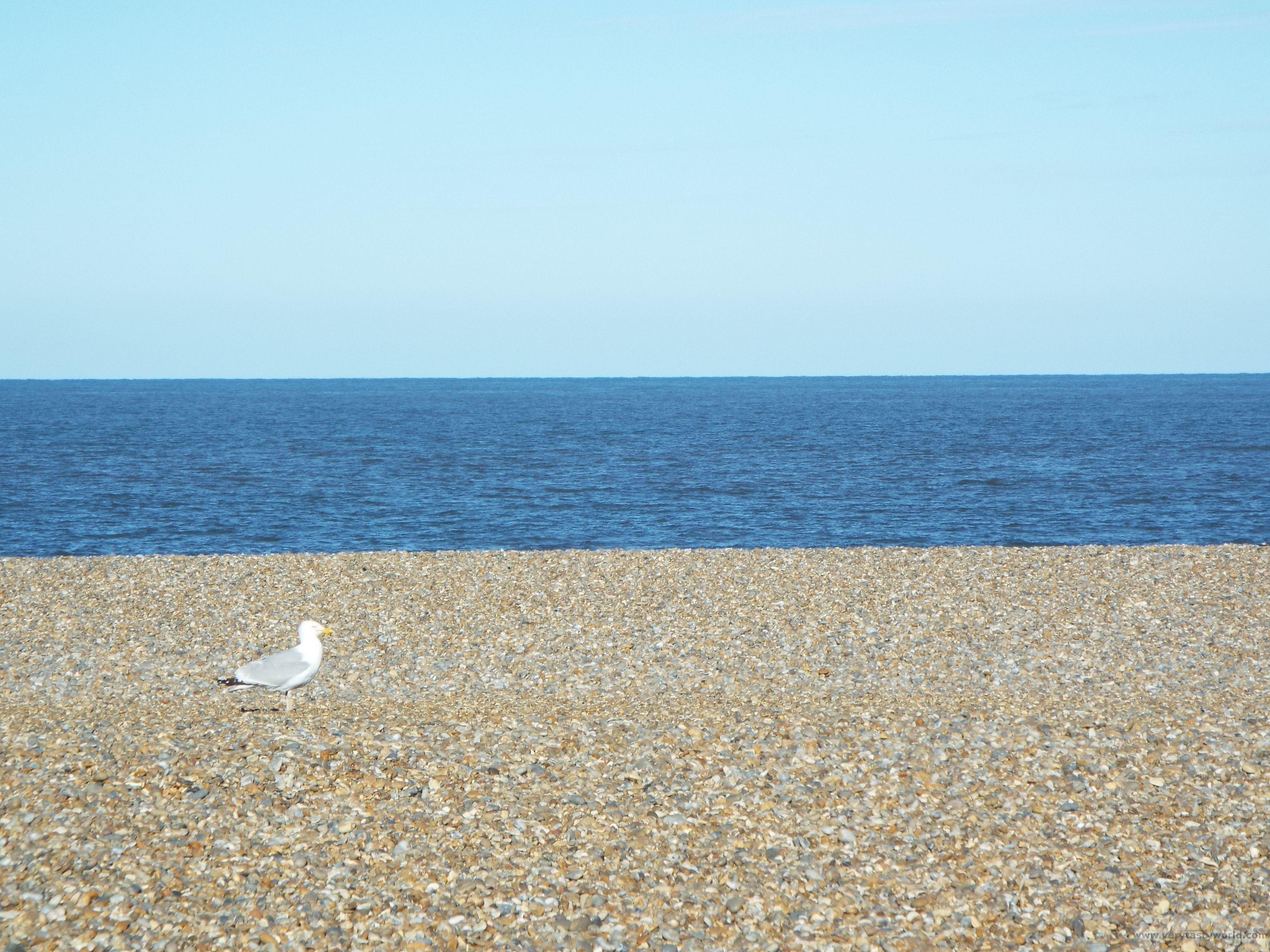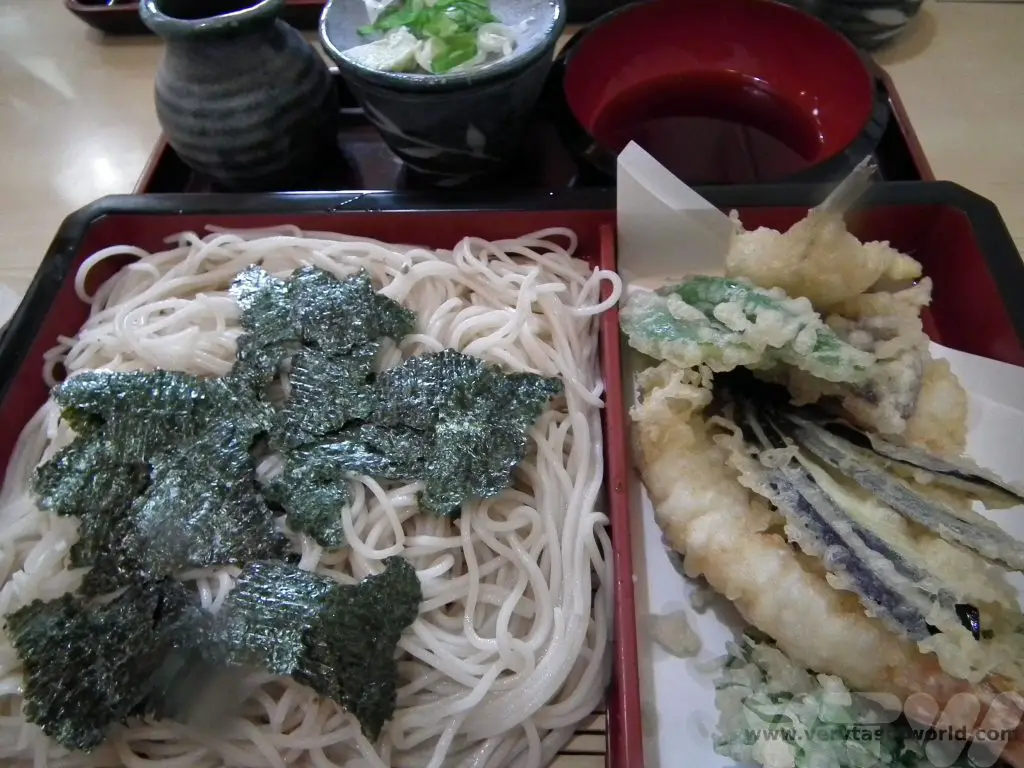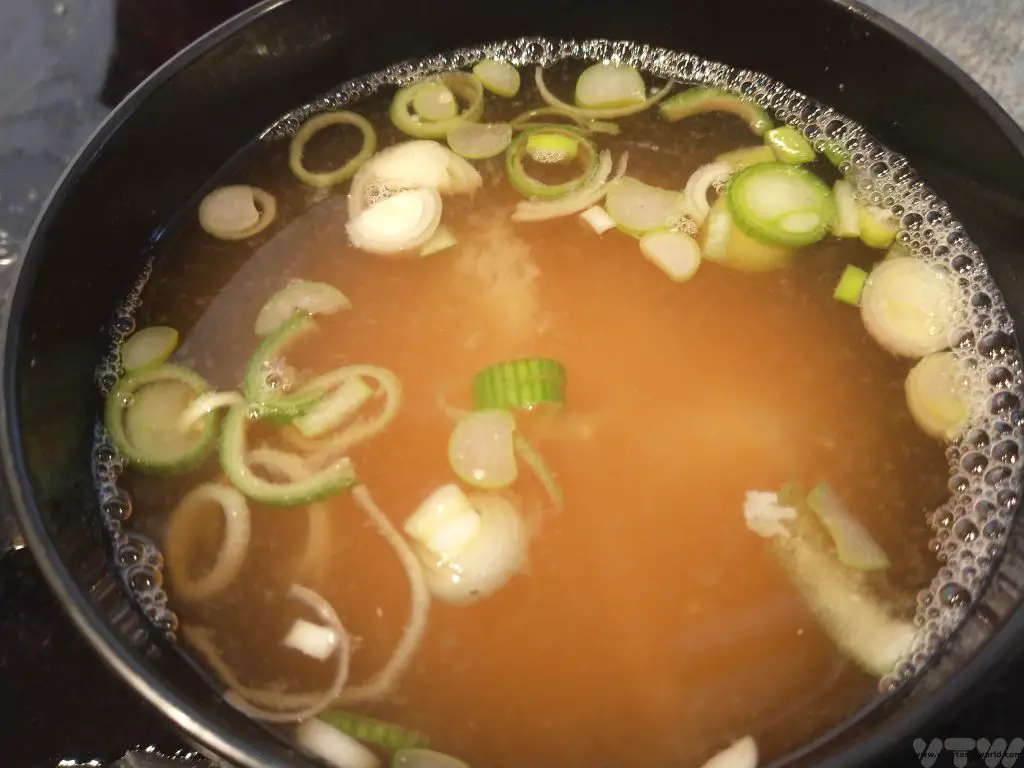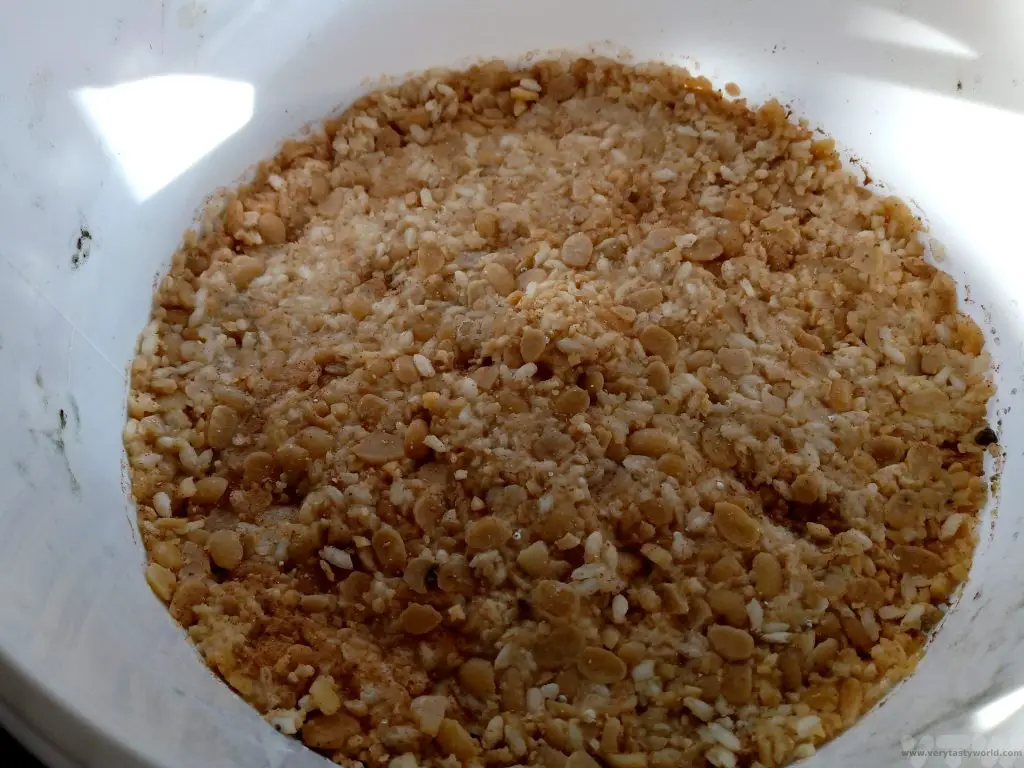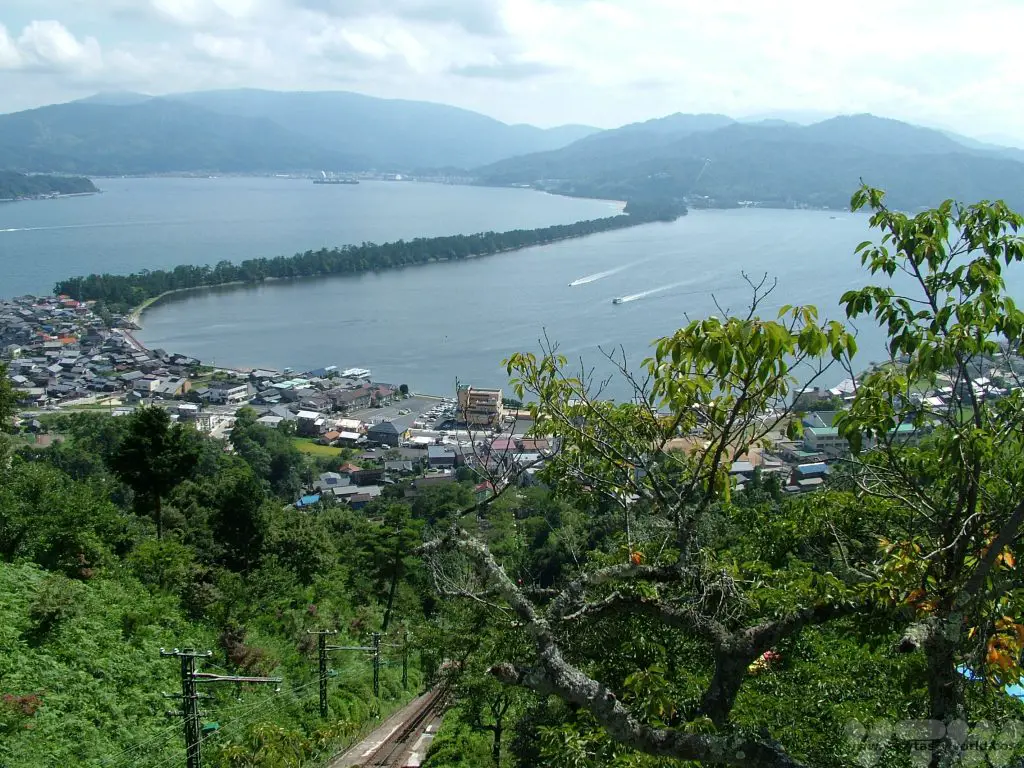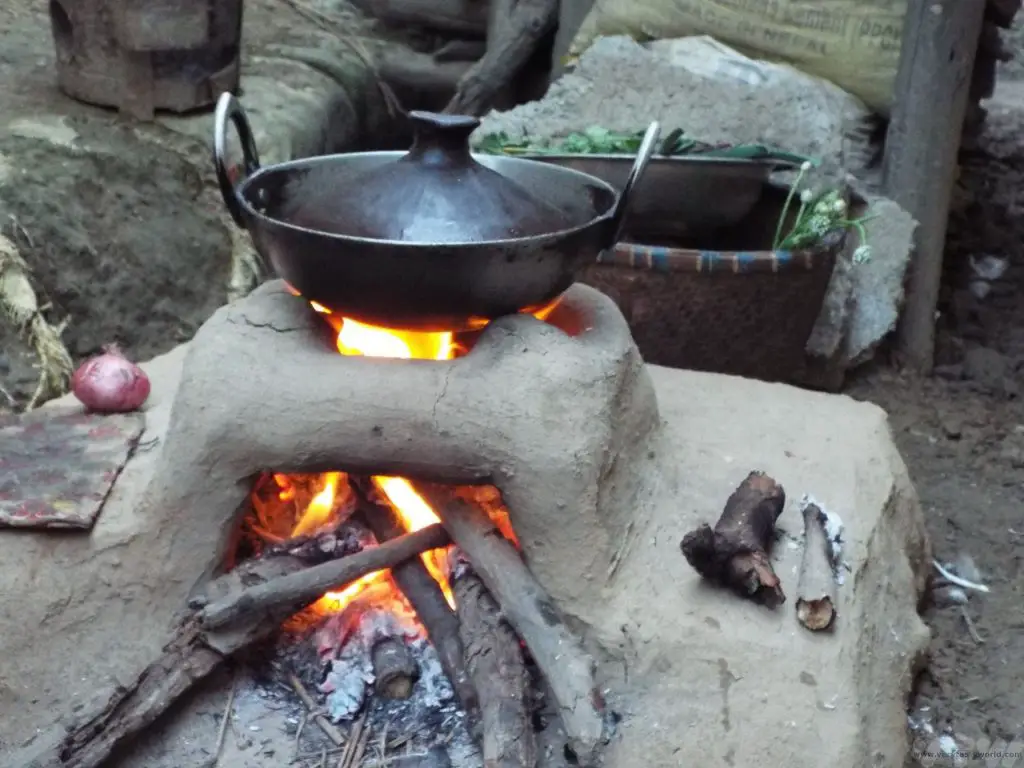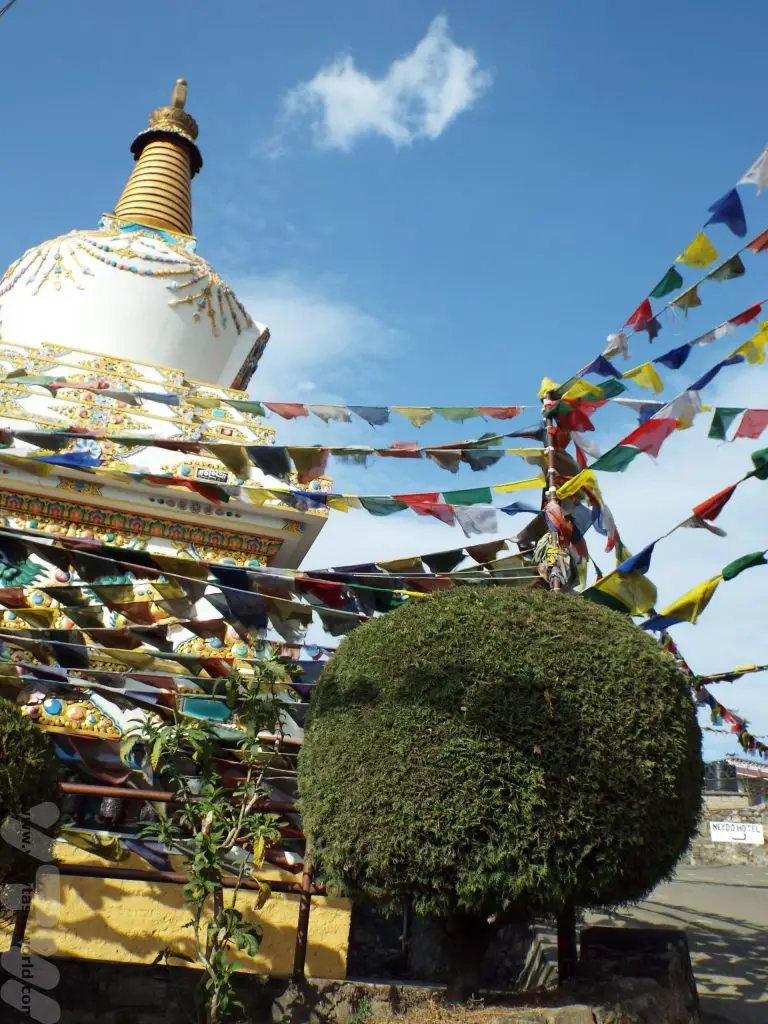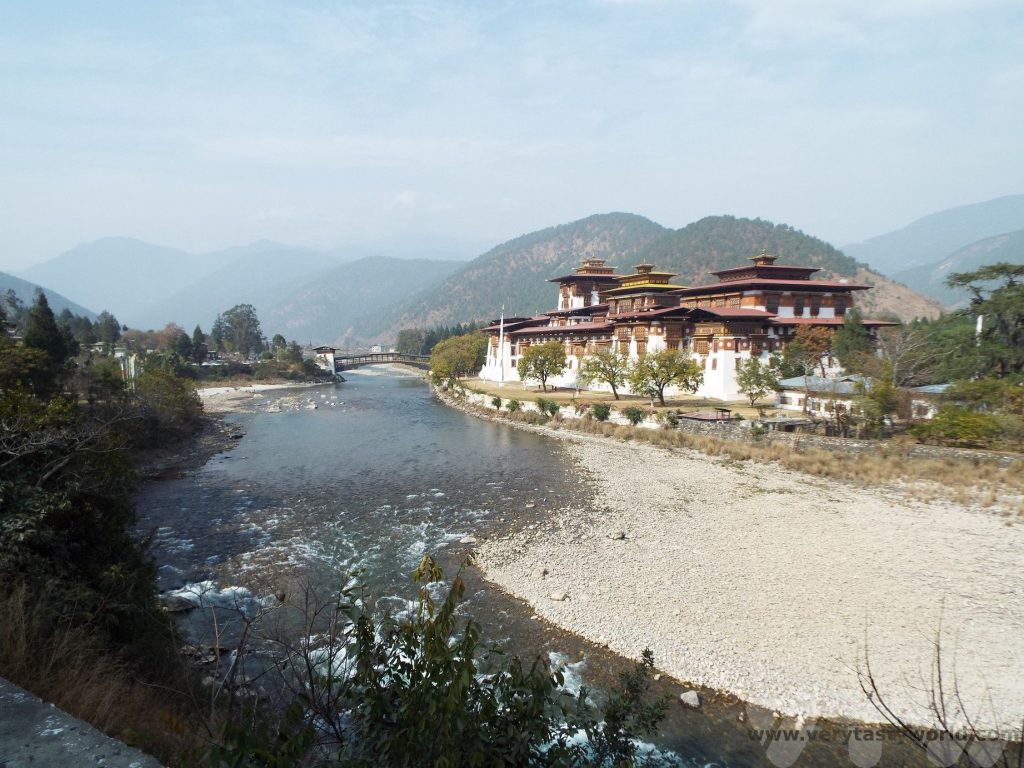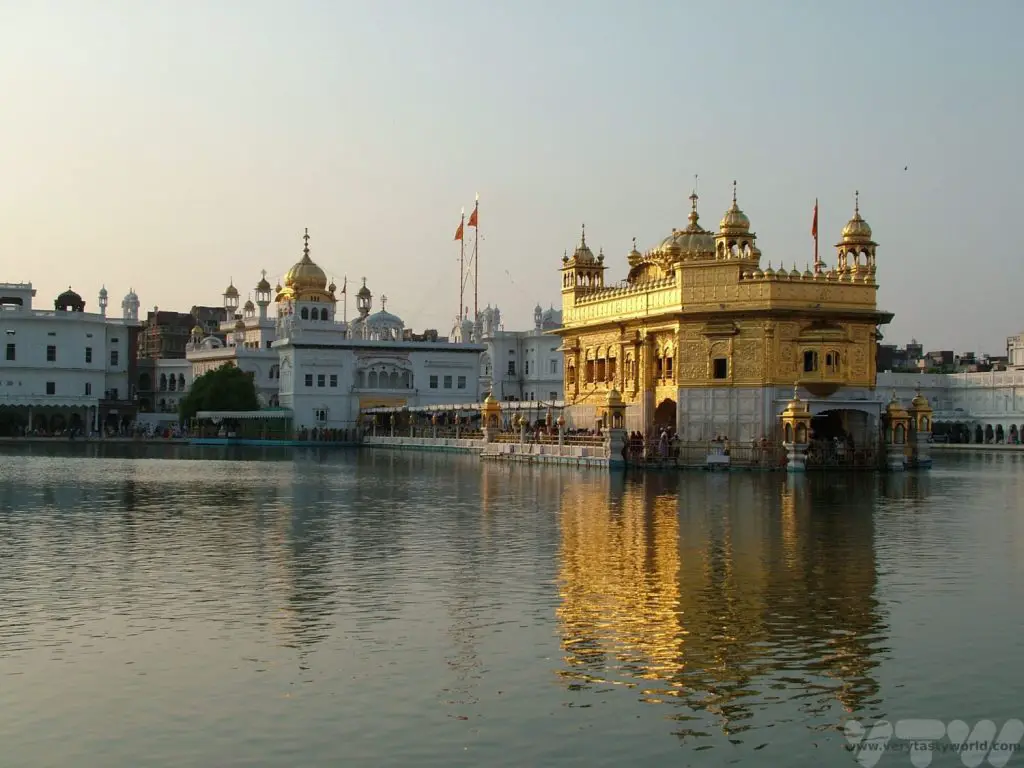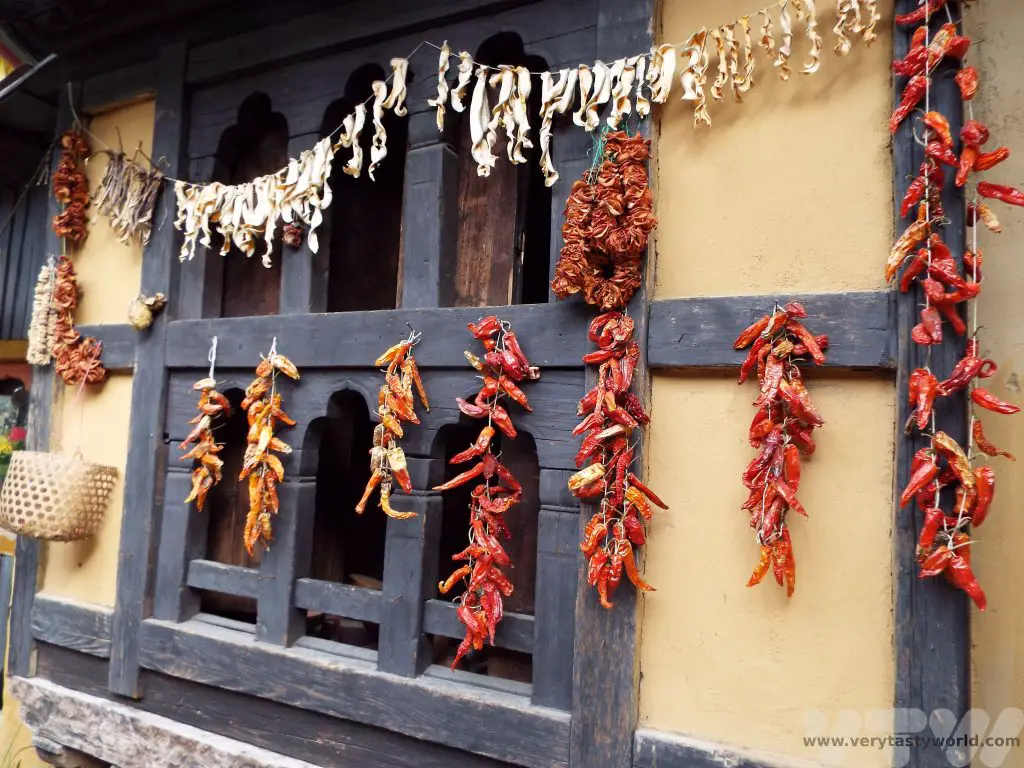Home » Food (Page 4)
Category Archives: Food
1 Day in Mostar, Bosnia and Herzegovina
We have recently returned from a holiday travelling through Croatia and Bosnia Herzegovina, two countries that we have long wanted to visit. We decided to take a fly-drive trip, flying in and then hiring a car so that we could have flexibility touring through these two beautiful countries. We spent 1 day in Mostar exploring this beautiful city with its iconic bridge.
Driving in Bosnia and Croatia
We flew into Dubrovnik in Croatia (as that worked best for our flights from the UK) and then hired a car at the airport. It’s always worth pre-booking the hire car. Driving in both countries is pretty easy – the roads are generally good (they are better in Croatia which has a more established tourism infrastructure) and, even better, usually free of traffic. Due to the mountainous nature of region dual carriageways were rare and the drives were leisurely but the scenery throughout each drive was spectacular. We kept to the speed limit – and be aware that there are speed cameras, particularly close to schools in towns – but were overtaken on quite a few occasions.
An ordinary driving licence was fine for driving in Croatia but we needed to obtain an International Driving Permit (1968 version, available from Post Offices in the UK for £5.50) in order to drive in Bosnia Herzegovina. It was also important to ensure that the car hire company provided the car’s registration and insurance paperwork as we could have been asked to show it to police or customs officials at any time, particularly in Bosnia.
Border crossings were generally easy – we just needed to join the queue for cars and simply hand over our passports at the first check-in booth and then answer any questions as the next one, the customs booth. In Bosnia Herzegovina proof of Covid vaccination was needed (at the time of travelling). We had printed our Covid passes out so they were easily to hand but a mobile phone app would have been just as good. Our itinerary took us in and out of both countries. After an overnight stay in Mali Ston we headed into Bosnia Herzegovina.
Bosnia and Herzegovina’s History
Bosnia Herzegovina has a long and complex history. Its location in the Balkans is often described as the crossroads between south and south-east Europe. Populated by south Slavic people it was annexed into the Ottoman Empire, who brought Islam to the area, in the middle of the 15th century. Hence the population comprises Serb (Orthodox Christians), Croat (Catholic) and Bosniak (Muslim) peoples. This is reflected in the multitude of churches and mosques that can be seen throughout the region.
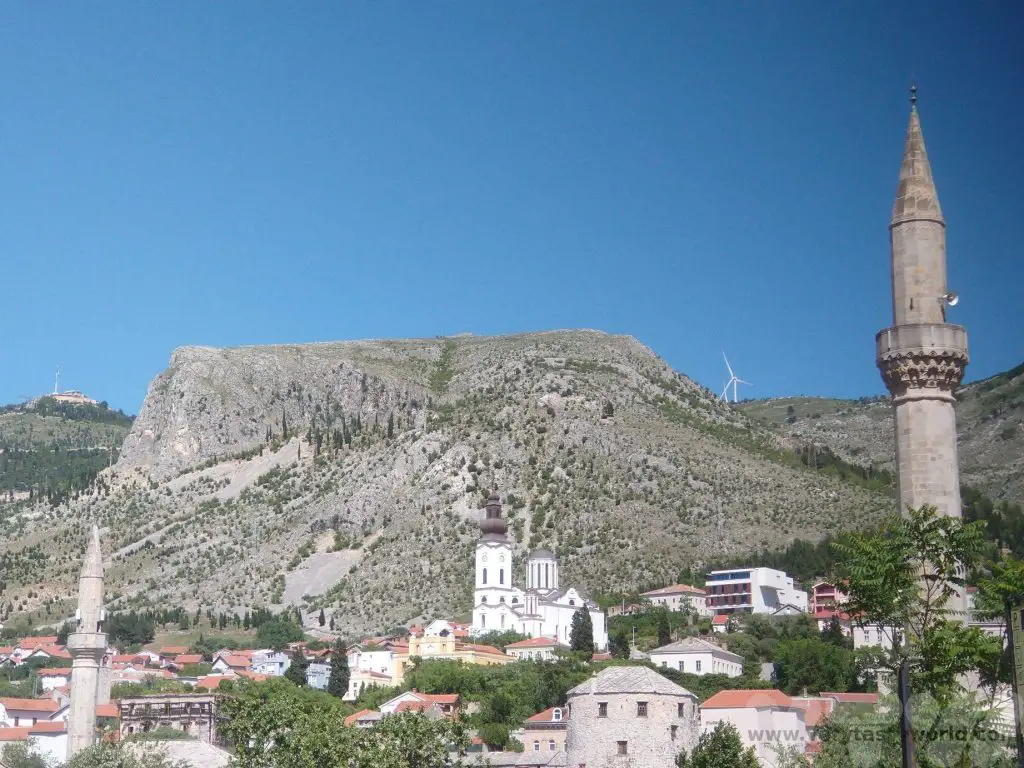
Mostar is the main (in fact, the only) city in Herzegovina. (The northern region of the country is Bosnia, with Sarajevo as its capital, and Herzegovina is the south.) Mostar is located on the Neretva river, surely one of the world’s most beautiful rivers, with its crystal clear turquoise water. The city is most famous for the Stari Most bridge that crosses the river. It was commissioned by Suleiman the Magnificent in 1557 and completed somewhere between 1566 and 1567.
It was the widest constructed arch in the world at the time at 30 metres long and 4 metres wide. The drop to the water is around 20 metres depending on the river level. The Ottomans were clever in that this was the only bridge spanning the river for several centuries – the word Mostar derives from ‘mostari’ – bridge keepers – so that the authorities could impose tolls on the traders who needed to cross as they moved their goods through the region. The bridge is flanked by two impressive towers.
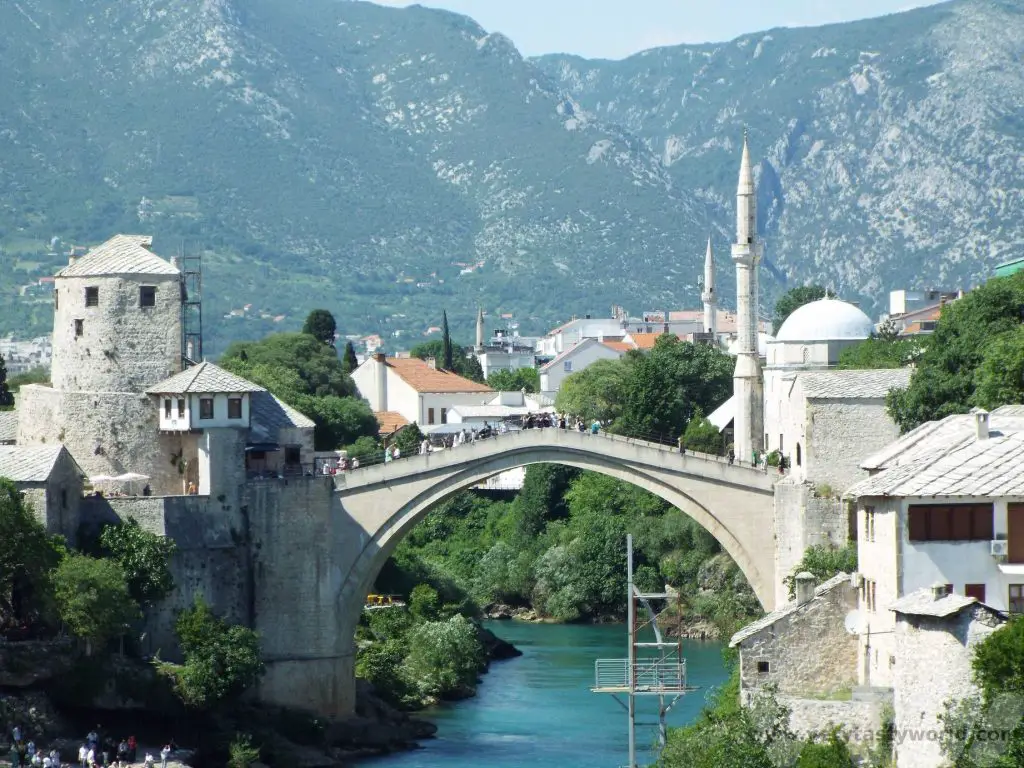
Following the decline of the Ottoman Empire and then the annexation of Bosnia Herzegovina by the Austro-Hungarian Empire in 1909, the Kingdom of Yugoslavia was established in 1929 after World War 1. This became the Socialist Federal Republic of Yugoslavia, under the rule of Josip Broz Tito, following World War 2. The region remained stable until the breakup of Yugoslavia in the early 1990s. Following Slovenia and Croatia’s respective secessions from Yugoslavia, Bosnia Herzegovina held an independence referendum in February 1992. The outcome was in favour but, while most Bosnian Croats and Muslim Bosniaks had voted, the referendum had been boycotted most of the Bosnian Serbs, a significant proportion of the population. A series of events following this led to war breaking out between the different groups. It lasted until December 1995.
It is incredibly difficult to summarise – let alone truly understand – the complexities of the war but what is undeniable is how horrific it was. This was a war that happened during our lifetime – we remember from seeing news reports on the television at the time. We spoke to a number of local people – from all ethnicities – during our time in Bosnia Herzegovina and they told us about their experiences living through the war, notably the Siege of Sarajevo. Following the peace declaration, the government structure in Bosnia Herzegovina has become incredibly complex with representatives from each ethnic group holding positions of power. For example, the country has three presidents: a Bosniak, a Serb, and a Croat.
One of the consequences of the war for Mostar was the destruction of the Stari Most bridge in December 1993. It was not only considered to be a strategic bridge (the other bridges crossing the river in Mostar were also destroyed) but also a cultural icon. The bridge was rebuilt after the war using funding from a variety of sources and many different countries contributed to the fund. The aim was to reconstruct the bridge in identical style and using similar materials (some salvaged from the original bridge where possible). It was reopened in 2004.
1 Day in Mostar – A Walking Tour
When visiting a new city, particularly when we are touring and short on time, we enjoy taking a walking tour. There are usually lots of options available but we especially like the ‘free tours’ which are run by local guides (who will expect a tip at the end of the tour and absolutely deserve one) who can show you the main places to visit in Mostar, explain the history of the area and give some personal insight into the country. They are also the perfect people to recommend local food and restaurants.
We started at the Spanish Gymnasium, which is the first public school in Mostar (the word derives from the European term for high school rather than being an exercise centre). It’s about a 20 minute walk from the centre of the city and is a good meeting point as its orange colour is very easy to spot. It is a working school so entering the building isn’t possible.
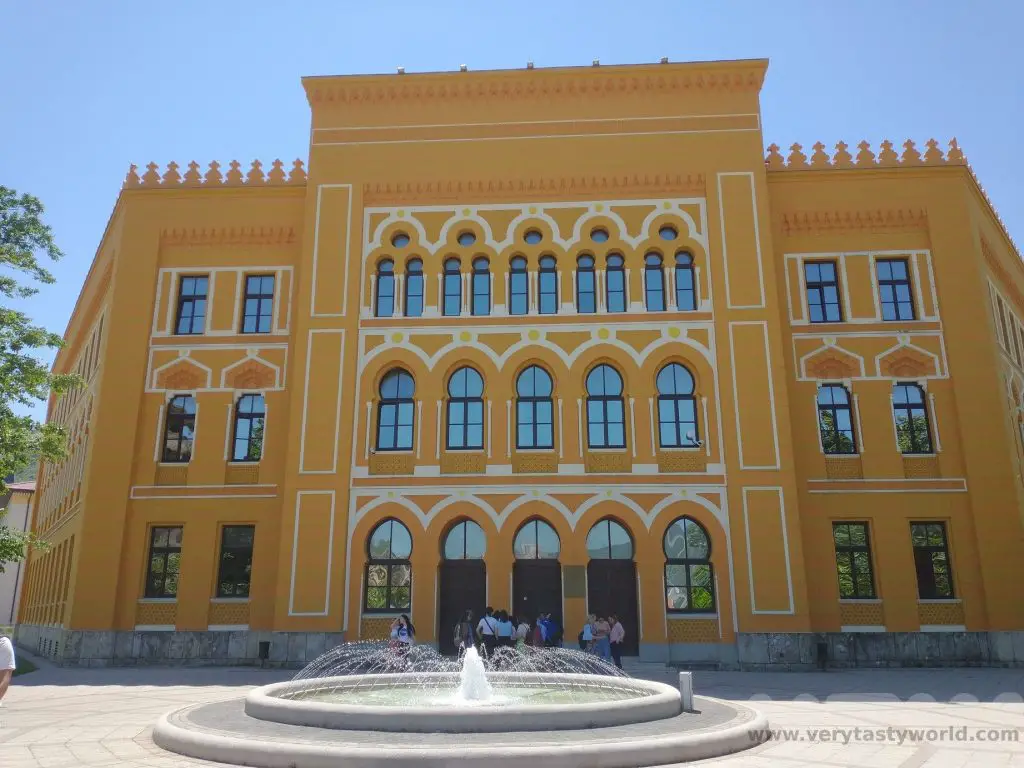
The gymnasium is located next to the Zrinjevac City Park, which is a pretty park that has a rather unusual statue. We really weren’t expecting to see a life-sized (well, apparently it’s 4cm short of life-sized) statue of Bruce Lee. Apparently he was chosen as a symbol of diversity and couldn’t be perceived to have an affiliation with any of the local ethnicities, but rather represented “loyalty, skill, friendship and justice.”
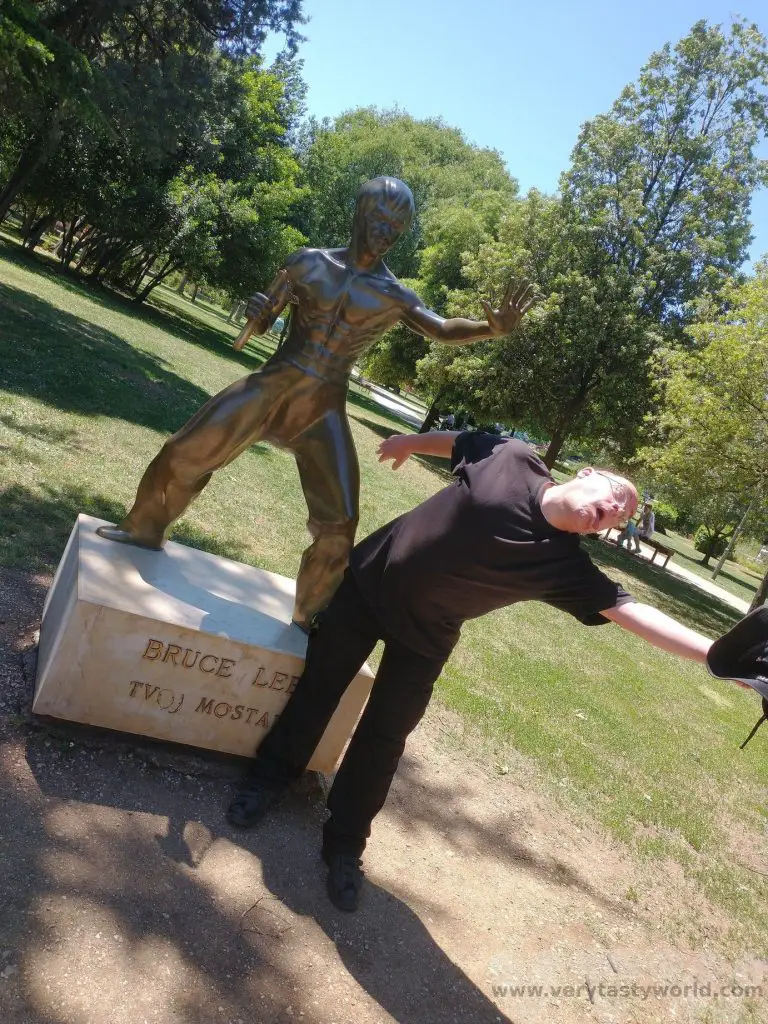
When walking around Mostar the scars of the war remain. We walked through the former financial district – many of the buildings are still shells. Our guide explained that while reconstruction work had taken place following the war, the capital Sarajevo had received more money to rebuild. There was still a lot of work that needed to be undertaken throughout Bosnia and Herzegovina.
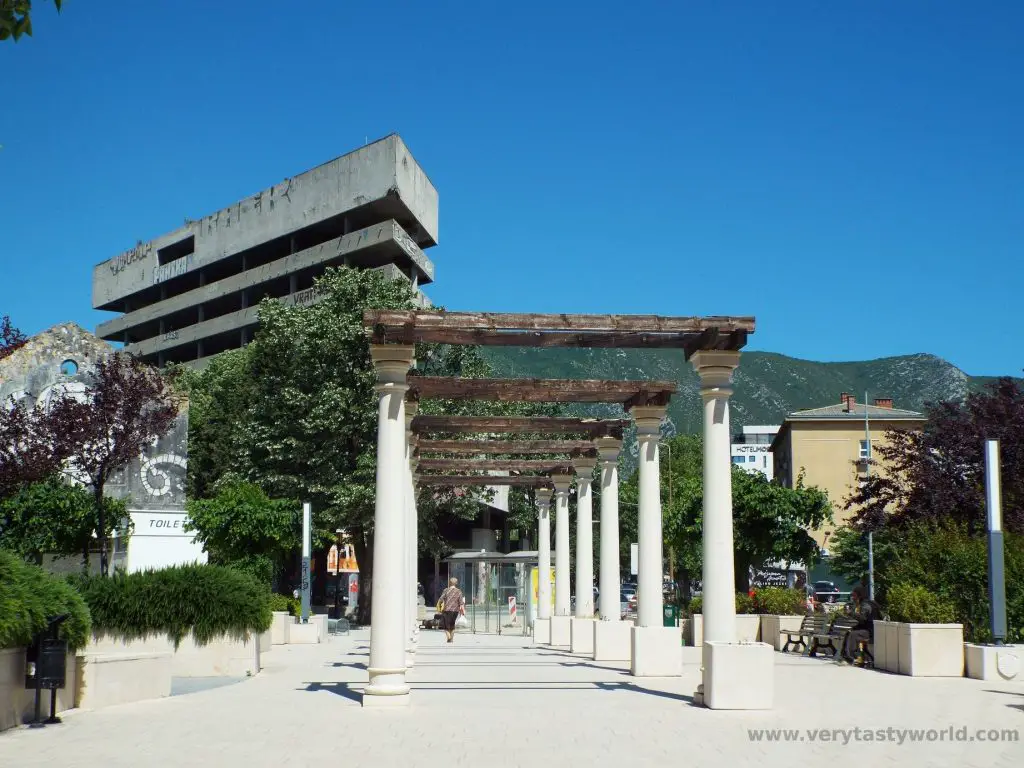
Walking across the Most Musula bridge we could see good views to the hills above. Although walking up to the summit would ensure a magnificent panorama of the city, the area sadly still contains land-mines.
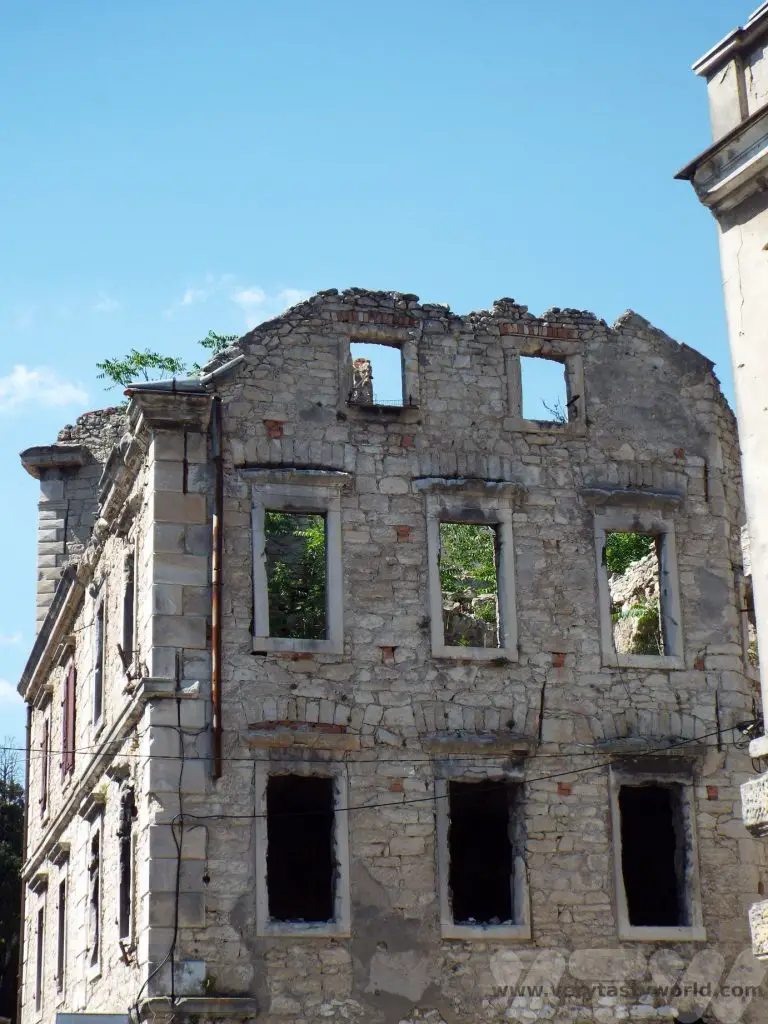
We then headed towards the older part of the city. The Karadoz Bey Mosque is one of the largest mosques in the region and dates from the same year as the Stari Most bridge.
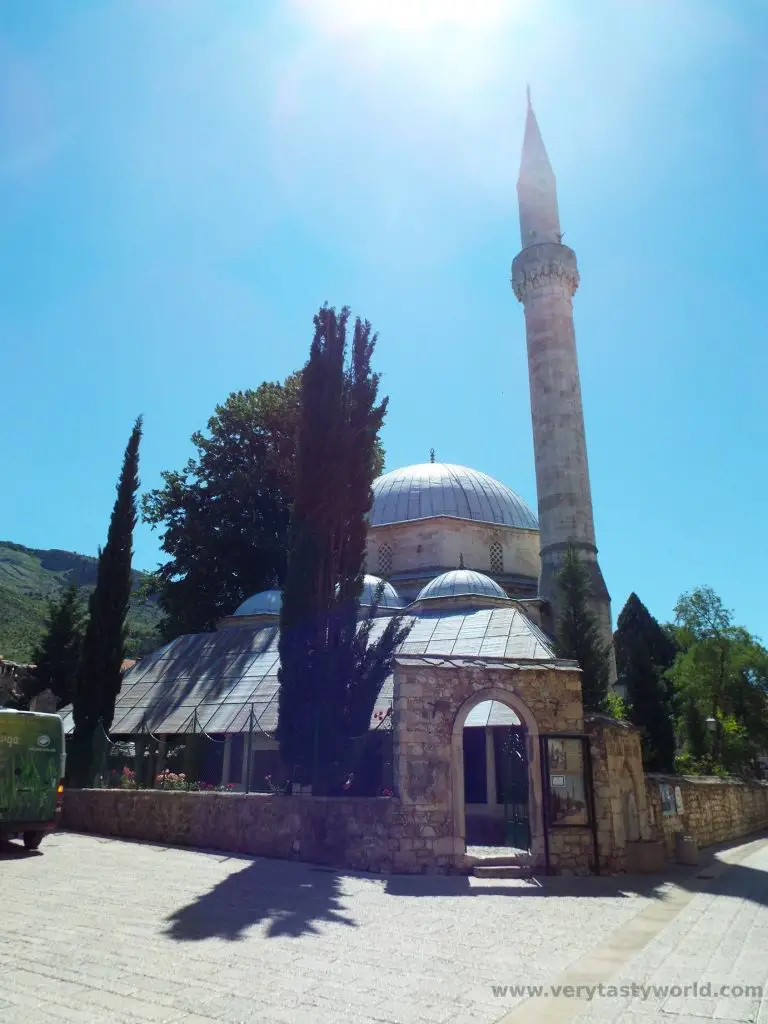
It is possible to visit the Koski Mehmed Pasha Mosque. It is located on a side street just away from the main street.
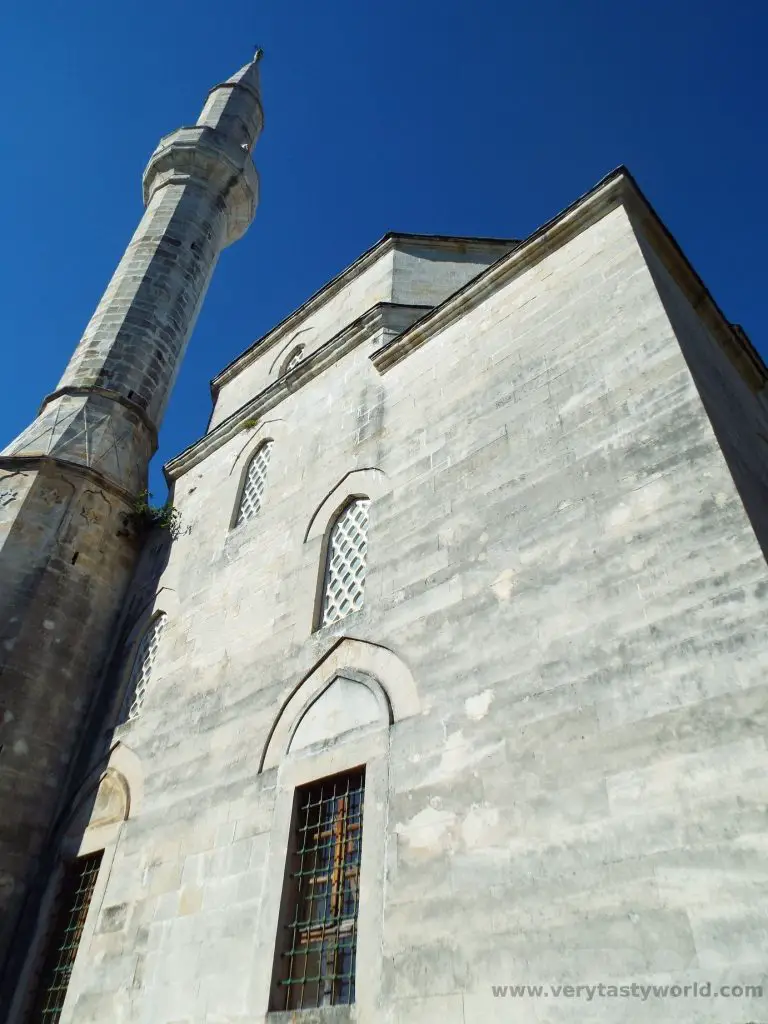
Outside is a fountain traditionally used for washing before entering the mosque to pray.

For visitors it costs 4 Euros to enter the mosque and a further 4 Euros to climb the minaret. Photos were allowed and, although we asked if they would like us to remove our shoes and cover our heads, we were told that it wasn’t necessary.
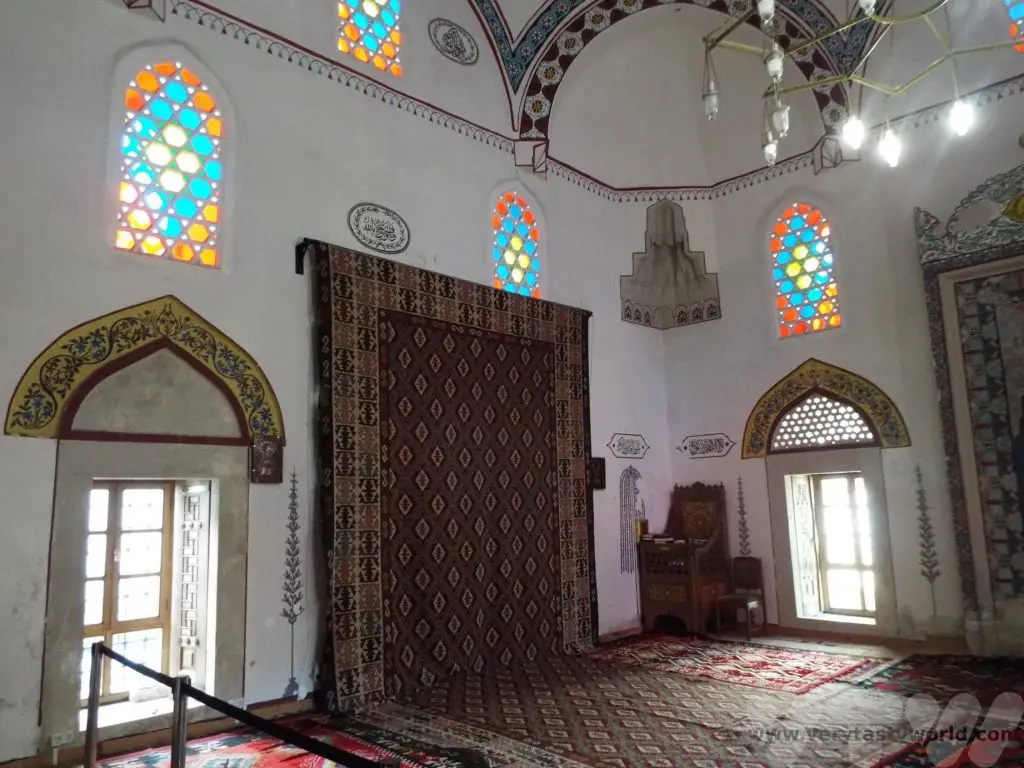
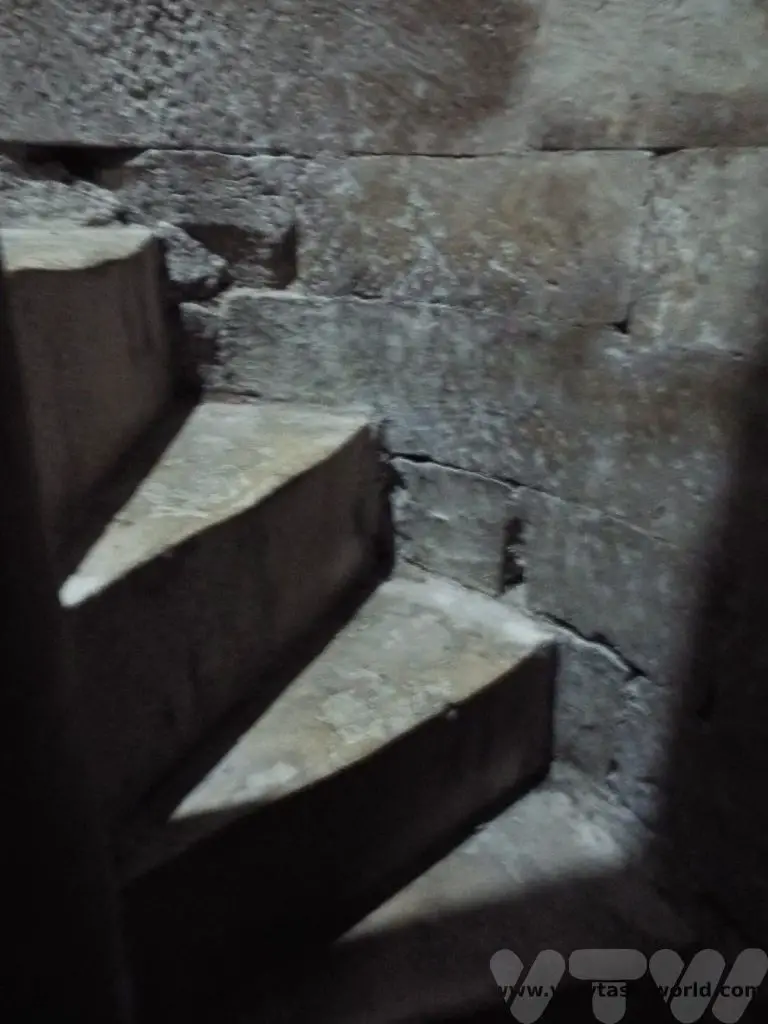
The interior of the mosque itself is quite compact and the climb to the top of the minaret was fairly claustrophobic.
However the view across the river to the bridge was spectacular. The balcony of the minaret was pretty narrow so we were lucky that there was only one other visitor there. You can also enter the small garden adjacent to the mosque for more river views.
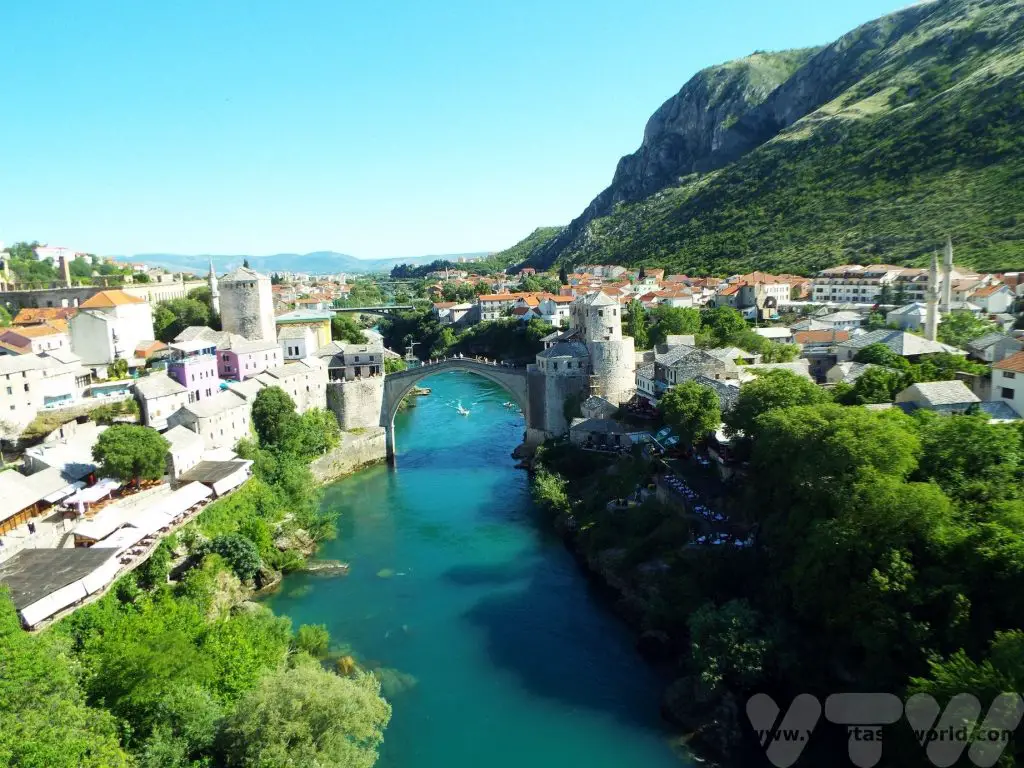
Wandering through the old town, there are lots of shops and restaurants. It is very touristy and can get crowded during the day. There are also a couple of museums in this area, The Museum of War and Genocide Victims 1992-1995 and also the Bridge Museum, which we were keen to visit, but sadly it was closed. There were reminders of the war as we walked through the streets.
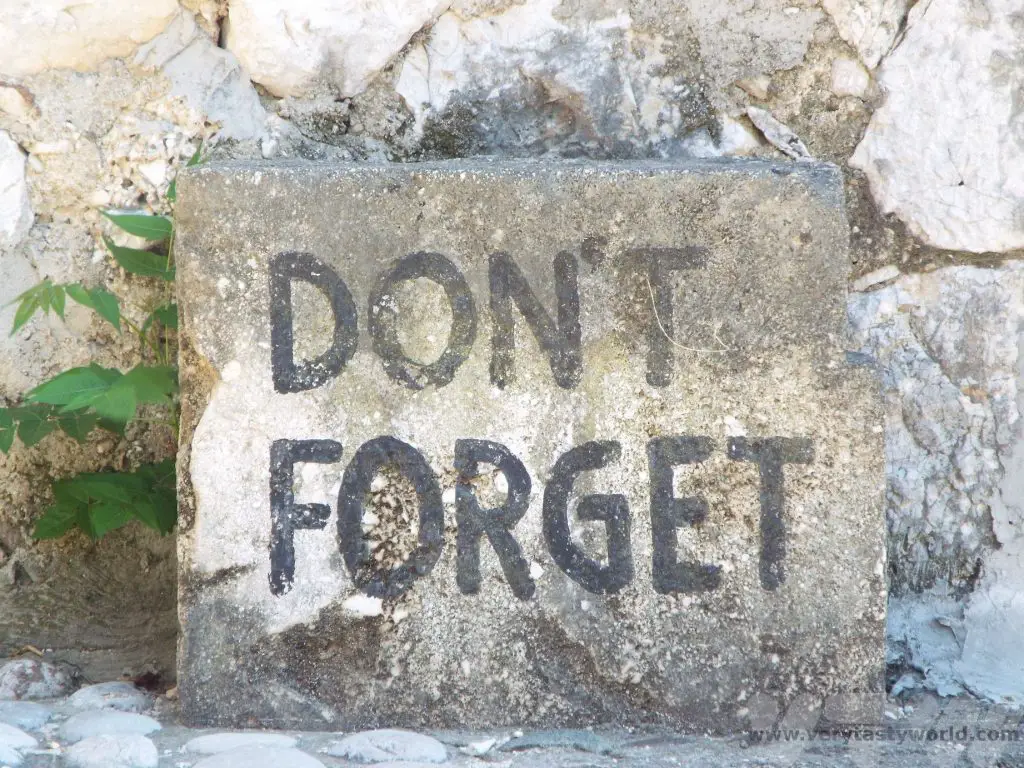

Approaching Stari Most again we crossed the river over the old bridge. The steps can be quite slippery.
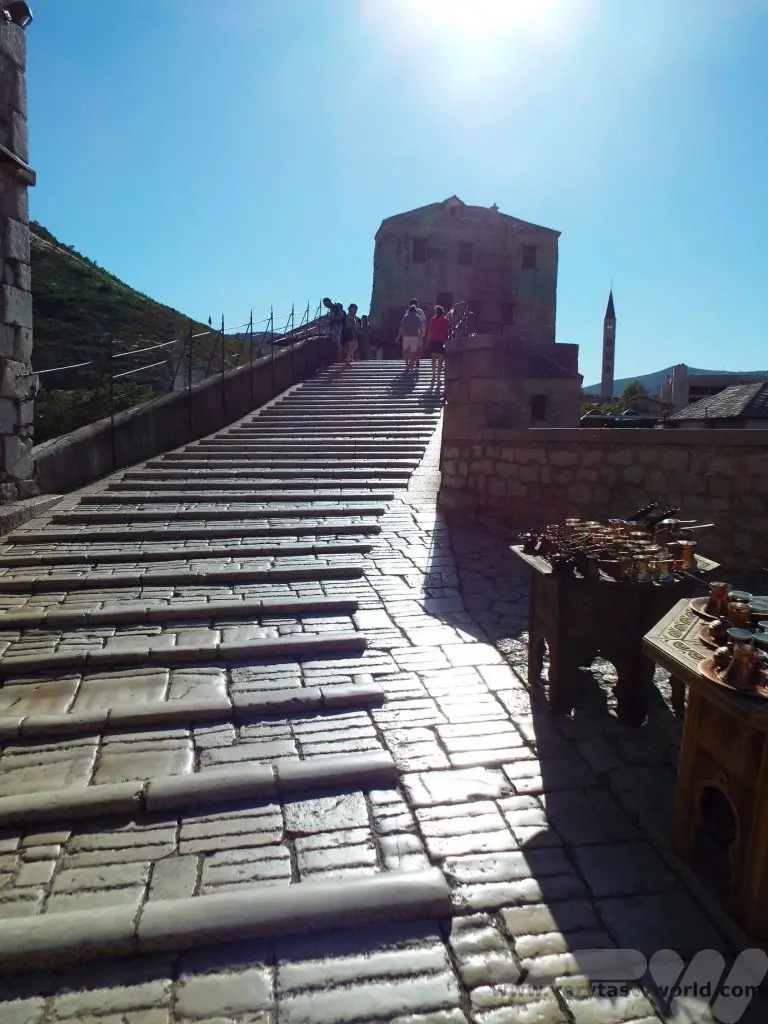
One thing that is very popular is watching locals who dive from the bridge into the crystal clear water below. You’ll see them hanging around at the top of the bridge, sitting on the top railing, and they will usually dive once they have raised enough money – normally in the region of 50 Euros – from tourists. You will be able to tell when they are ready to dive when either one of them dons a wetsuit or they start splashing themselves with cold water because the temperature of the river is extremely cold, especially in spring and early summer. We were some distance from the bridge, upriver, when we saw a diver preparing to go. Despite the camera being focussed and on full zoom, we only managed to capture the splash! There are diving competitions held in Mostar each year.
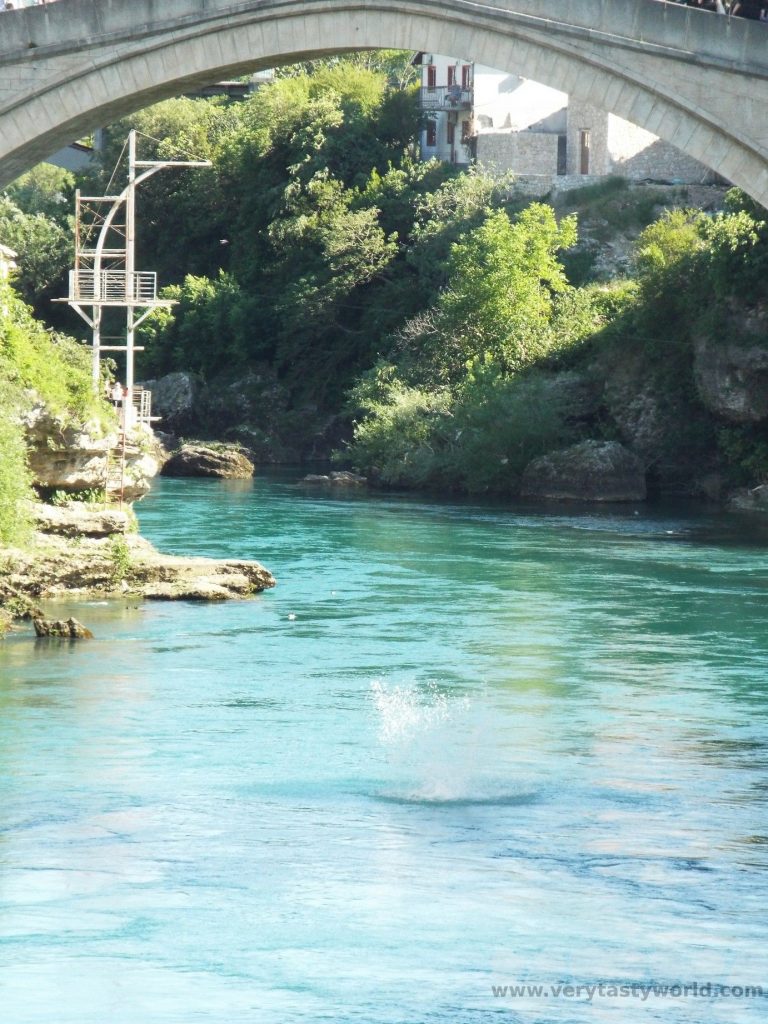
It’s worth noting that the bridge is a focal point for tourists and, because the city is only a couple of hours’ drive away from Croatia, it gets very busy during the late morning and afternoon as day trippers arrive in their coachloads. The surrounding streets and bazaars will be teeming with people. So staying overnight to explore the area and view the bridge when it’s less busy is definitely recommended.
Our walking tour concluded by another stone bridge – the Crooked Bridge – just a five minute walk away from Stari Most. It dates from 1558. It was strategically important because it allowed traffic to be controlled from the towers of the old bridge. This, too, is a reconstruction – sadly the original was destroyed during floods in 1999, but it was rebuilt in 2002.
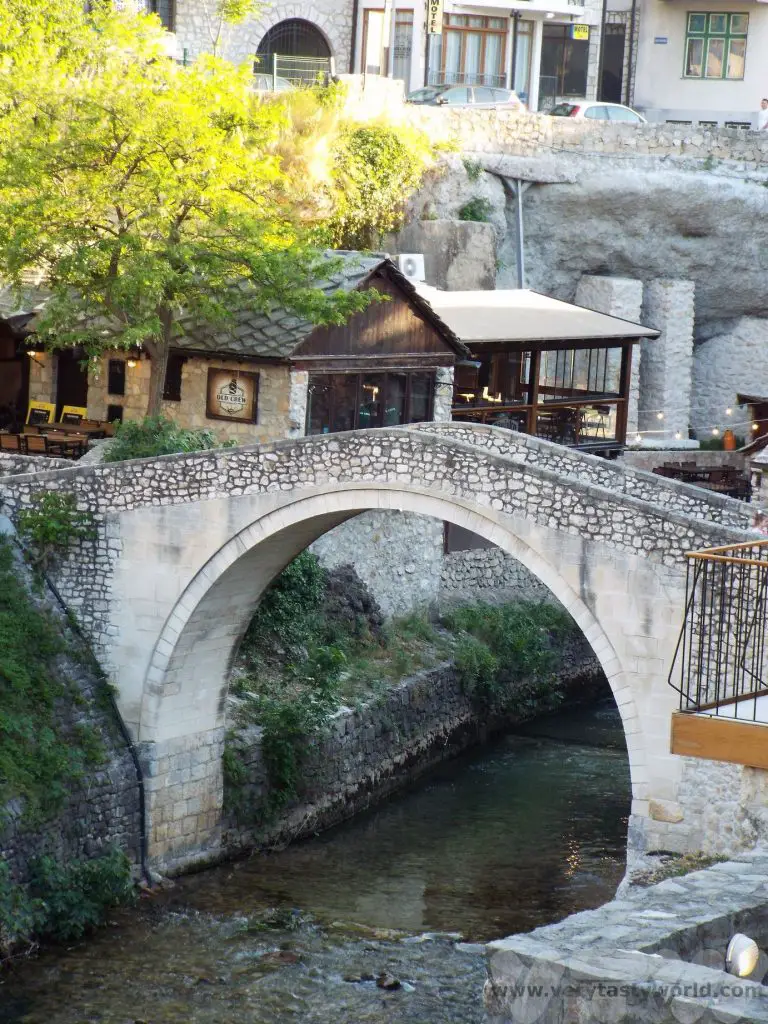
Dining Out in Mostar
There are loads of eateries offering tasty food in Mostar. The restaurants closest to the bridge, or those with a good view of it, are likely to be more expensive than those in the surrounding streets. Mostar was our first introduction to Bosnian cuisine. The national dish is considered to be cevapi – little meaty sausages/kebabs served inside a bread called somun which is a flatbread like pitta but has a really nice focaccia-like spongey texture. It’s served with chopped raw onions, which are quite sweet in flavour rather than being too pungent. You usually get a choice of a small portion (5 little sausages) or larger portion (10 little sausages). Many of the dishes we tried in both Bosnia Herzegovina and Croatia were accompanied by ajvar, a condiment made from red peppers (it isn’t spicy).
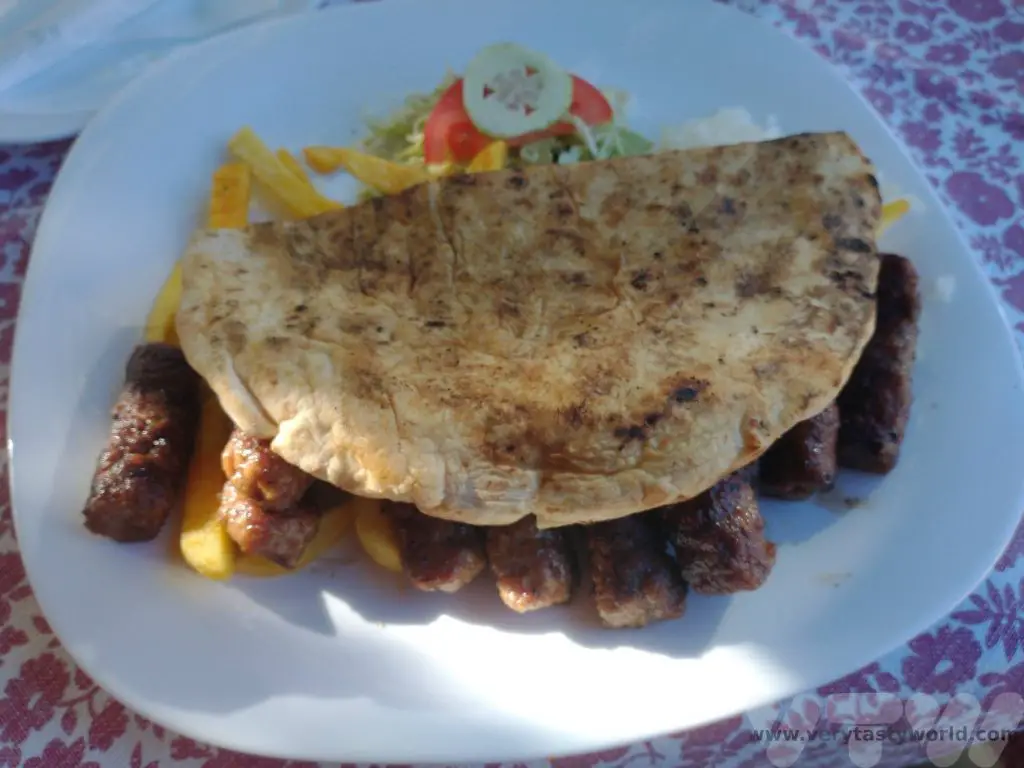
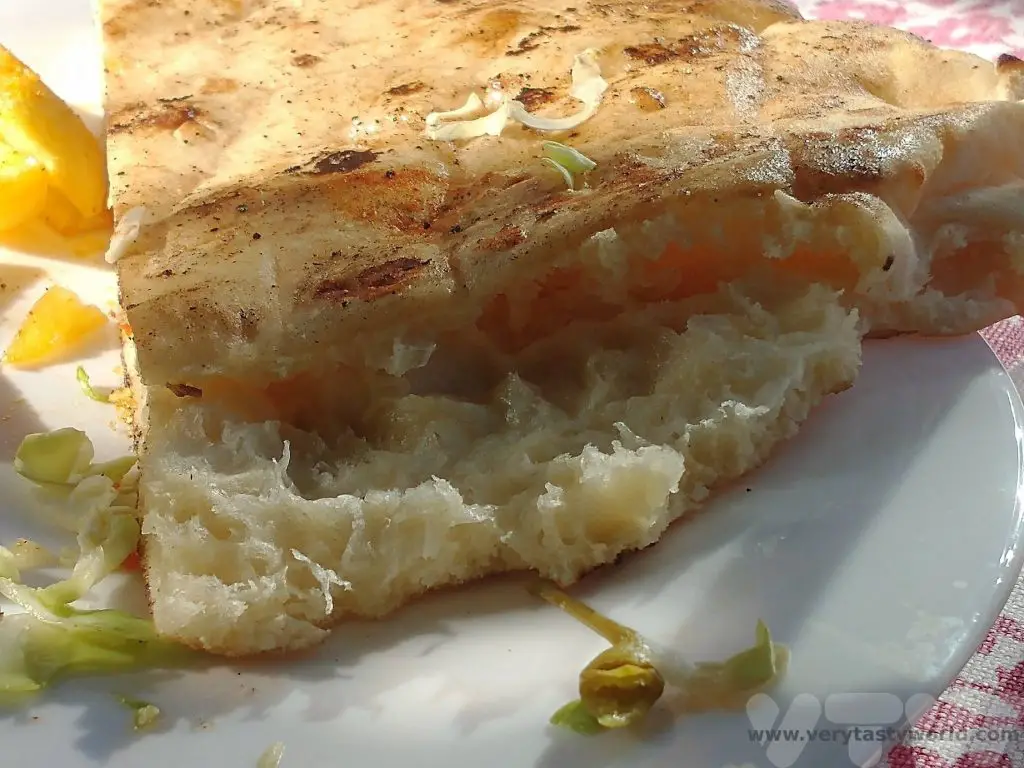
There are plenty of sweet dishes on offer as well. Baklava is a familiar dessert, a sweet, filo-based pastry, filled with layers of nuts and a sweet syrup, popular across the region and the Middle East. We particularly enjoyed hurmasica, a pastry doused in lemon-flavoured sugar syrup. It comes in an oblong shape and is very sweet but really delicious with a nice gooey cake-like texture.
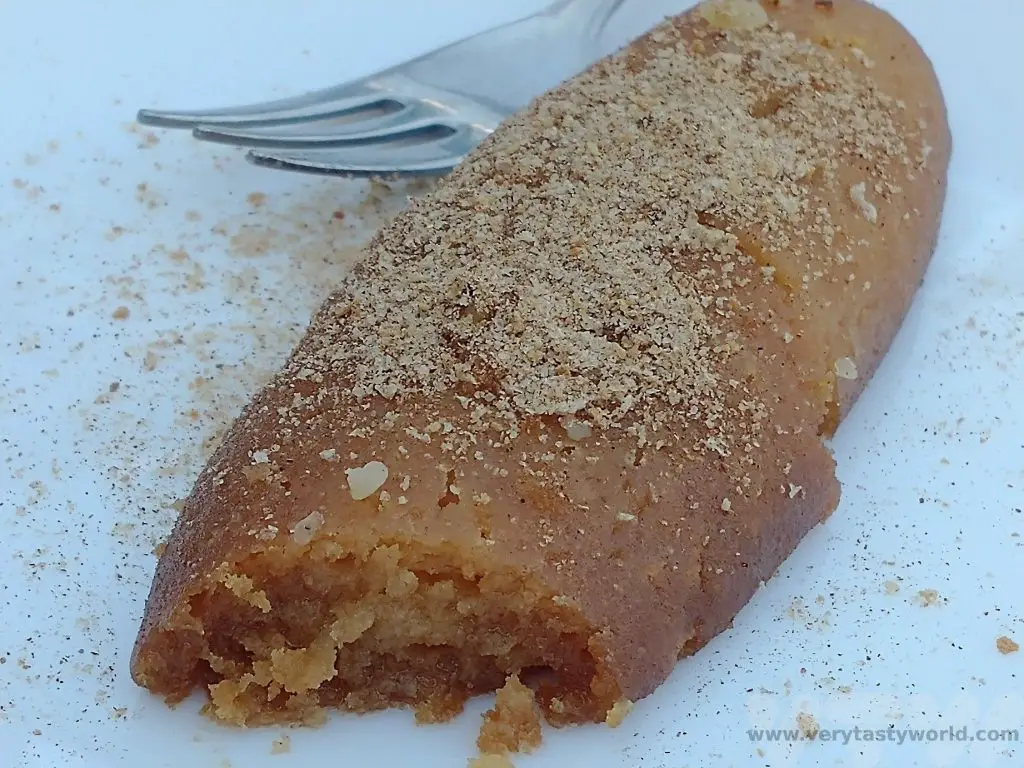
And a meal wouldn’t be complete without a cup of incredibly strong, rich, sweet coffee. Coffee culture is very important in this part of the world.
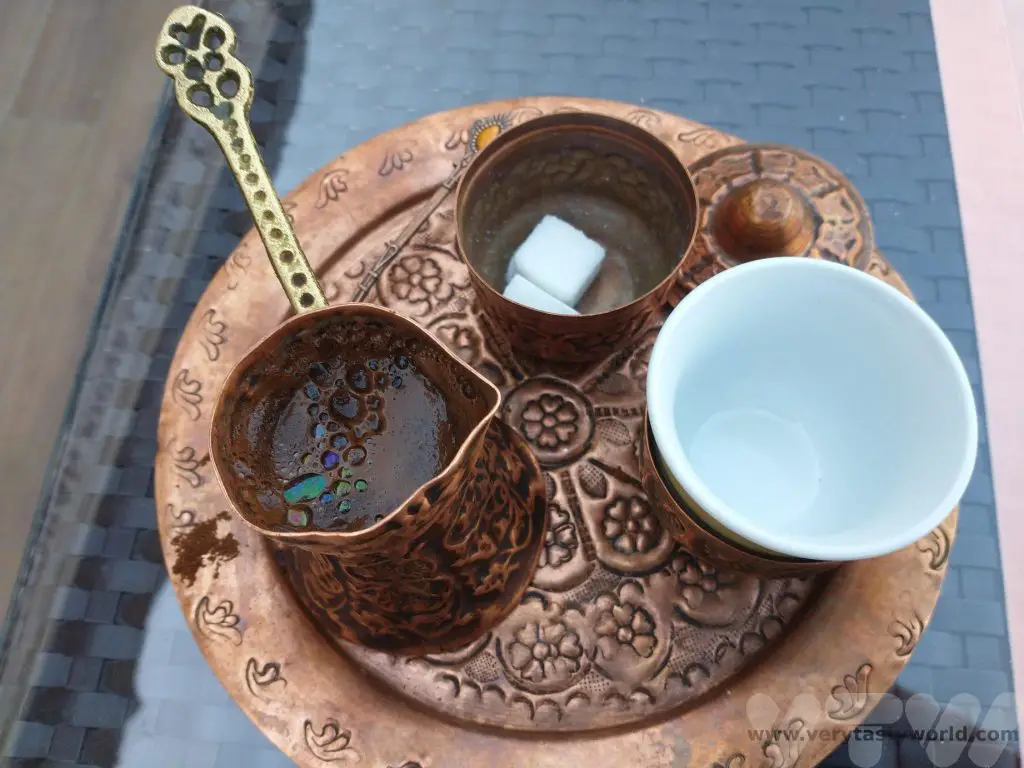
There was also a very good craft beer emporium in Mostar,on Gojka Vukovica, close to the Crooked Bridge. It had a wide variety of local beers on offer, brewed in both Mostar and Sarajevo. We particularly enjoyed Marakuja, an American Pale Ale, Onano Maze, a rich porter, Darkness, a dry Irish Stout and Kukambera, a cucumber-infused lager which was really refreshing on a hot spring day.
And if you’re after something stronger, rakija is the local brandy made from fermented fruit. Its alcohol content can range from around 40% to 60%. It’s not uncommon for local people to make their own rakija. One of the guides we met told us that it was the cure for all ailments! What’s nice about it is that, even though the alcohol content is strong, you don’t just get a blast of booze, the flavours of the base fruit really do come through – it’s a pleasant tipple.
After dinner, when the day trippers have melted away, it’s lovely to wander through the city at night. The bridge and local buildings are lit up beautifully and Mostar becomes a much more peaceful place.
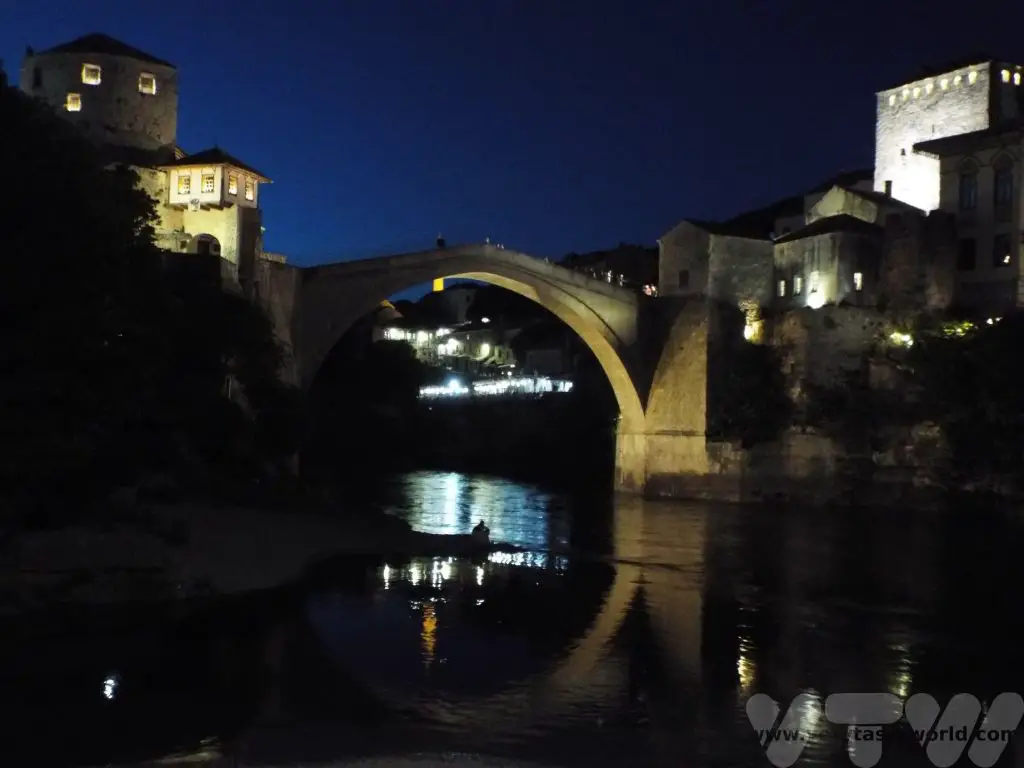
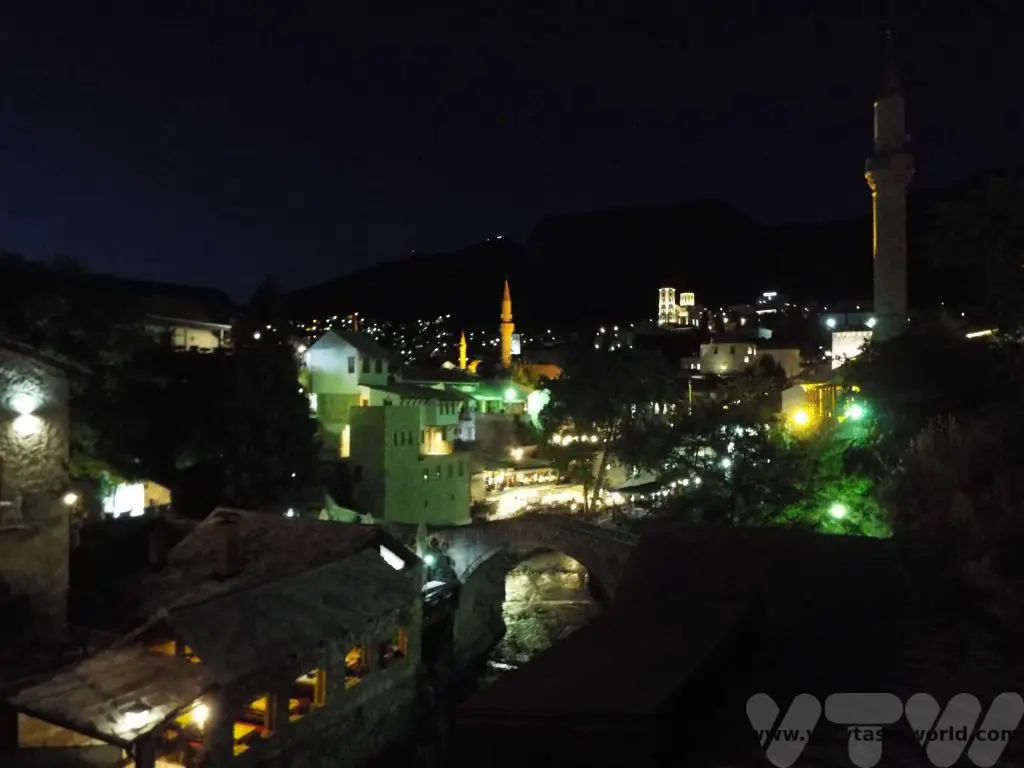
It is possible to see many sights in just one day in Mostar. We recommend staying overnight if you can, or at least waiting until the evening to see the iconic bridge beautifully lit up.
Related Posts You May Enjoy

RECIPE: Salmorejo
Andalusian Cold Tomato Soup
In Spain, cold soups are perfect for a hot summer’s day. Gazpacho is probably the most well known – a blend of fresh tomatoes and other vegetables, such as cucumber, peppers and garlic. Salmorejo is another cold soup, which also originated in Andalusia. We first tried it in a tapas restaurant when we visit Seville and absolutely loved it. It is a blend of tomatoes but has the addition of bread which thickens the soup. It’s a great soup that also helps to avoid food waste as it works really well if the bread is slightly stale.
In the UK tomatoes aren’t that great. Supermarkets often sell perfectly round, perfectly red tomatoes that basically taste of water. We go to our local market for our toms or grow our own. (And home grown always taste better.) What is great about Salmorejo is that even if the tomatoes are a bit insipid, the flavourings ensure that the dish will be delicious.
Our recipe for salmorejo is really easy to make but you will need a blender. This will serve four if part of a wider tapas meal/starter or two hungry people. Also, it’s the sort of soup that you can make first thing in the morning and let the flavours infuse during the day. It even tastes great after being in the fridge overnight.
Ingredients
About 10 ripe tomatoes
3 slices of stale white bread
Clove of garlic (or another if you like garlic but we prefer subtle garlic here)
Good slosh of extra virgin olive oil
Salt and pepper
1 boiled egg per 2 servings
Couple of slices of ham
Method
First of all the tomatoes need to be skinned. The easiest way to do this is to cut a cross at the end of the tomato (the opposite end to the stalk). It doesn’t need to be precise and it doesn’t matter if you cut into the tomato’s flesh -it’s all going to be blended anyway.
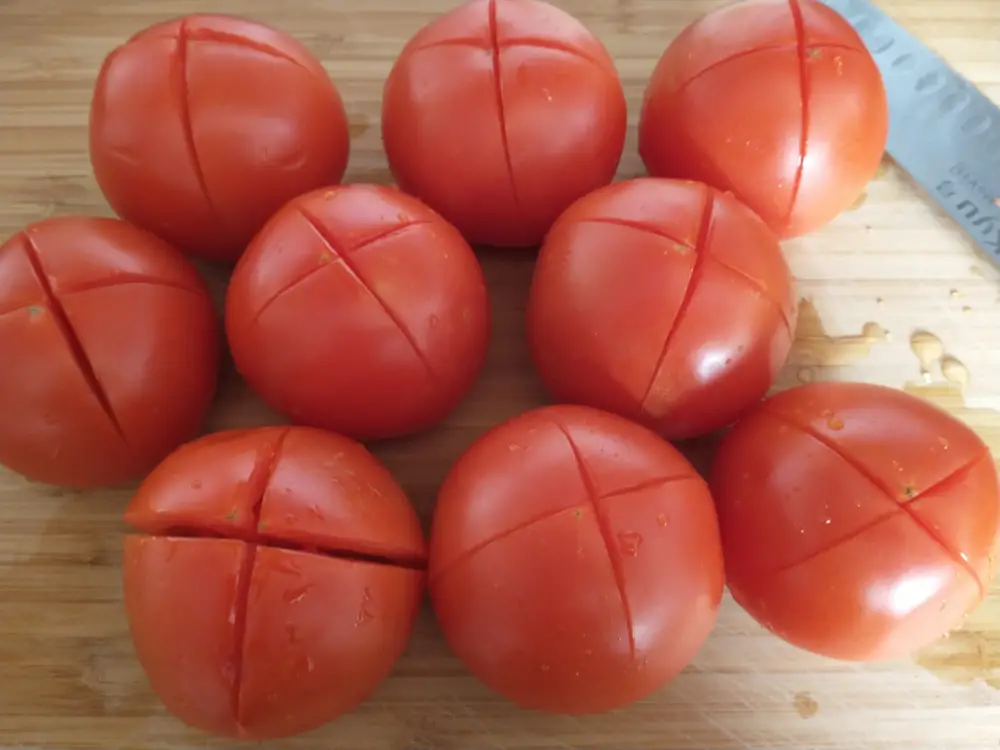
Pour boiling water over the tomatoes and let them sit in the water for a couple of minutes. Then transfer them to a bowl of cold water.
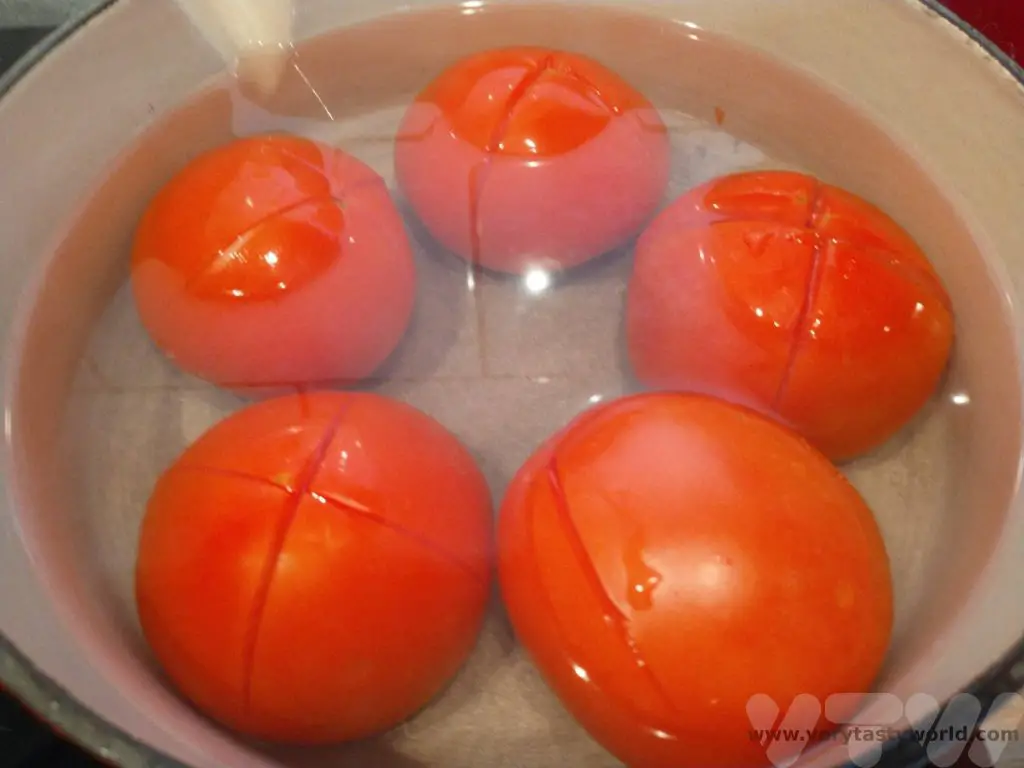
Grab a corner where the slice was made and the skins should just peel away. It’s not the end of the world if you don’t get all the skin off.
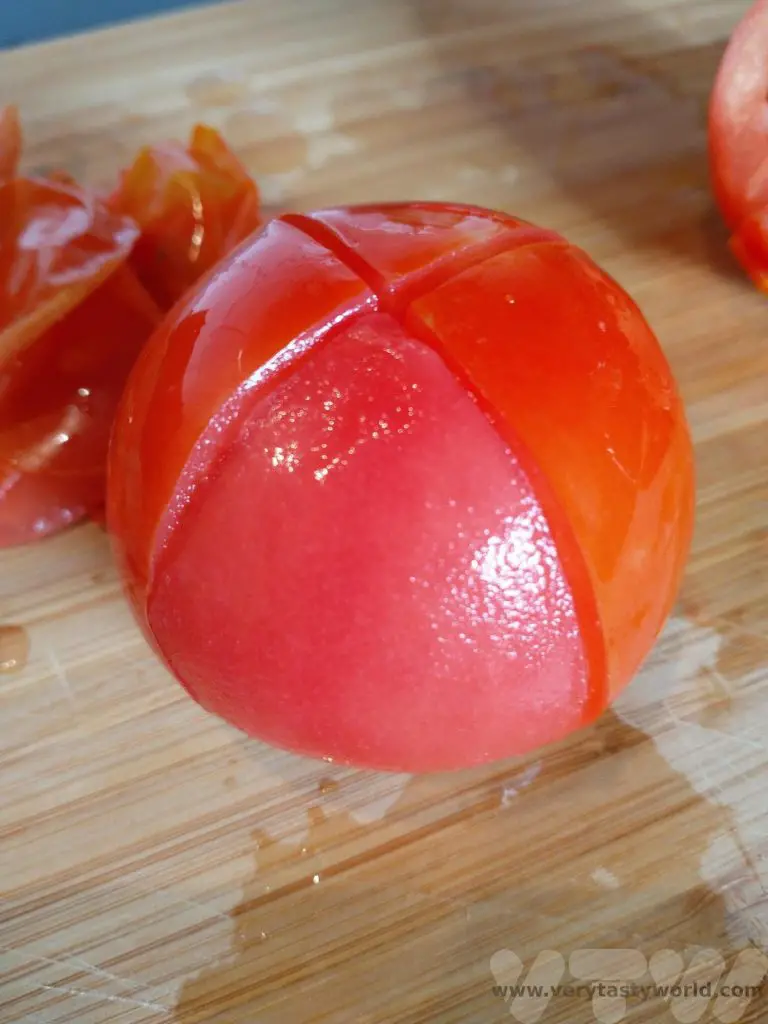
Put the tomatoes in the blender and give them a quick whiz.
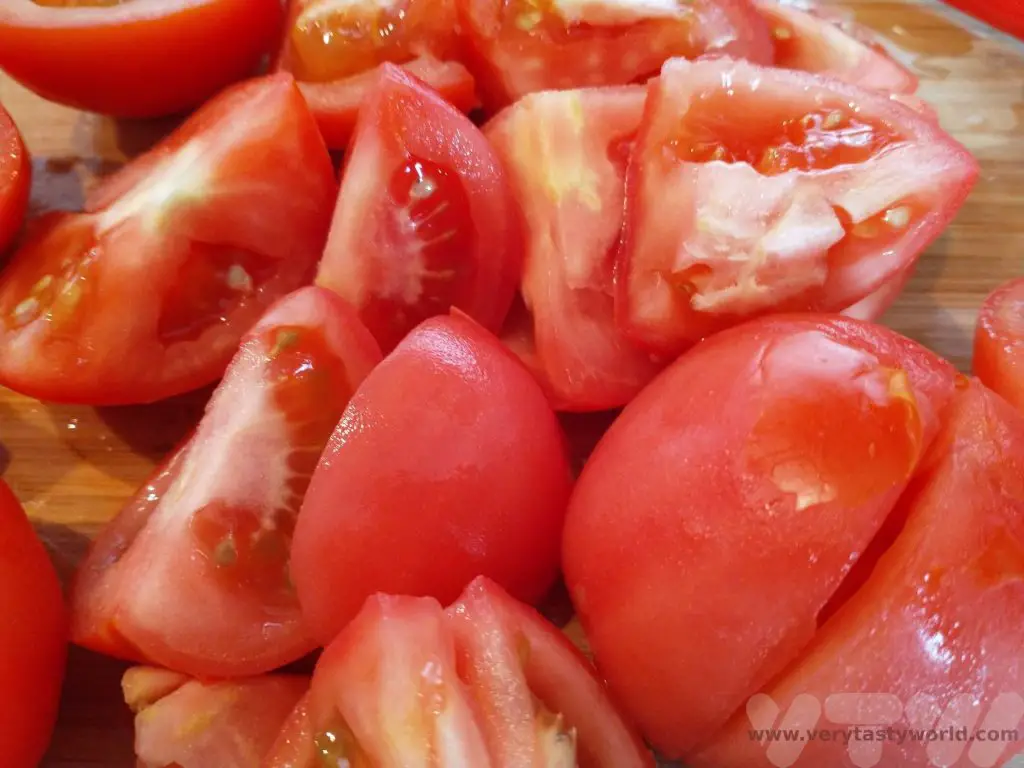
Then tear the bread slices and add those, along with the garlic, oil, salt and pepper.
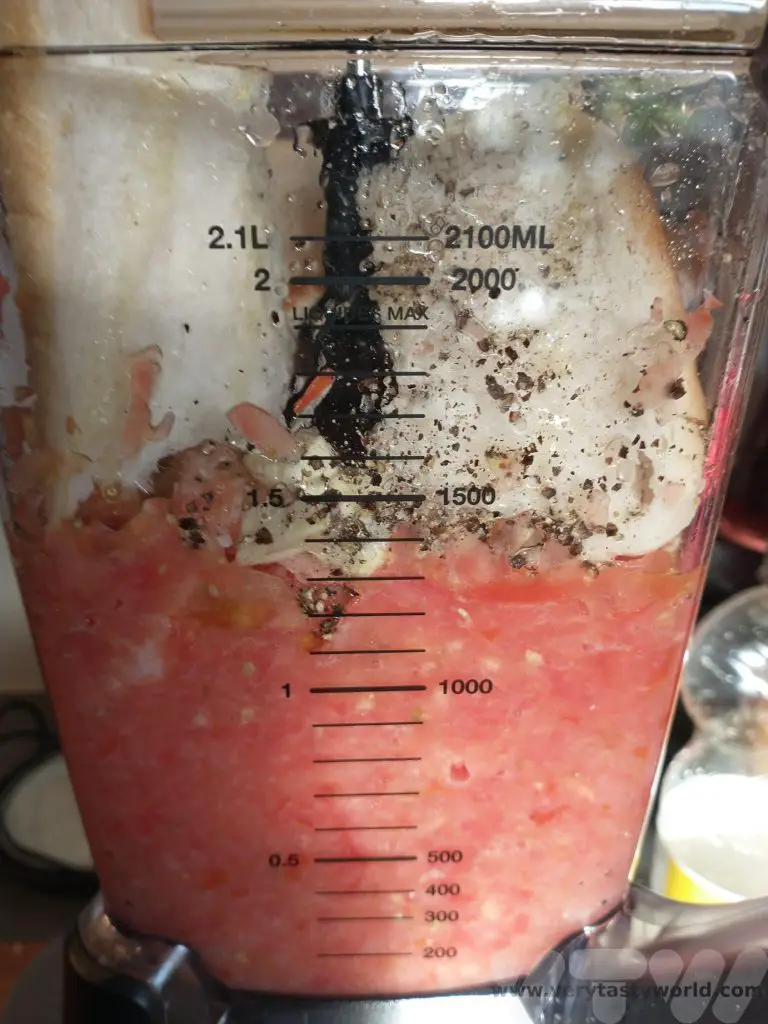
Blend again until you have a smooth, thick soup.
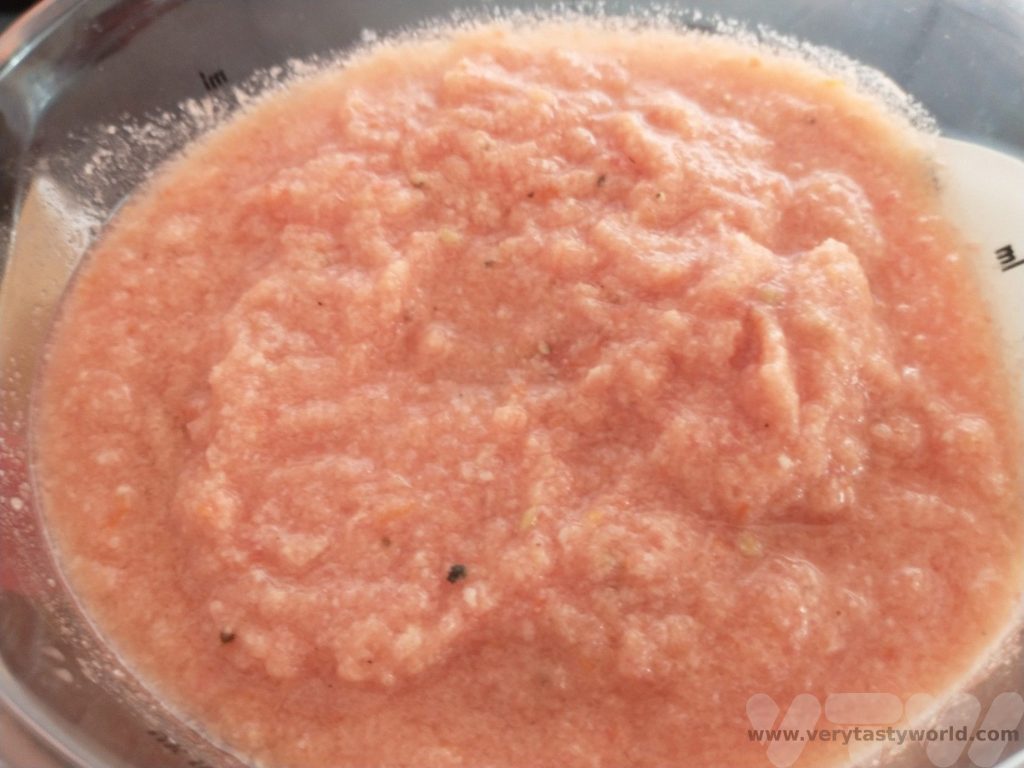
Pour into a jug then put into the fridge and let the flavours infuse.
Serve into individual bowls and garnish with chopped boiled egg and/or chopped ham.
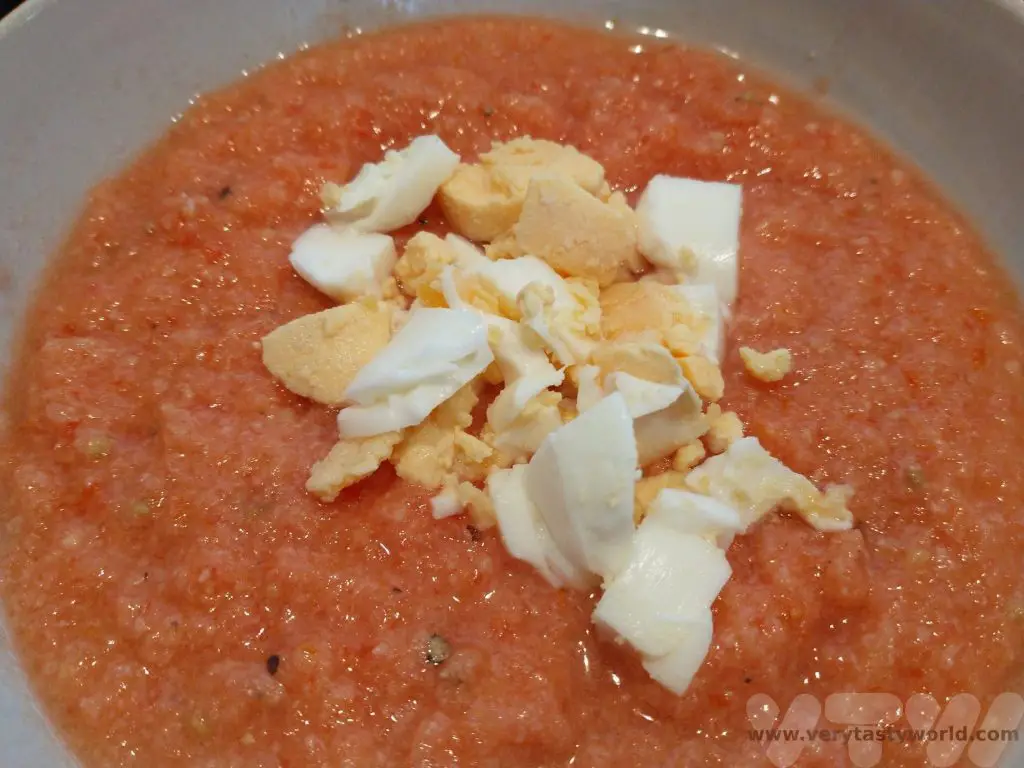

- RECIPE Oyakodon Donburi
- Zero Waste Recipes Before Your Holiday
- RECIPE: Vegetable Biryani Tamil Nadu Style
- RECIPE: Vegan Wild Garlic Pesto
- Recipe: Venetian Pasta Sauce
- RECIPE: Biryani Raita Recipe
- RECIPE: How to Make Costa Rica’s Gallo Pinto
- Recipe: Japanese Simmered Pork Belly – Buta no Kakuni
- RECIPE: How to Make Umeboshi
Osaka Restaurants Japan – Kuidaore on Dotonbori
We visited Osaka (pronounced O-saka rather than o-SAR-ka) on our very first trip to Japan many years ago. We had already spent time exploring Tokyo, Hakone and Kamakura and it was following an afternoon and evening in Osaka, exploring the neon arcades and playing video games, taking silly photos in the print club booths, riding the Hep 5 big wheel and singing our socks off in a karaoke bar (where you get a private booth rather than have to sing in front of complete strangers), that we realised that we had fallen in love with Japan. The following day we visited the Dotonbori area in the Namba district and discovered Osaka’s restaurants. We decided that Osaka was our favourite place in the world.
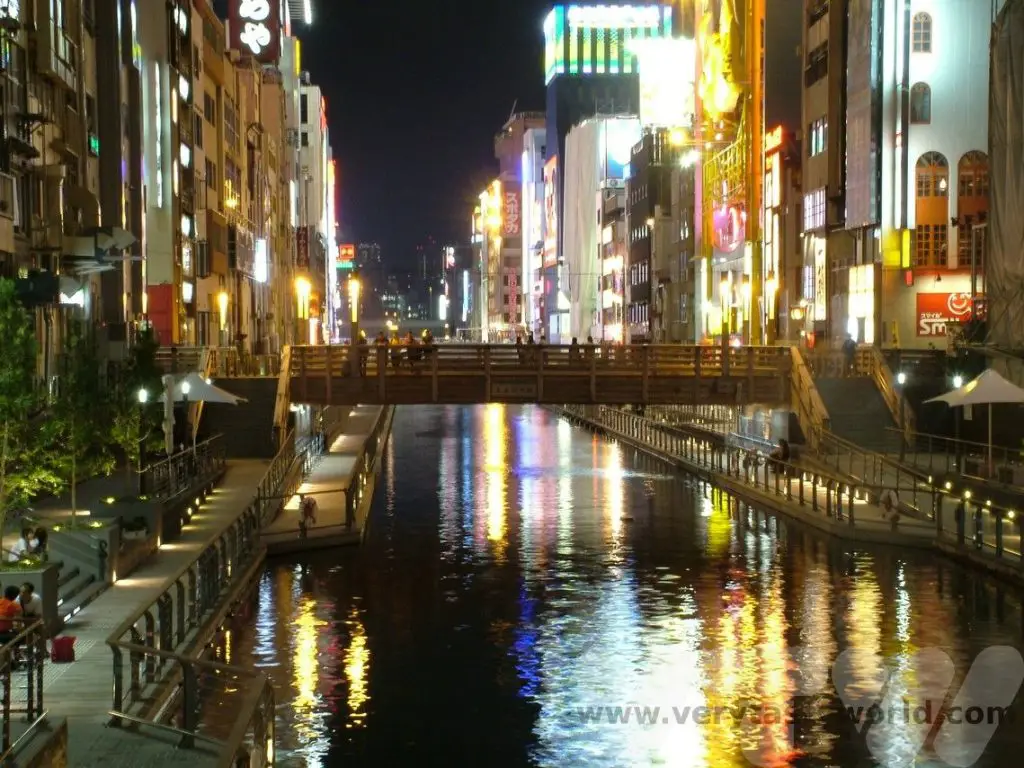
We’ve returned to Osaka many times over the years and we always make a beeline for Dotonbori. We’ve often stayed in business hotels close by. It’s a short walk away from the JR Namba Station Exit 14 (Yamatoji line), which is especially useful if you are using your JR Pass. Be aware that Namba is a big station. If you are arriving on the shinkansen (bullet train) you can get there from Shin-Osaka using the subway Midosuji line to Shinsaibashi Exit 4-B. (N.B. you can’t use your JR Pass on the subway.)

Osaka is known for being one of Japan’s centres of commerce, indeed there’s a phrase that many salarymen use as a greeting: ‘mokari makka’ which means ‘are you making money?’ The residents of Osaka speak Kansai Ben, the dialect of the region. It’s quite different to the Japanese we’ve learned in classes. For example, Osaka residents will say, ‘okini’ as thanks instead of ‘arigato’; although arigato will absolutely be understood you may well receive a big smile if you use ‘okini.’
Dotonbori History
Dotonbori means ‘Doton Canal’ and the history of the area goes back several hundred years to 1612 when Yasui Doton, a local merchant, started constructing a canal system in the area to link the Kizugawa river to the Umezu river. However, he was killed in 1615 during the Siege of Osaka and his cousins completed the canal project, naming it after Doton. Following completion, the area thrived, trade increased due to the better transportation along the canal and Dotonburi became an entertainment district, with theatres, teahouses and restaurants. It’s a fantastic place to visit, especially for foodies!
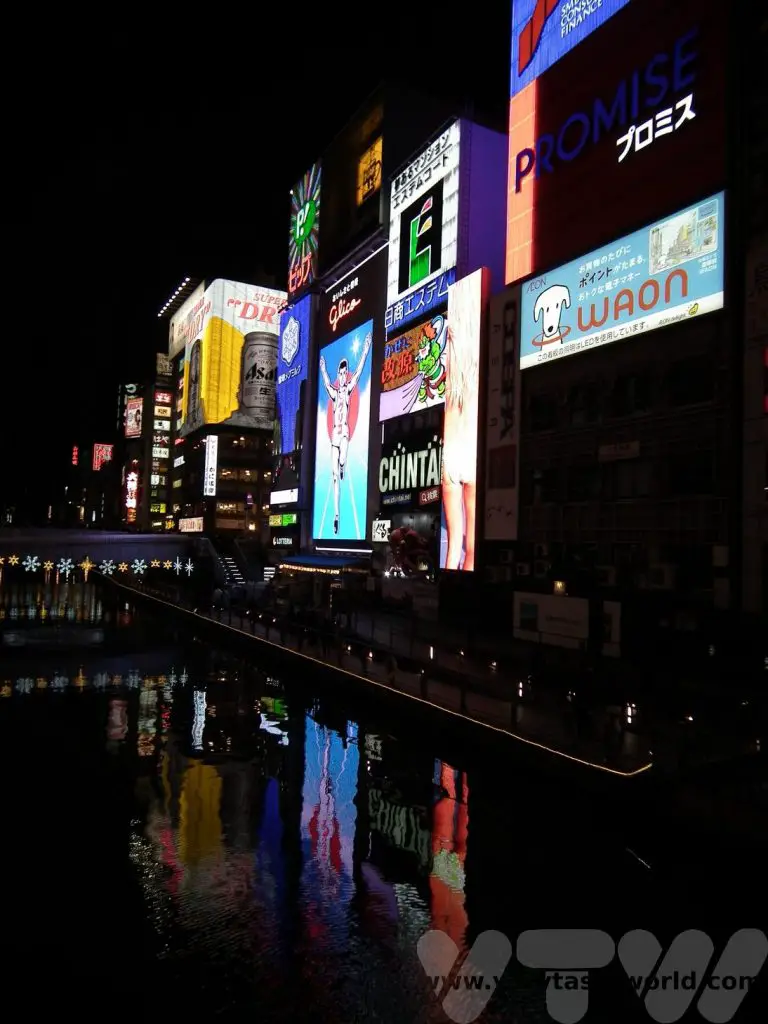
The district is defined by street between the Dotonboribashi Bridge to Nipponbashi Bridge. Probably the most iconic image of the area is that of the Glico running man – and it’s essential to see him at night, brightly lit in neon. Glico is a sweet manufacturer established in 1922 and famous across Japan. They are probably best know for those delicious Pocky coated biscuit sticks.
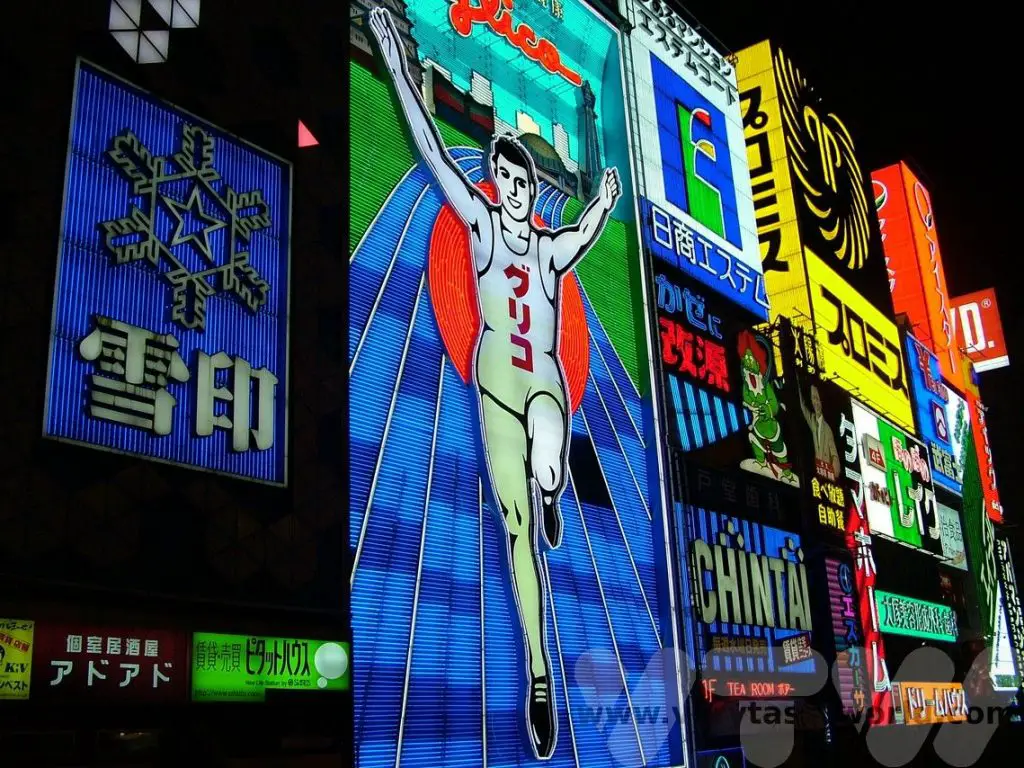
Dotonbori is one street, but actually the surrounding streets are also full of excellent bars and restaurants. We’ve had some of our best nights out in Osaka by wandering into random bars in the area. Locals and tourists alike are very friendly and we’ve often just started chatting with people. There was one particularly memorable night when a pair of airline pilots decided to buy Jagermeister bombs (a Jagermeister shot inside a glass of Red Bull) for the denizens of the entire bar which resulted in a highly caffeinated boozy evening and us sleeping in so late that we missed much of a planned excursion to Kobe the following day!
Kuidaore
The word ‘kuidaore’ means to go bankrupt by extravagant spending on food and Dotonbori would be a place where you could have a really good attempt at achieving this as it is chock full of excellent restaurants.
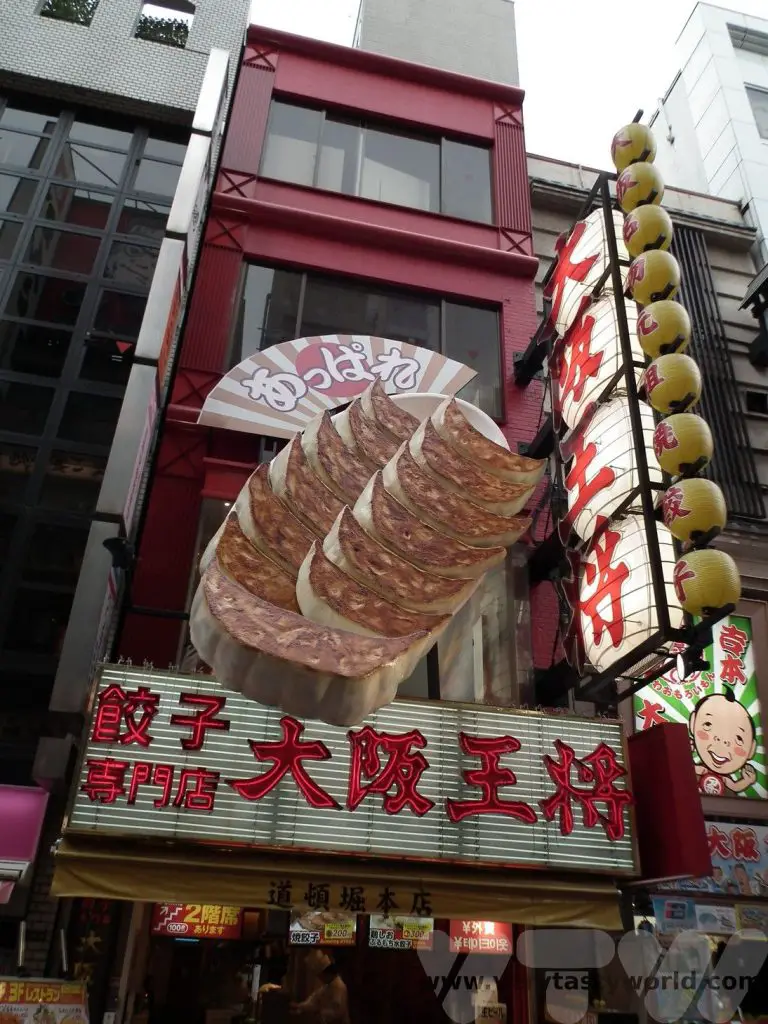
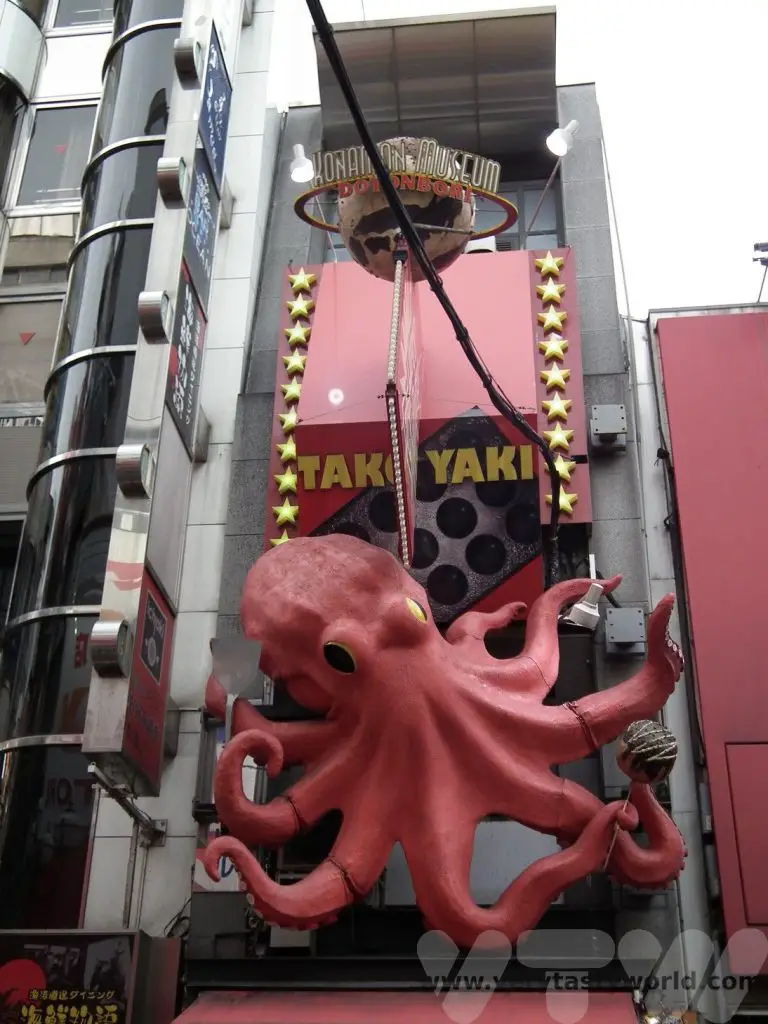
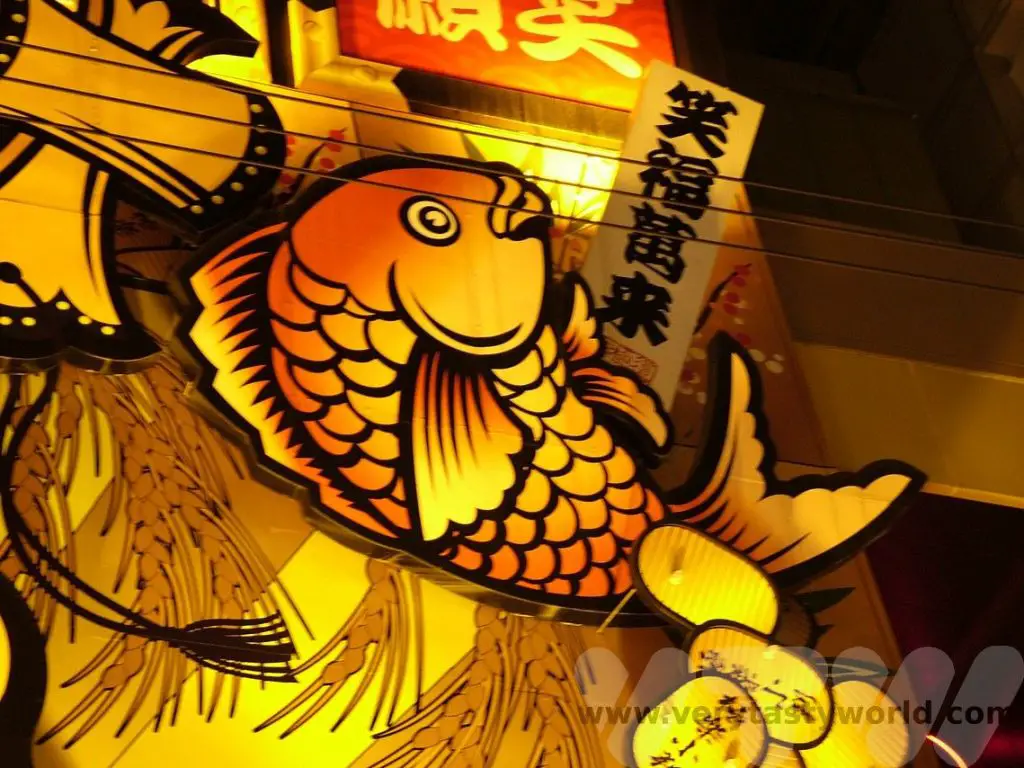
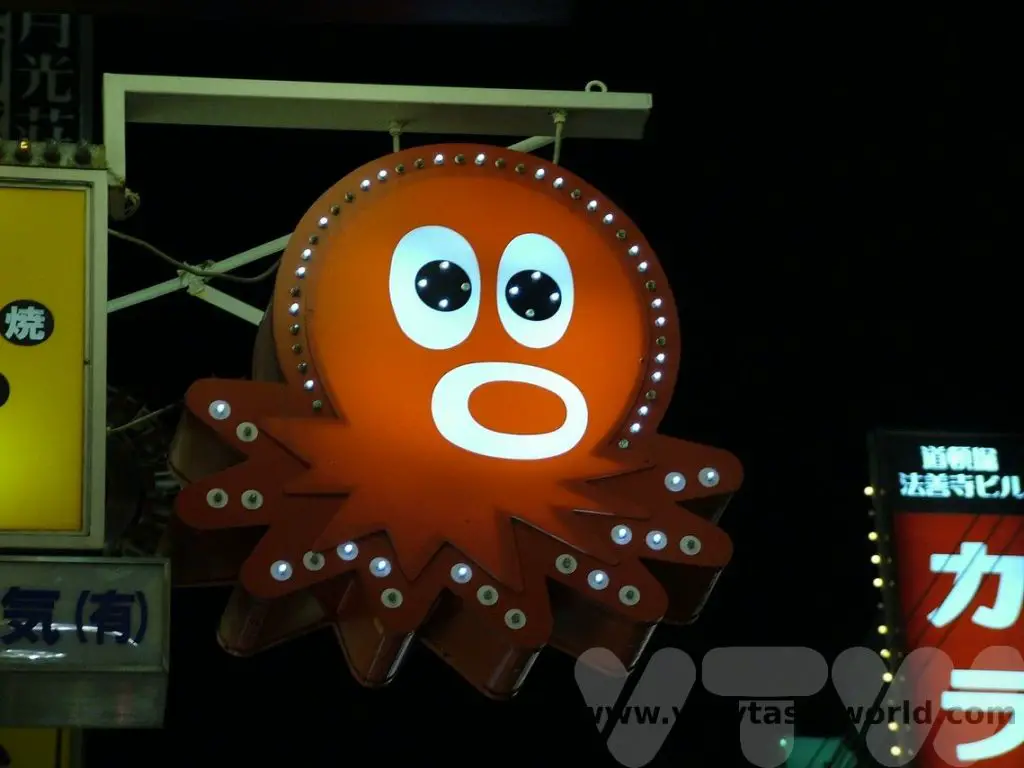
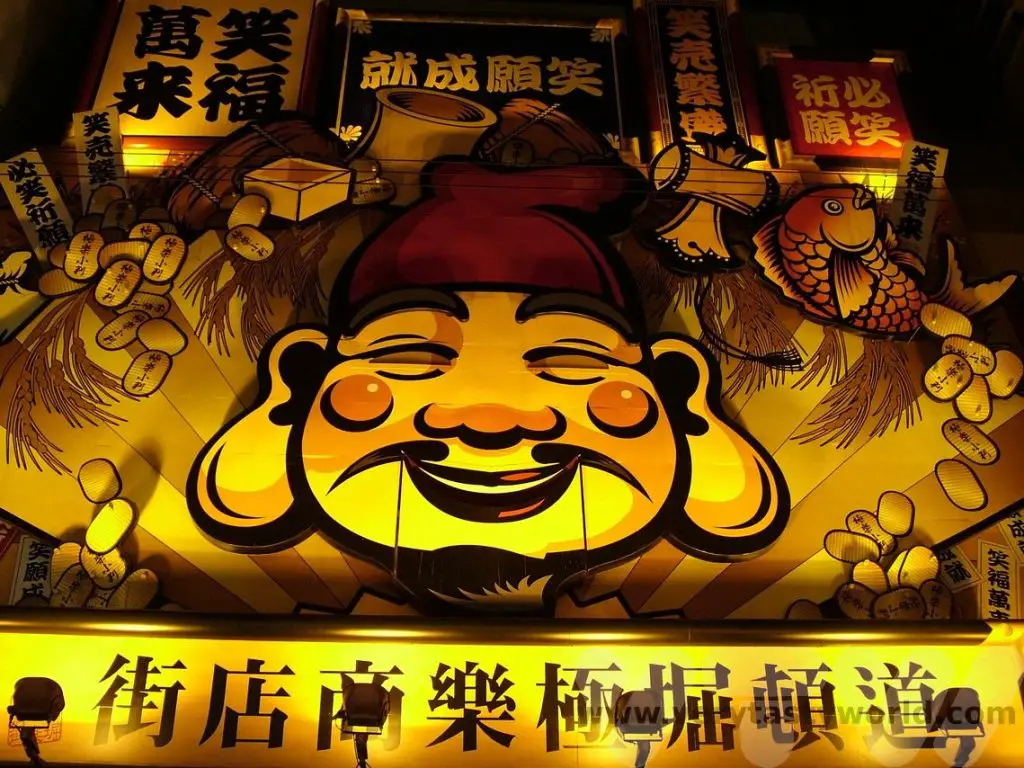
One thing to remember when visiting cities in Japan is to look up! In the UK most shops and restaurants are located at ground level but Japan is a country with high rise buildings. Very often shops and restaurants will be located on multiple levels within the same building. You will often see boards outside the building advertising various emporia: F1, F2 etc to go up, B1, B2 etc to go down. (N.B. floor levels in Japan match the American model where the ground floor is called the first floor, unlike in the UK where the ‘ground floor’ is at street level and the next floor up is the ‘first floor’.)
Essential Osaka Restaurants
Takoyaki – The Best Street Food
Takoyaki is quintessential Osaka street food. It comprises spherical octopus pieces in a batter which are cooked en masse in a griddle.
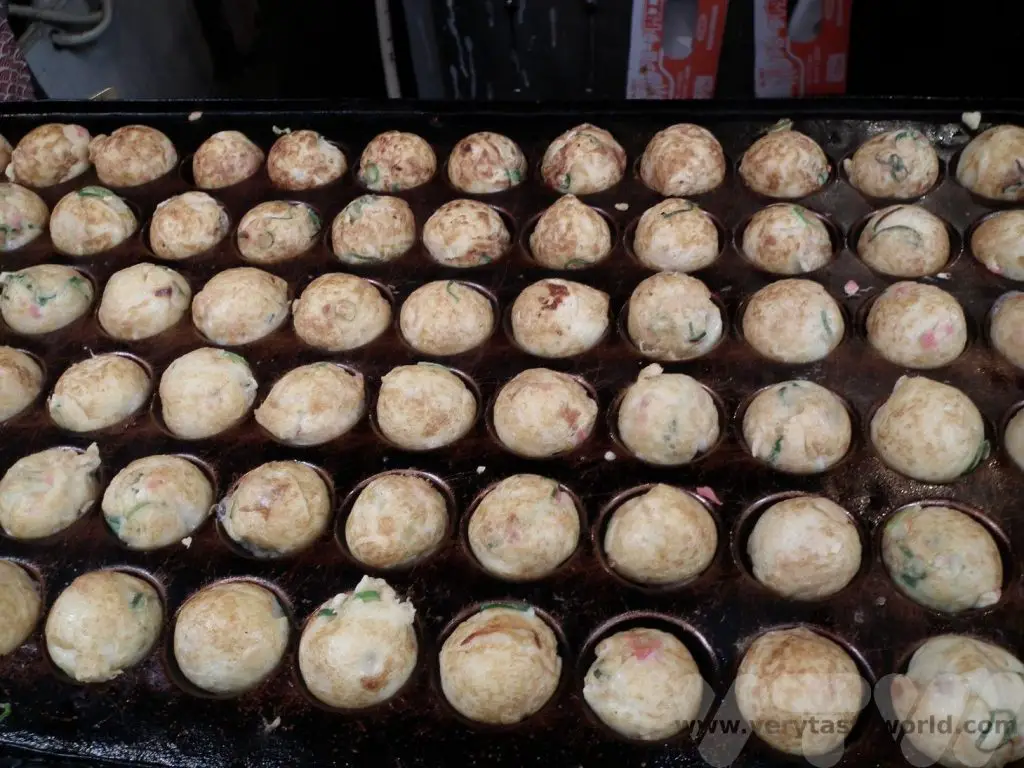
The takoyaki maker expertly and deftly turns each octopus ball by hand so that they are cooked evenly.
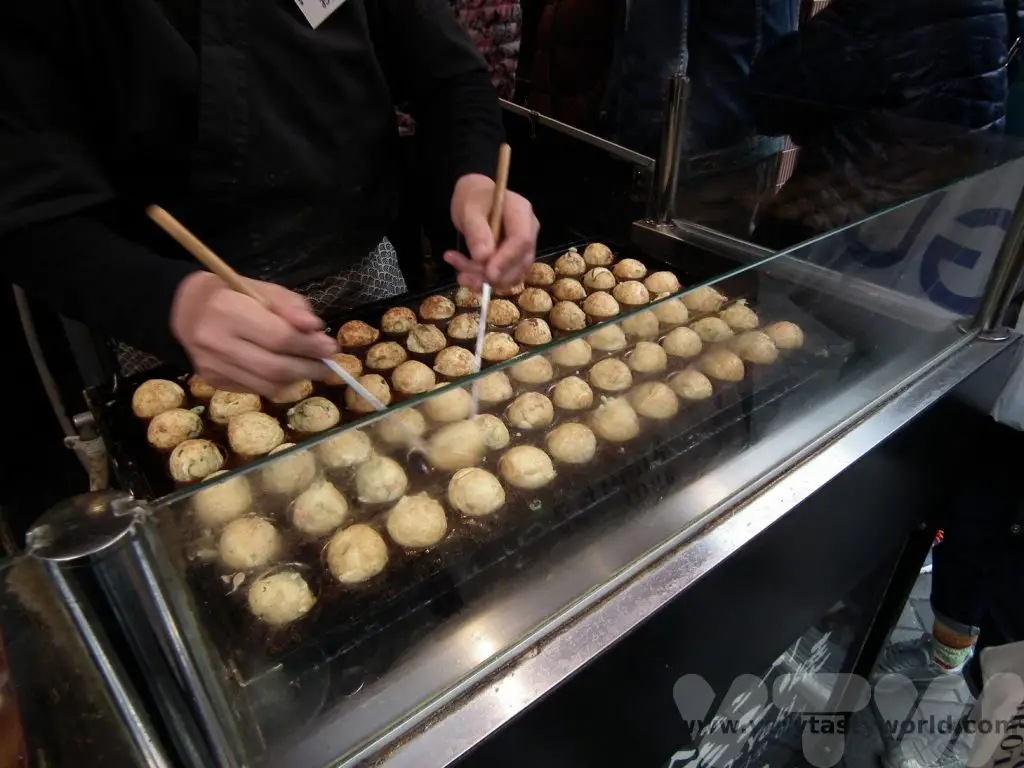
Served with mayonnaise, takoyaki sauce (which is similar to brown sauce) and bonito flakes (skipjack tuna flakes shaved to wafer thin slices – which are rich in umami and are often used to make Japanese dashi stock), which undulate gently in the heat of the takoyaki. You just have to wait a little while before scoffing because they will be extremely hot as soon as they come out of the griddle.
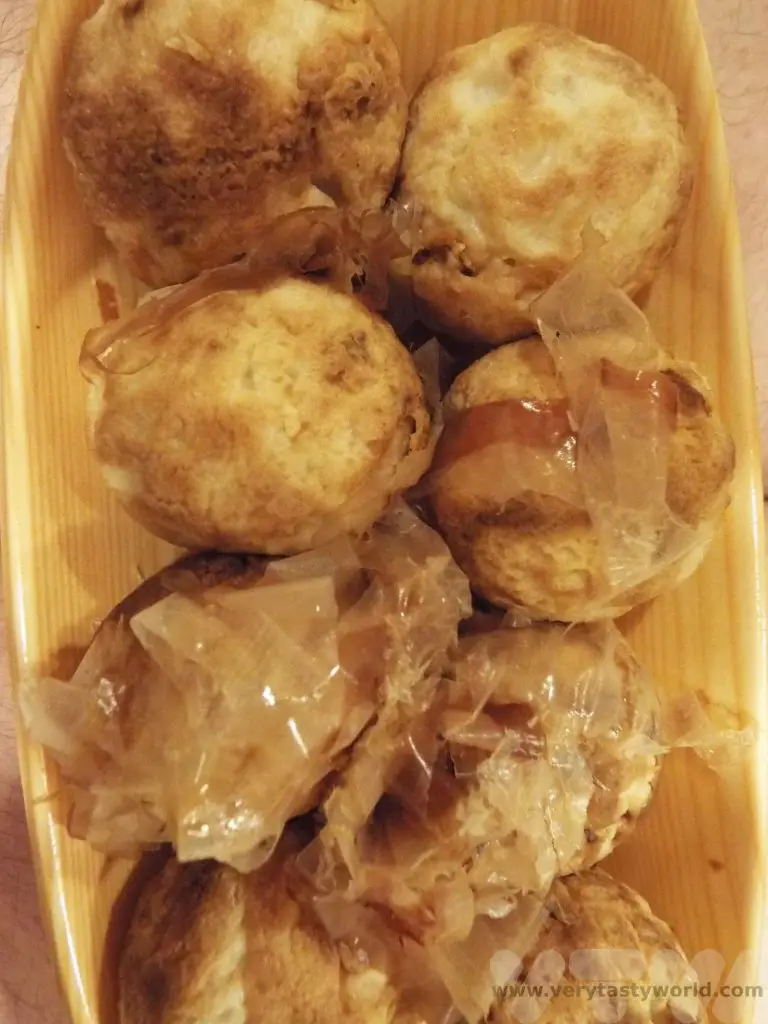
Okonomiyaki – As You Like It
Okonomiyaki, which translates as ‘as you like it’, is often described as a cross between a pancake and a pizza. It’s a cabbage based batter (but don’t let that put you off – it’s really delicious) with multiple fillings and toppings. Some establishments have a chef prepare the okonomiyaki, others will let you sit at the griddle and you can cook it yourself.
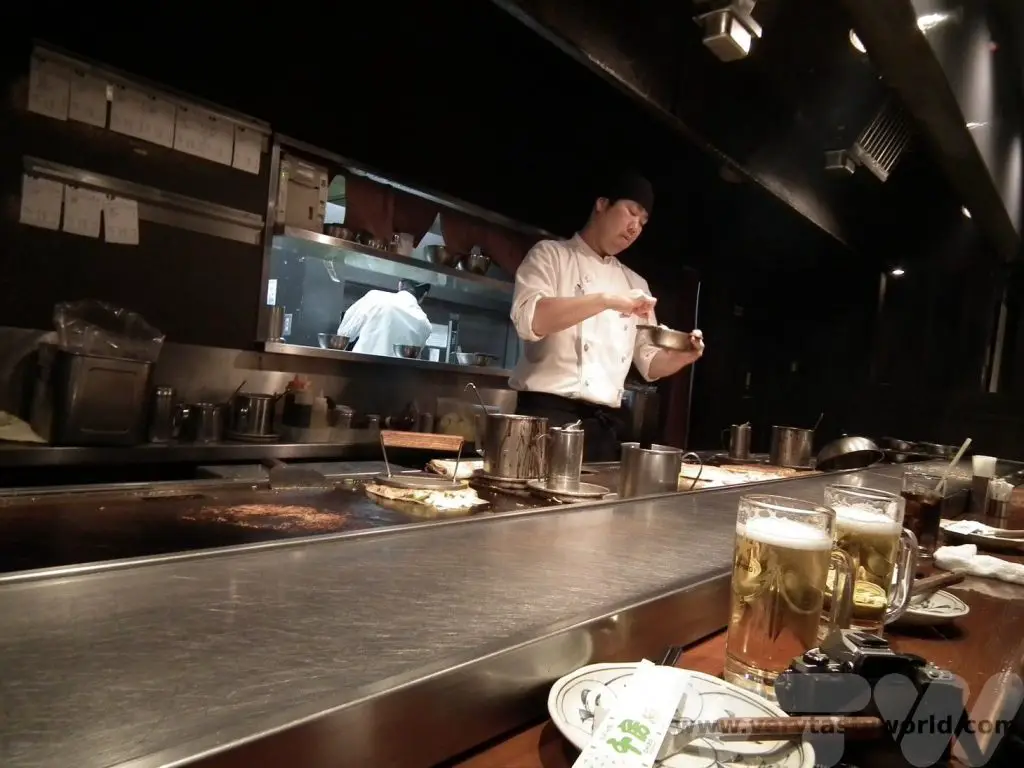
The basic batter mixture is prepared and cooked on the griddle.
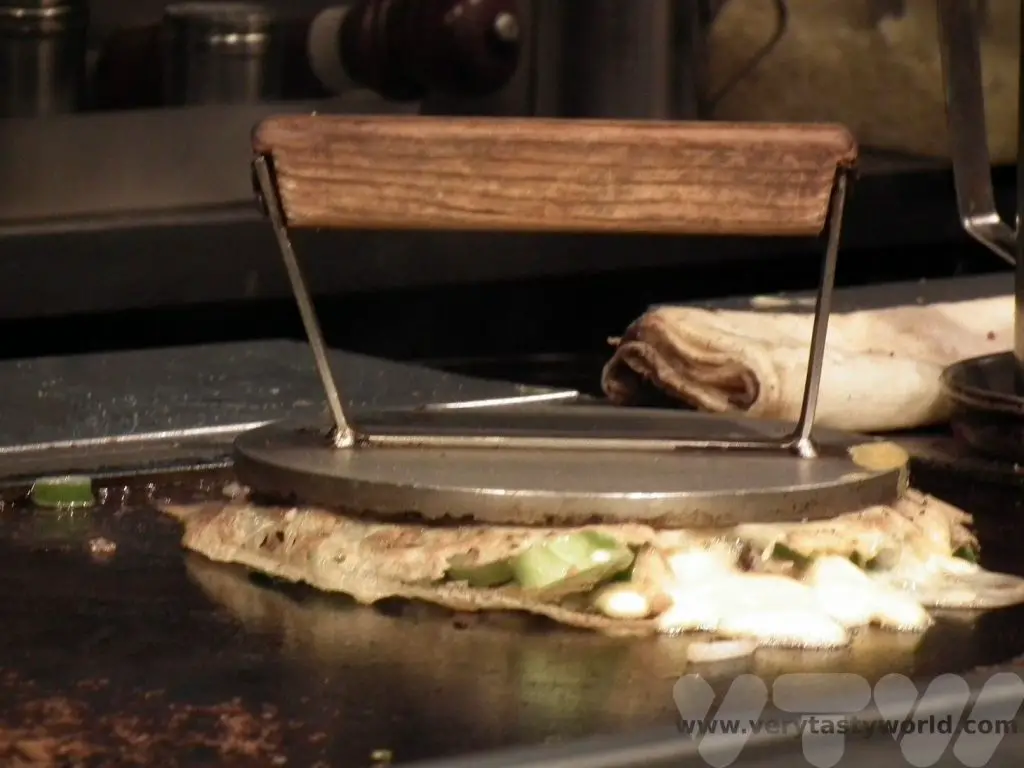
Then you have a choice of toppings – meat and prawns are popular choices and veggie options, such as kimchi are also available.
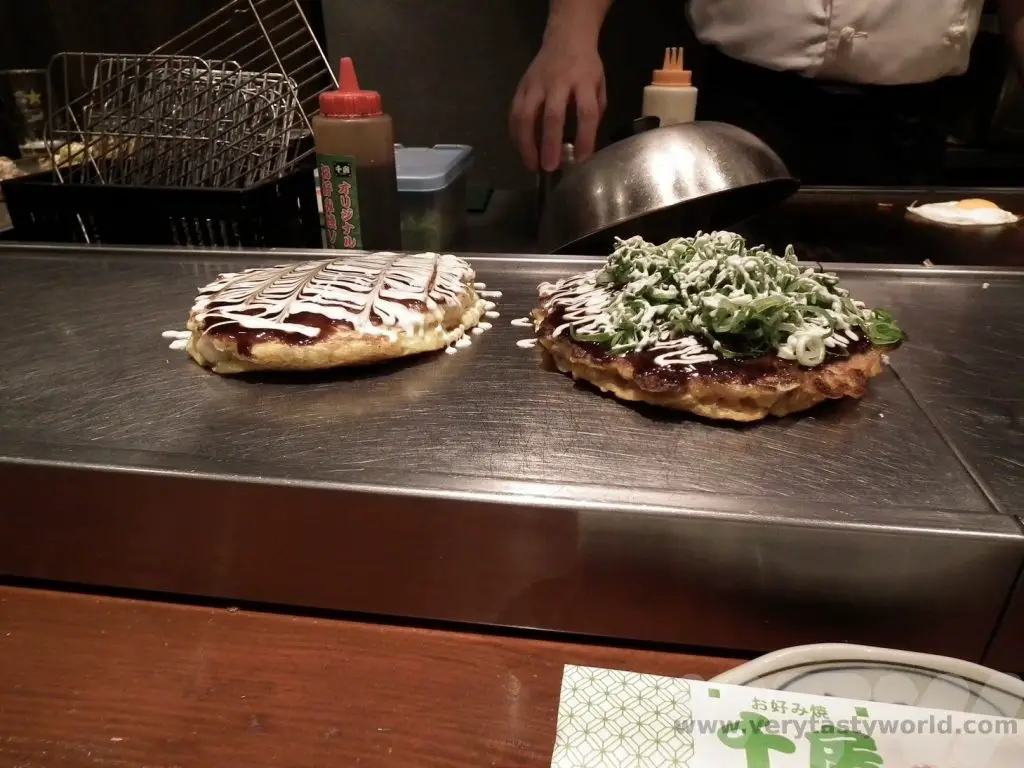
The okonomiyaki will be garnished with a variety of yummy things, including mayo, okonomiyaki sauce (similar to takoyaki sauce/brown sauce), flakes of nori seaweed and those delightful undulating bonito flakes. Chilli sauce may also be available. The chef will embellish your okonomiyaki in the most delightful way. And of course, when the chef asks you what garnish you would like, the correct answer is EVERYTHING!
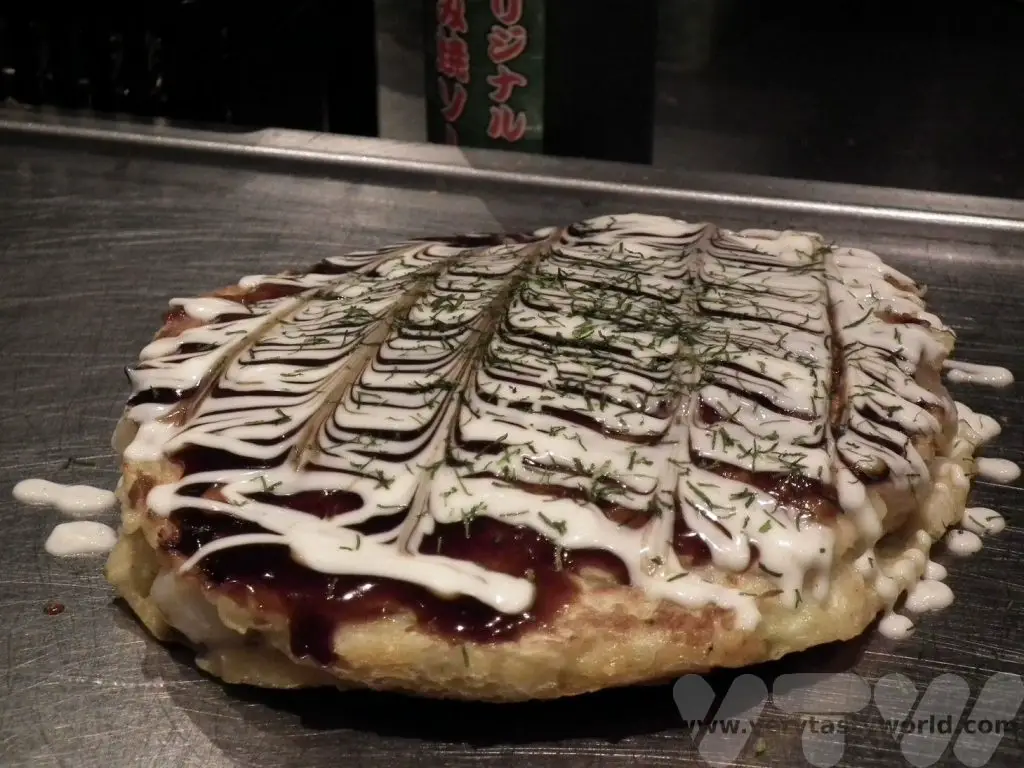
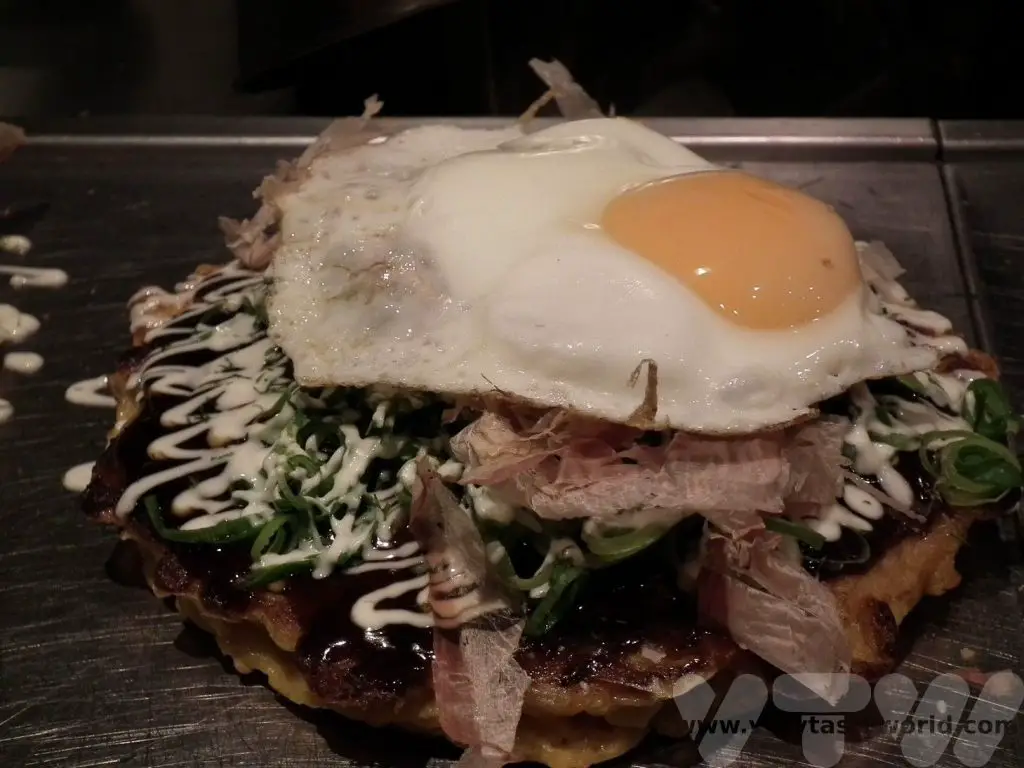
Fugu – Dare You Try Puffer Fish?
Fugu is the fish that has a formidable reputation – it’s the puffer fish, parts of which are deadly poison particularly the liver, the ovaries, eyes, and skin. The toxin basically paralyses you and you asphyxiate while still conscious. Not very nice at all.
But fugu is also a prized delicacy. The non-poisonous bits are fine to eat but absolutely can only be prepared by a licenced chef who has trained for several years. You can eat fugu all over Japan but it was at Zubora-ya, with its highly distinctive sign comprising a giant pufferfish lantern outside the restaurant, that we first tasted this fearsome fish.
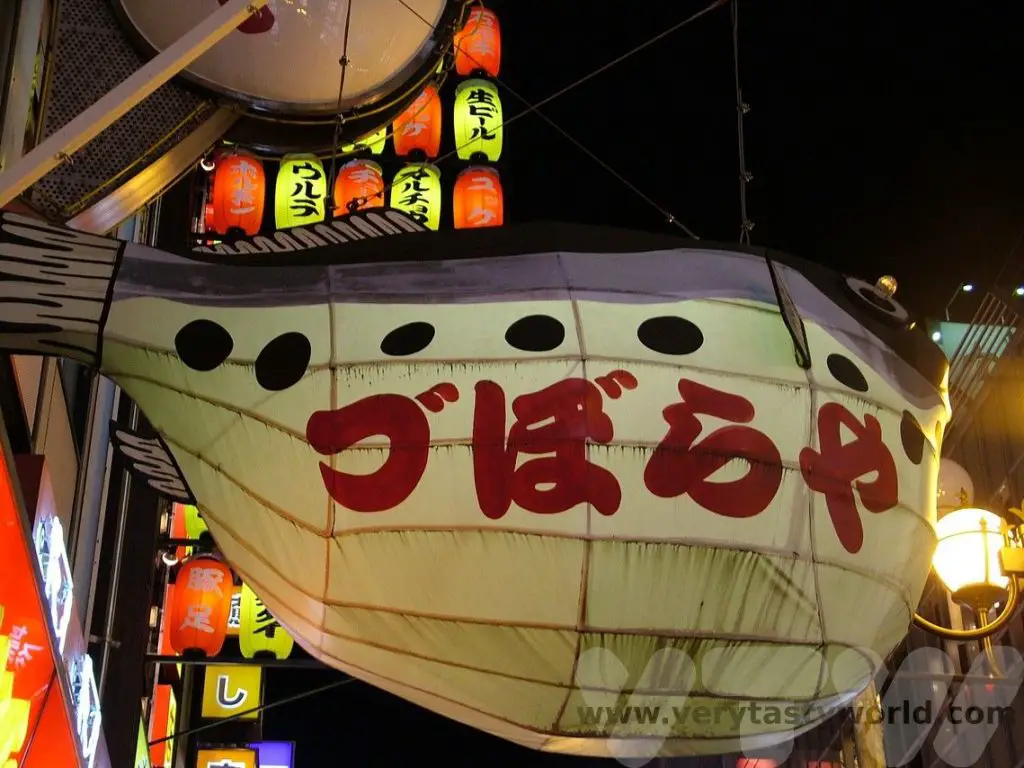
We thoroughly enjoyed a set menu at Zubora-ya – sushi and sashimi is the conventional way to enjoy fugu. It has a mild flavour and a firm texture that is something like a cross between squid and monkfish. It was delicious. And we survived!
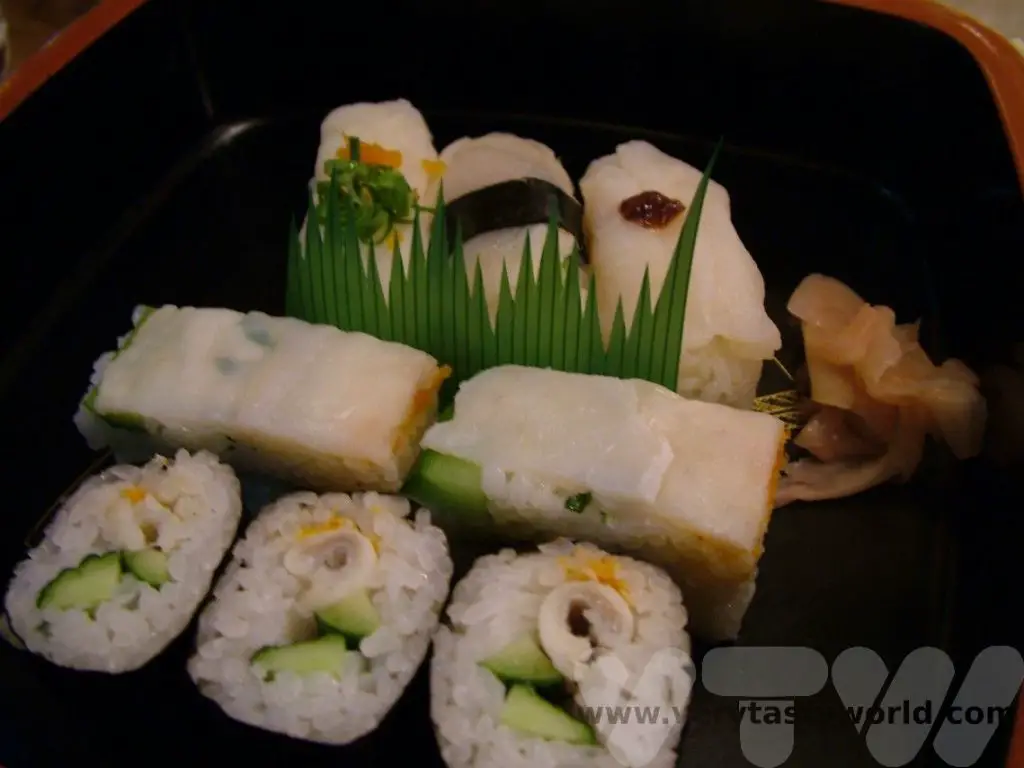
Sadly, Zubora-ya had to close during the pandemic and has not reopened.
Kani – Crab Heaven
Kani Doraku is another distinctive restaurant which has a model of a giant crab waving its pincers on the outside wall, beckoning you inside (well, that’s our interpretation!).

We have eaten here several times and always had a hugely enjoyable meal. Again, it’s a multi-storey building and, depending on how busy it is you may eat within the restaurant or be taken to a private room with tatami mat flooring and a telephone. The telephone was a bit daunting first time around but we picked up the phone and said, ‘kite kudasai,’ (please come here) and someone came along to take our order – which largely involved pointing at a picture menu. Even though it’s a large restaurant it’s very popular these days so it’s worth booking. There are actually multiple restaurants of this chain along Dotonbori, so check out the others if the first one you try is full. (The most popular is closest to the Glico Man.) The set menus aren’t cheap but they are good value and the food is utterly delicious.
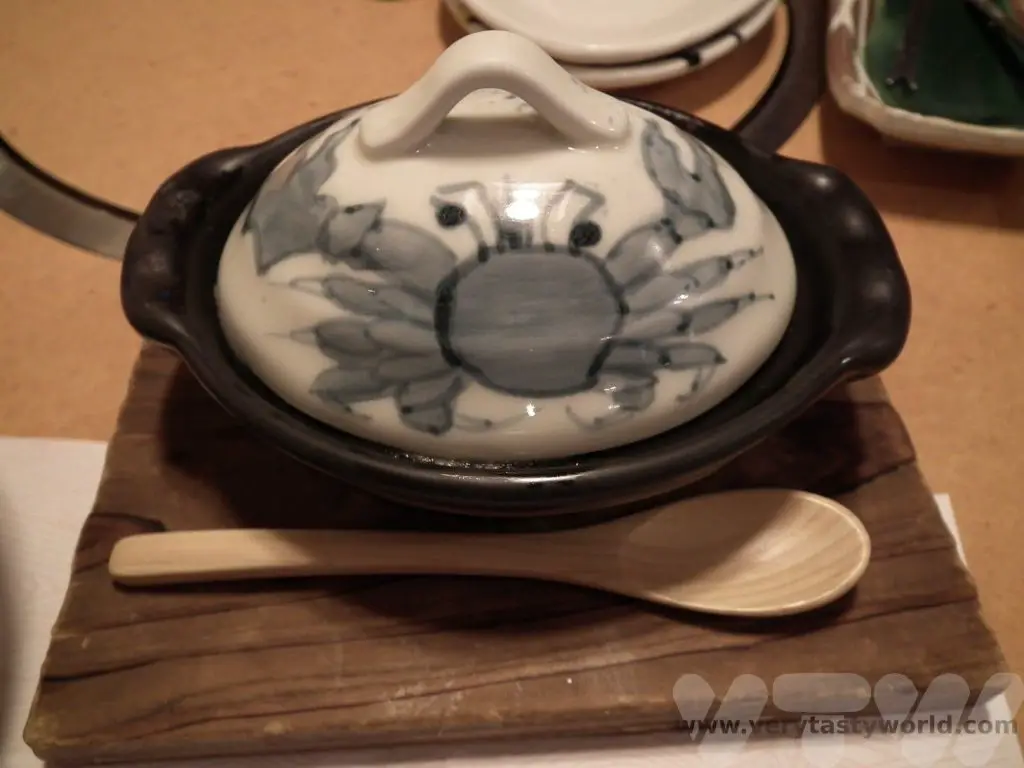
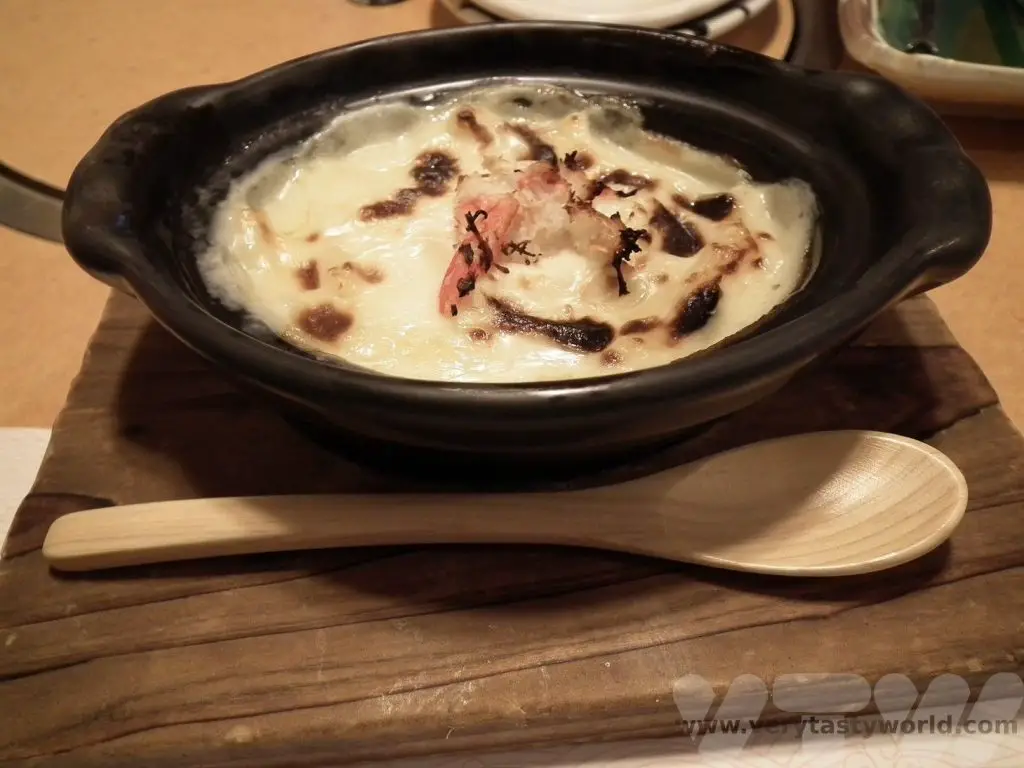
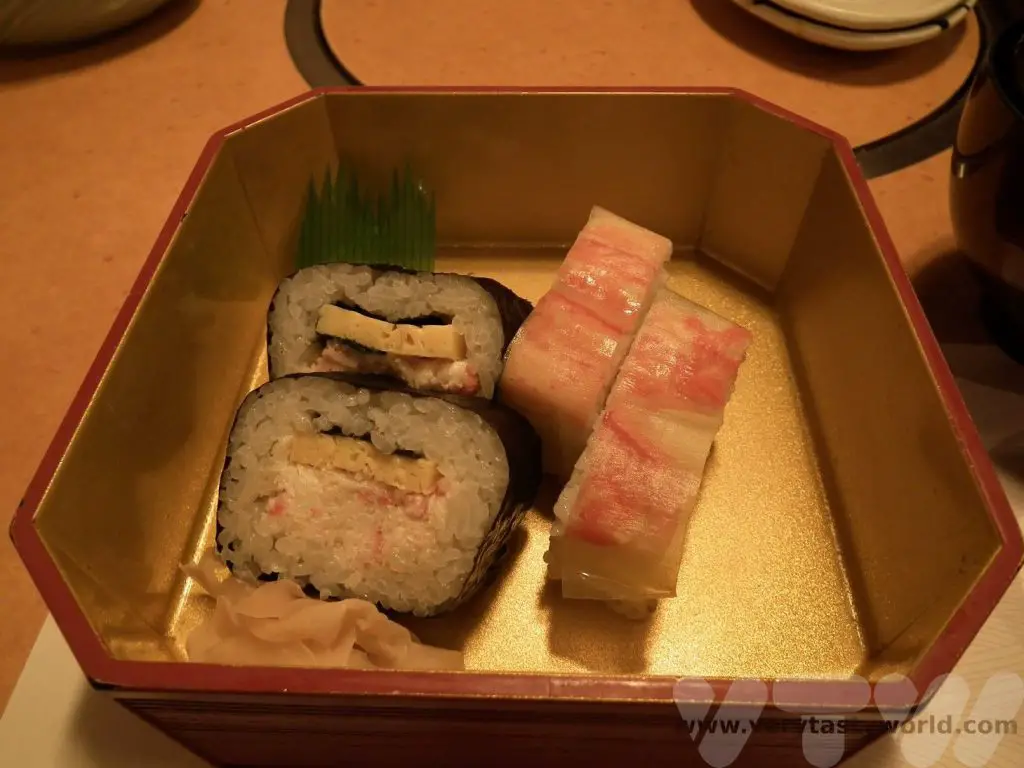
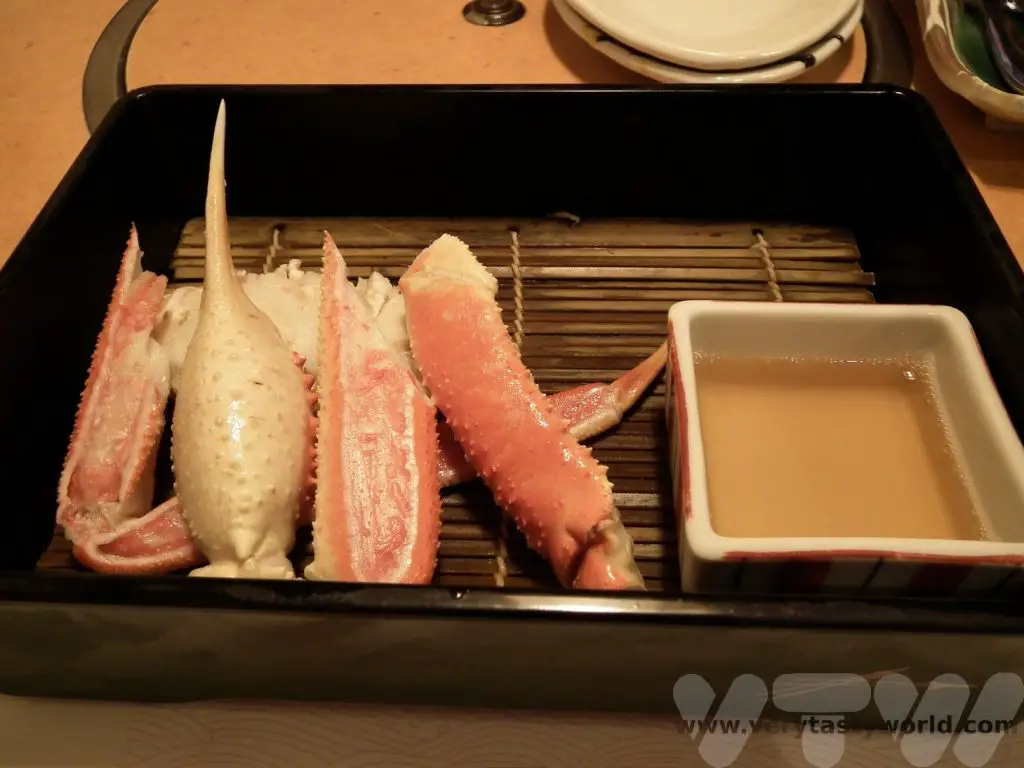
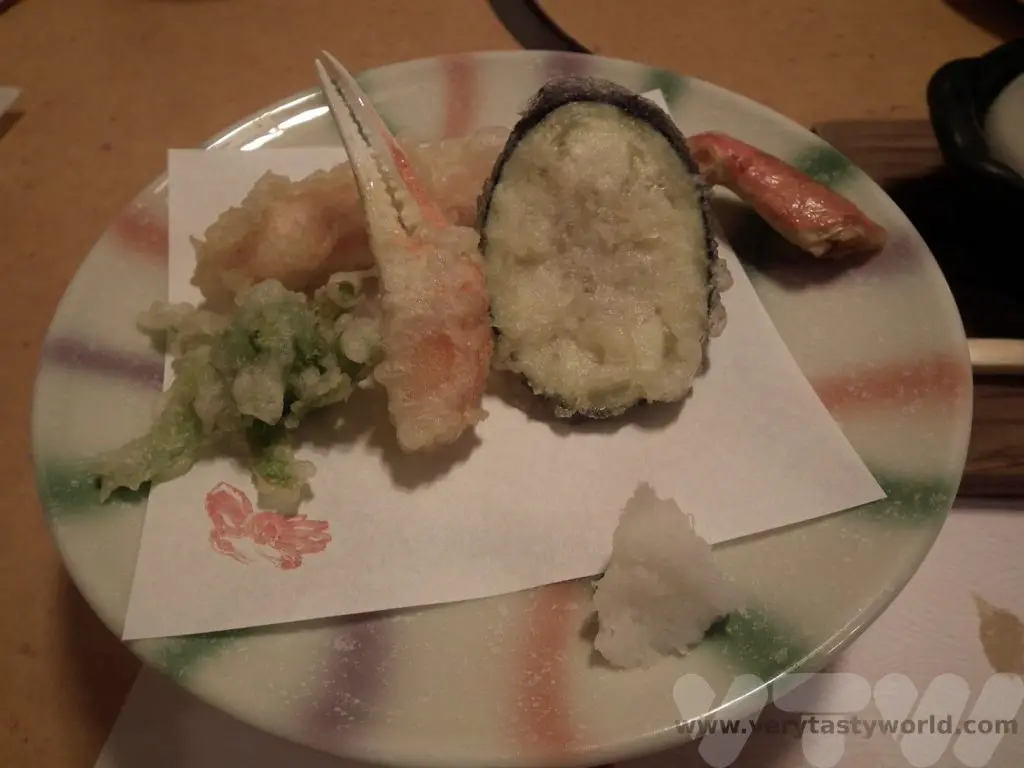
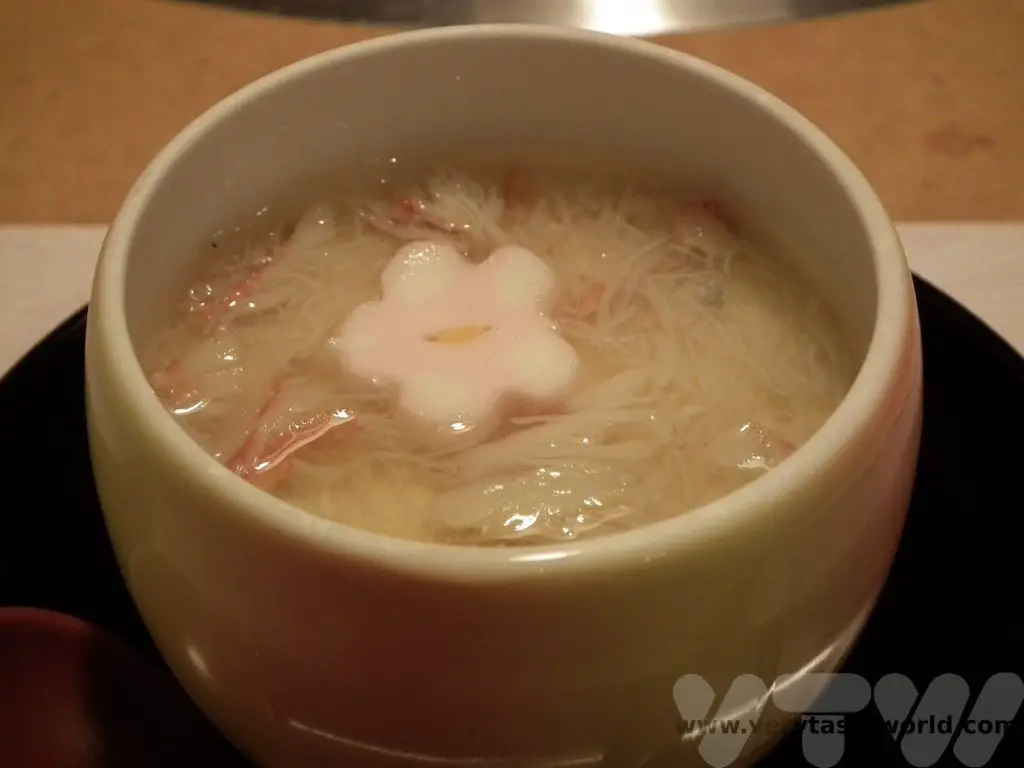
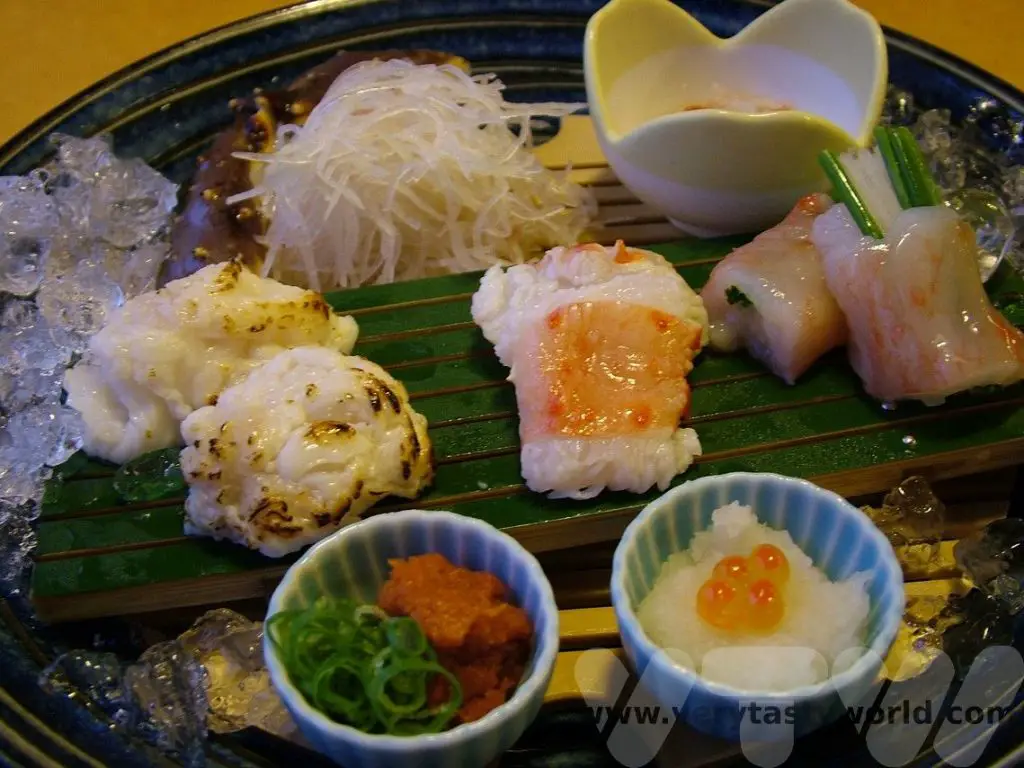
We’ve enjoyed crab sushi and sashimi, crab chawan mushi (steamed egg custard), crab tempura and crab gratin with a clear soup and matcha ice cream for dessert. Utterly delicious.
Other Dotonbori Establishments
There are loads of other restaurants along Dotonbori and the surrounding area. Kuidaore was an enormous eight storey restaurant founded in 1949. It was recognisable by its iconic Kuidaore Taro Clown, a vaguely creepy mechanical drumming puppet at the entrance. Sadly it closed some years ago but the building was populated by different shops and restaurants in what’s now known as the Nakaza Cui-daore Building.
If you like ramen noodles (and who doesn’t?) there are three Kinryu restaurants along the street. Kinryu translates as ‘golden dragon’ and the restaurants can easily be found by their distinctive dragons on the hoardings above the shopfront.
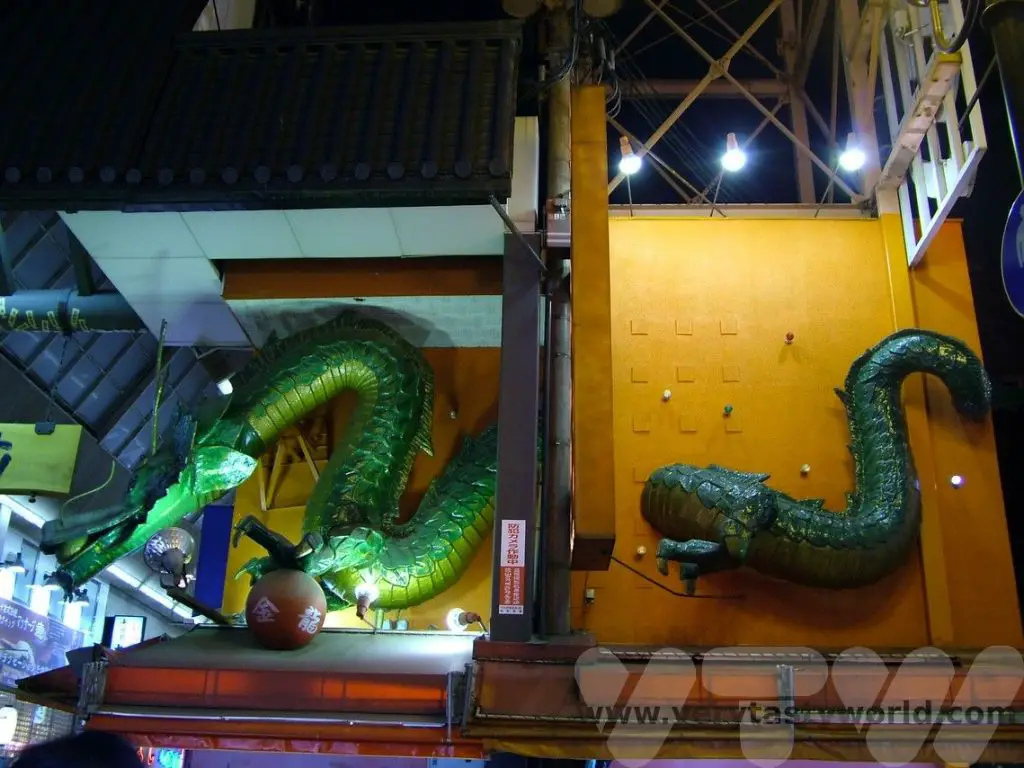
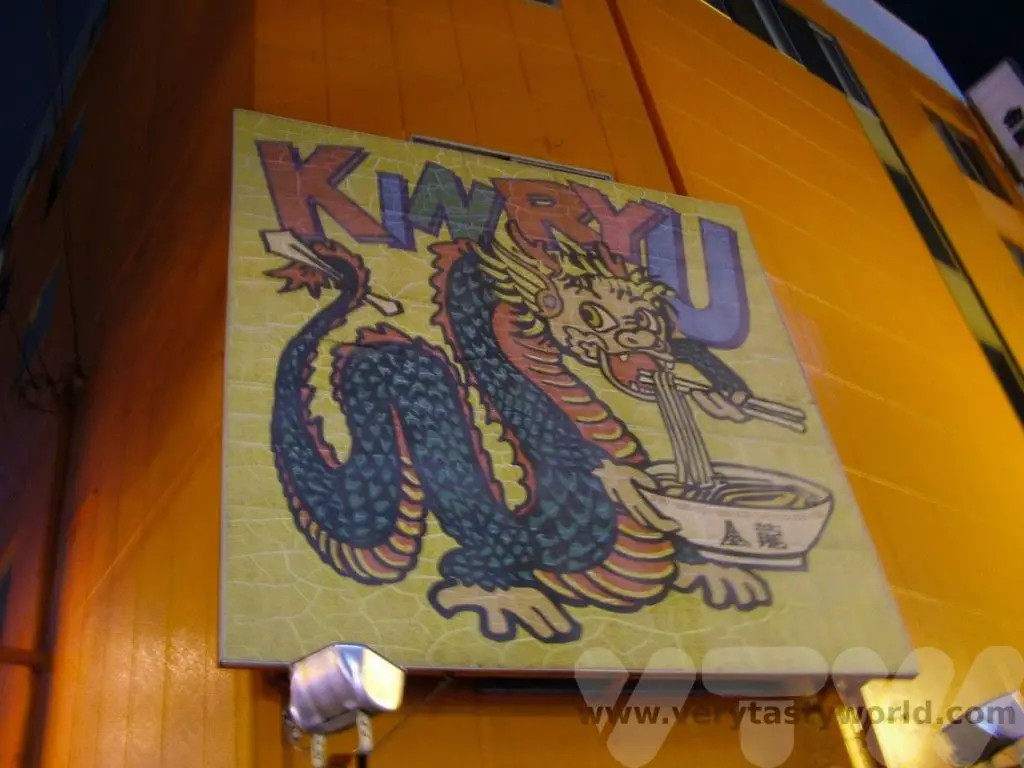
And even the standard restaurants on Dotonbori, those without the amazing neon signs, are worth checking out. One of the great things about dining in Osaka – and indeed throughout Japan – is that you don’t need to speak or read Japanese. Many restaurants will have an English, Chinese or Korean menu and those that don’t will often have a picture menu or, better, realistic models of the food in the window, usually with prices. You can take a photo of your desired dish or even take your food server outside and point to the dish you want.
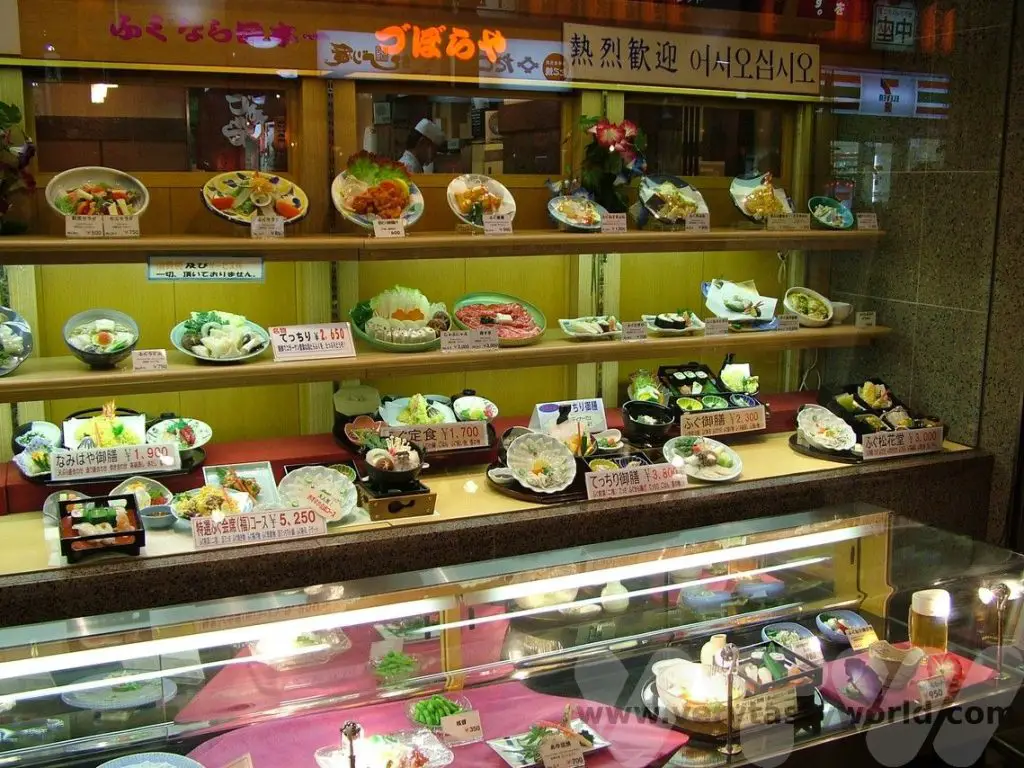
The models of the food are surprisingly realistic and many are made in Osaka. We managed to find a shop that sold them but they are hideously expensive, so we treated ourselves to a couple of sushi fridge magnets as a souvenir.
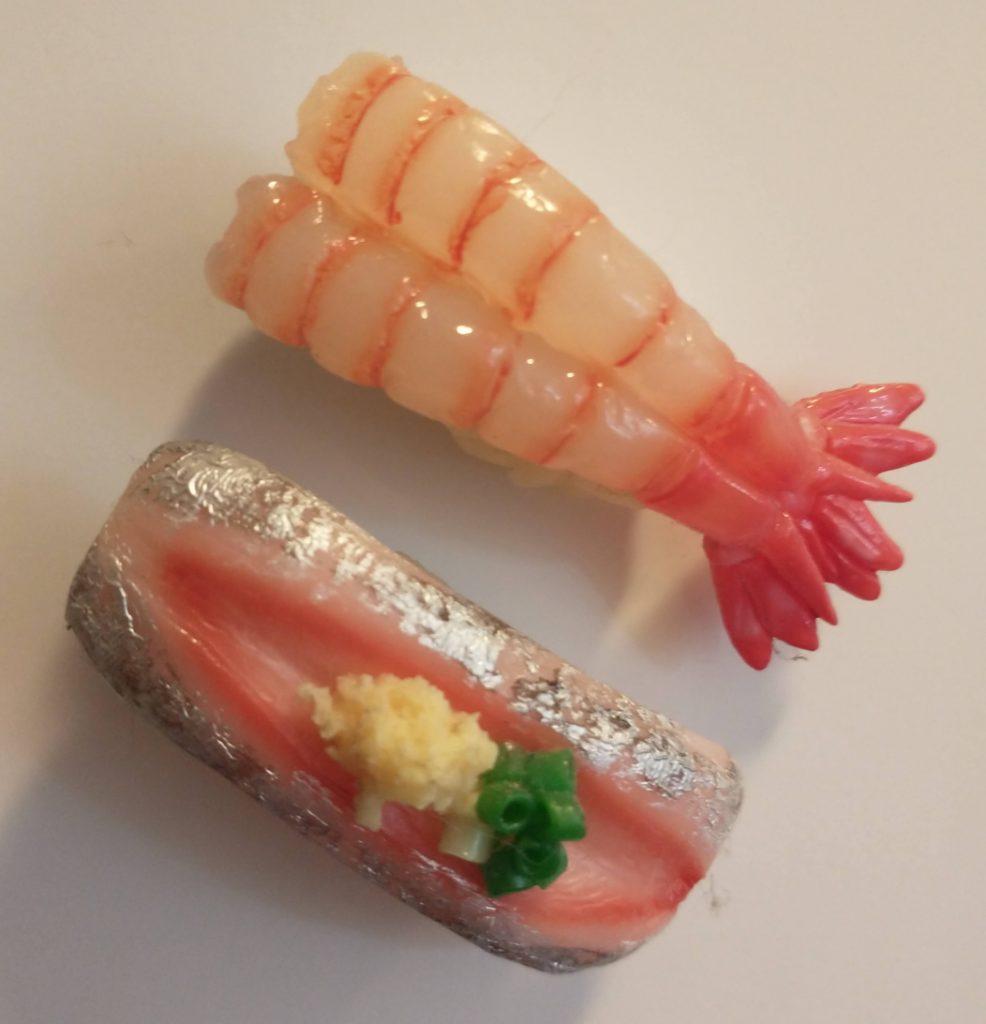
Related Posts You May Enjoy

- Recipe: Simmered Shiitake Mushrooms

- How to Use Public Transport in Japan

- RECIPE Oyakodon Donburi

- Planning a Trip to Japan
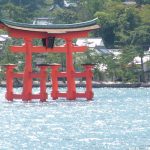
- The Makanai: Cooking for the Maiko House
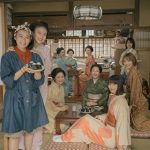
- Setsubun Food – Bean Throwing Day

- The Gassho Farmhouses of Rural Japan
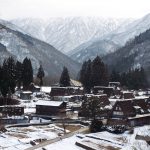
- Recipe: Japanese Simmered Pork Belly – Buta no Kakuni

- RECIPE: How to Make Umeboshi

Visit Guernsey – Art and Literature Activities
The channel island of Guernsey is the second largest in the tiny archipelago in the English Channel and the largest in the Bailiwick of Guernsey (which also includes the islands of Alderney, Sark, Herm and Jethou). It’s a fabulous place to visit, is easily accessible from the UK and has a fascinating history. If you visit Guernsey there are loads of things to do, especially if you like outdoor activities. There are lots of beautiful walks along spectacular cliff paths, and the island is perfect for spending traditional seaside time on pristine beaches.
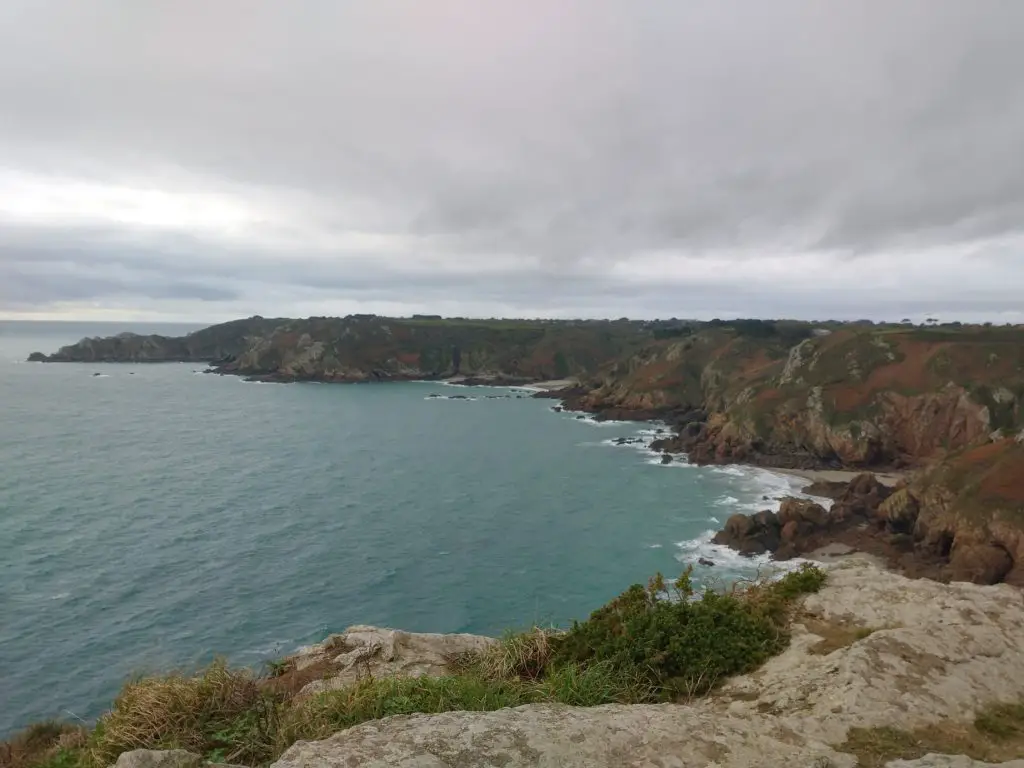
There are a bunch of museums and forts to visit and it’s definitely worth investigating day trips or short breaks to the other stunningly beautiful islands.
Guernsey also has a lot to offer if you’re interested in art and literature, and some of these activities are perfect if the weather isn’t on your side for a day at the beach.
Visit Guernsey – The Renoir Walk
The impressionist artist Pierre-Auguste Renoir visited Guernsey in 1883 and created some fifteen paintings during his stay. They were all based around the charming Moulin Huet. You can take a walk along Moulin Huet to view its beautiful bay where Art for Guernsey have cleverly set up some picture frames at five locations so that you can see the precise spot where he worked on his pictures. Each site also have a display showing a picture of the original painting so that you see how the landscape has changed over the years. Most of the frames are located close to the beach but there is one that is slightly further out and it’s a climb along the path to the cliff-top to capture the view across the bay.
There’s a small car park at the end of a narrow road and just along the path from there is a map showing where each of the frames is located.
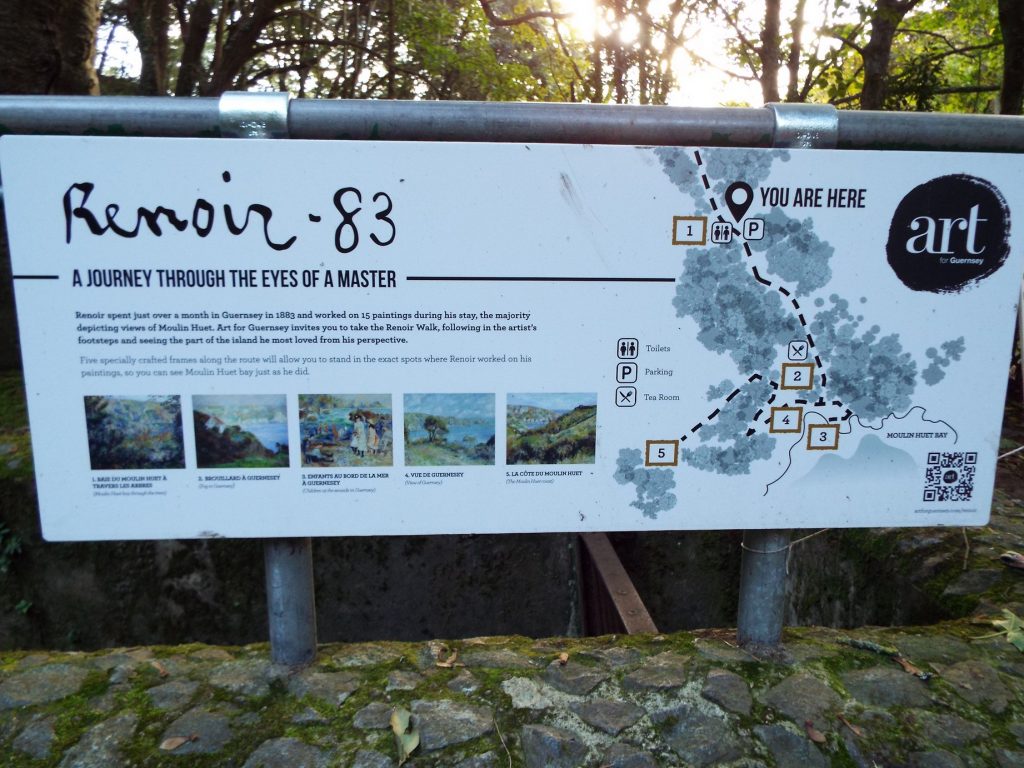
La cote du Moulin Huet.
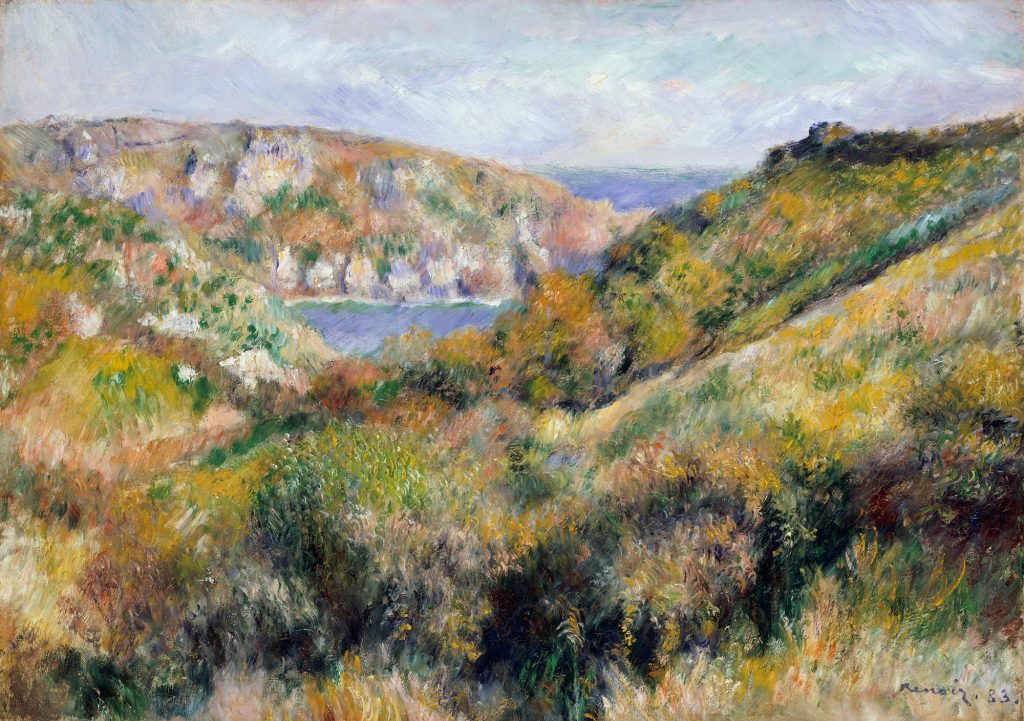
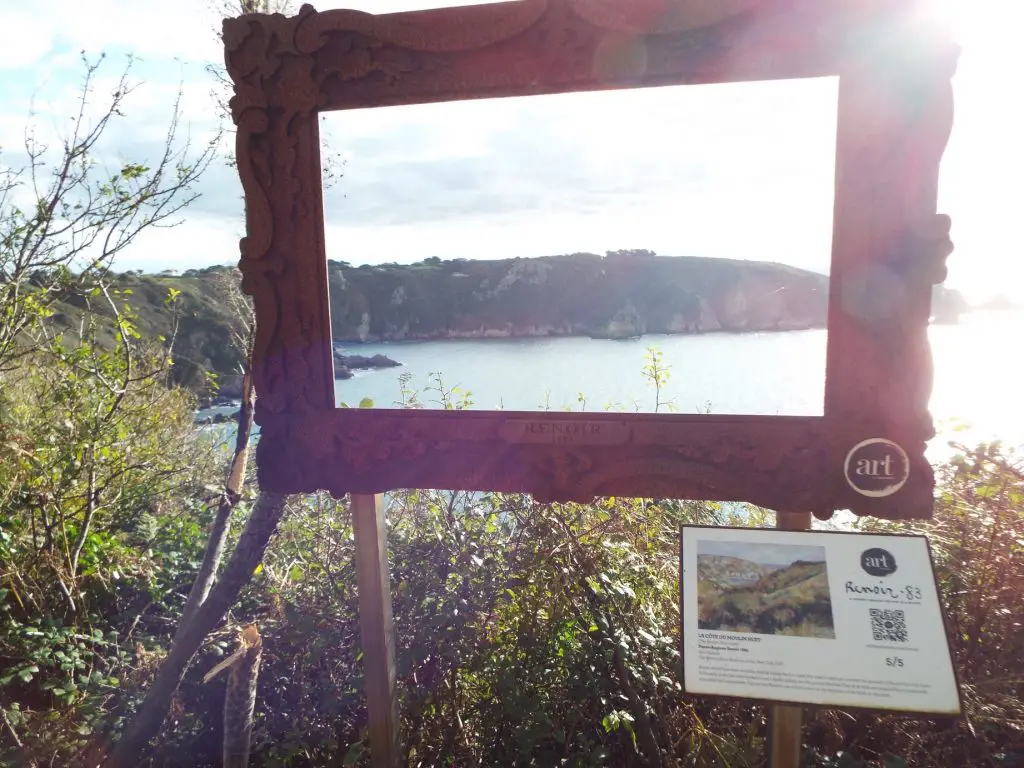
Our version of Enfants au bord de la mer à Guernsey should have been entitled Chien au bord de la mer à Guernsey as our shot was photobombed by a very friendly dog.
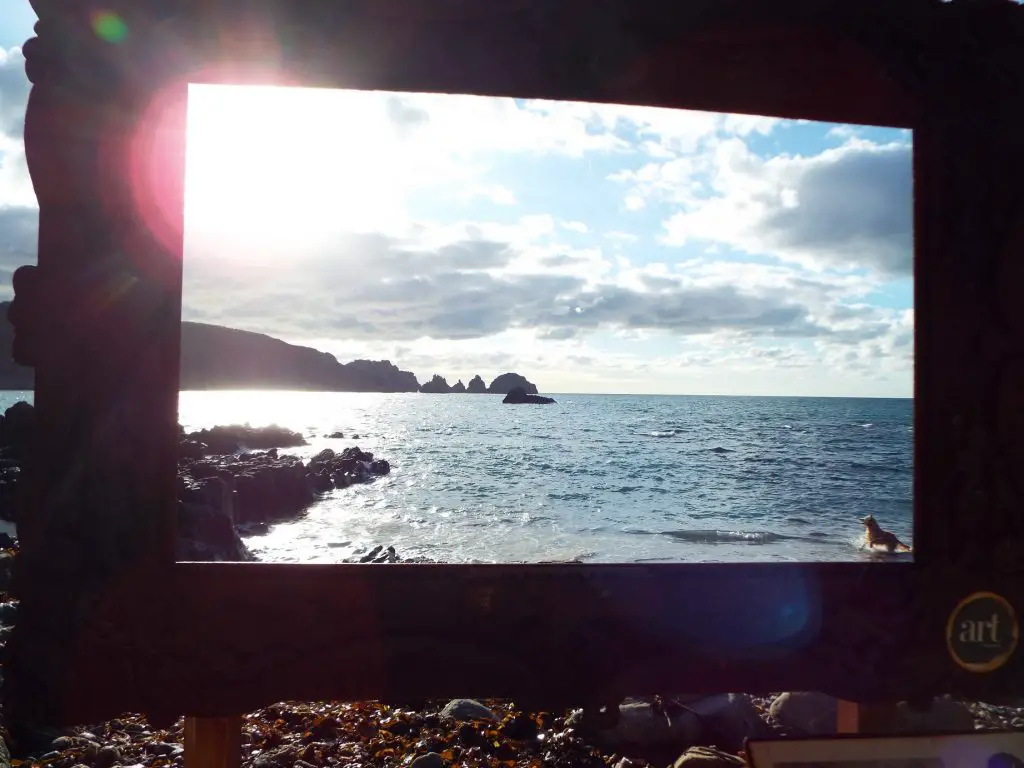
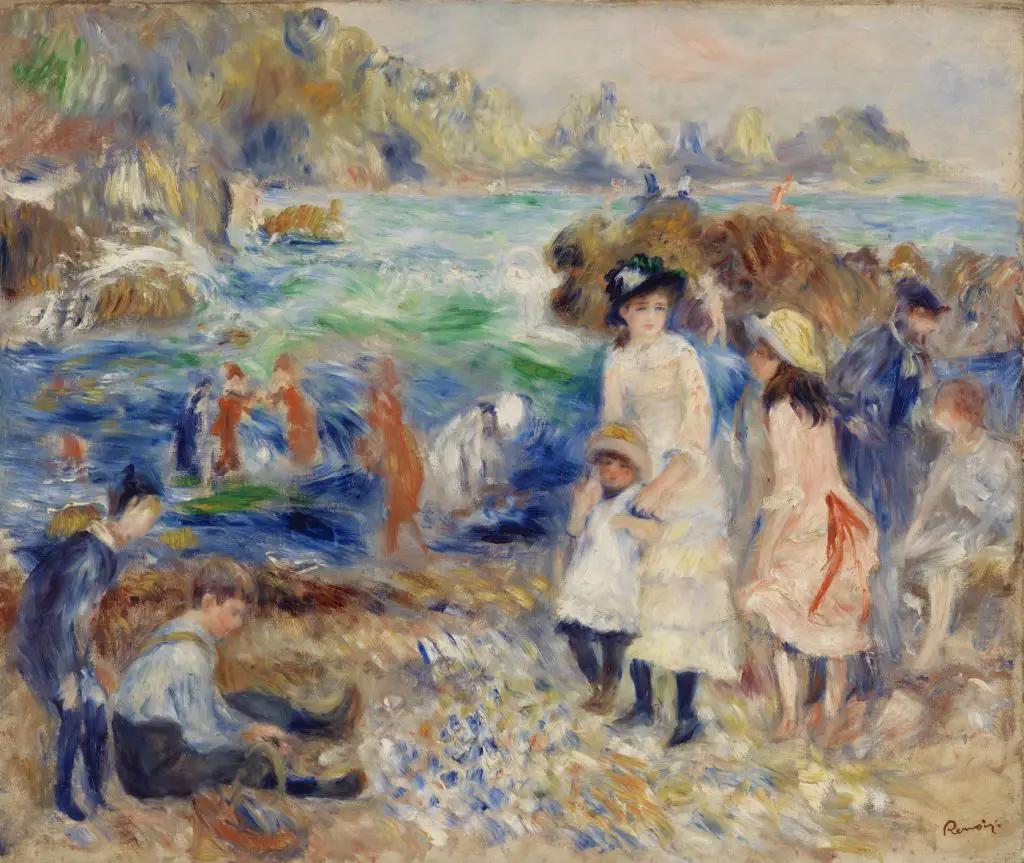
The foliage had changed over the years since Baie du Moulin Huet a travers les arbres was painted.
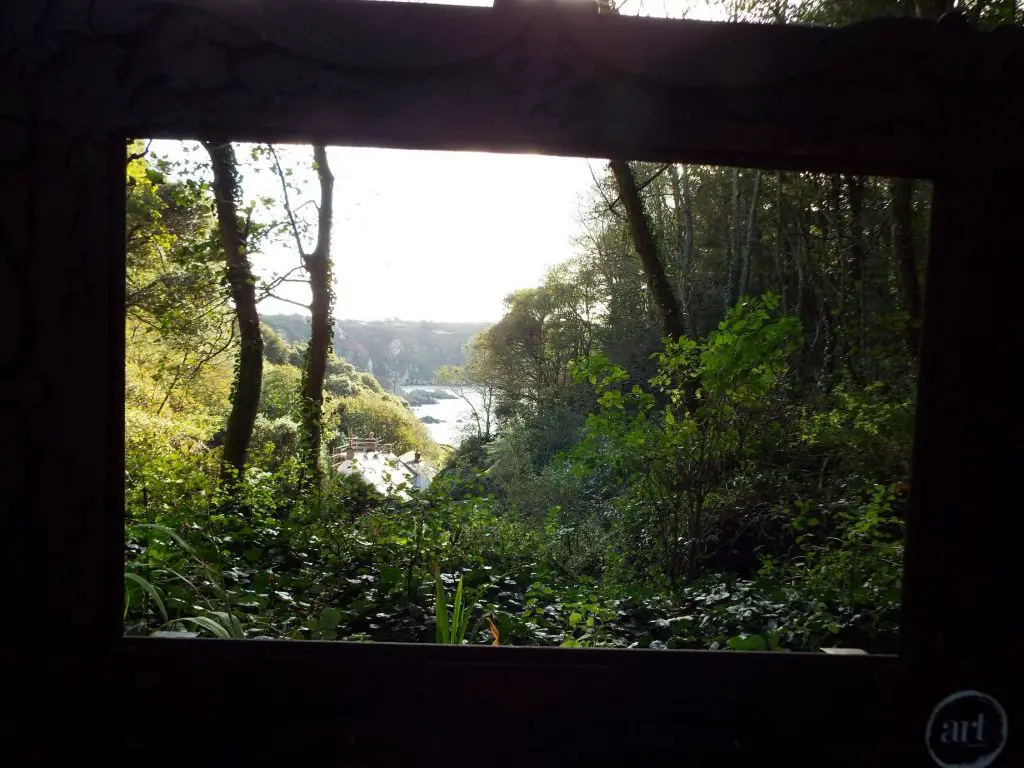
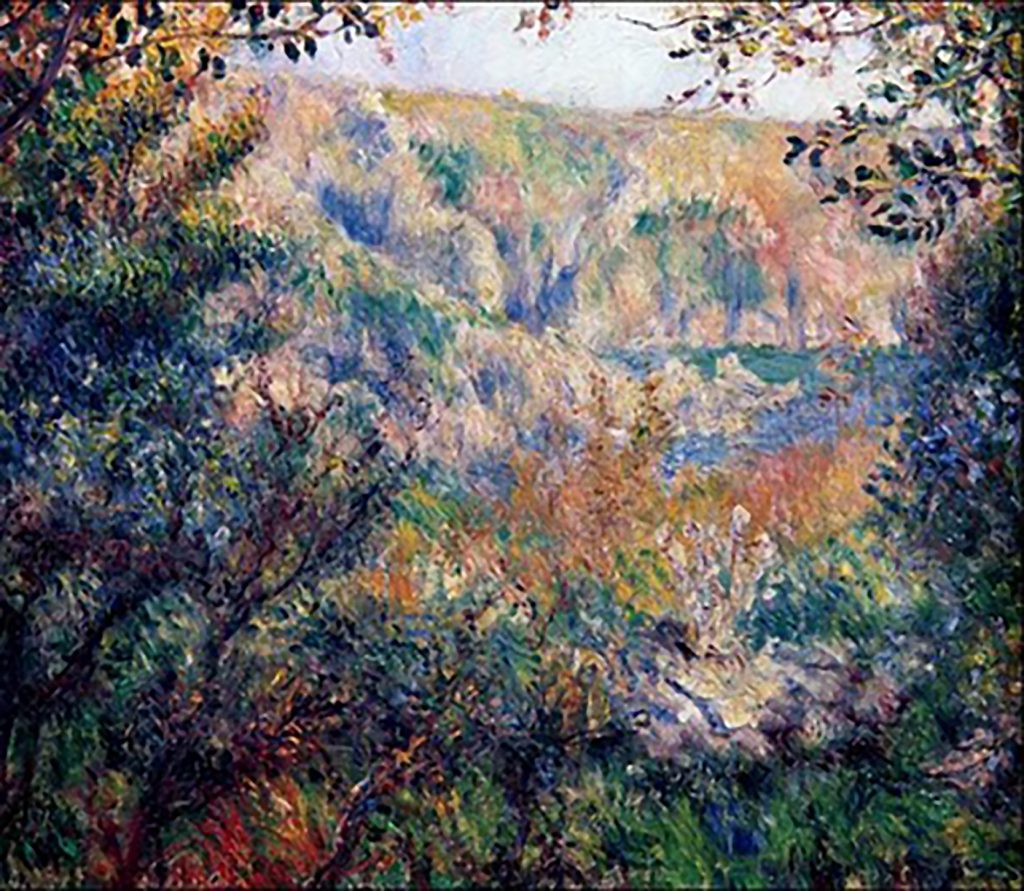
It’s a short climb and walk along the cliffs to see Vue de Guernsey.
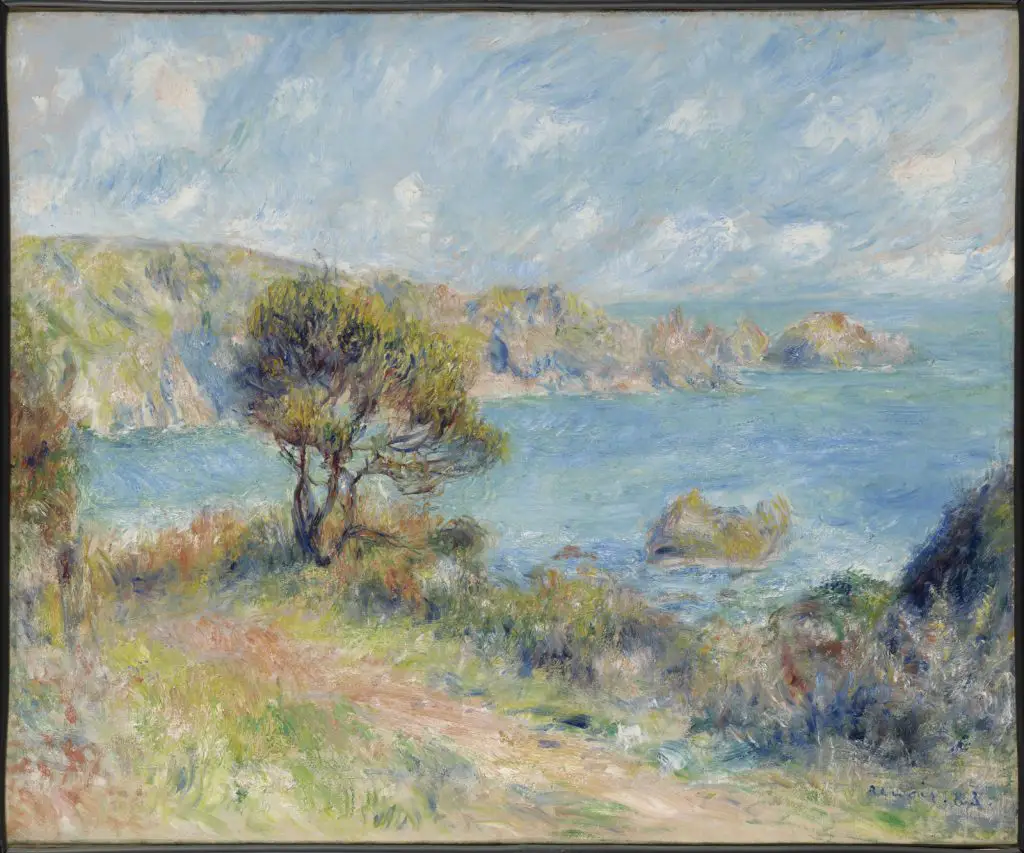
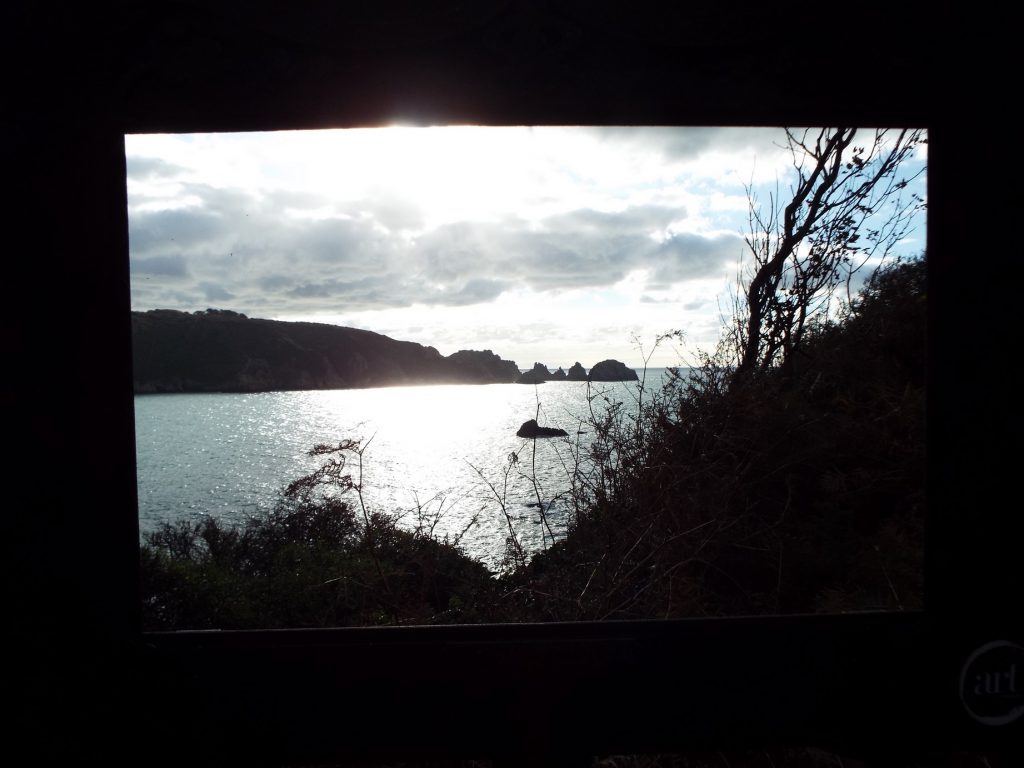
Victor Hugo’s Hauteville House
The French author Victor Hugo spent some 15 years on Guernsey from 1855 to 1870, when he decided to live in exile from his home country following Napoleon III’s coup d’etat in 1851 (Hugo lived in Belgium and Jersey before moving to Guernsey). He wrote extensively while on the island and many believe that his time there was his most productive period, indeed Les Miserables was published during his time on the island. He dedicated Les Travailleurs de la Mer to ‘the rock of hospitality and freedom.’
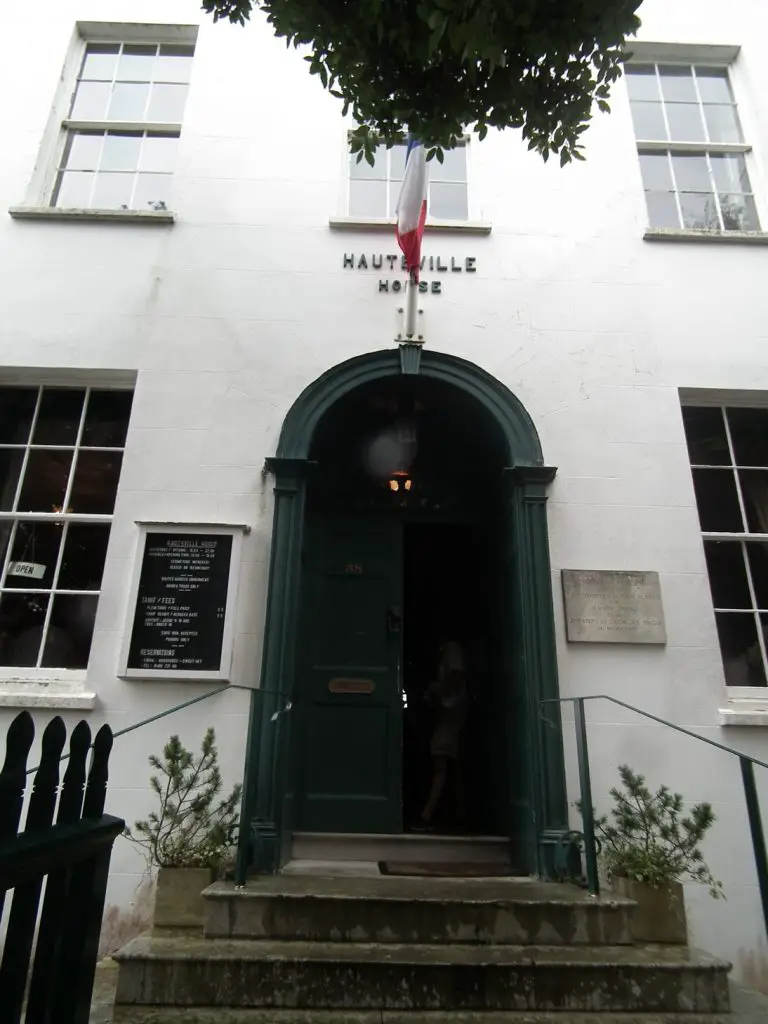
If you visit Guernsey you can tour his former residence, Hauteville House, in St Peter Port
Hauteville House offers a fascinating glimpse into his lifestyle because Hugo decorated the home himself.
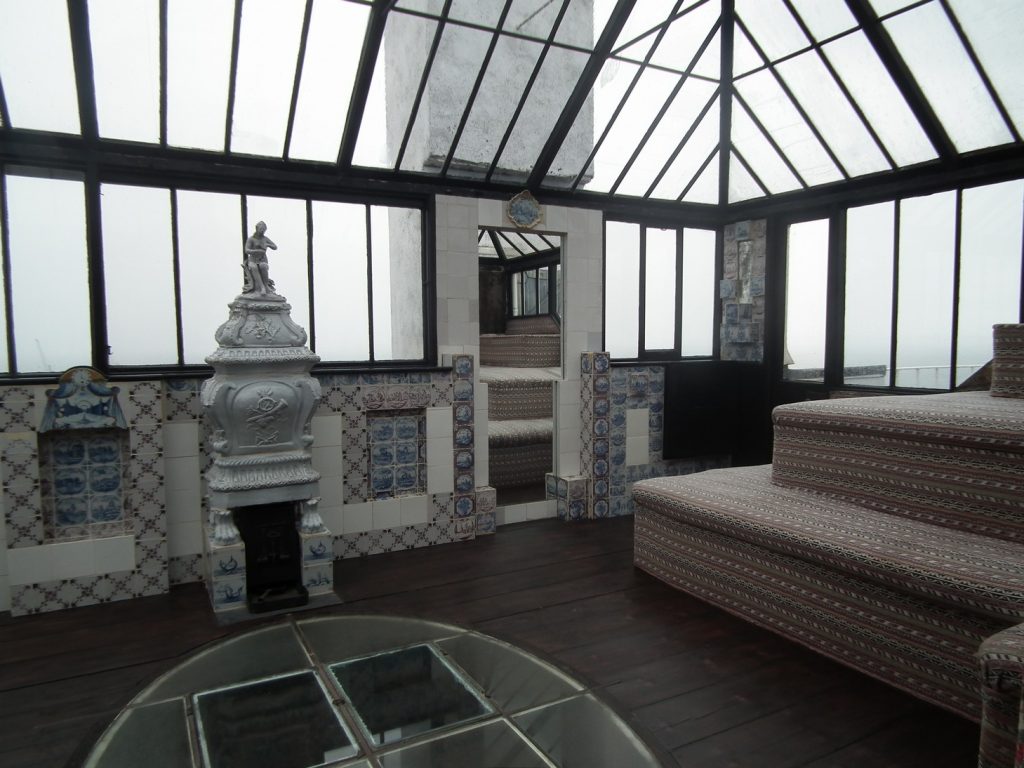
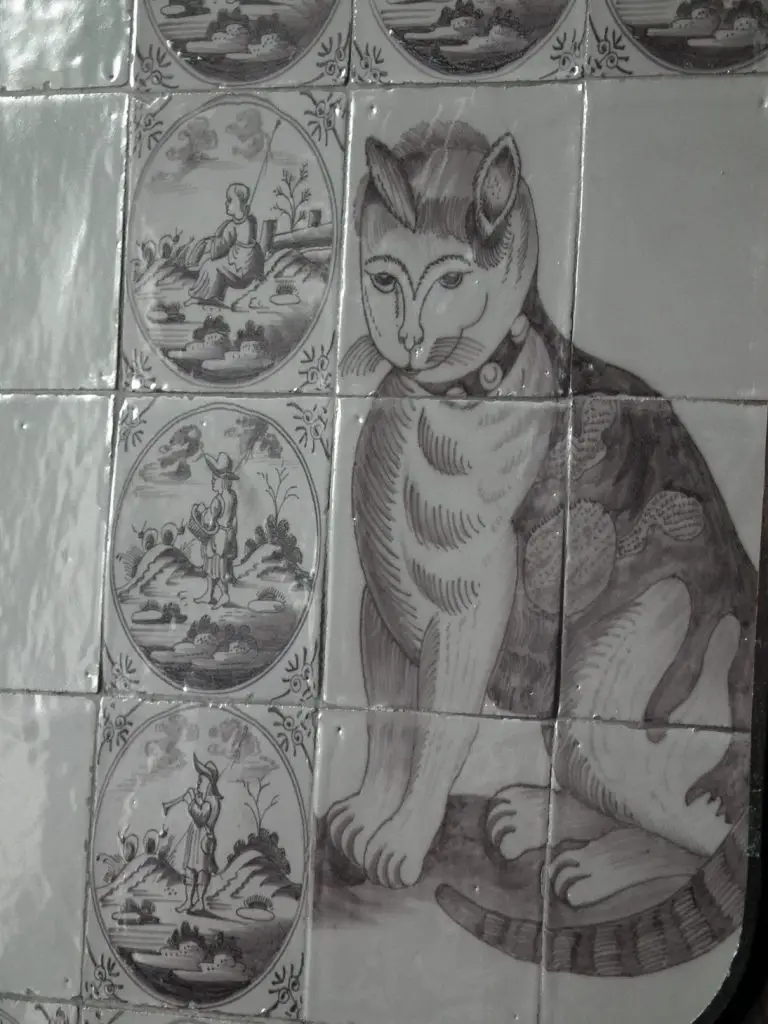
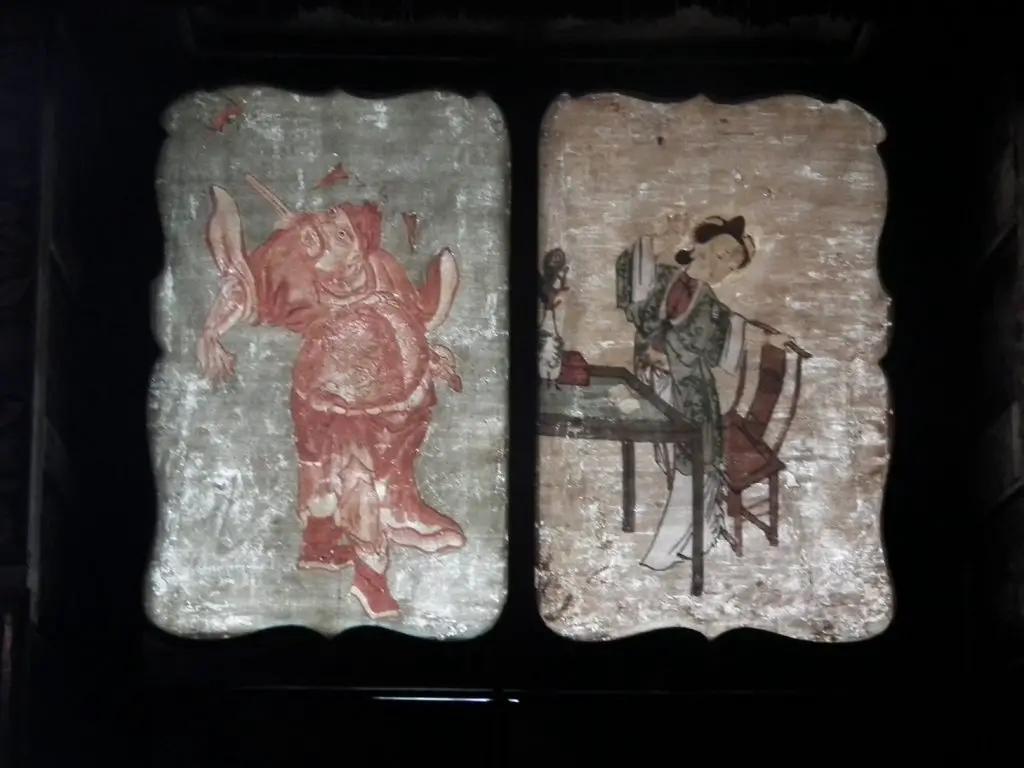
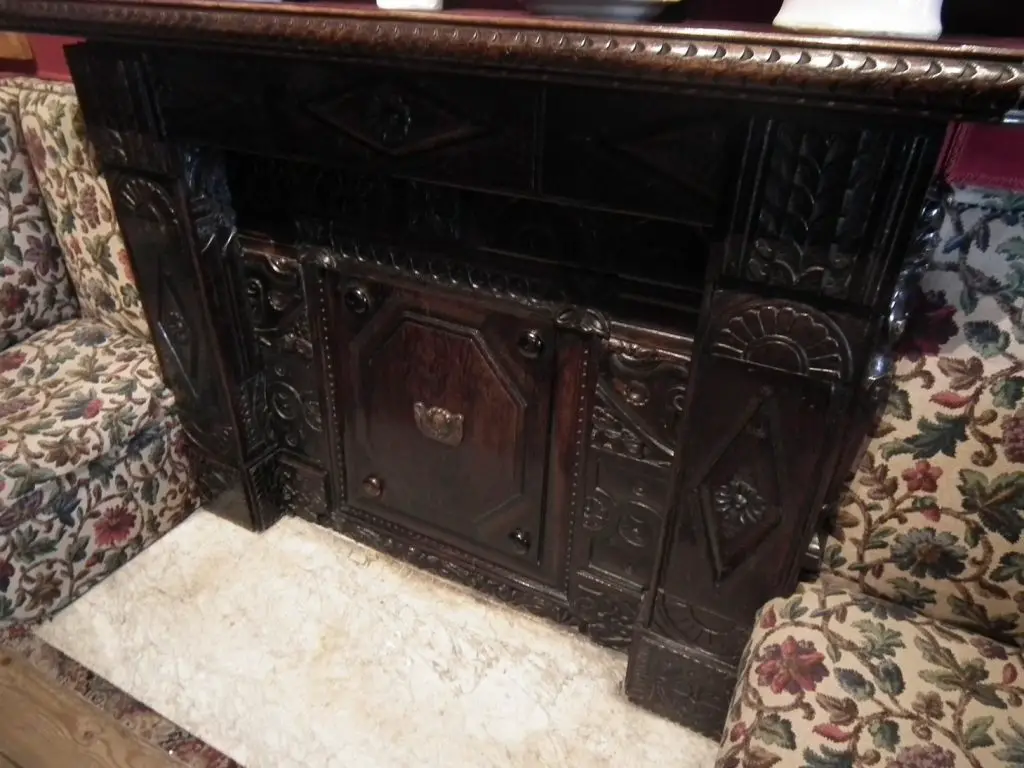
We were particularly taken with the dinner plates on the ceiling!
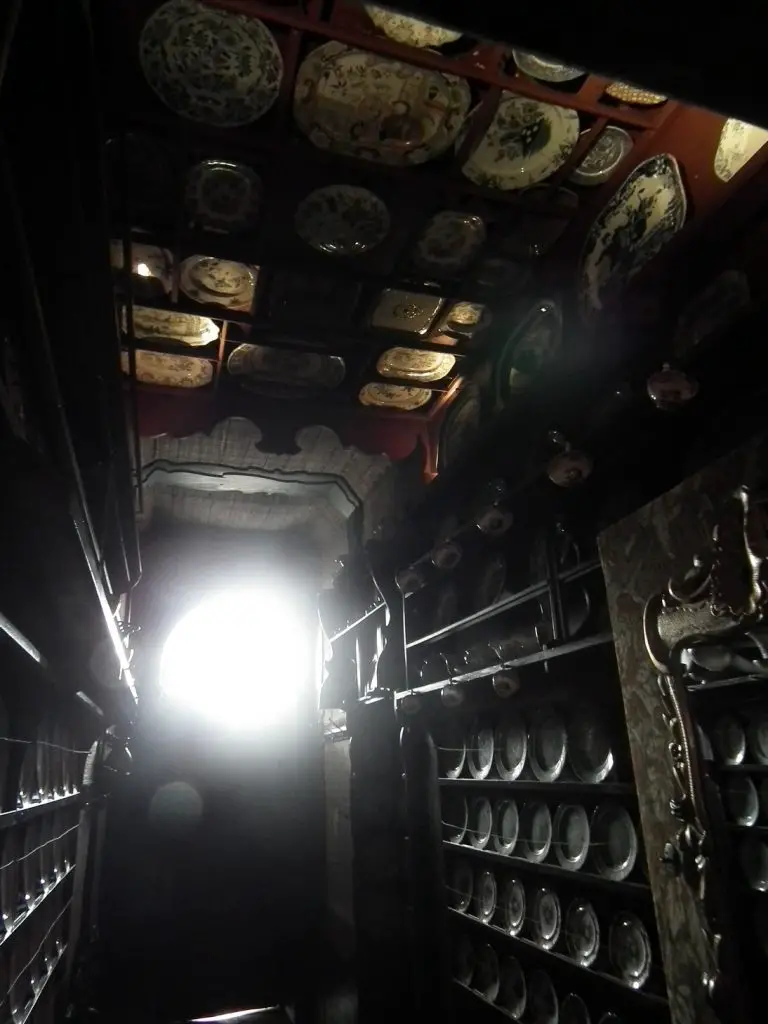
It is also possible to stroll around the garden of Hauteville House.
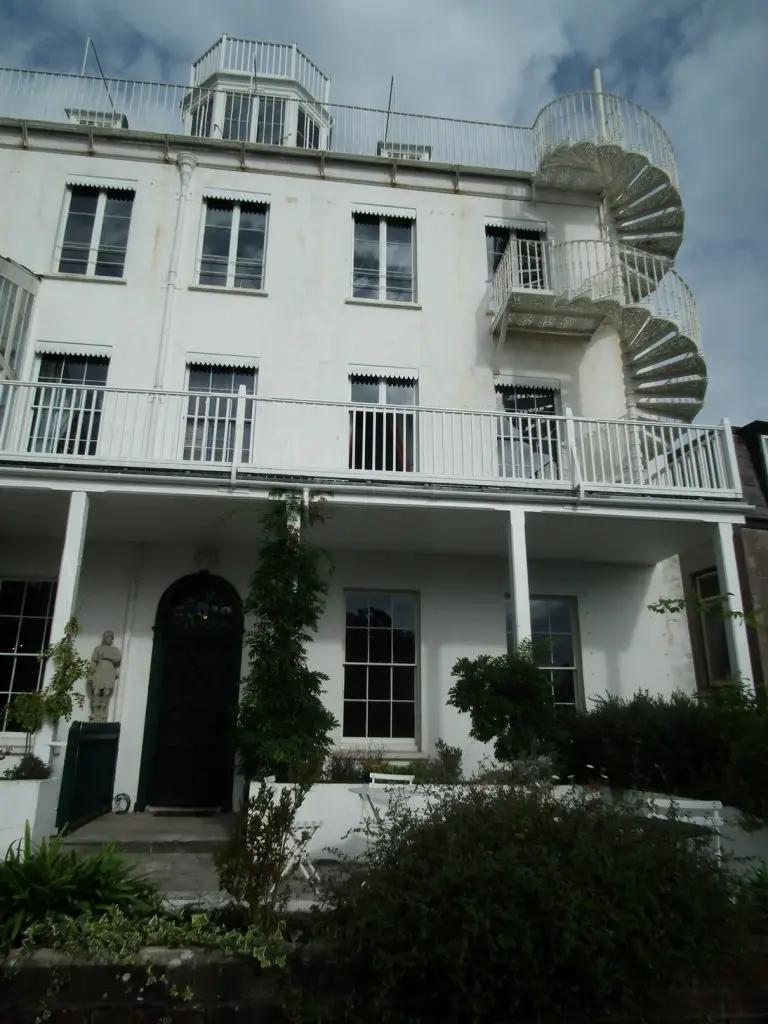
Guernsey Sculpture Park
Another artistic activity when you visit Guernsey is to walk around the sculpture park in the grounds of Sausmarez Manor. It’s located on Sausmarez Road in St Martin, a short bus ride away from St Peter Port.
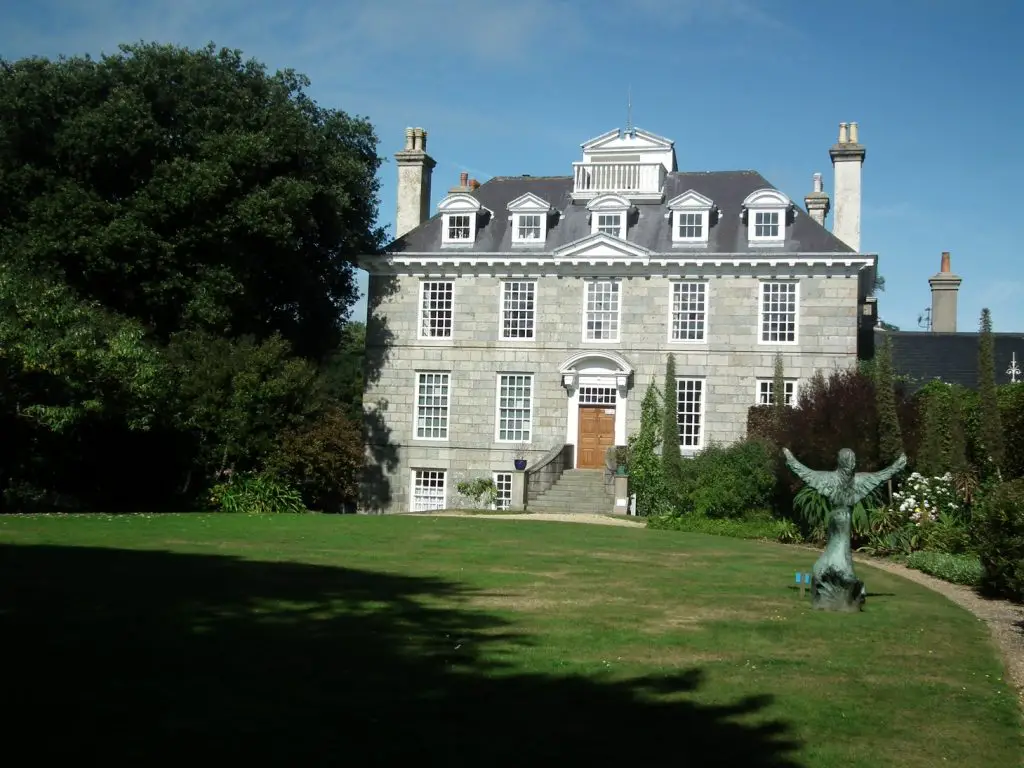
You can follow the ArtParks trail through a lovely woodland and view a couple of hundred sculptures from artists all over the world. You can even buy some of the sculptures if any take your fancy.
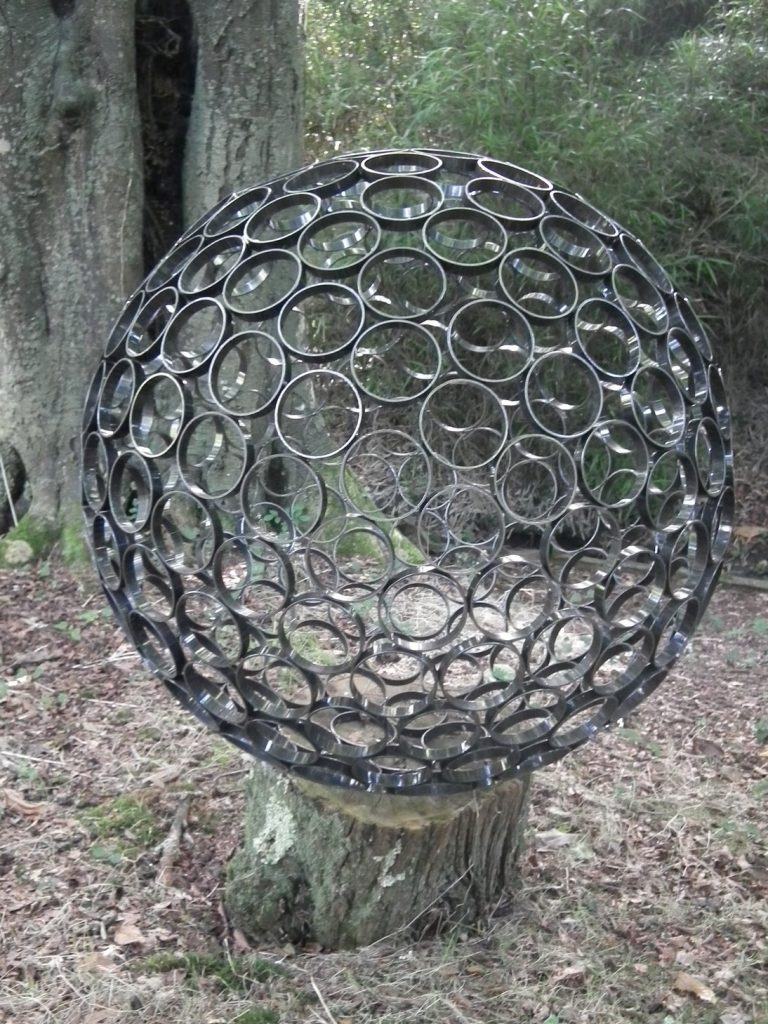
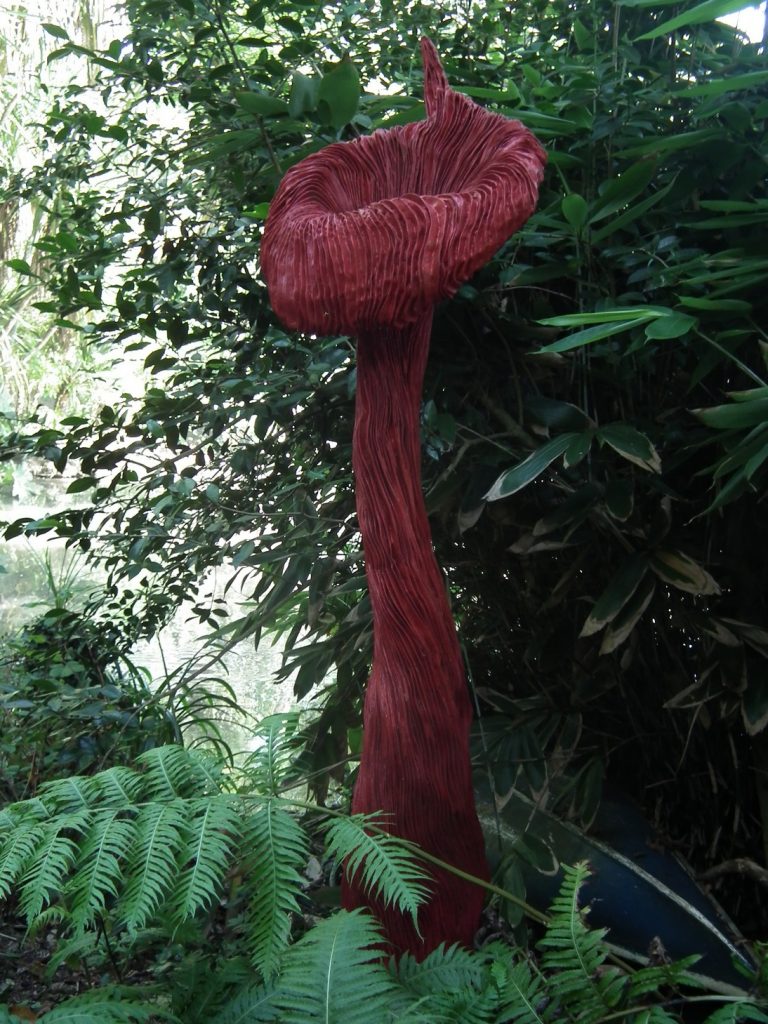
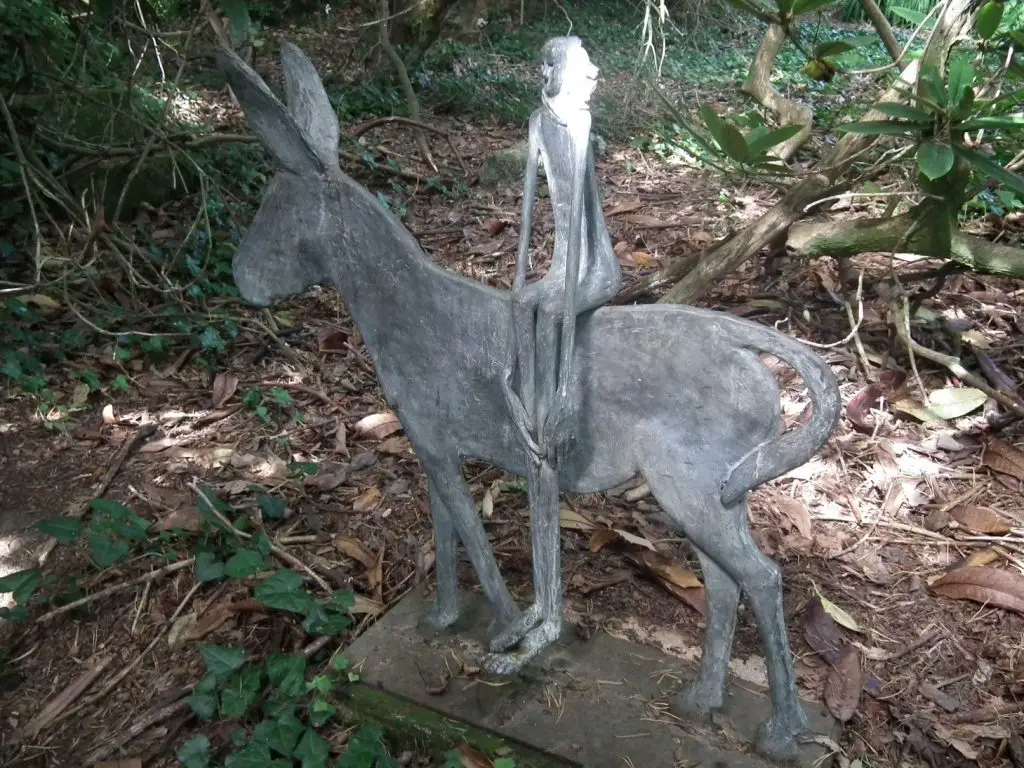
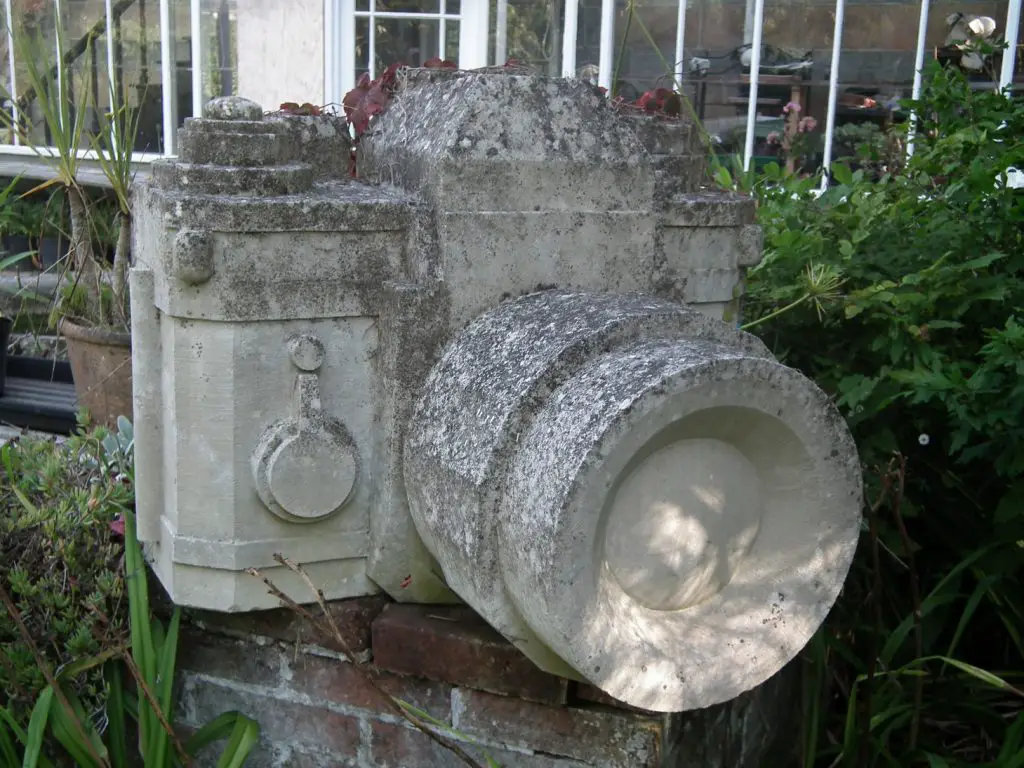
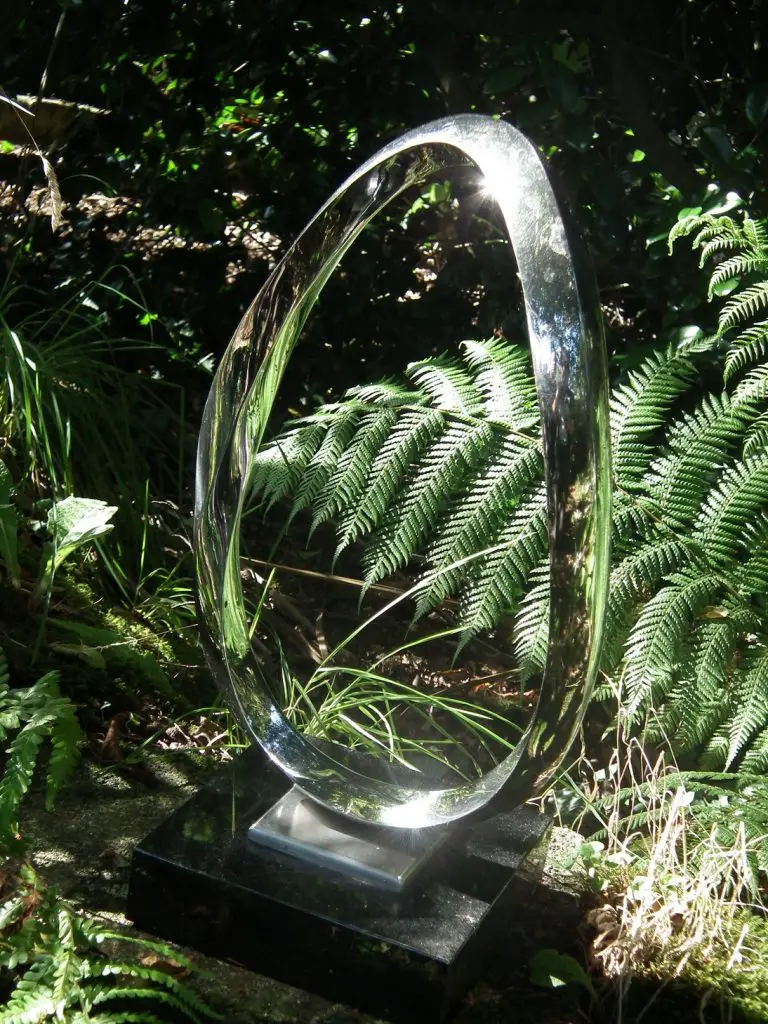
Visit Guernsey – The Candie Art Gallery
The Candie Art Gallery is small but perfectly formed. It has a statue of a striding Victor Hugo in the gardens.
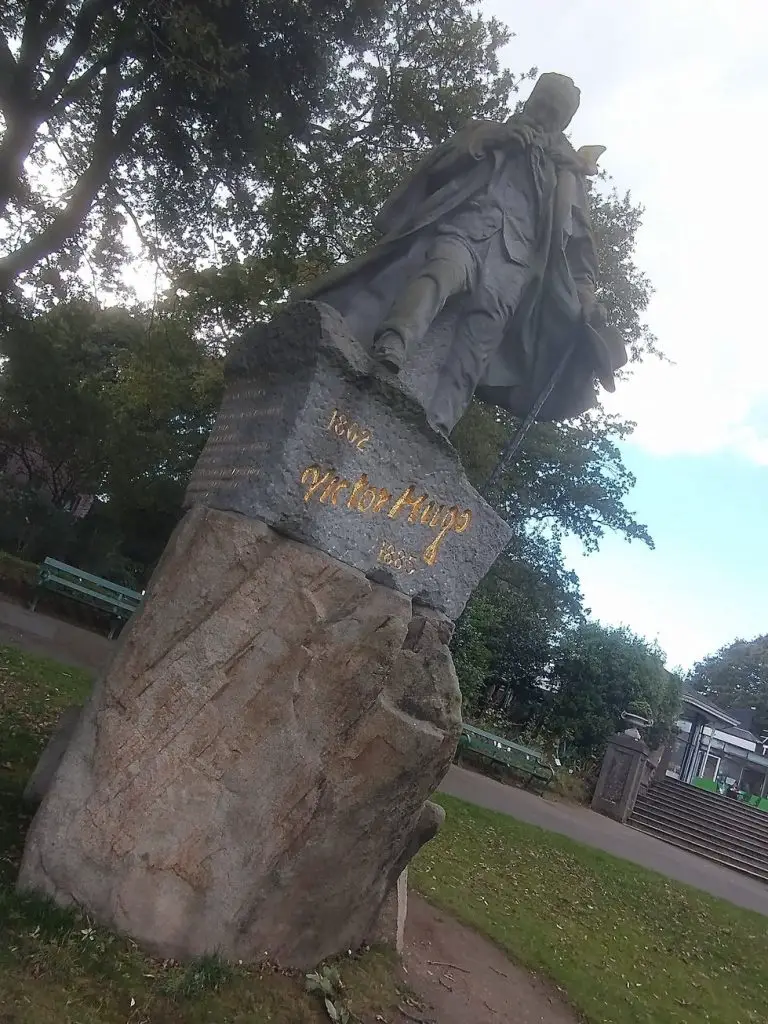
The gallery is part of a wider arts and museum complex, which also includes exhibitions on the island’s history and a highly interactive folklore exhibit which features a recreation of an early 19th century Guernsey cottage (complete with appropriately creepy mannequins) and stories of local legends. Some of the stories are fascinating.
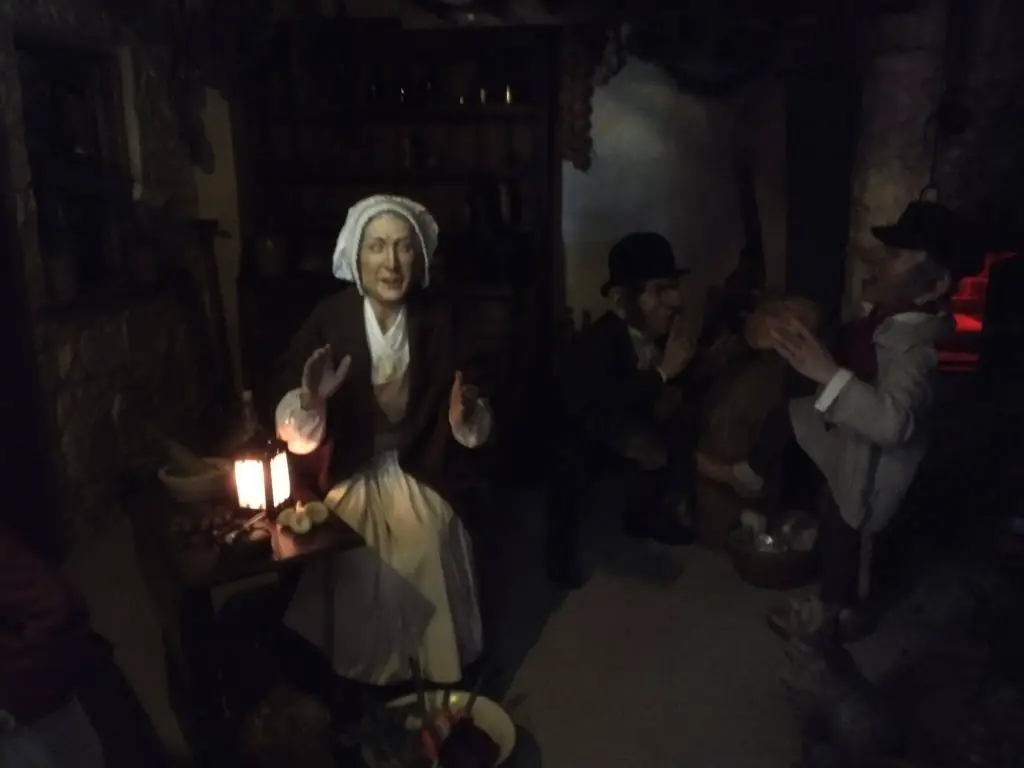
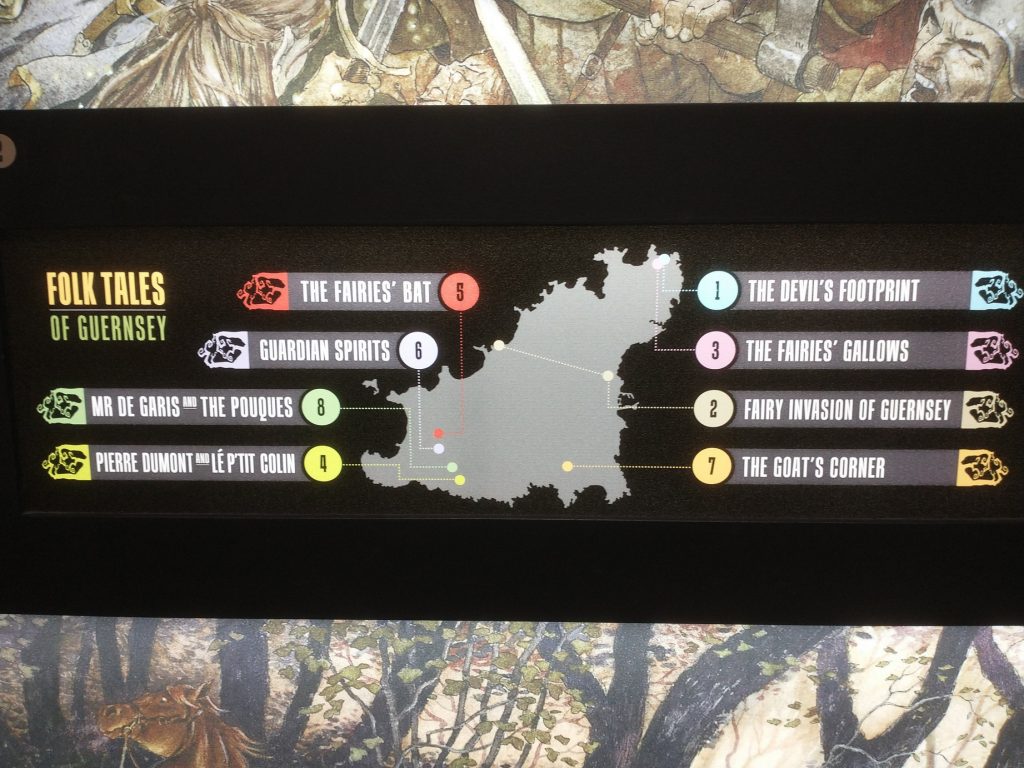
There is also a permanent exhibition art space.
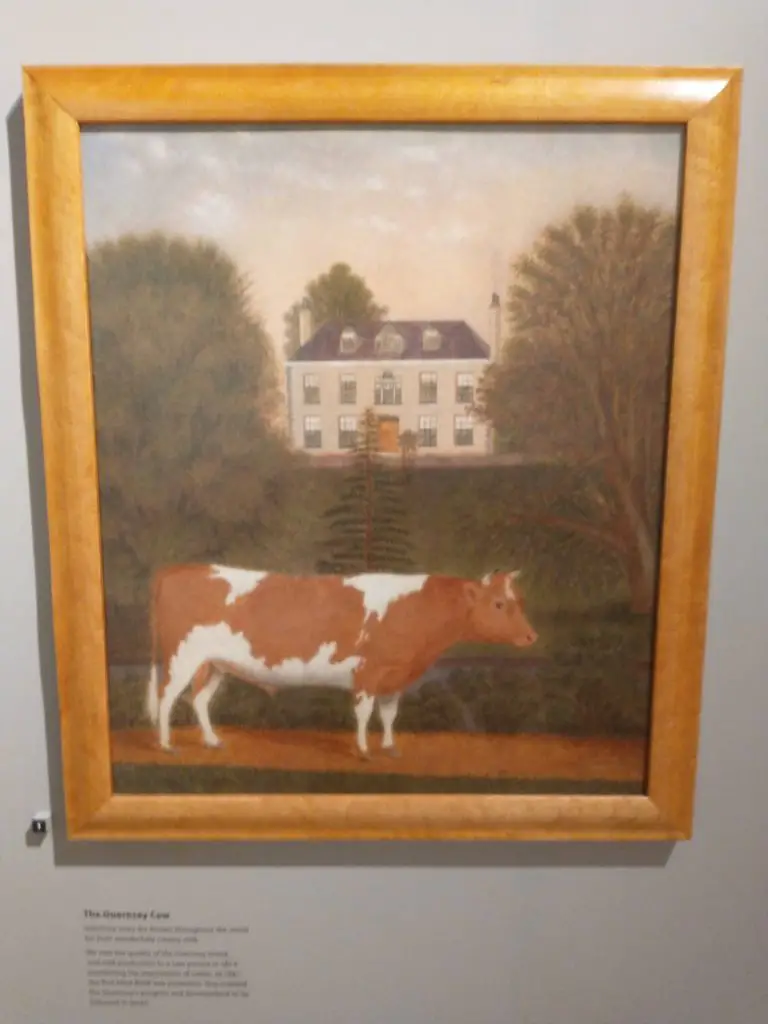
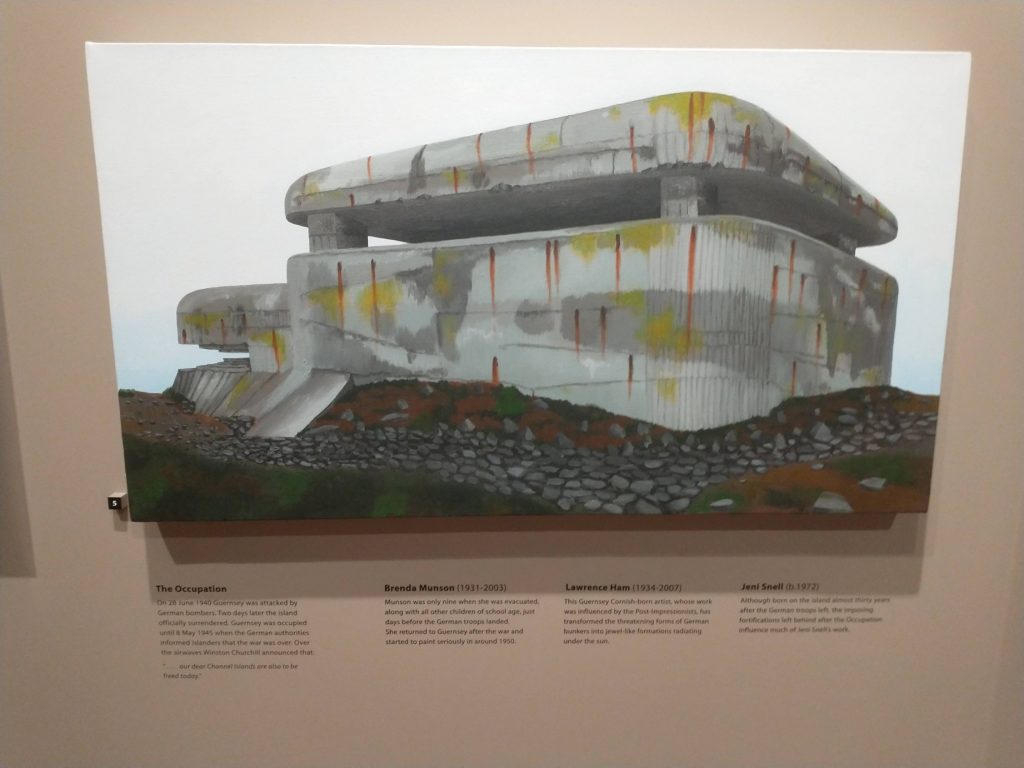
The teeny gallery presents a number of paintings depicting the Bailiwick in chronological order as you circle the exhibition space.
It also hosts some temporary exhibits and there were a couple of very famous names on display when we visited in 2018 – including a Damien Hirst and Yayoi Kusama.
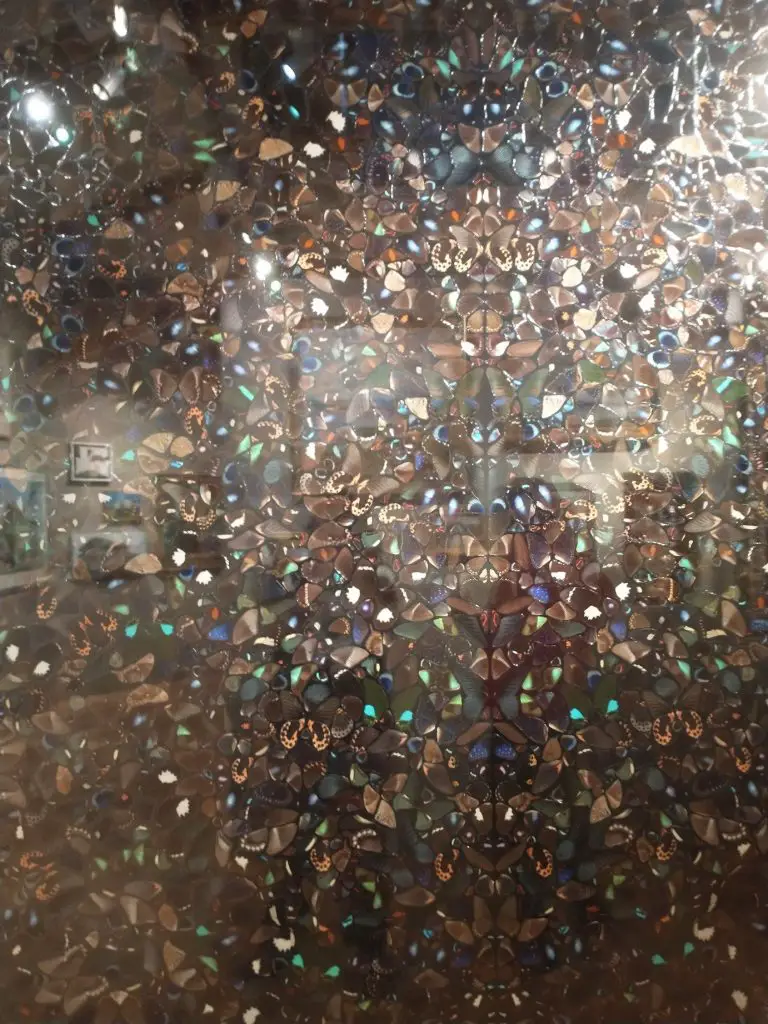
Saumarez Park has a fascinating National Trust Folk & Costume Museum which features a number of exhibits from Guernsey’s history. And there are a number of art galleries on the island, including the Coach House Gallery in St Pierre du Bois as well as Iris And Dora in Ruettes Brayes, St Peter Port. St James The Less, a 200 year-old former church in College Street, St Peter Port, also has a variety of cultural events on offer, including visual art exhibitions and musical performances.
Potato Peel? In a Pie? Literary Guernsey
The Guernsey Literary and Potato Peel Pie Society is a 2008 bestselling novel that was adapted into a film directed by Mike Newell in 2018. It is a historic drama set during the occupation of the Channel Islands in World War 2. It is possible to go on a tour to see some of the locations mentioned in the book. And if you are interested in the history of the occupation there is the German Occupation Museum which is located close to the island’s airport.
Guernsey also has a Literary Festival, this year running from 11th May to 26th June. It offers plenty of events running throughout the duration of the festival, with lots of guest authors visiting the island to give talks, as well as a writing competition for students in the Bailiwick.
Visit Guernsey – The Art of Dining
Guernsey also has a fantastic food scene. While there are great restaurants all over the island, the pretty capital St Peter Port has a plethora of excellent eateries.
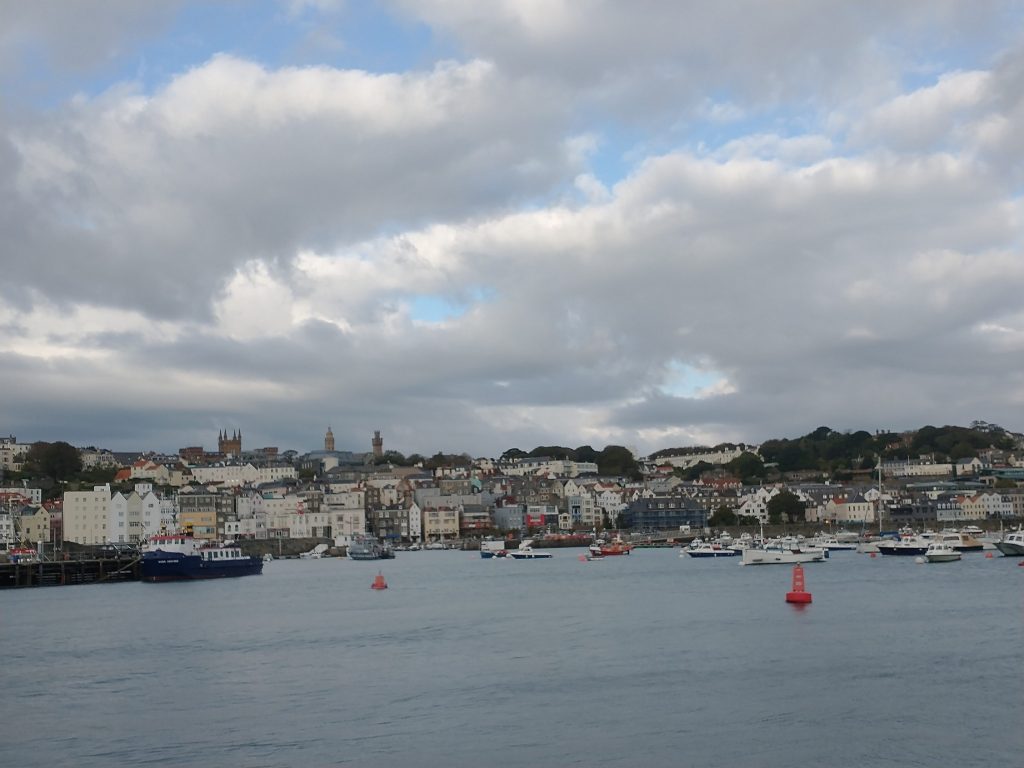
Every October the island has a Tennerfest whereby restaurants, hotels, pubs and cafés will put on a special fixed priced menu and offer people the chance to eat out for a much cheaper price than normal. Make sure you to get a reservation, though, the event is really popular and the best emporia will be fully booked. Being an island, the seafood is superb.
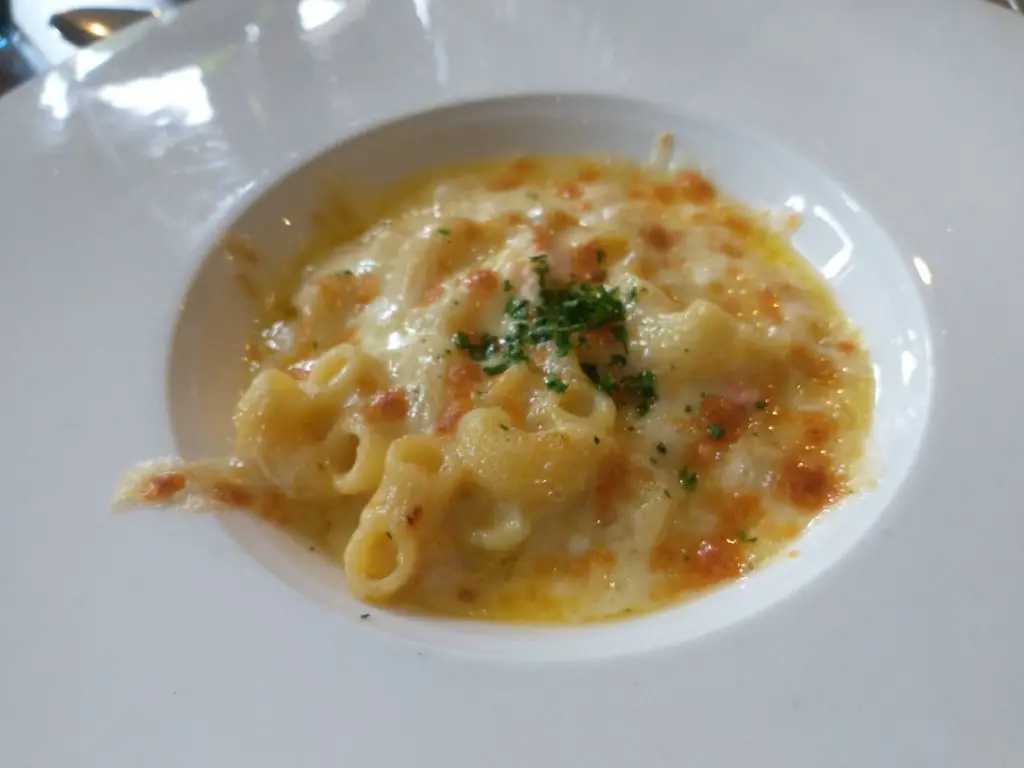
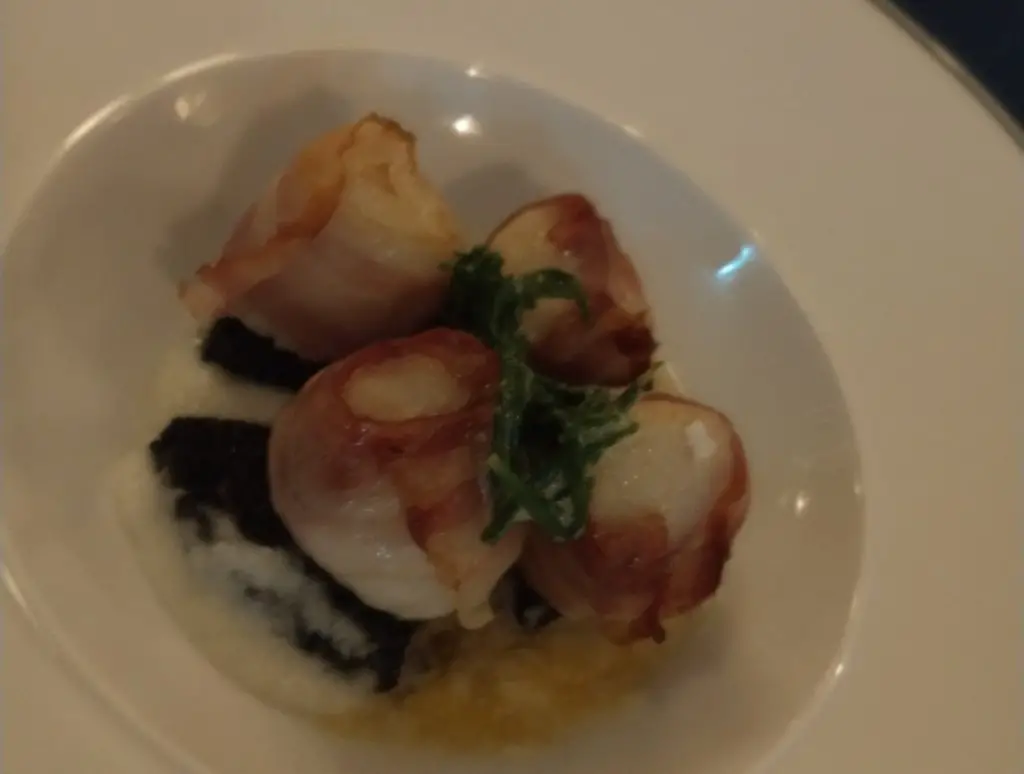
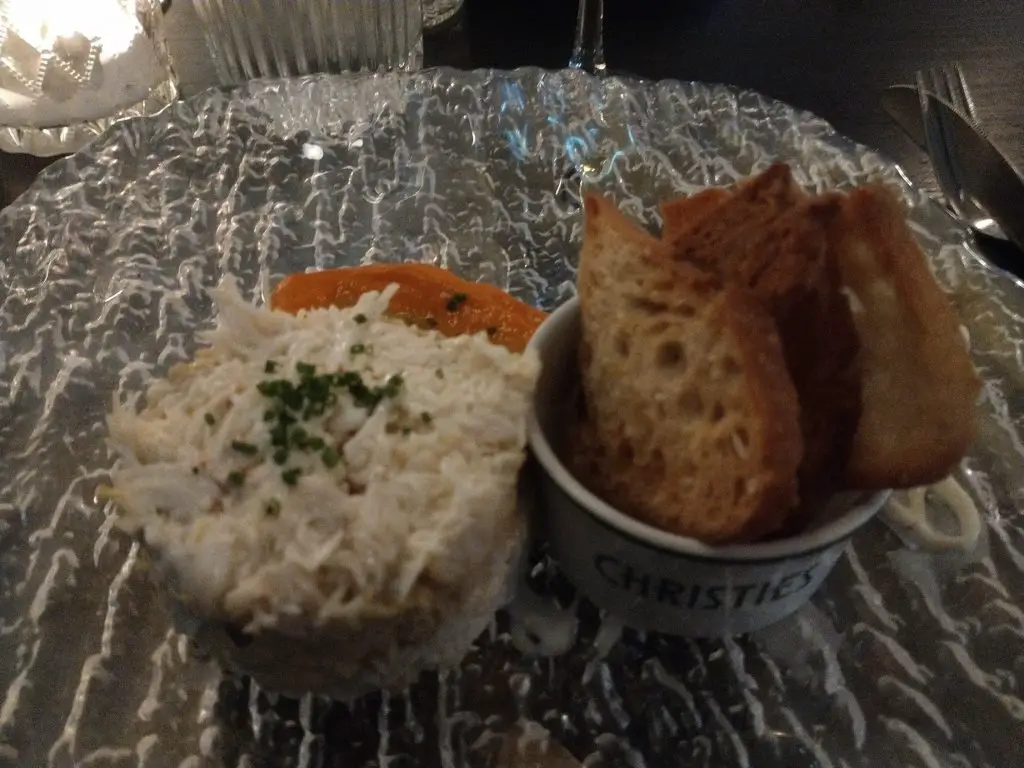
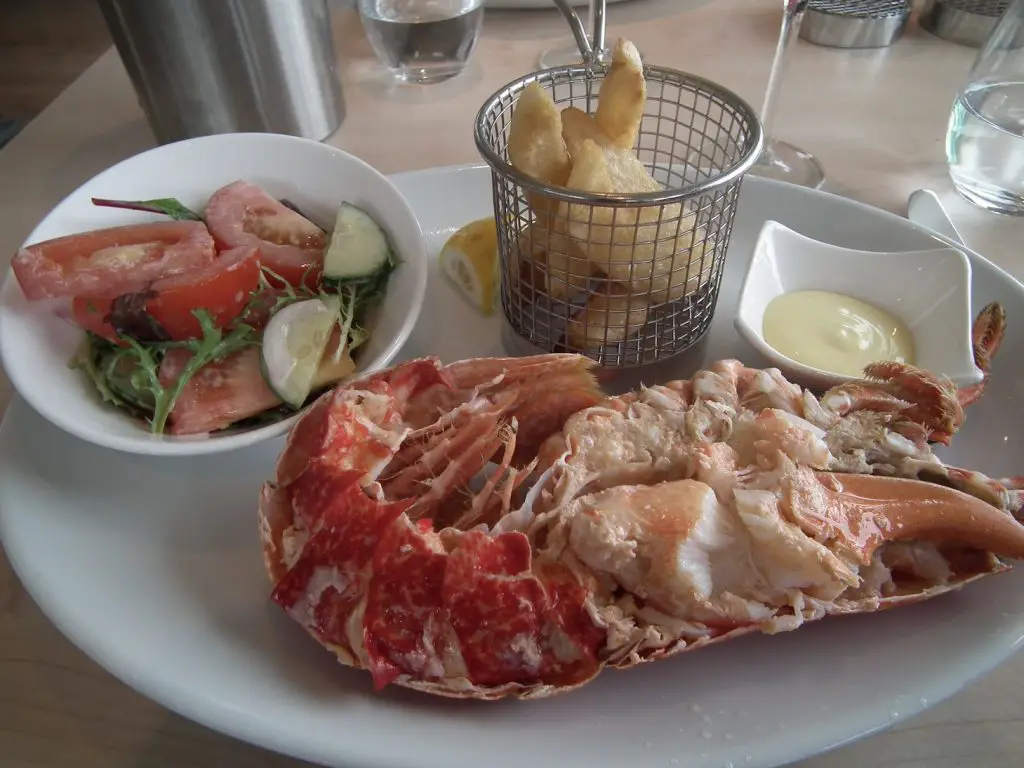
Related Posts You May Enjoy

RECIPE: Japanese Fried Chicken Karaage
Fried chicken is one of life’s great pleasures. And Japanese fried chicken karaage is no exception. In Japan, it is a tradition to eat fried chicken from KFC on Christmas Day before the traditional new year celebrations commence. However, we feel that JFC offers far superior fried chicken.
Always use chicken thigh meat. It has so much more flavour than breast meat and is guaranteed to be juicier and more succulent.
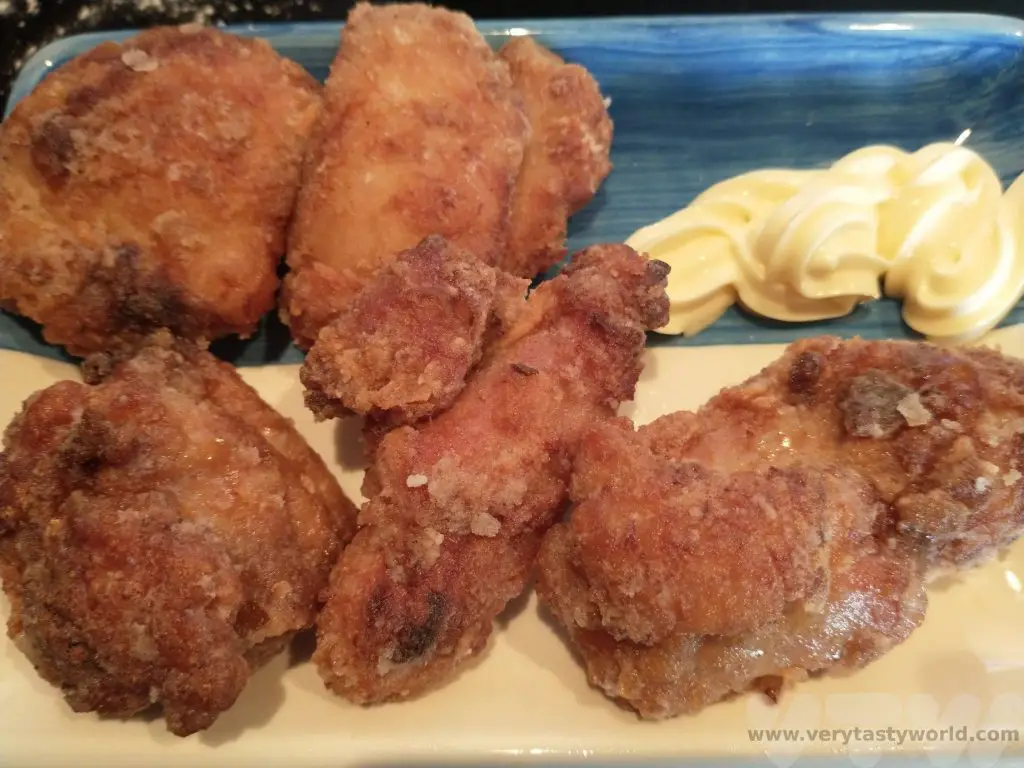
Making karaage isn’t difficult but it also isn’t a quick process. However the results are definitely worth taking the time to make the dish. The chicken absolutely needs to be marinated – this adds so much flavour. The word karaage refers to the cooking technique, that is frying the food in oil. You don’t need equipment such as a deep fat fryer – a frying pan will be just fine.
Recipe for Japanese fried chicken karaage:
Ingredients
Serves 4
800g boneless chicken thigh (skin-on is fine), each thigh cut into 4 pieces
For the marinade
4 tbs soy sauce
1 tbs mirin (if you can’t get this, add a little more sake/wine and a tsp of sugar)
1 tbs cooking sake (or white wine if you can’t get that)
1 inch of ginger (finely grated)
1-2 cloves of garlic (finely grated) depending on how garlicky you like your food
For the coating
Potato starch. If you can’t get this, fine rice flour or even cornflour will be fine. (Icing sugar would not!) We didn’t have quite enough potato starch so mixed in a little rice flour. About a cup’s worth (275ml) – as much as you need to coat all the chicken.
For the cooking
Vegetable oil (enough to get about 1 cm depth of oil in your pan)
Method
Place the chicken thigh pieces in a bowl and add the soy sauce, mirin, sake, ginger and garlic. Mix well and leave to marinate for at least an hour.
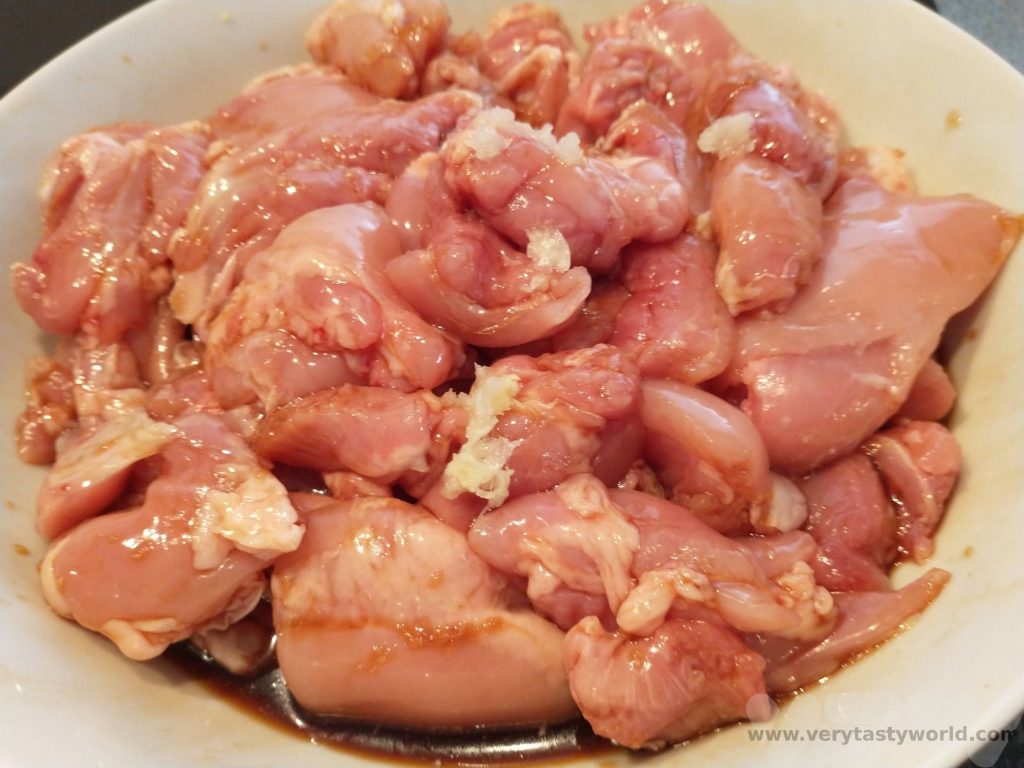
Pour the oil into a frying pan until it’s about 1 cm deep. Heat up. The oil will be hot enough when you put a little flour into it and it sizzles.
When the chicken has had a chance to acquire those lovely flavours pour the potato starch into a bowl.
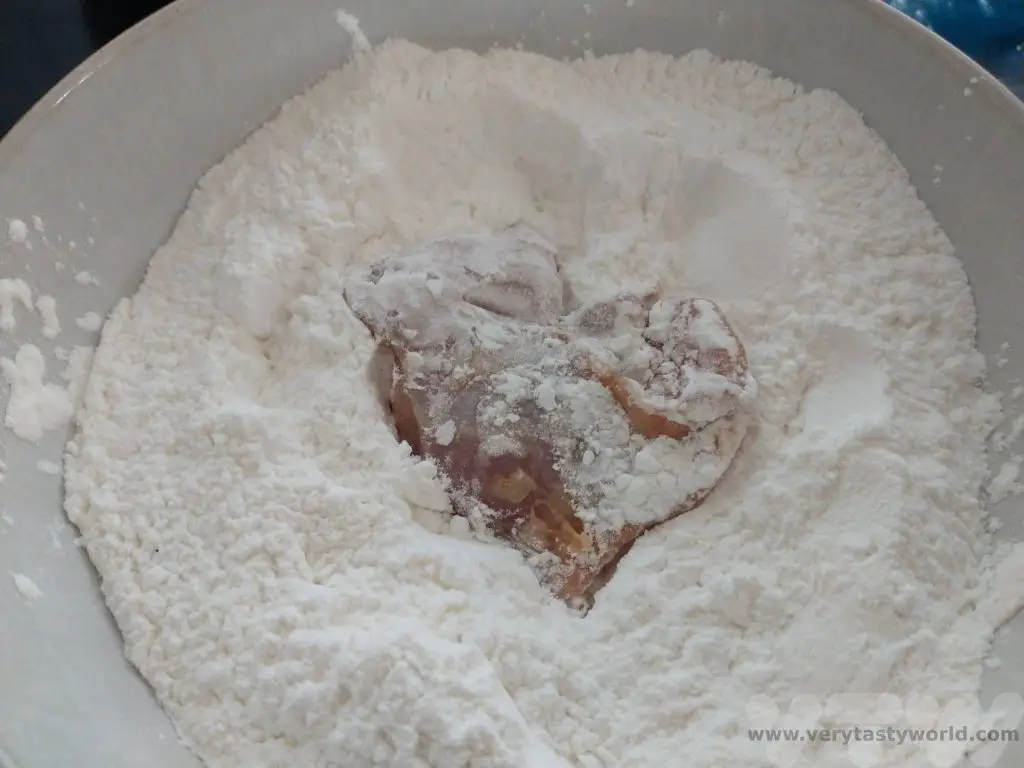
Take each piece of chicken, dip both sides in the flour, shake any excess off, and then carefully place in the oil.
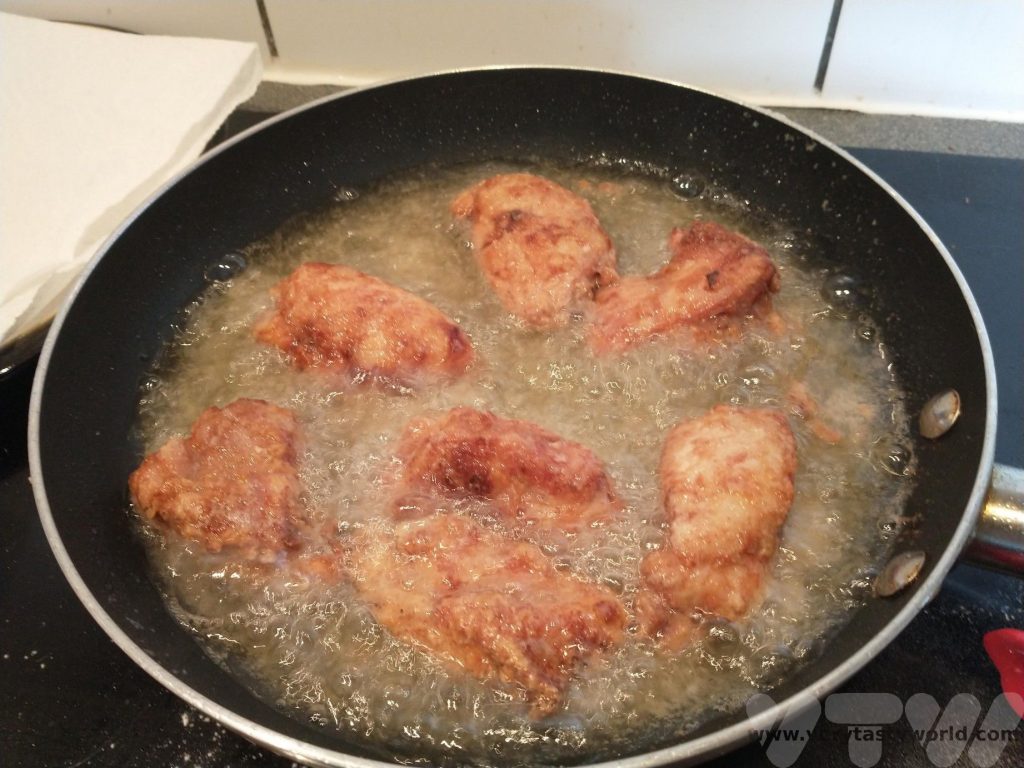
Repeat for further pieces of chicken. Do not overfill the pan – this is a process whereby the chicken should be cooked in batches. We tend to use a clock method – put a piece of chicken at the top, then go round the pan putting further pieces in in a clockwise direction so we know which piece was put in first. Cook the chicken for 5-7 minutes, turning occasionally, until the pieces are golden brown.
Then remove from the oil and place on kitchen paper to soak up excess oil. You can transfer the chicken from the first batches into a heatproof bowl in the oven set on a low heat to keep them warm.
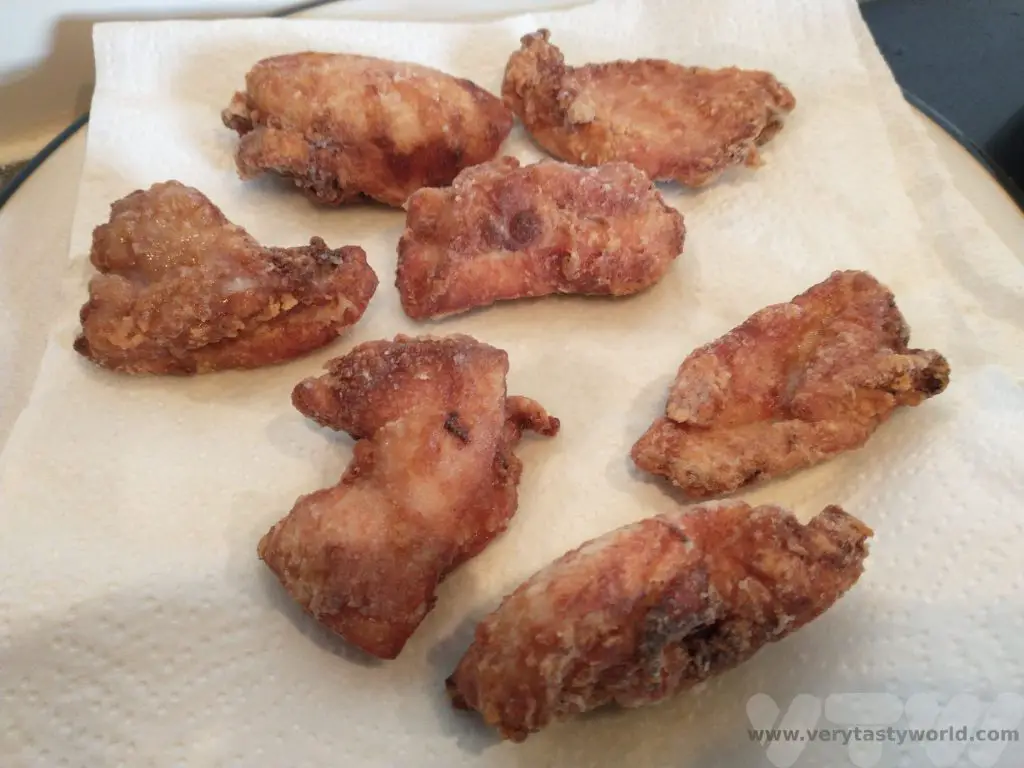
Start the next batch and repeat until all the chicken has been cooked.
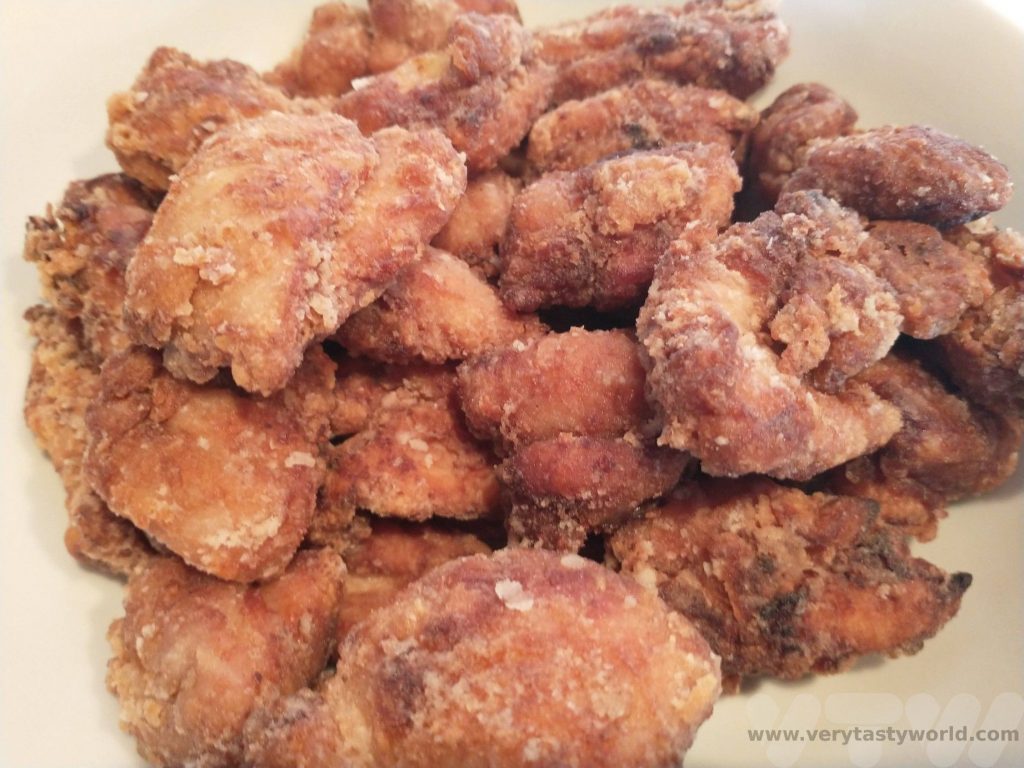
Serve with Japanese mayo. It’s not at all healthy but it’s oh, so decadent and delicious! If you’re feeling more health conscious, shredded cabbage is a popular accompaniment.

Karaage chicken is also yummy when served cold the following day. It often features in bento boxes.
Related Posts You May Enjoy

- RECIPE Oyakodon Donburi
- Zero Waste Recipes Before Your Holiday
- RECIPE: Vegetable Biryani Tamil Nadu Style
- RECIPE: Vegan Wild Garlic Pesto
- Recipe: Venetian Pasta Sauce
- RECIPE: Biryani Raita Recipe
- RECIPE: How to Make Costa Rica’s Gallo Pinto
- Recipe: Japanese Simmered Pork Belly – Buta no Kakuni
- RECIPE: How to Make Umeboshi
Visit Yakushima Island in Japan
The Island That Inspired The Setting of Studio Ghibli’s Princess Mononoke
Anyone who is familiar with the delightful animations of Japan’s Studio Ghibli will that know that its founders, Hayao Miyazaki and Isao Takahata, created very distinctive locations for the settings of their films. Princess Mononoke was one of the first Ghibli films really to break into public consciousness, albeit largely with animation fans, in western countries in 1998 (the smash hit Oscar winning Spirited Away in 2001 ensured that the studio’s fame was assured). Princess Mononoke’s setting was inspired by the island of Yakushima, located around 60km from the southernmost point of Kyushu, Japan’s third largest island, which is part of the Osumi chain of islands. The island is almost perfectly round and mountainous. It’s also very beautiful indeed. And even if you aren’t familiar with the films of Studio Ghibli there are all sorts of things to do if you visit Yakushima.
Getting To Yakushima
Being big fans of Studio Ghibli and, having visited the fabulous Studio Ghibli museum on previous visits to Japan, we decided that we definitely wanted to visit Yakushima for a couple of days. On this trip we had decided explore Kyushu. We flew into Osaka and then caught the shinkansen (bullet train) to Nagasaki and then across to the southern city of Kagoshima. Kagoshima is a lovely laid-back city set in the shadow of the active volcano Sakurajima, which regularly emits rumblings of ash and smoke. It’s possible to visit the volcano by crossing the picturesque bay on a ferry.
In Kagoshima we chose a business hotel that was close to the port. The staff were happy to look after our luggage for a couple of days, so we just packed a small bag, which meant that we could travel light. The excellent YesYakushima company helped us to visit Yakushima – they booked ferry tickets, car hire and accommodation for us. (This isn’t an affiliate link but we’ll happily recommend their free booking service which was absolutely excellent.) We were happy to explore for the island for ourselves but YesYakushima do offer guided tours if desired.
We caught the mid-morning Toppy/Rocket hydro-foil from Kagoshima port. It’s a picturesque journey as you sail across the bay. There are other options, such as a car ferry, but this was the quickest means of transport and it took around 2.5 hours.
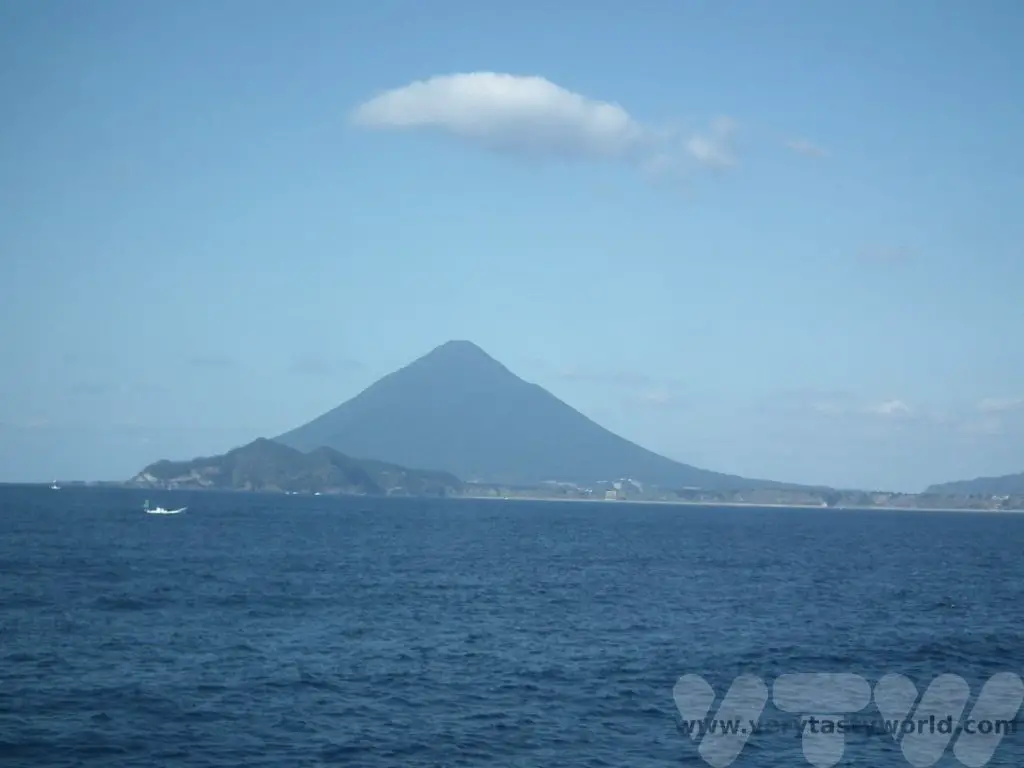
Our boat stopped off at Tanegashima island before arriving at Yakushima. (Some boats go direct, so check the timetable.) When we arrived at Anbo port our hire car was waiting for us, so we picked it up and were on our way. Driving was mainly very easy but if you don’t fancy getting behind the wheel buses are available.
Visit Yakushima – Staying On The Island
We treated ourselves to a stay at a ryokan, a traditional Japanese inn. Usually when we plan our trips to Japan we use a combination of cheap business hotels and then splash out on a few nights at a ryokan or two, which is more expensive but definitely worth the extra cost. The traditional inns usually have tatami (reed mat) flooring and you sleep on a futon, which is usually laid out for you while you eat dinner. We stayed at Tashiro Bekkan at Miyanoura.
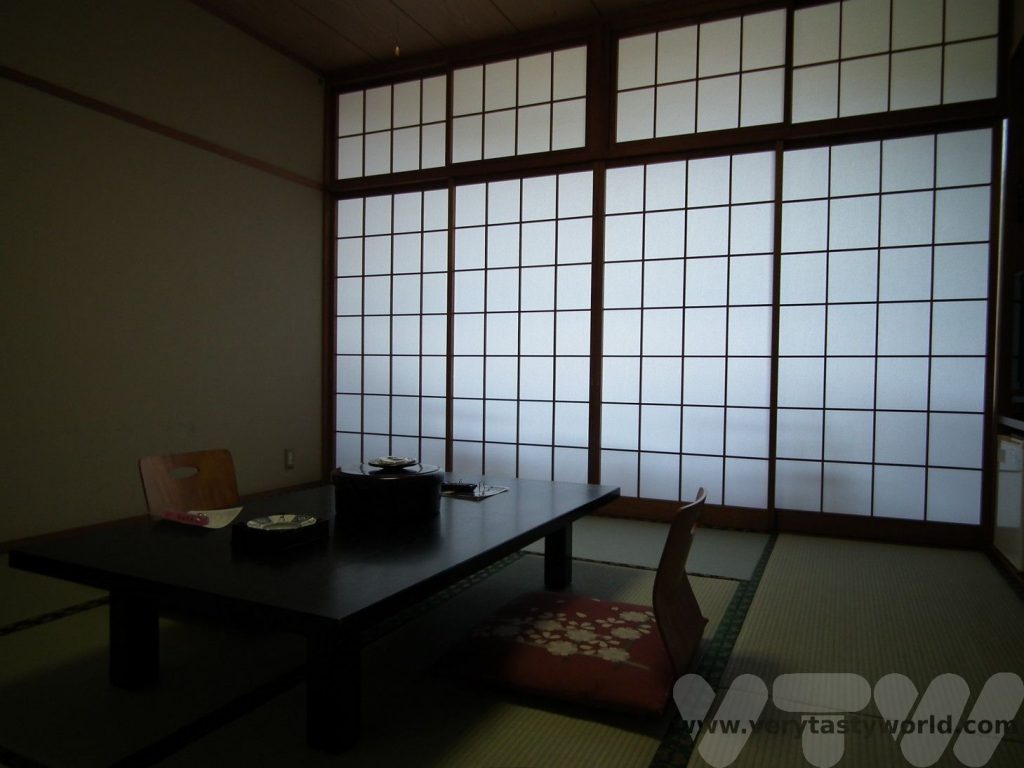
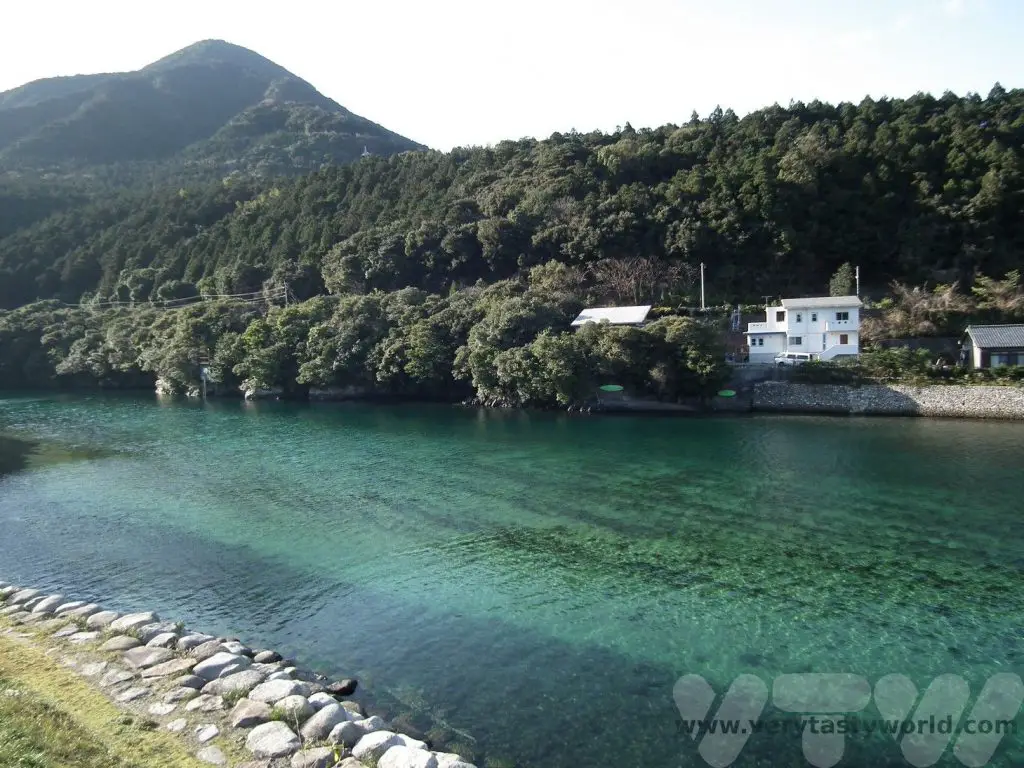
The ryokan had a large tatami room, private bathroom and balcony with a view across the crystal clear Miyanoura river.
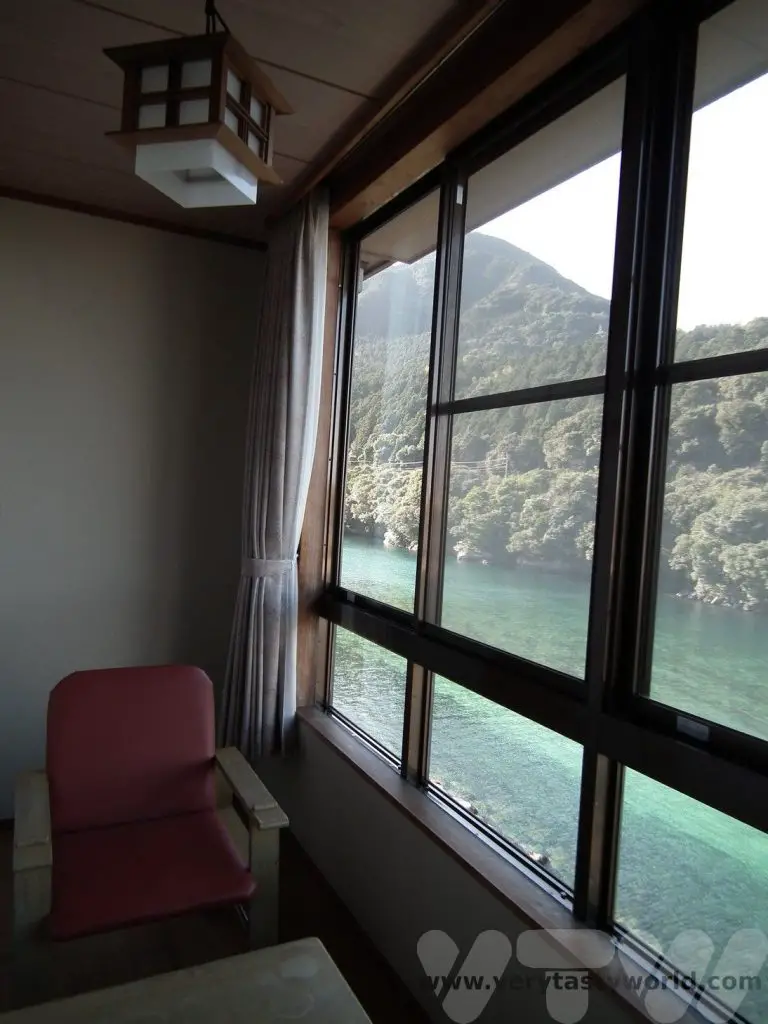
We chose to stay on a half-board basis, so ate the most exquisite food which included local ingredients such as seafood, mountain vegetables and, of course, kuro buta (black/Berkshire pork), a speciality of the region. The staff were delightful and we managed to have a few conversations with them in bad Japanese (our Japanese was bad, theirs was fine!)
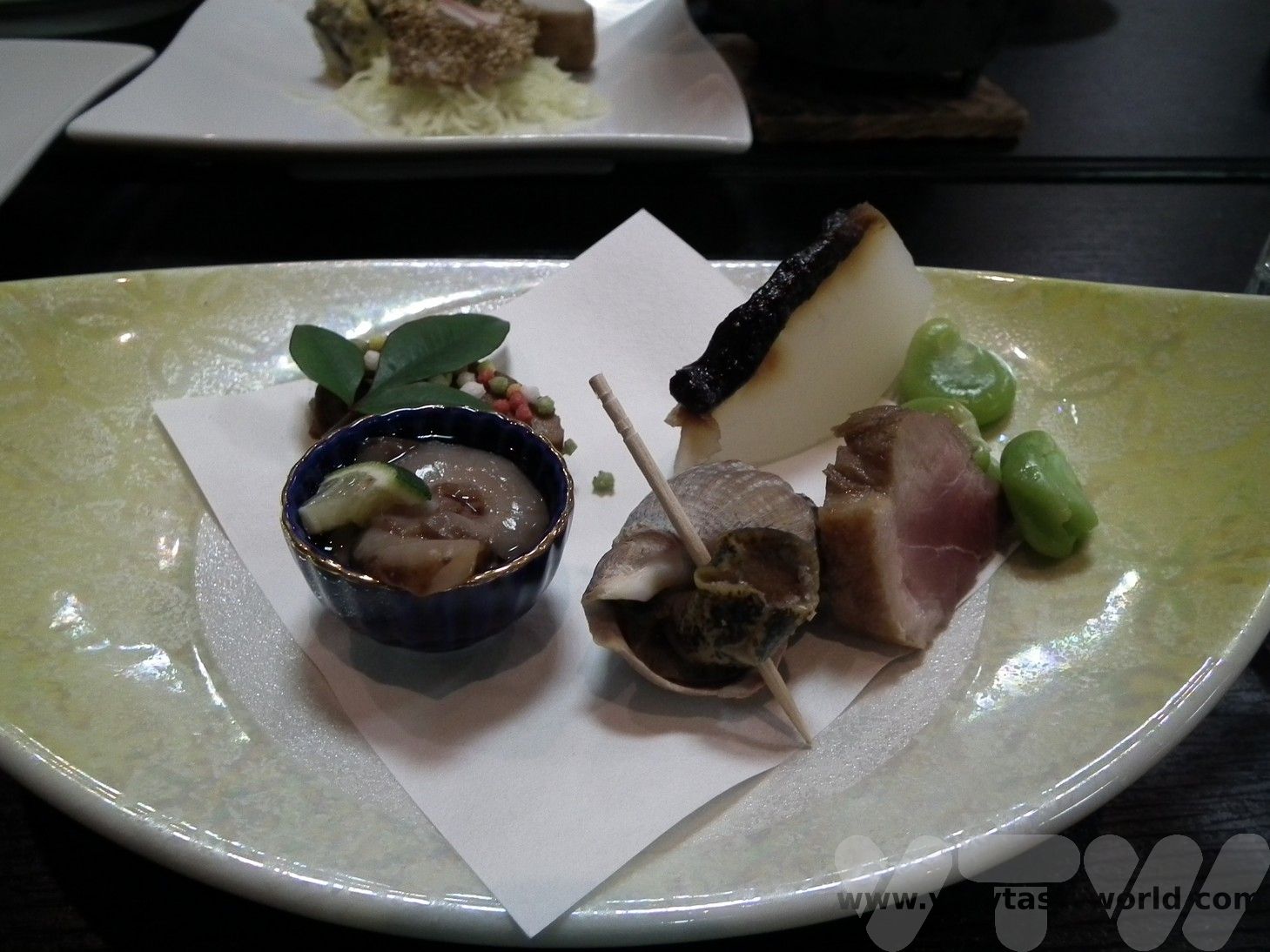
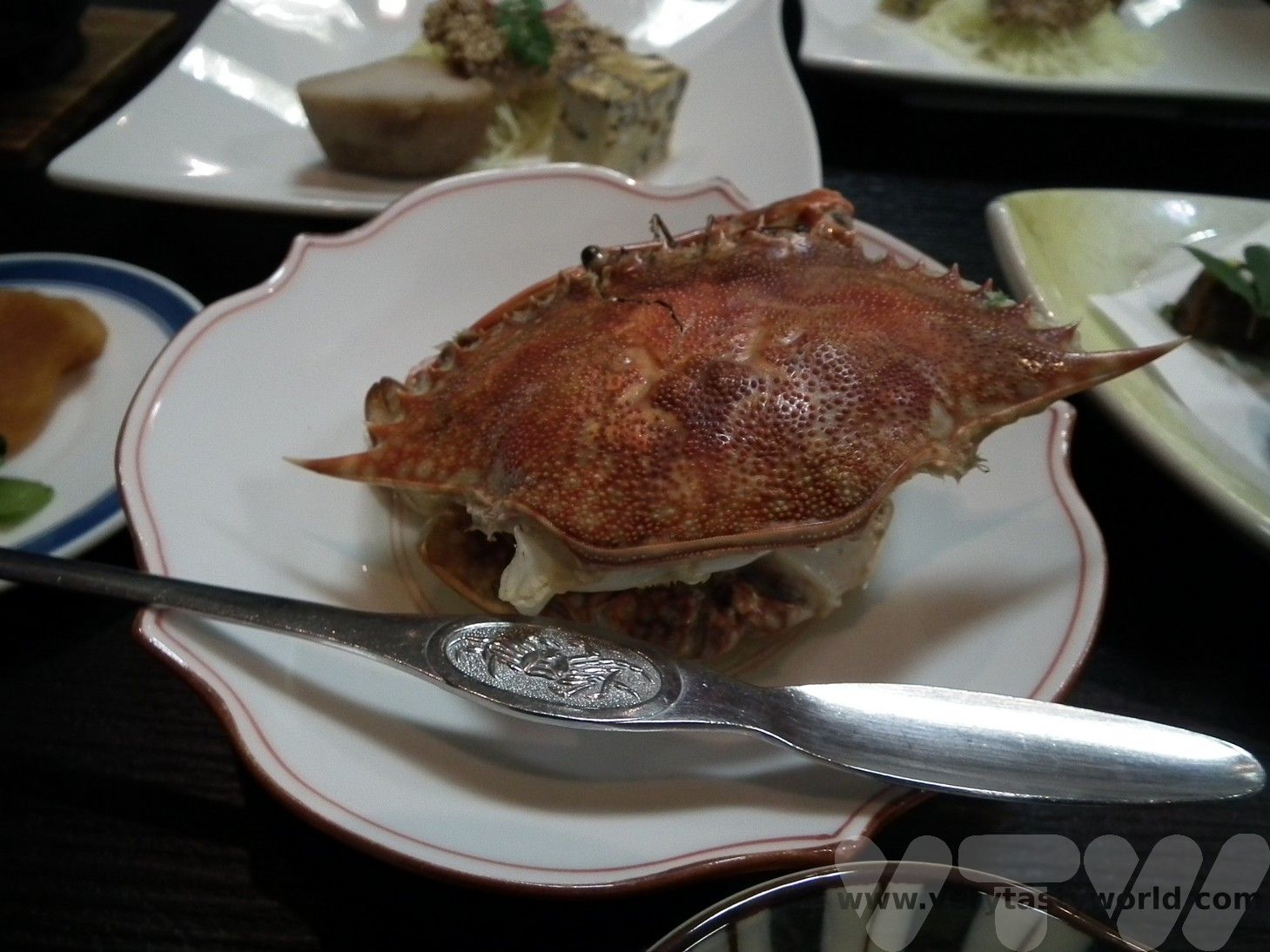
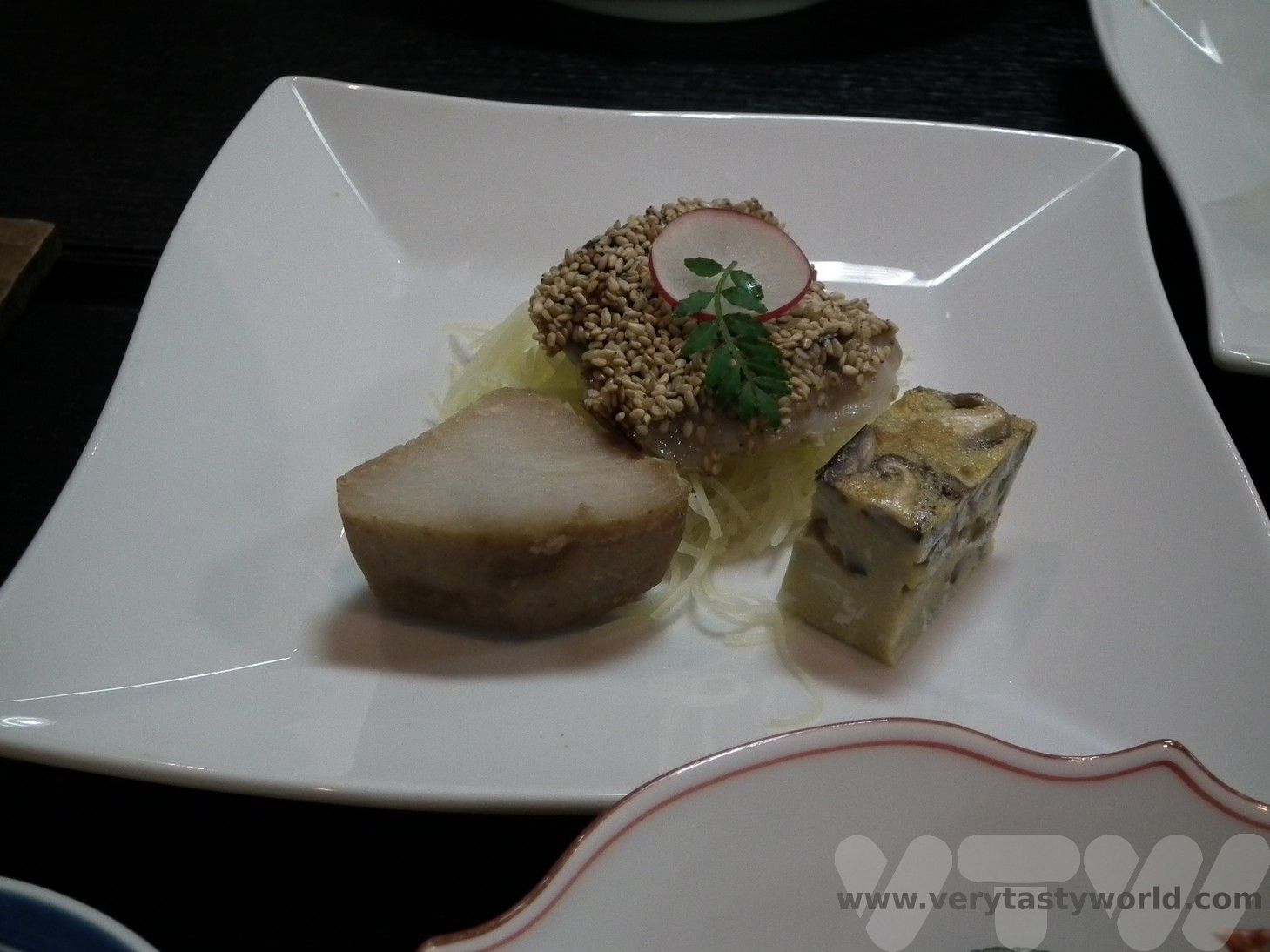
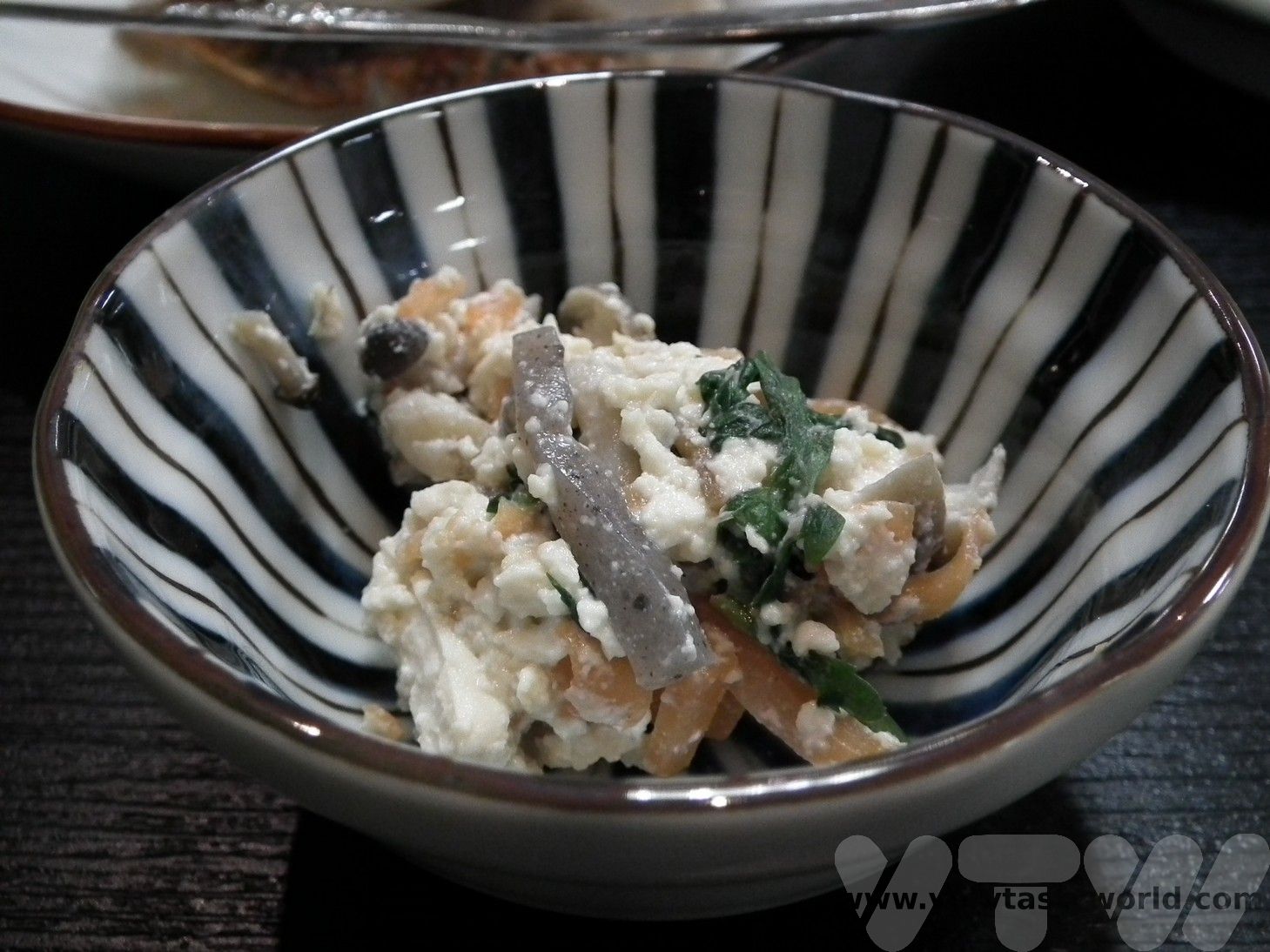
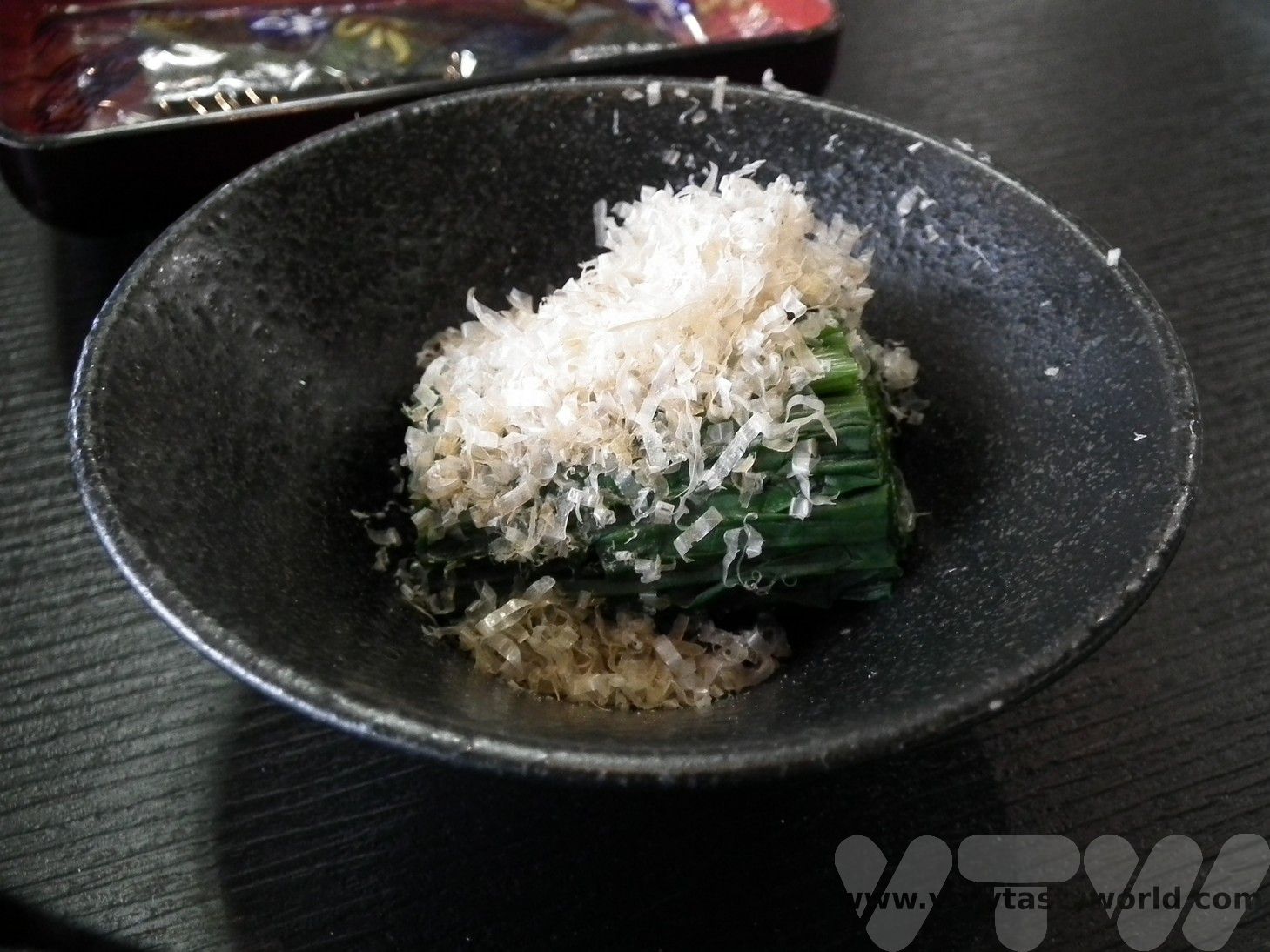
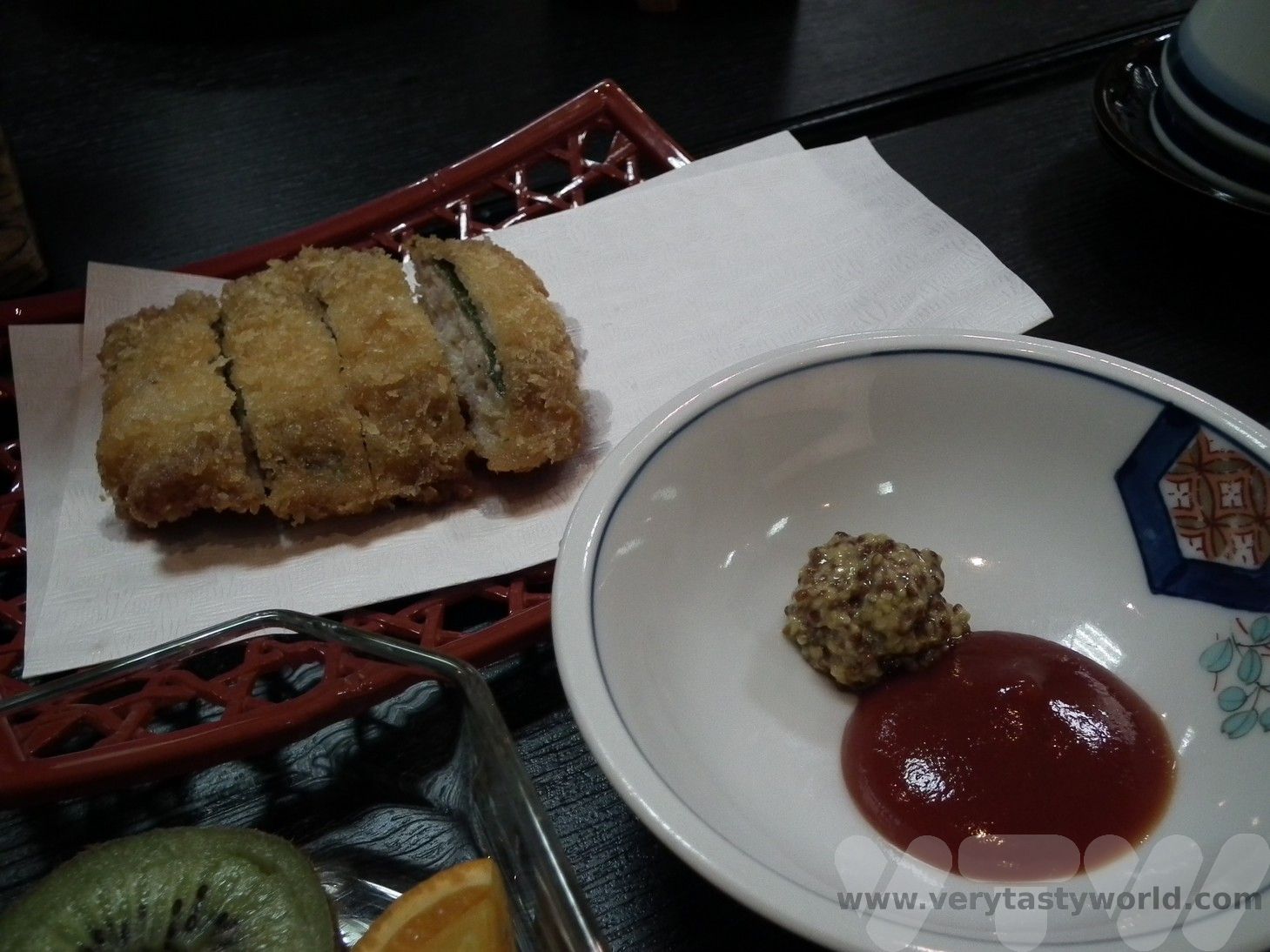
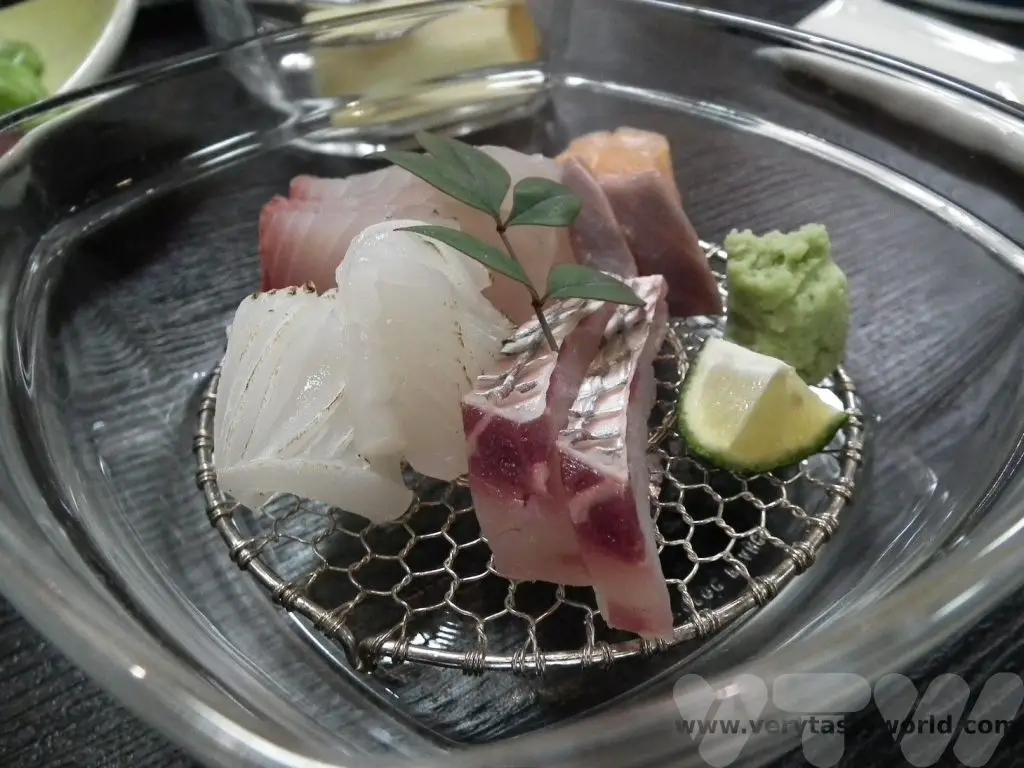
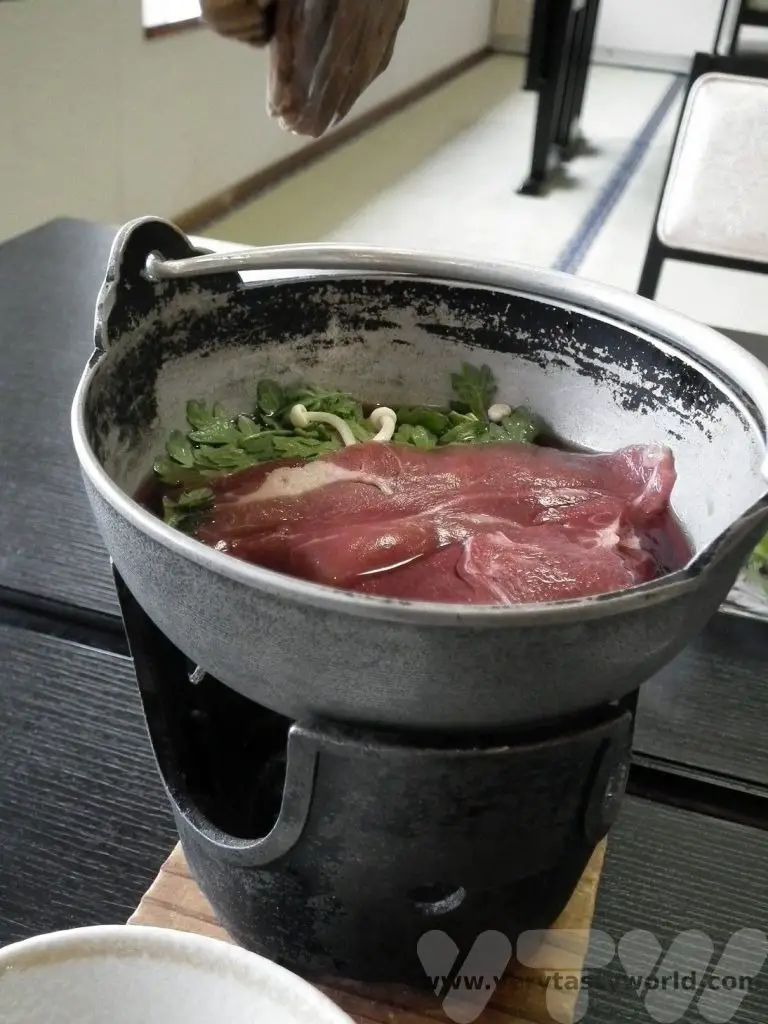
The ryokan was also able to offer us a bento lunch box – we simply placed an order the night before – and then picked it up before we went hiking the following morning.
Hiking In The Shiratani Unsuikyo Park
This park was the inspiration for the forest in Princess Mononoke and it is very clear to see how the artist Oga Kazuo used the stunningly beautiful landscape for the setting of the animation. It has ancient cedar trees and mossy paths as well as streams and waterfalls running through it. There are multiple trails from the car park and the walking is generally easy, although you need to take care of large tree roots that have grown across the path.
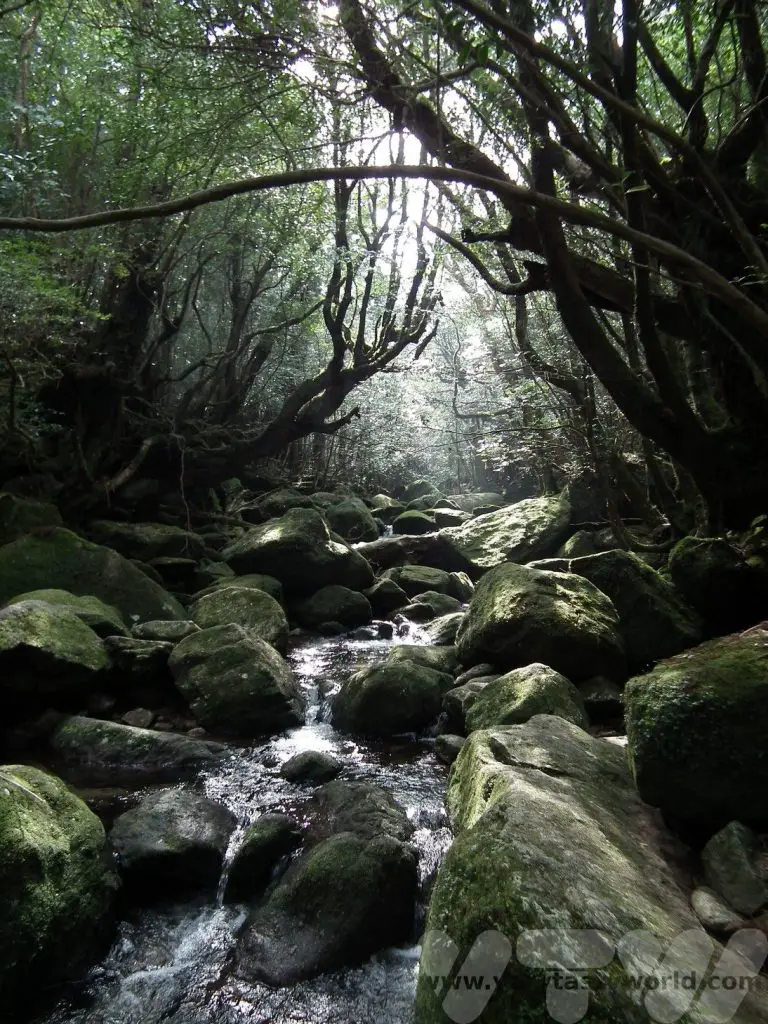
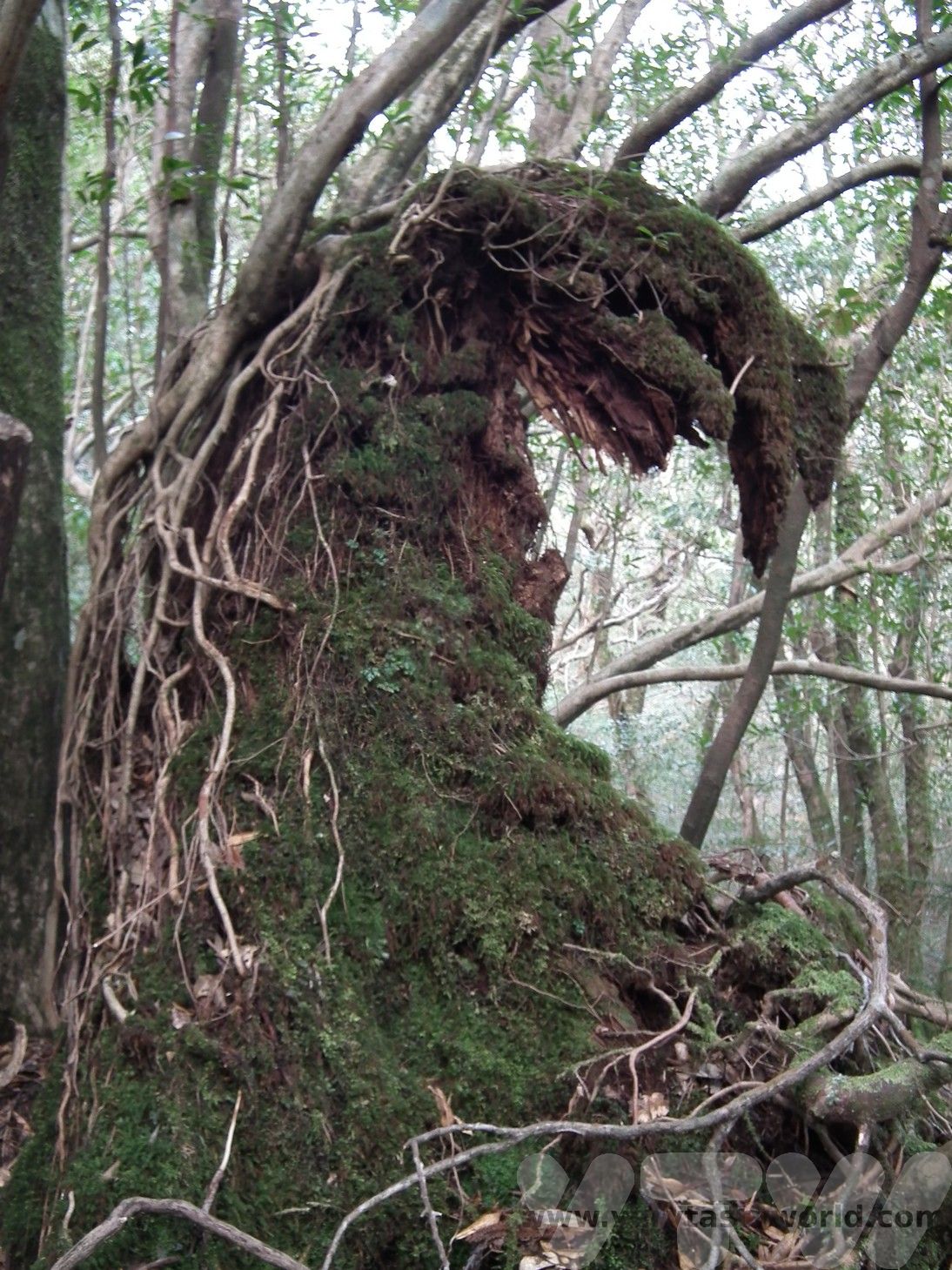
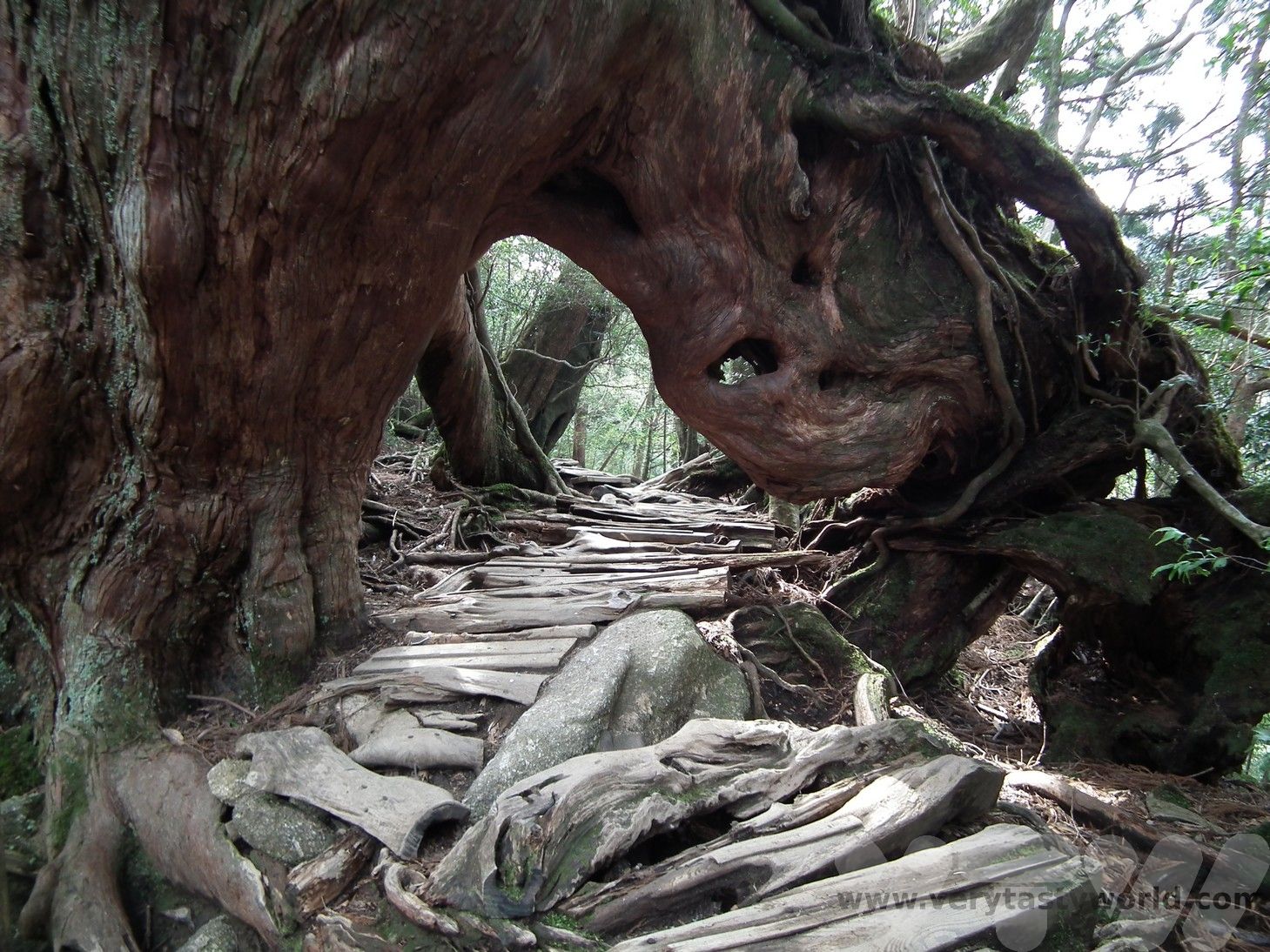
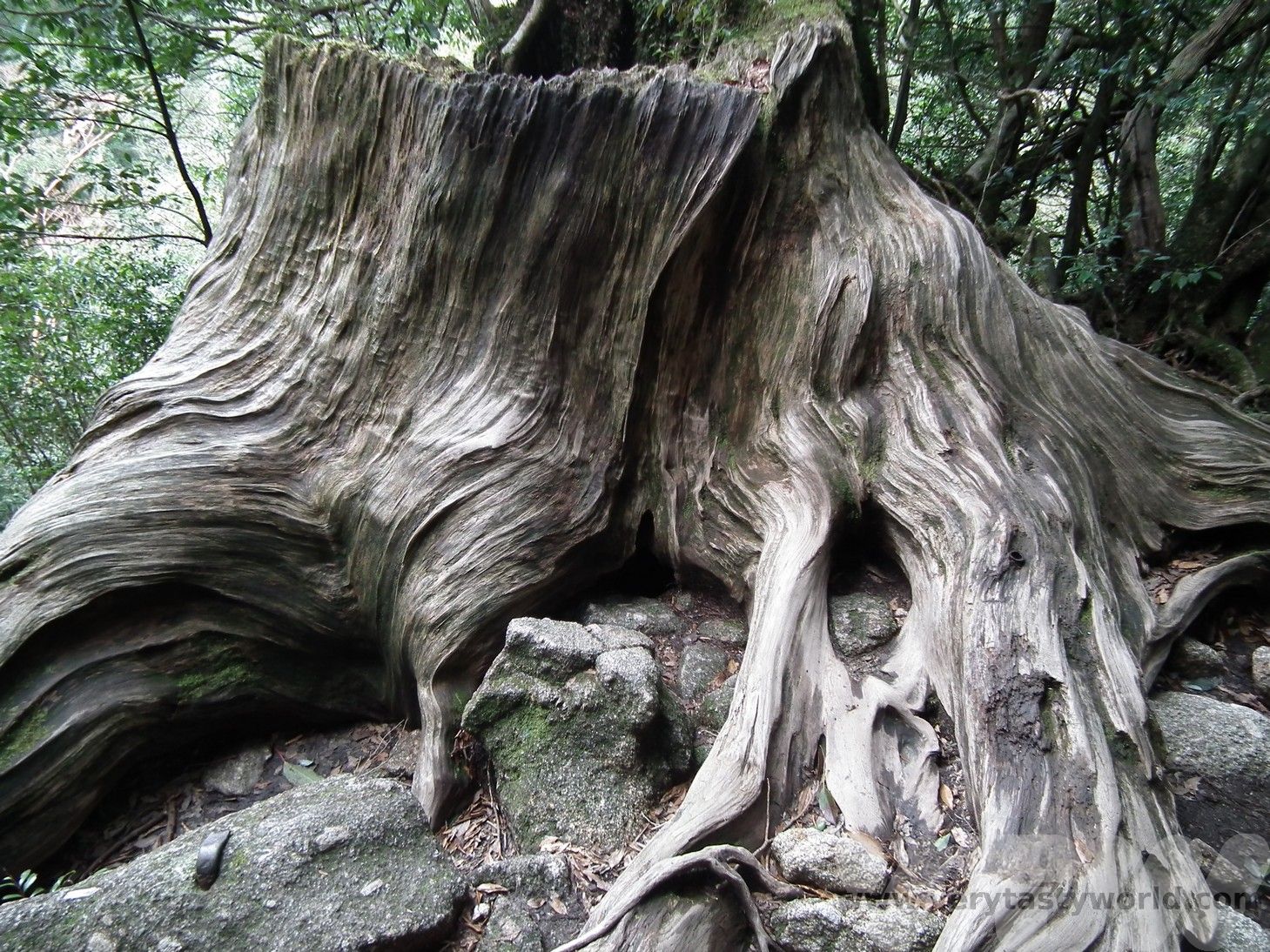
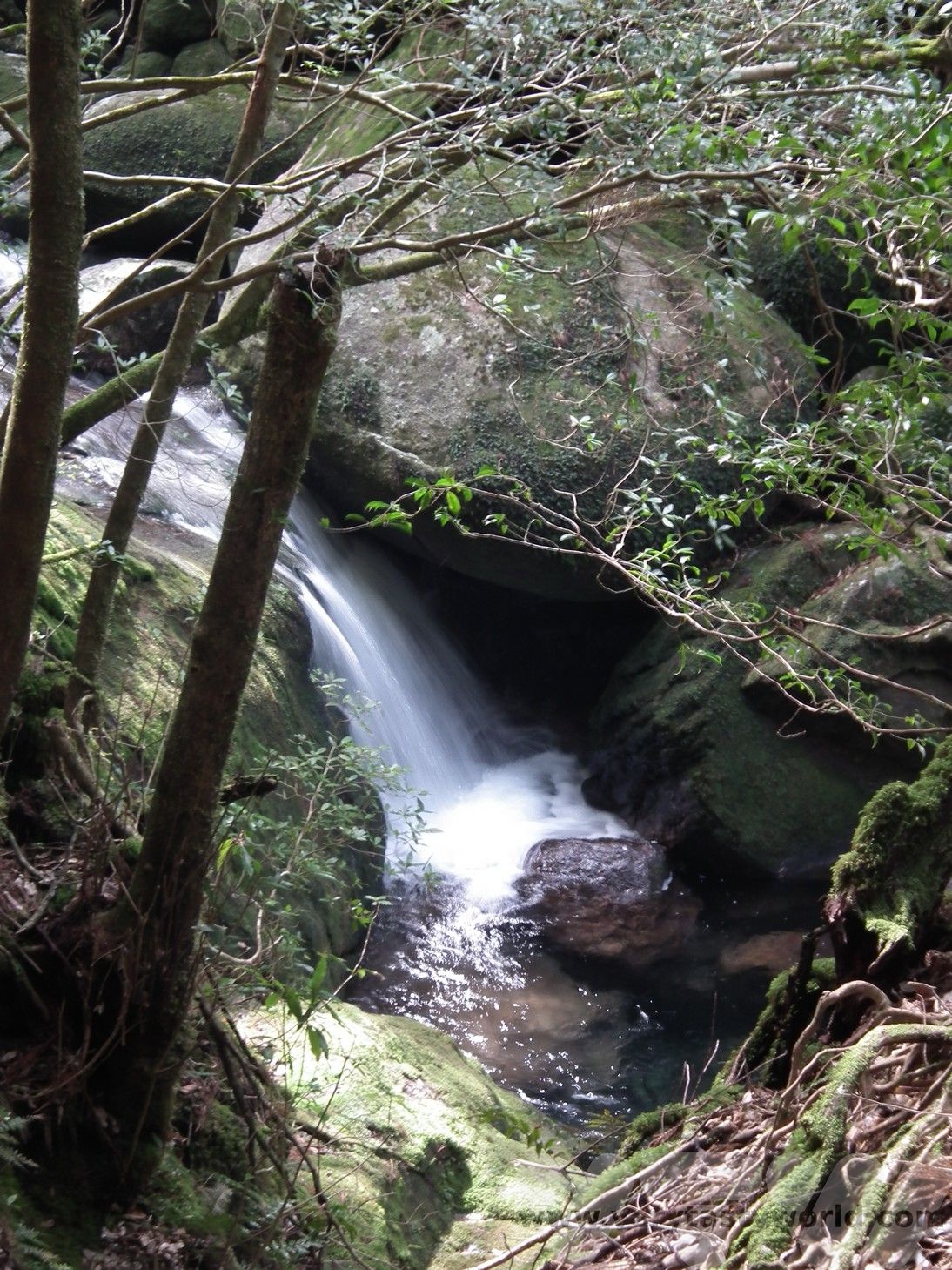
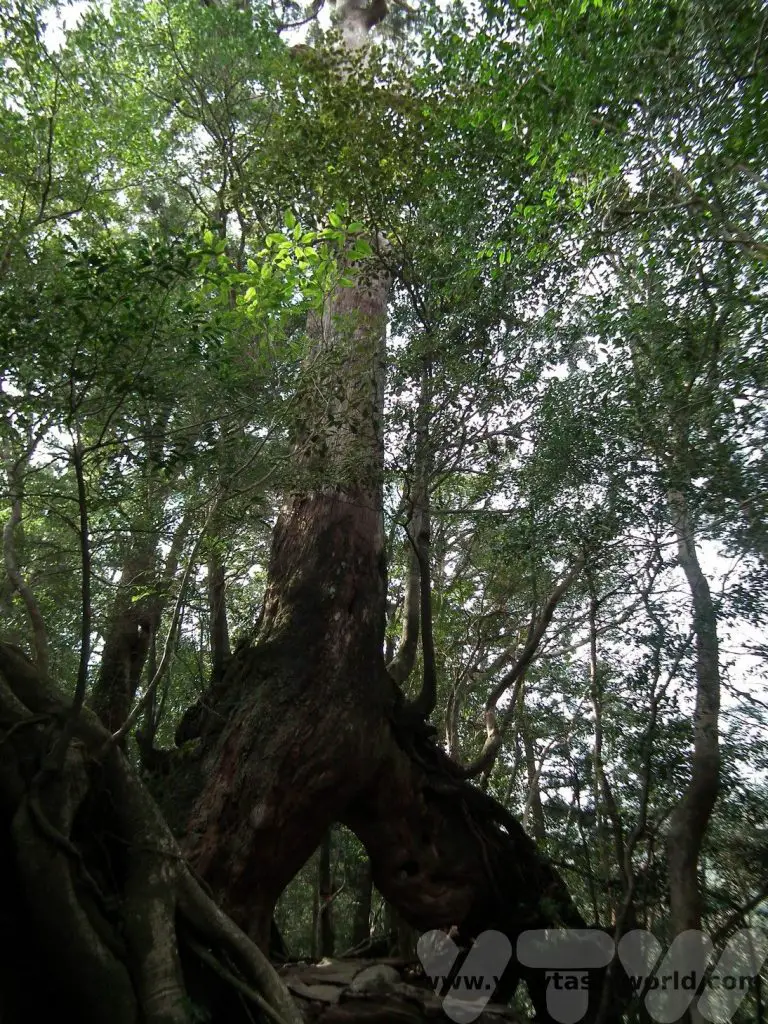
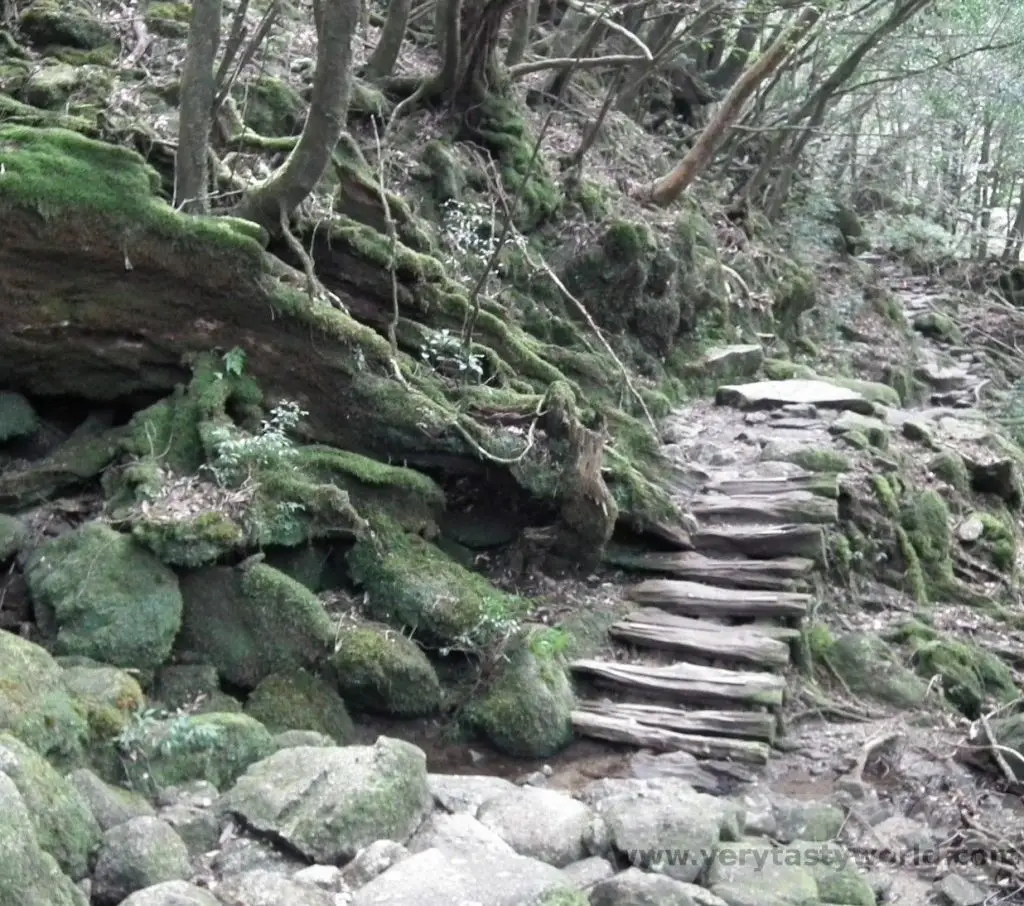
Visit Yakushima – Circumnavigate The Island
On our final day we decided to circumnavigate the island in the car before heading back to the hydrofoil. It’s largely a very easy drive but on the Seibu Rindo Forest path on the western part of the island the road narrows through the forest and becomes single track in some places, so you have to take care. We narrowly avoided a minor collision with a coach coming the other way.
From Miyanoura we drove north, stopping at the Shitoko Banyan Tree Park. Banyan trees are a complete contrast to the cedars of Shiratani Unsuikyo. These trees grow by dropping roots from the branches which eventually reach the ground and embed themselves in the soil creating additional roots to support the tree. They can also form around other types of tree and can eventually kill them as they choke the existing root system.

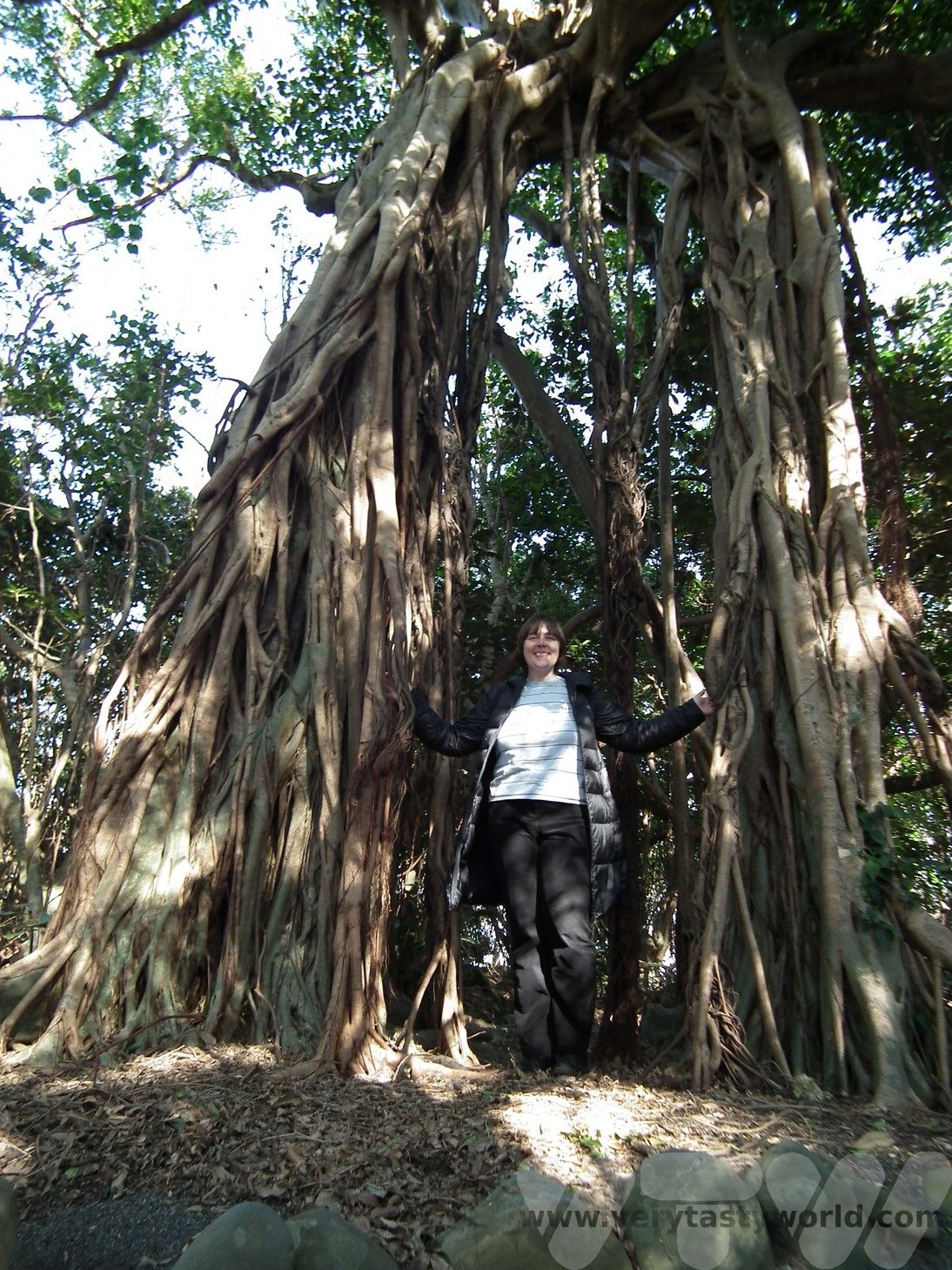
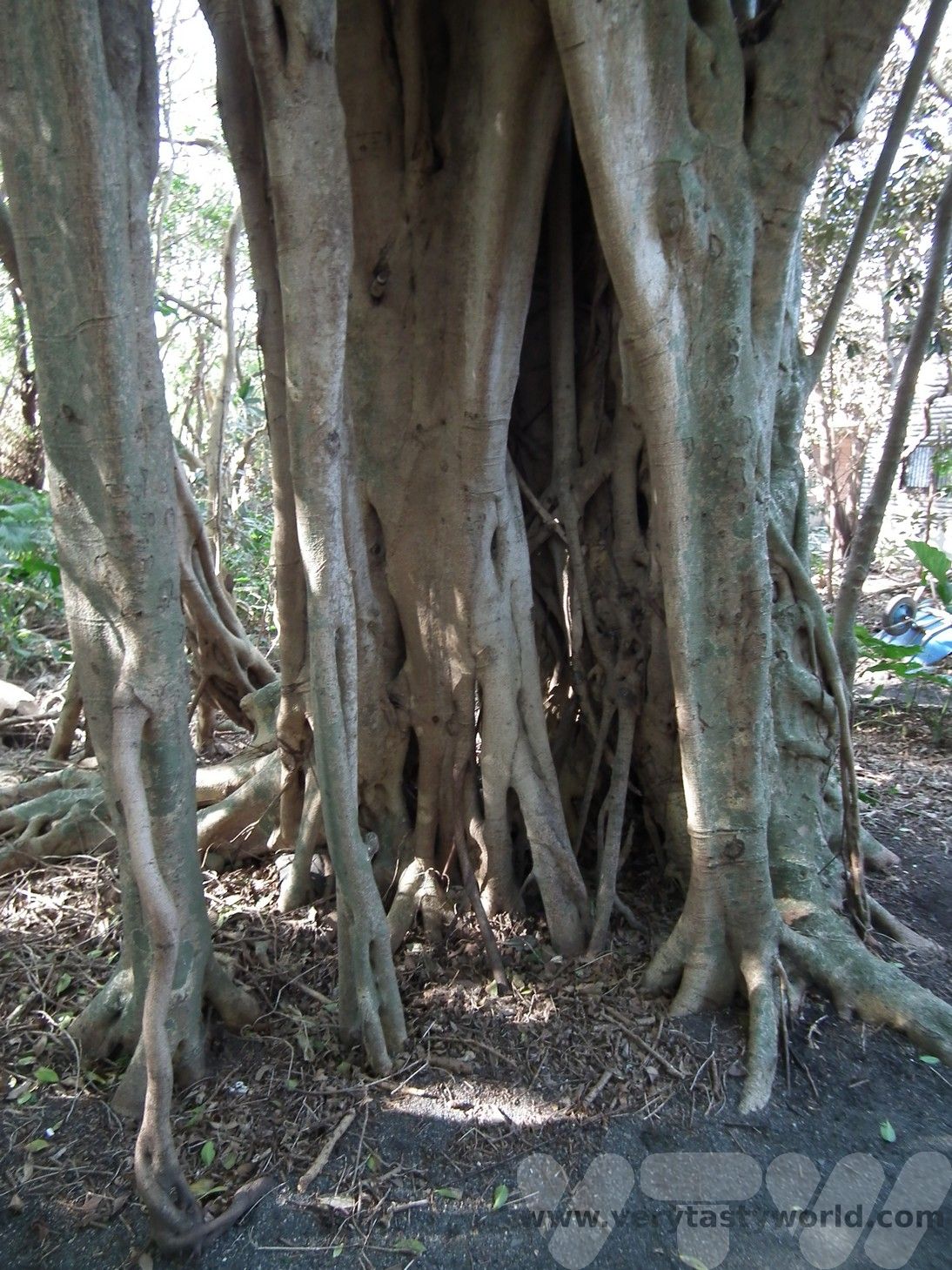
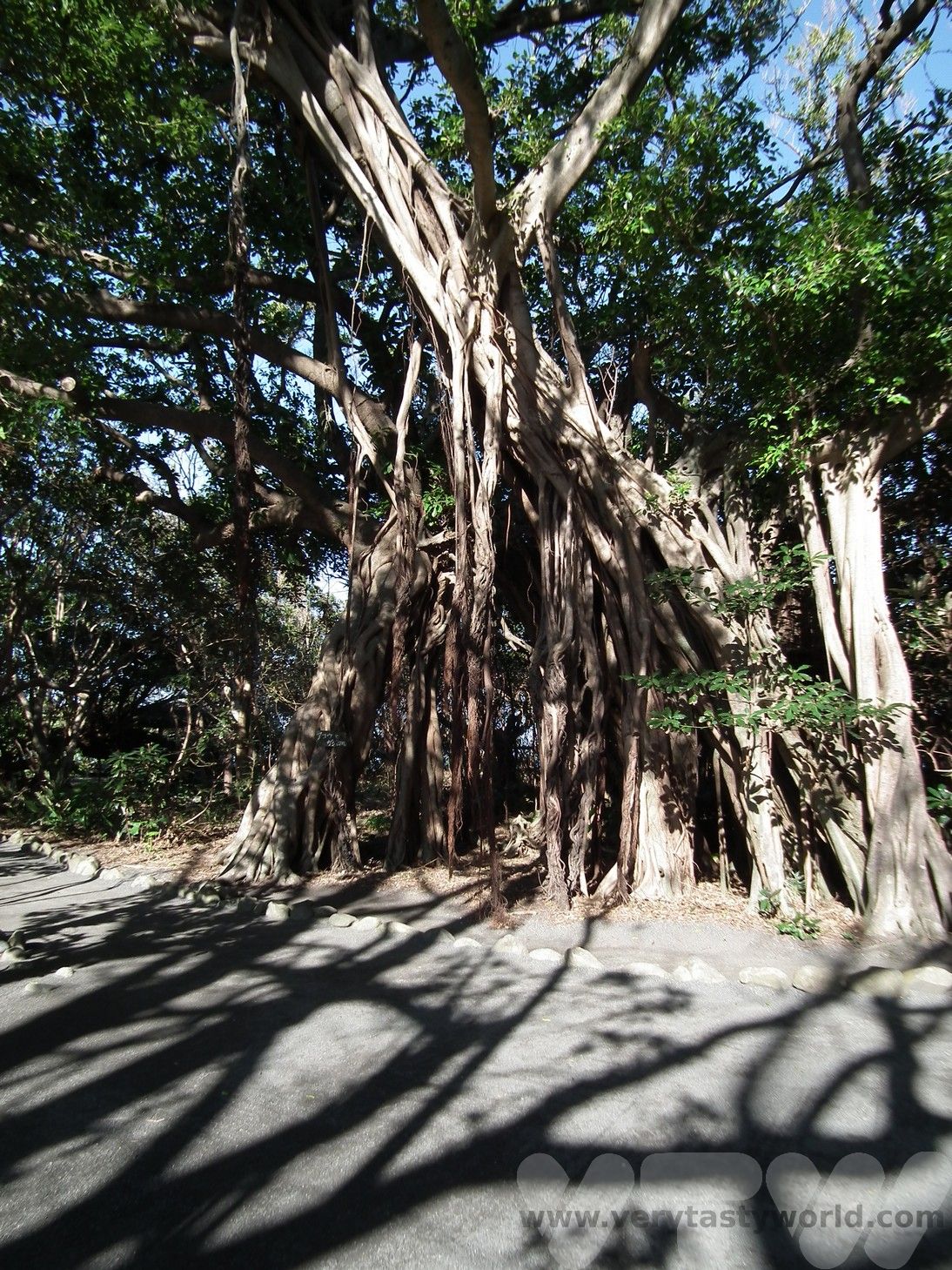
Isso Beach and Isso lighthouse on the peninsular.
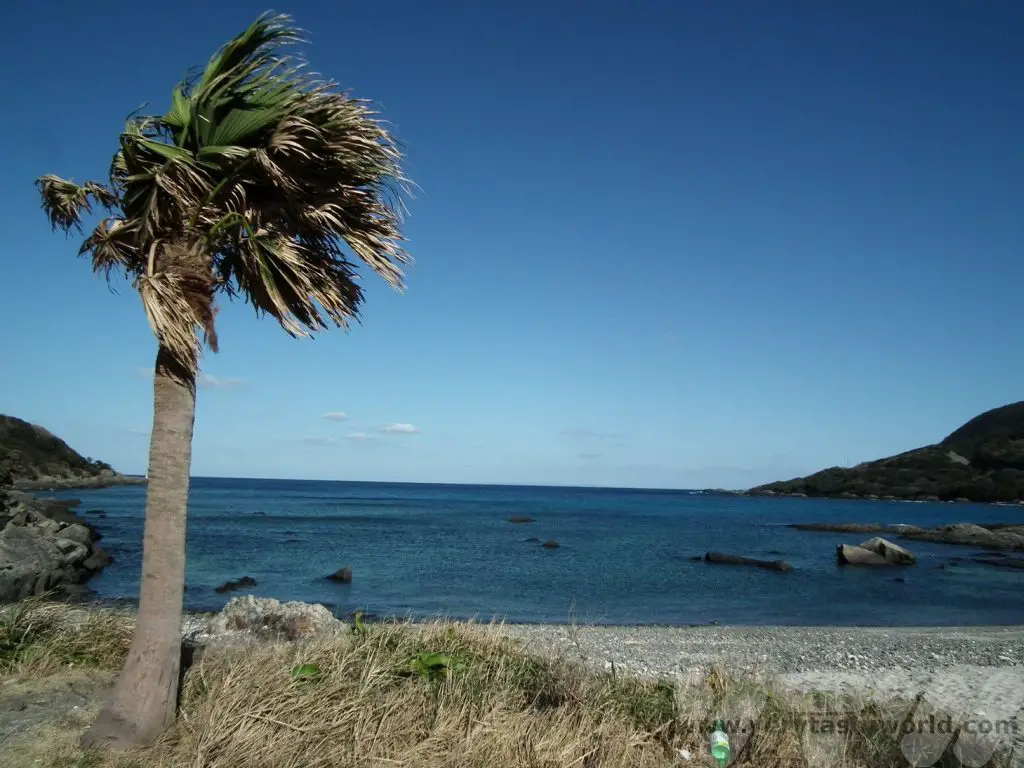
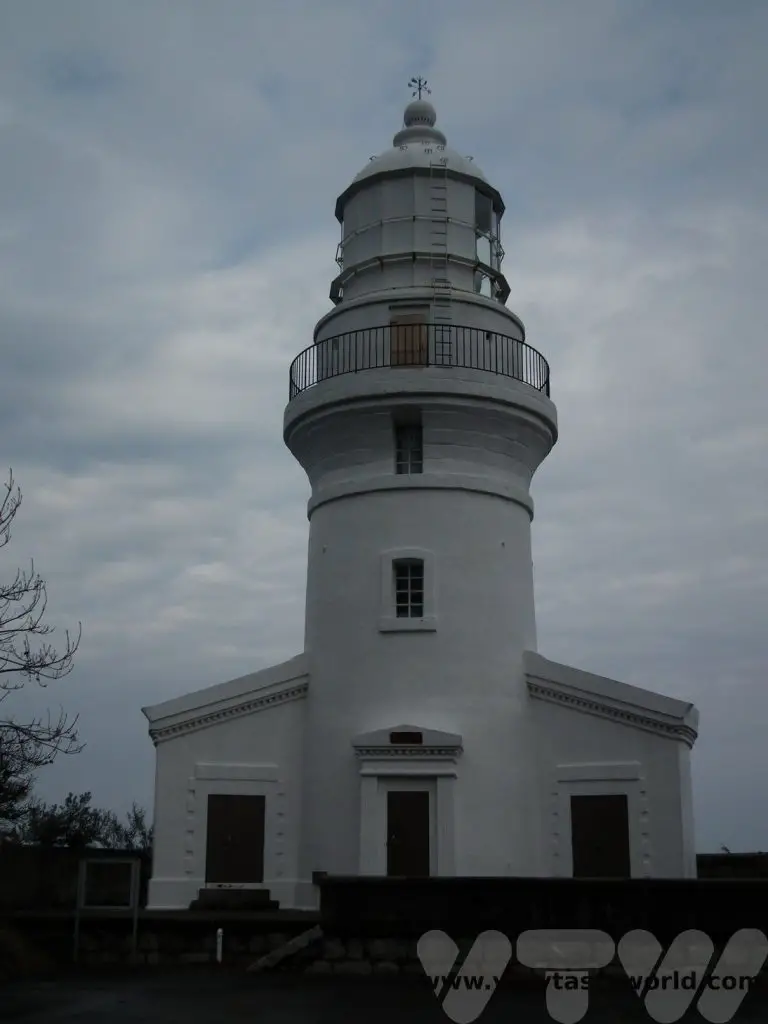
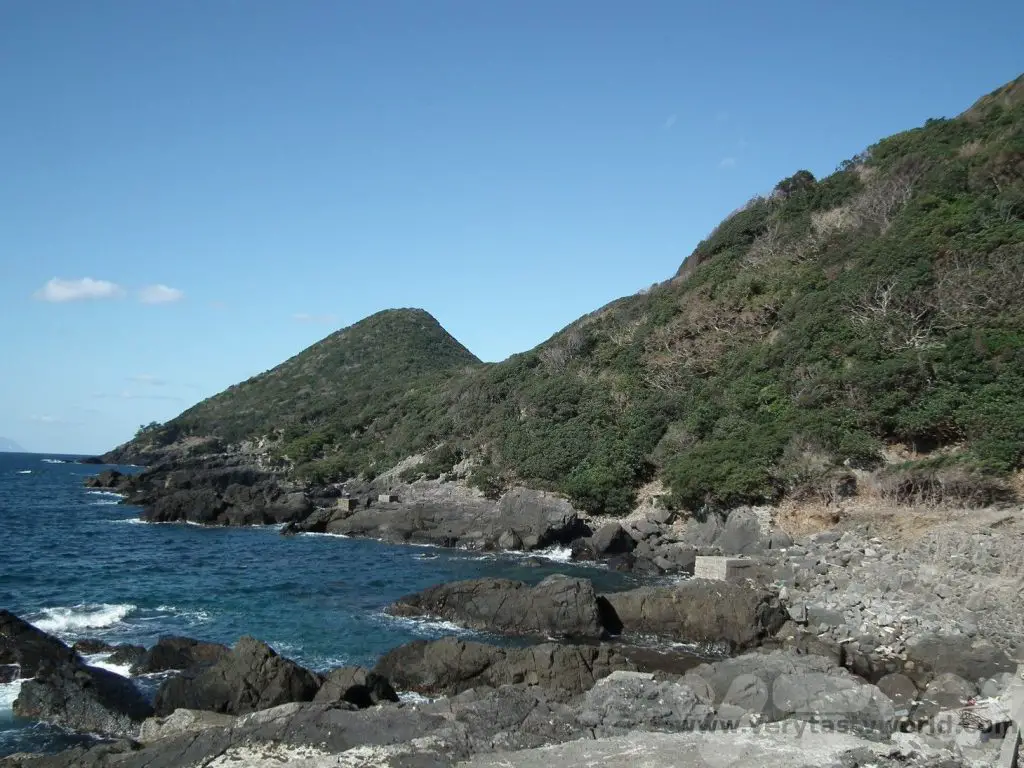
Swimming is only possible on the beach in the summer months when lifeguards are available. Also, turtles nest here during May and June, so care must be taken so as not to disturb them.
Then it’s a beautiful drive through the Seibu Rindo Forest. The road can be narrow and very winding as it wends its way through the mountain forest.
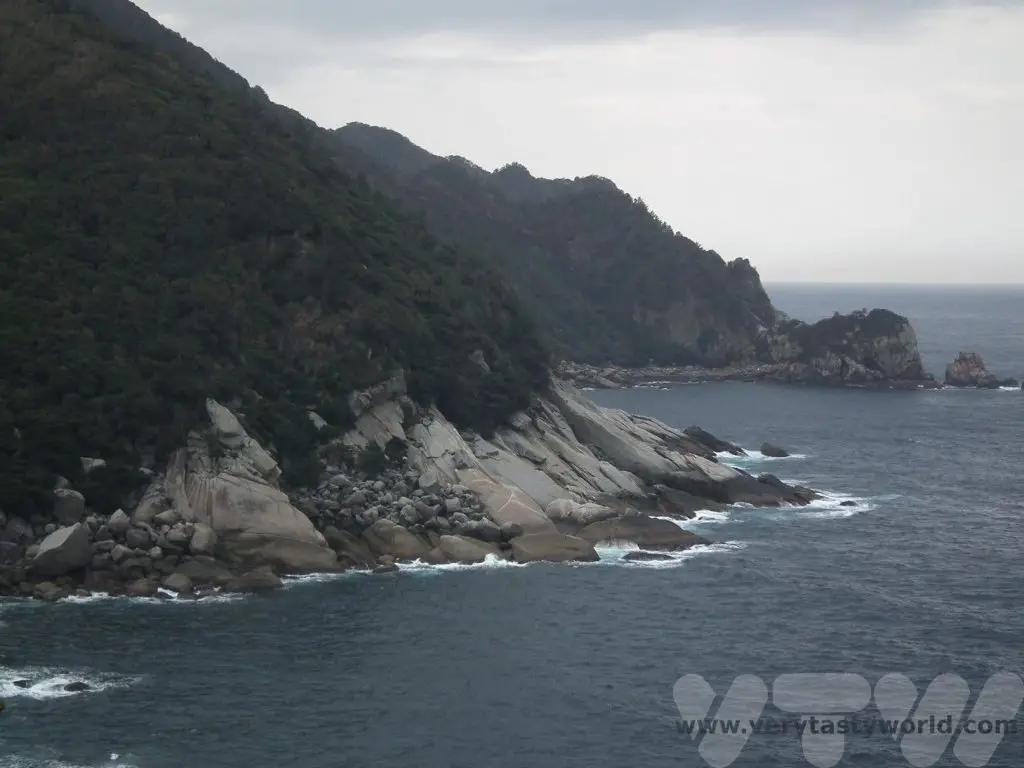
There’s an excellent chance of seeing Yakushika (native deer) and Yakuzaru (the Yakushima macaque) – and indeed we did.

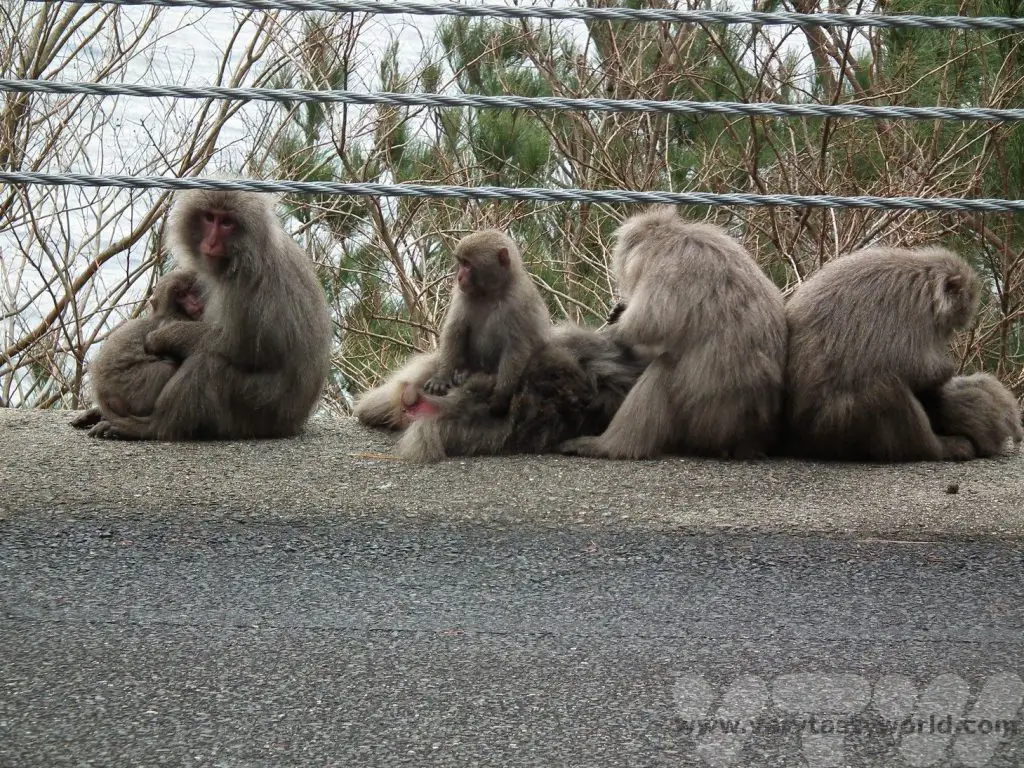
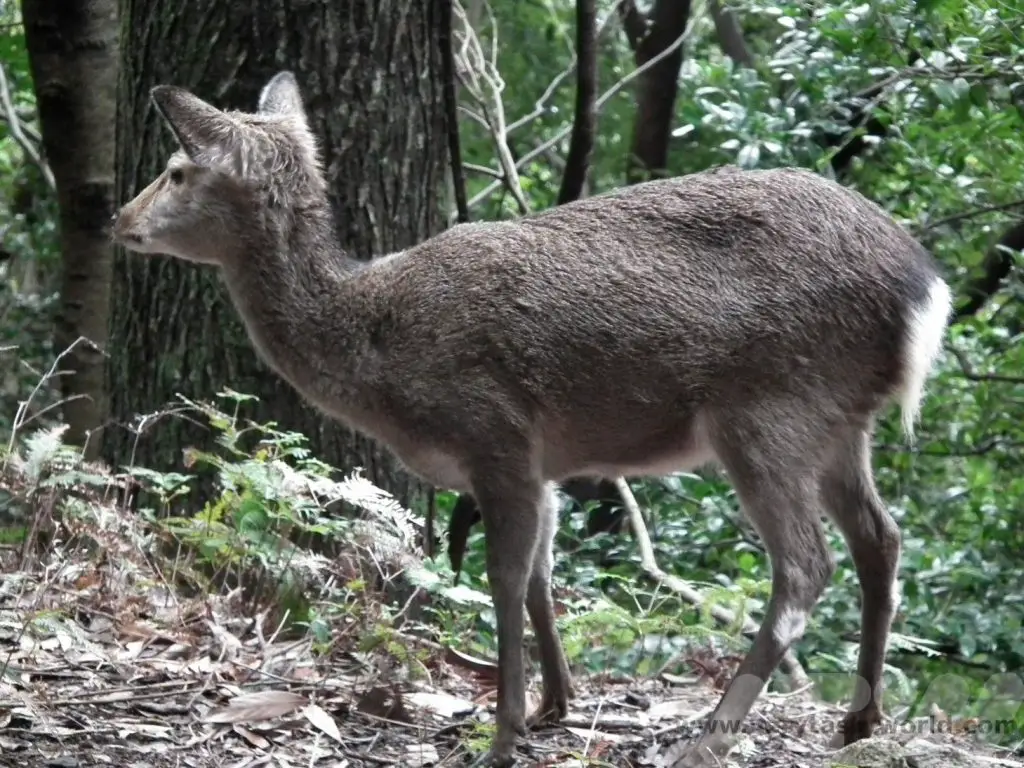
Yakushima has a number of waterfalls to explore. The falls are usually well signposted from the main road and there is usually a car park close by.
At 88m high, Ohko no Taki waterfall in the south west corner of Yakushima is one of Japan’s top 100 waterfalls. Sadly we didn’t have time to hike to the falls but even from a distance, it’s an impressive drop.
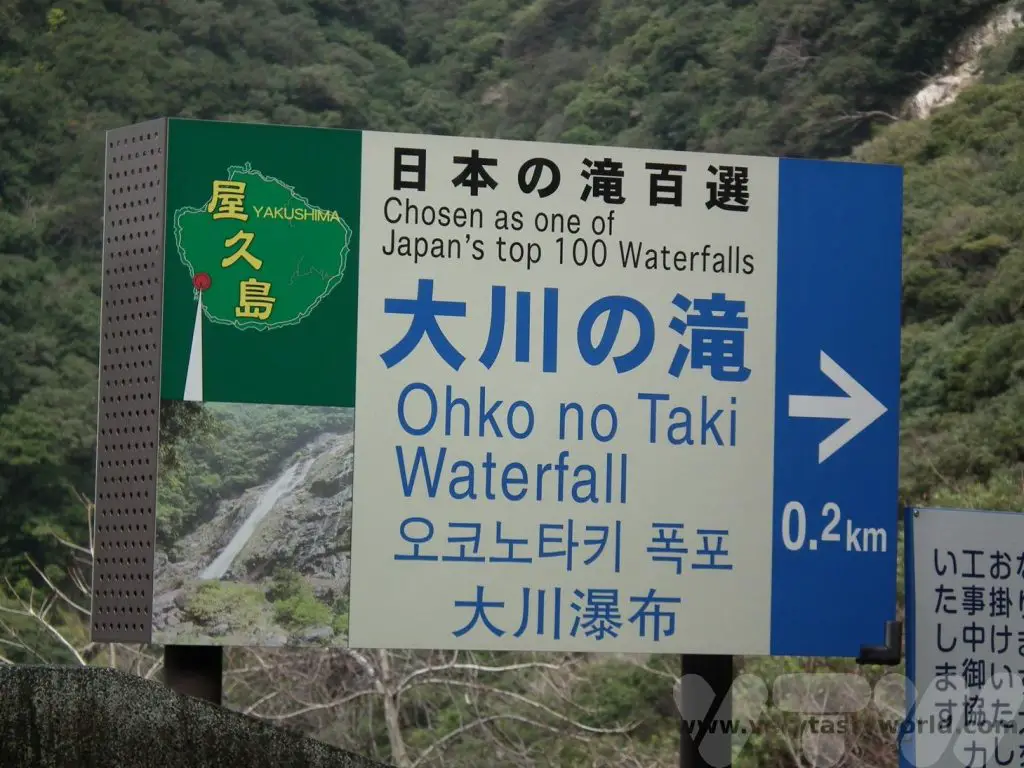
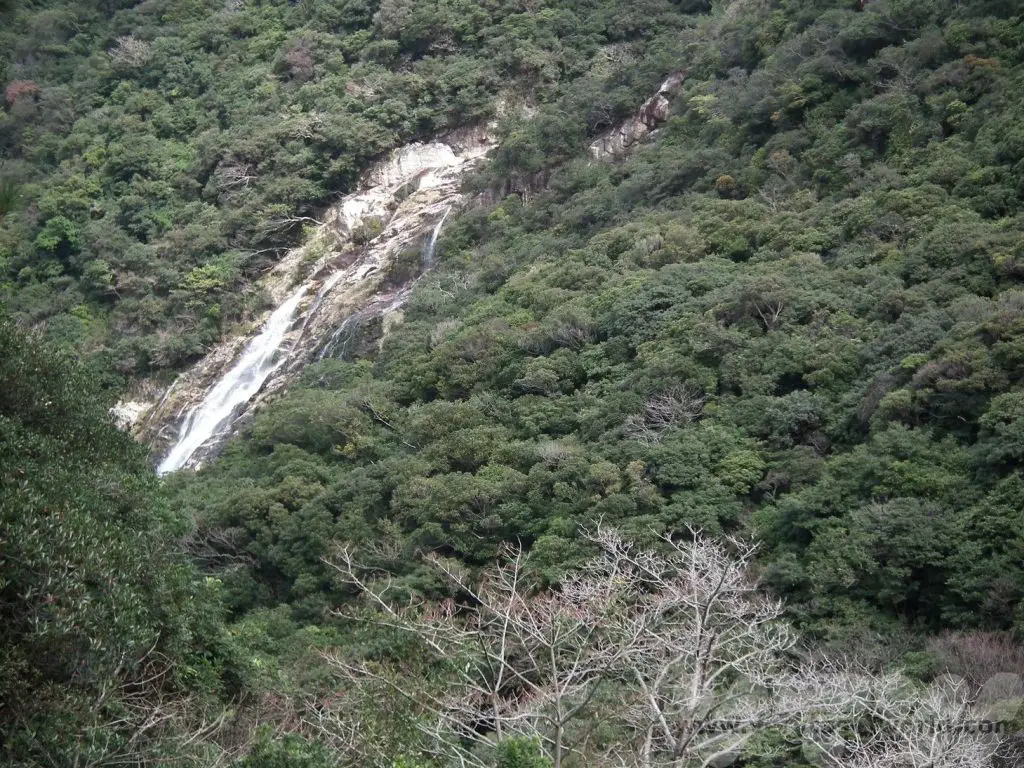
There are a number of outdoor onsen (hot springs) by the coast, which are worth a visit. Some of these are tidal, so are only accessible at low tide. There are a couple of neighbouring villages on the south cosast, Yudomari and Hirauchi, accessible by single track roads off the main circular route on Yakushima. It’s important to note that tattoos are something of a taboo in Japan as they are associated with gangsters, so is it worth covering any with sticking plaster. We enjoyed a warm footbath whilst looking out across the sea. (There are other onsen resorts at some hotels on the island if hot spring bathing is your thing.)
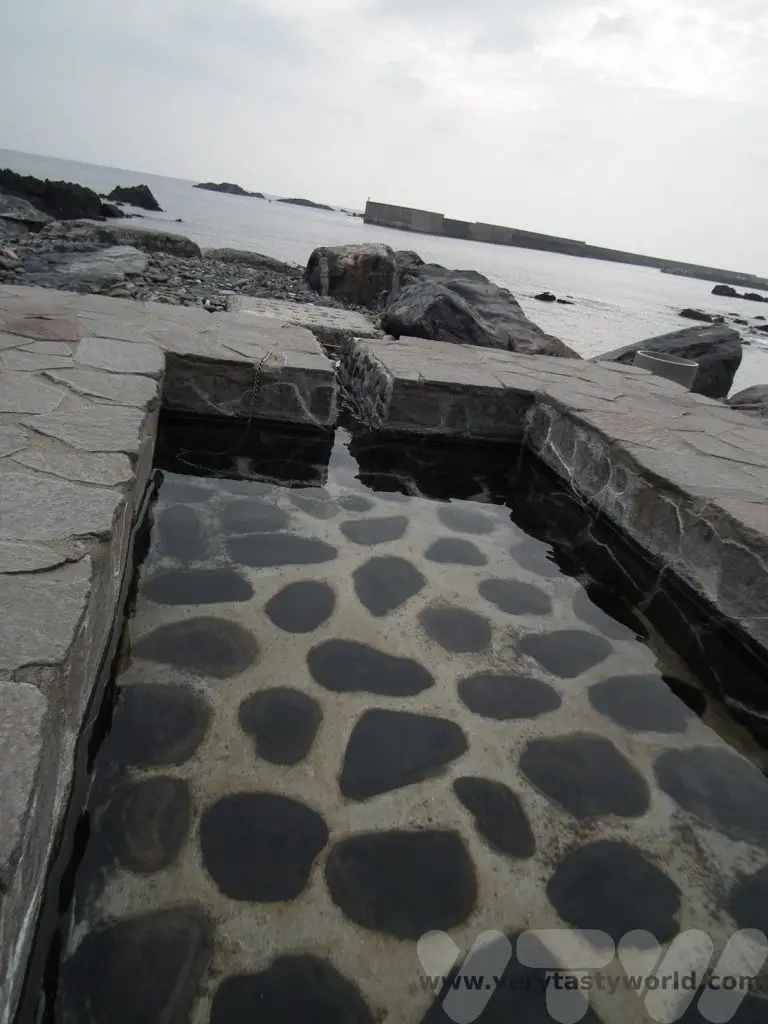
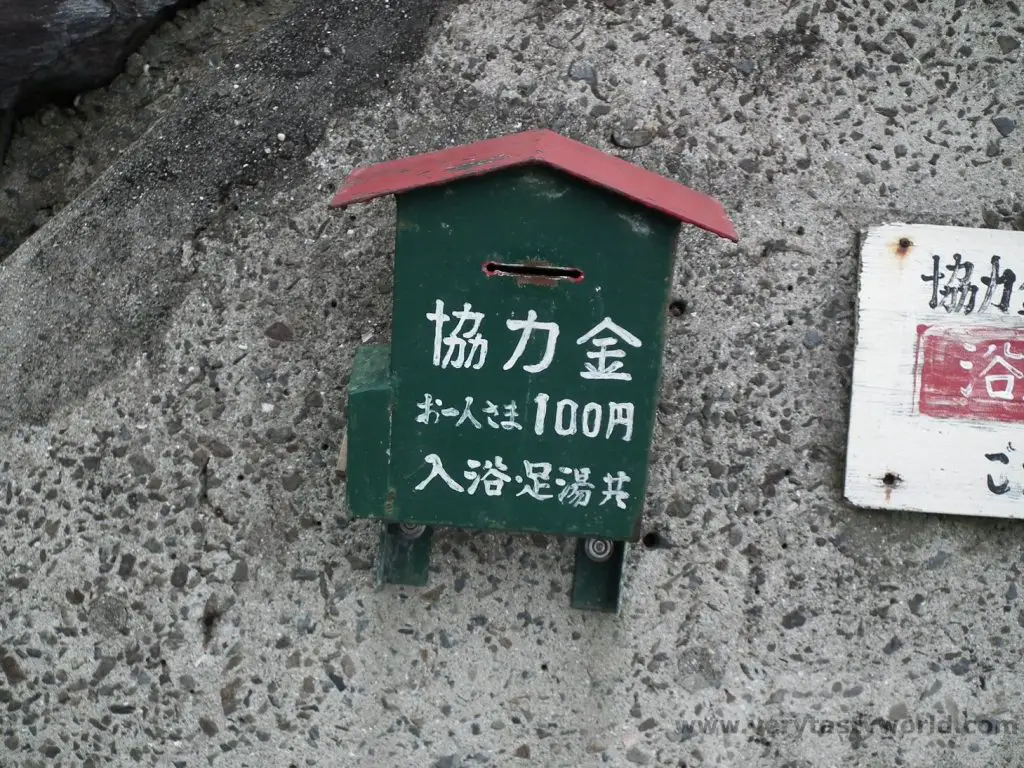
There’s an honesty box for payment (N.B. the price has increased to 200 yen since we visited).
Sempiro-no-taki is another impressive waterfall which falls across an extensive granite gorge.
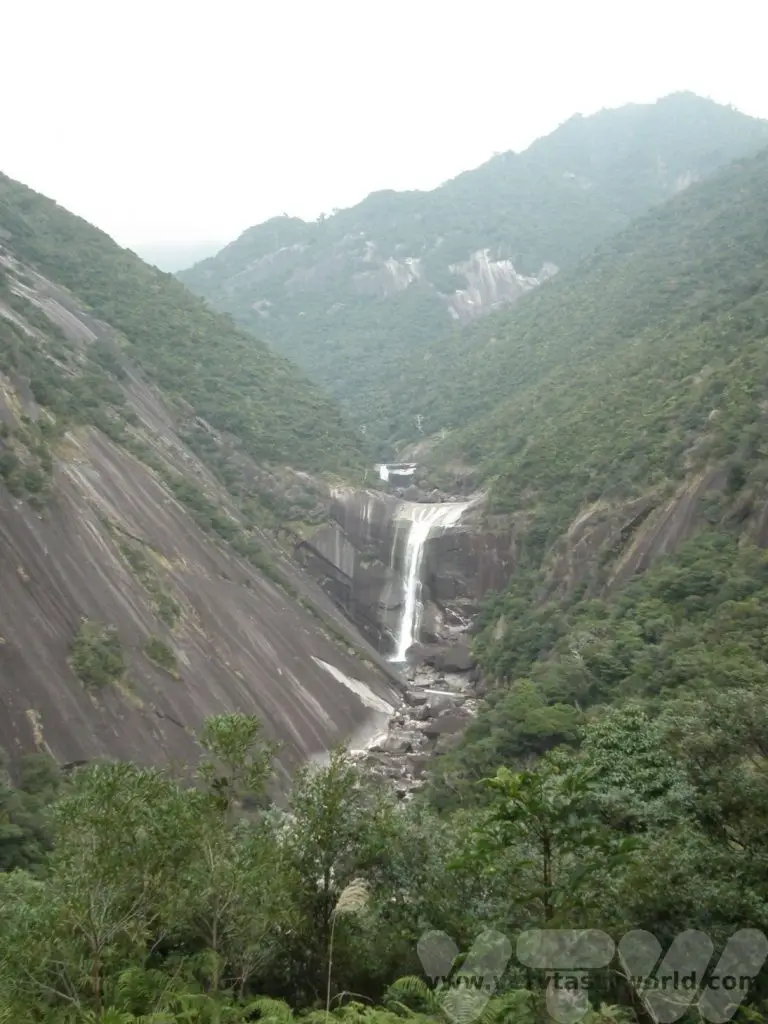
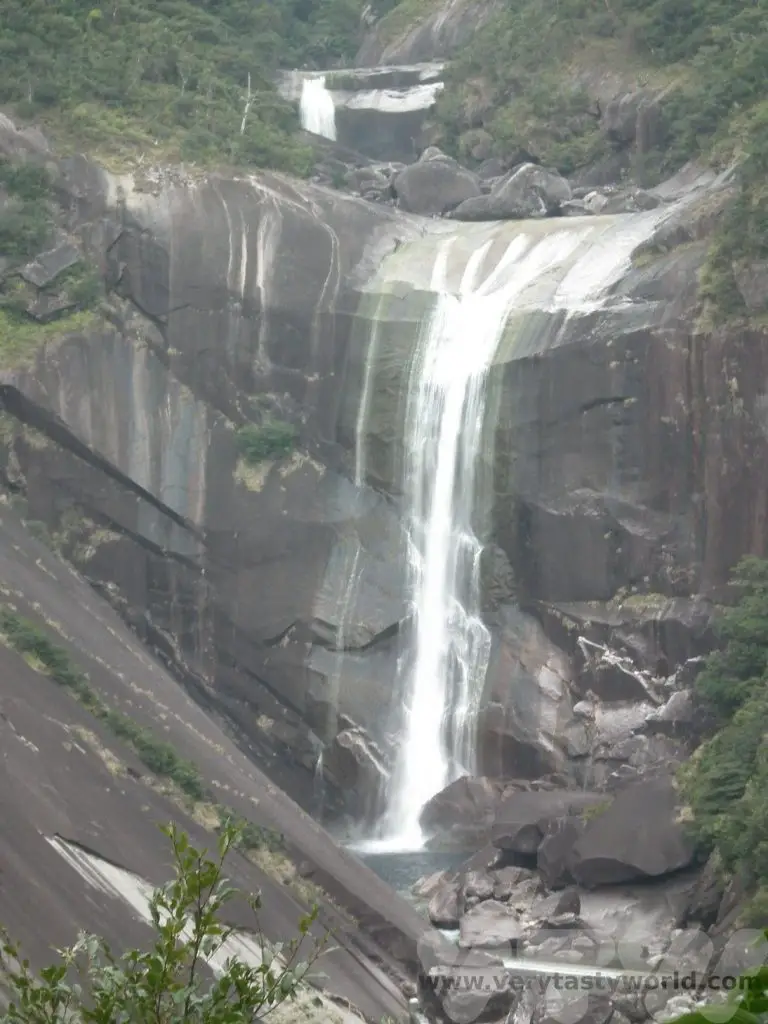
Toroki falls are just downriver from Sempiro and can be seen after walking a short distance from the road. You can see the vermillion bridge in the background.
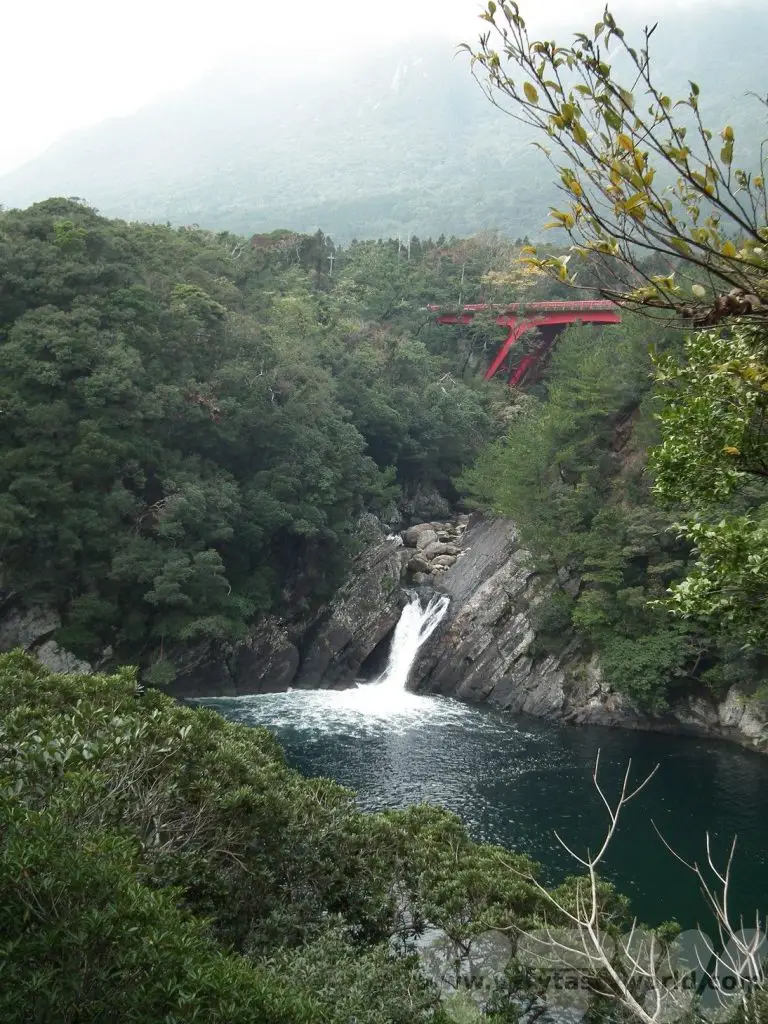
Then it was time to head north towards Anbo port. There was a convenient petrol station right by the turn off to the port’s car park so we filled up the car and experienced the best in Japanese service – a full tank of fuel, windscreen cleaned and, best of all, the attendants running out to the road to stop the traffic so that we could exit the petrol station. Then it was a hop onto the boat to return to Kagoshima.
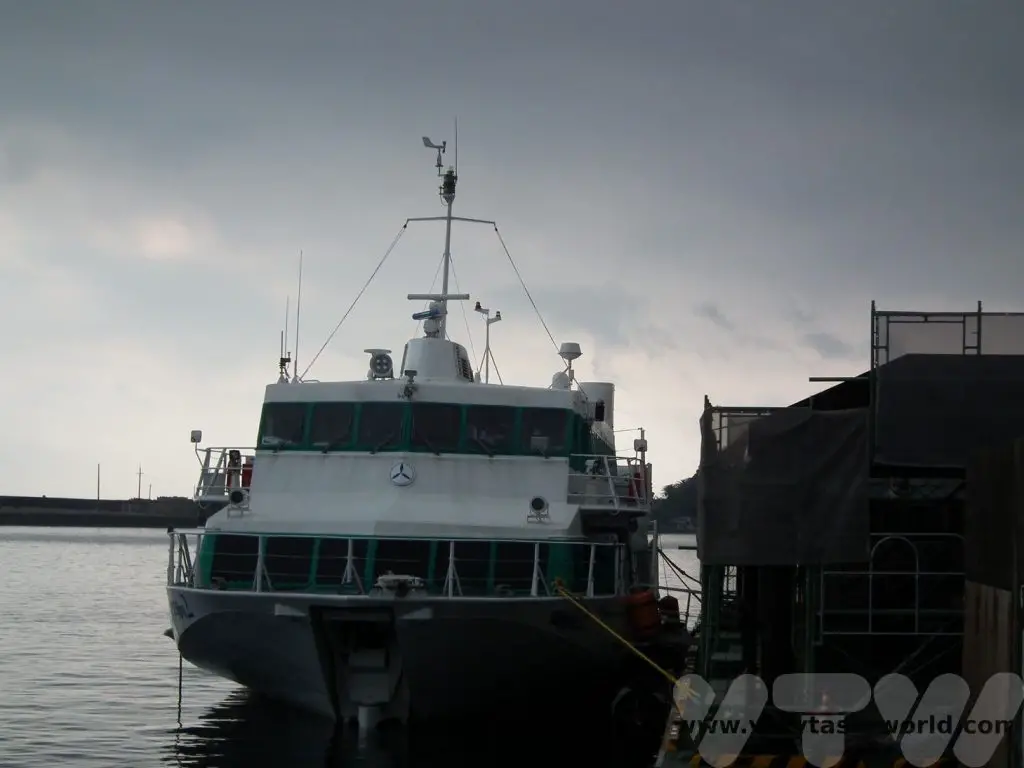
Yakushima is a destination that is off the beaten track but it is a beautiful island with plenty of walking, terrific food and delightful people. It’s a bit of a journey to get there but if you manage to visit you will not be disappointed.
Related Posts You May Enjoy

- Recipe: Simmered Shiitake Mushrooms

- How to Use Public Transport in Japan

- RECIPE Oyakodon Donburi

- Planning a Trip to Japan

- The Makanai: Cooking for the Maiko House

- Setsubun Food – Bean Throwing Day

- The Gassho Farmhouses of Rural Japan

- Recipe: Japanese Simmered Pork Belly – Buta no Kakuni

- RECIPE: How to Make Umeboshi

Best Of Budapest in 2 Days
Budapest is a lively and cosmopolitan city with a fascinating history and loads of interesting sights to see. A city split in two, Budapest straddles the broad and serene Danube river – hilly Buda lies to the west and the flatter Pest is on the eastern side of the water. It’s a very beautiful city and its centre is ideal for walking around. Here’s how to enjoy the best of Budapest in 2 days.
Two Days in Budapest
A little bit of preparation: If you wish to visit the Hungarian Parliament building it is worth considering booking in advance. Check the official website to make sure that tours are available on the day you plan to visit. On the door tickets are available but may require some queuing.
And, a slightly unusual packing suggestion for a city break – don’t forget to bring a swimsuit if you want to bathe in the thermal baths.
Please note that this post contains affiliate links. If you decide to click and book a tour we will get a small commission, at no cost to you, which helps towards running this site.
Day 1 – Morning Historic Walking Tour
Budapest is an eminently walkable city, perfect for a walking tour. There are all sorts of options, from a general historic tour to a communism tour and even street art. Some are ostensibly free (although it is appropriate to tip the guide at the end) and others are pre-paid. All will propose a meeting place, usually a central square in the city.
From Pest to Buda
Our walk started at St. Stephen’s Basilica in Pest, which served as a meeting point. The basilica is named for St Stephen, the first king of Hungary. Apparently his right hand has been mummified is retained within the church. One of the tallest buildings in Budapest (along with the Parliament building), it has two bell towers. The southern tower houses the biggest bell in Hungary, a monster weighing 9 tonnes.
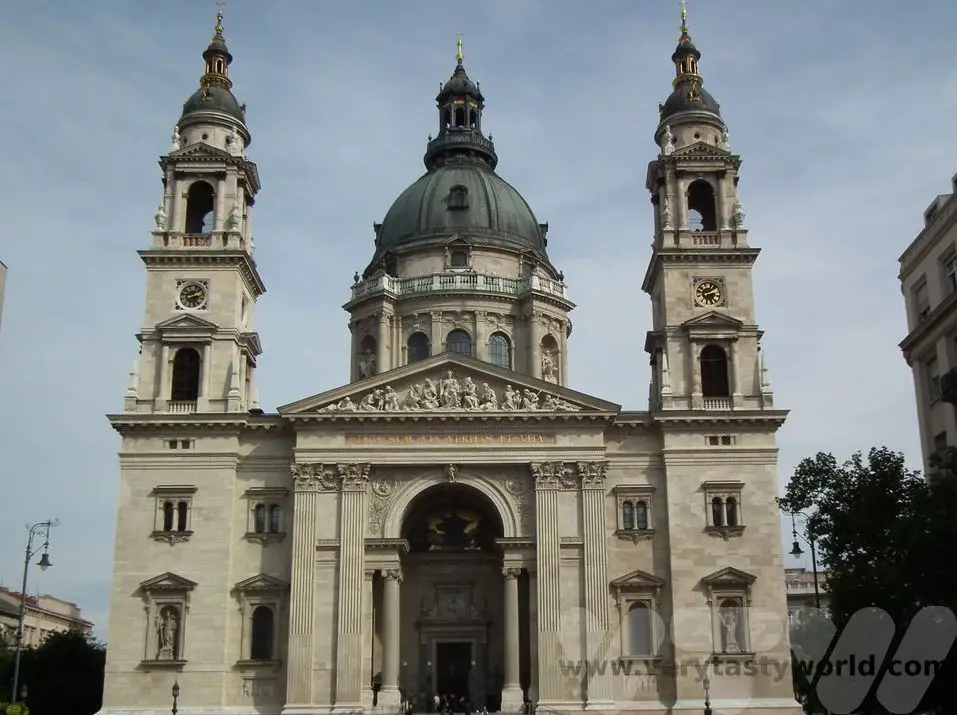
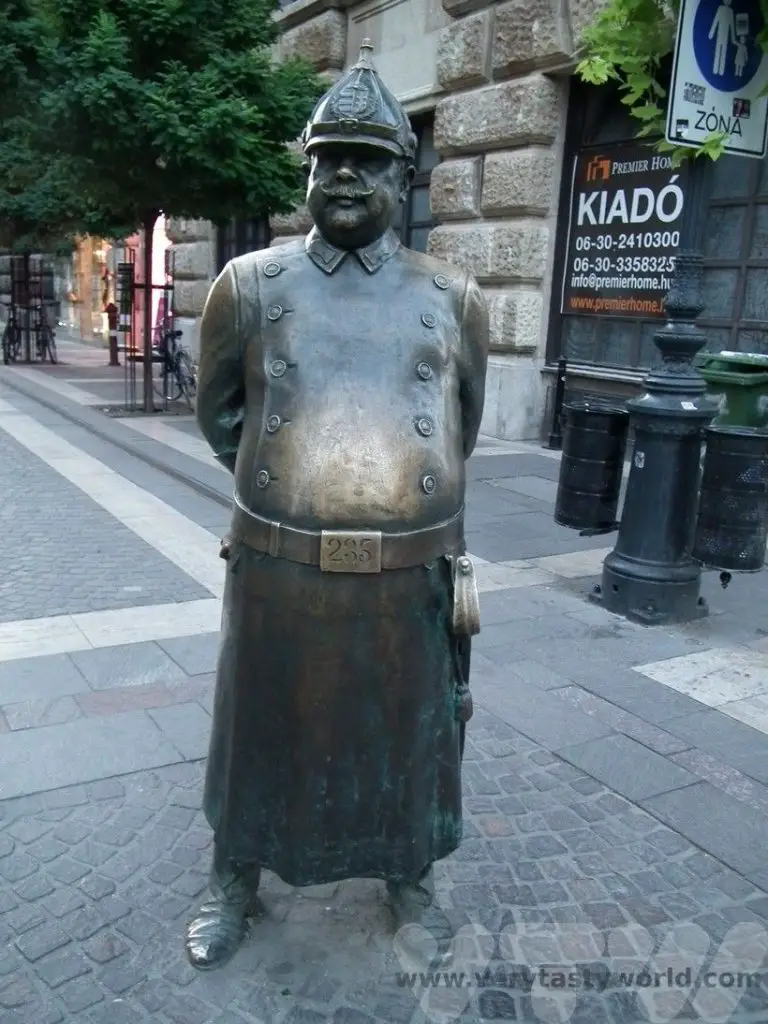
The walk took us towards the river and we passed the tubby policeman statue. Also known as Uncle Karl, there’s a legend that if you rub his portly belly you won’t get fat and can eat as much delicious Hungarian cuisine as you wish. Of course we didn’t believe it as we had already decided that we were going to enjoy as much food as possible anyway!
Although the walking tour starts in flat Pest, the majority of the time was spent in hilly Buda. We crossed the Chain Bridge, which spans the river Danube. Its formal name is the Széchenyi Chain Bridge and it was constructed in 1849, the first permanent bridge in the city and, at the time, considered to be an engineering marvel. Actually, it still is an engineering marvel.
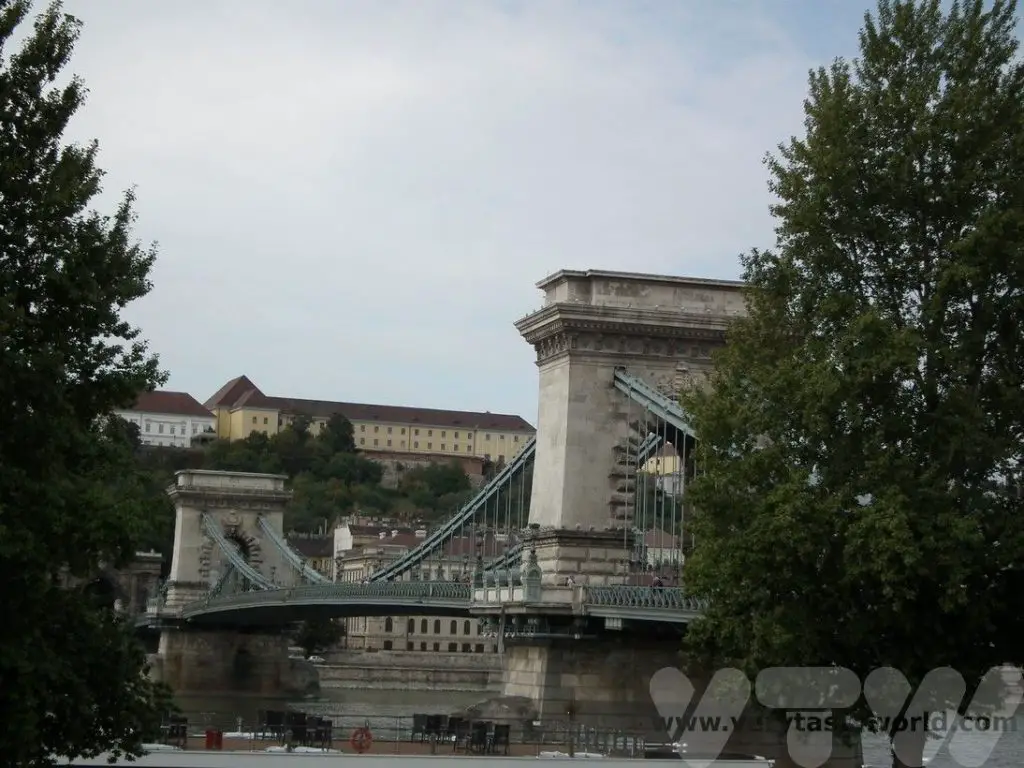
Then it’s a climb up the hill to visit some of the historic buildings located in Buda.
Royal Palace
King Bela IV decided to build his residence on Castle Hill in 1247 and completed it in 1265.Over the centuries subsequent kings expanded and developed the site, notably King Sigismund, a Holy Roman Emperor, who constructed it to become the largest palace of its time. King Matthias Corvinus also added a number of buildings.
However, like many of the city’s great buildings, the palace was badly damaged during the Ottoman era. It was reconstructed and added to over the centuries only to be destroyed during World War 2. It was rebuilt and modernised during the 1950s, with help from Polish architects, who had overseen the reconstruction of Warsaw. Some of the mediaeval parts of the castle were found and reconstructed to the best knowledge of the architects. It is a magnificent and extensive building.
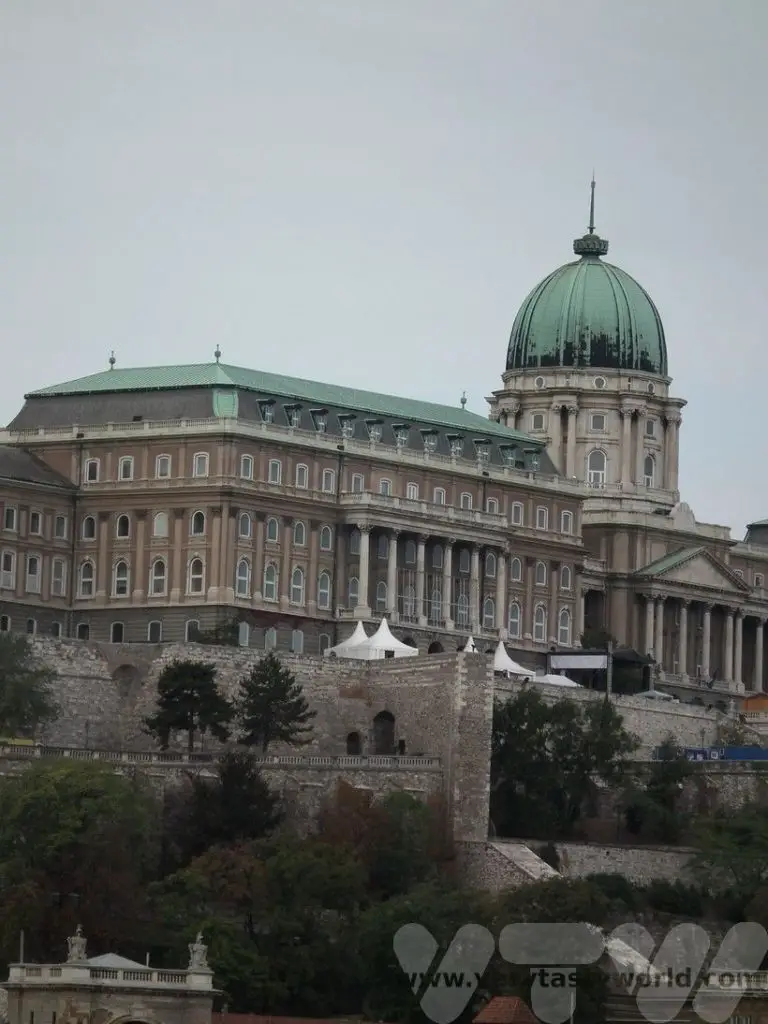
Matthias Church and Fisherman Bastion
A church with a long history that has reflected the fortunes of the city, Matthias church was founded as the Church of Mary in 1015 by Saint Stephen, the first Hungarian king. Of course, it was a much more basic structure then. It became a Roman Catholic church when King Bela IV moved the Hungarian royal residence to the hills of Buda in the 13th century and was further adapted in the 15th century by King Matthias Corvinus, who notably added the bell tower, named after him.
However in 1526 the city was invaded by the Ottomans who converted the building into a mosque and took many of its artefacts. The church was restored after liberation from the Turks, and redesigned to its present form in the 19th century. It is a truly beautiful building, a living church that has a central place in the community which offers many events throughout the year, including concerts featuring the Hungarian Virtuosi Chamber Orchestra.
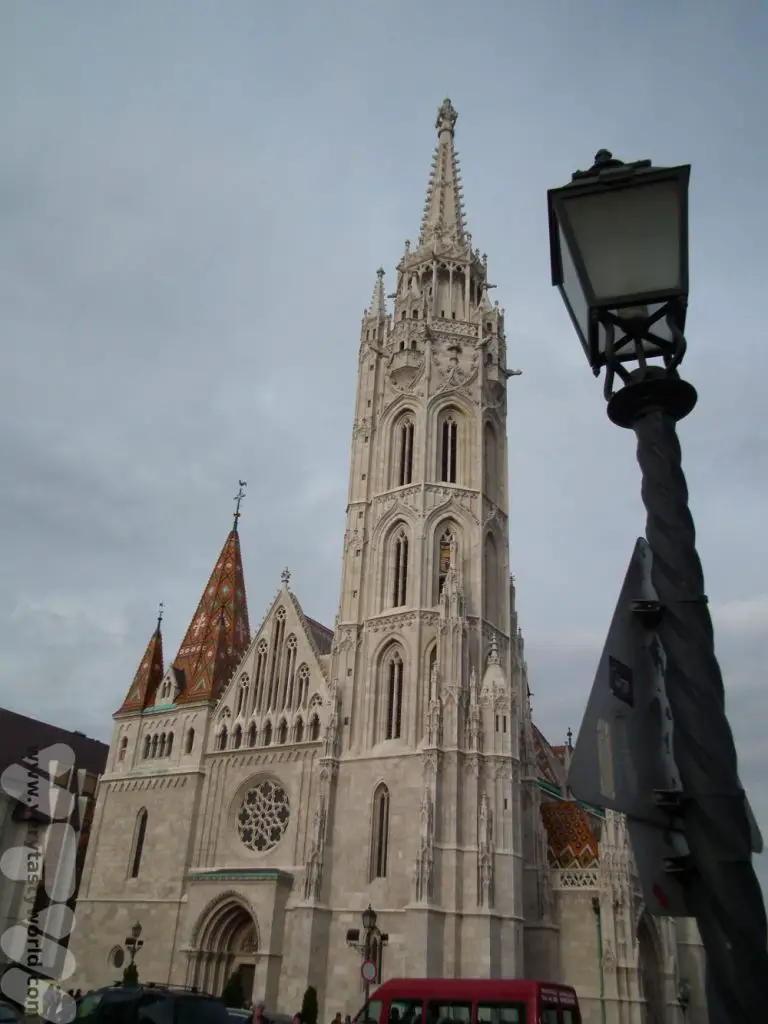
The origin of Fisherman Bastion’s name is that the guild of fishermen protected that section of the castle walls in the area known as Fishtown. Its main structure was built between 1895 and 1902 by Frigyes Schulek (who restored the Matthias church as well), another very beautiful building.
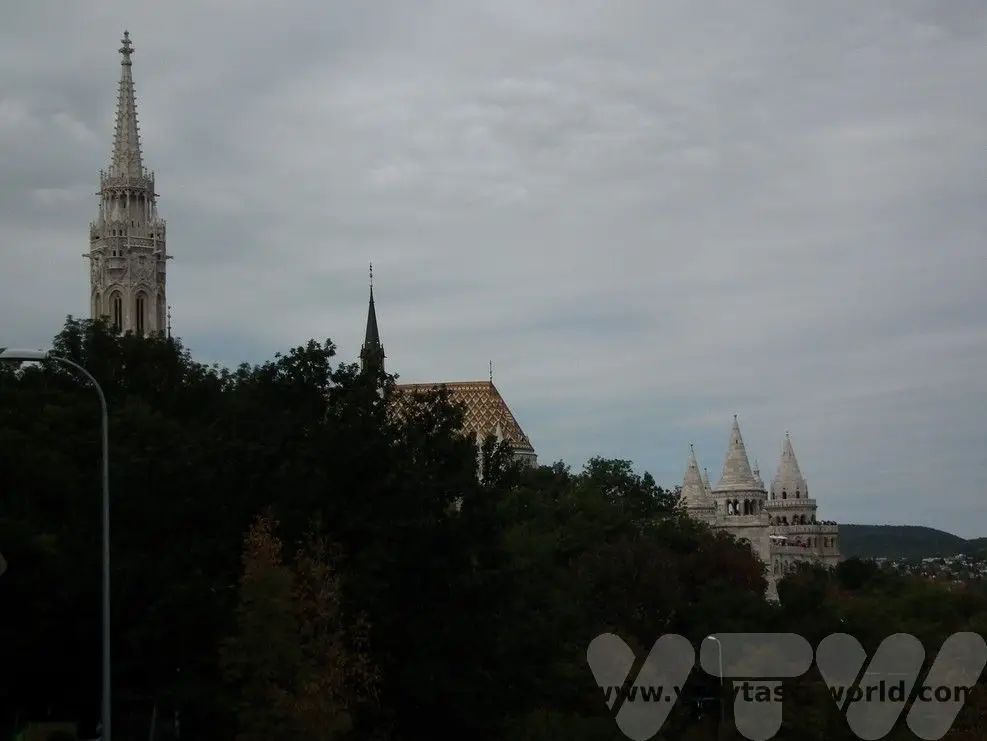
Fisherman’s Bastion affords some fantastic views over the Danube, especially to the Hungarian parliament building.
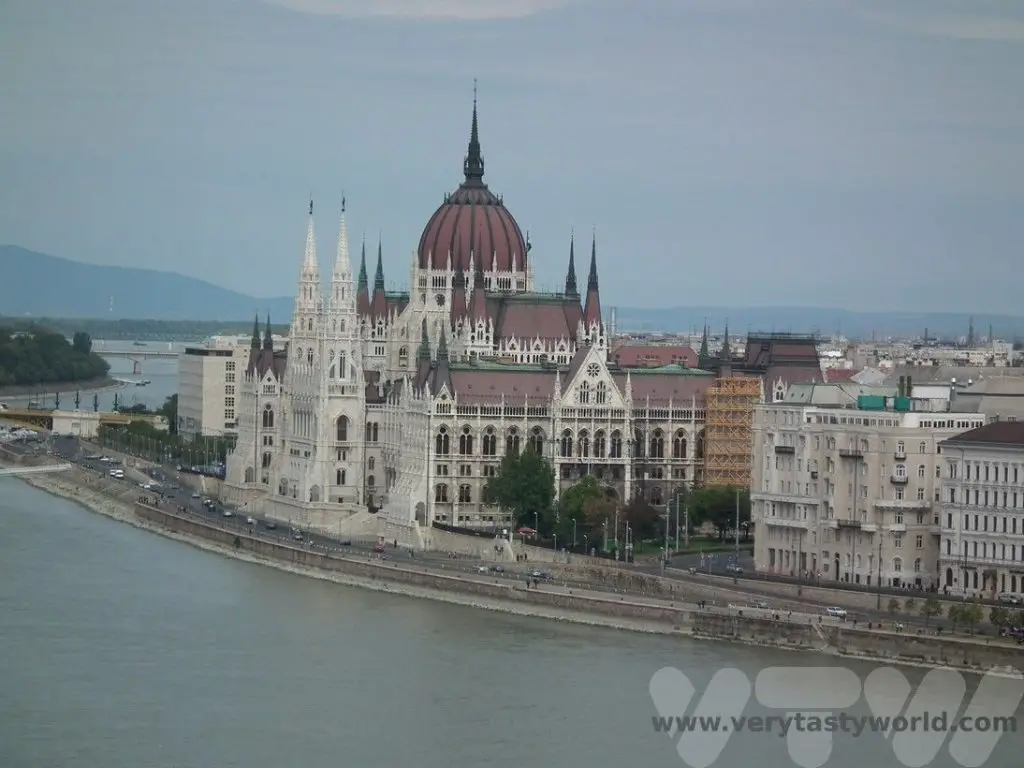
Day 1 – Afternoon
The walking tour introduces you to the key buildings but doesn’t take you inside, so you might want to hang around the area in the afternoon to explore Buda in more depth. The winding streets on Castle Hill are lovely to walk through. You can visit the castle building. Although you have to pay to visit the castle itself, the grounds are free to enter.
Sometimes there are food markets in the area. One of the essential street foods to try when visiting Hungary is Kürtoskalács. These spirals of delight, the name referencing a chimney due to its elongated shape, are a sweet dough wound around a cone, rolled in sugar and roasted over a spit. The sugar caramelises and you have a sweet, twisted pastry to eat. They are sometimes rolled in nuts or cinnamon for delicious variations.
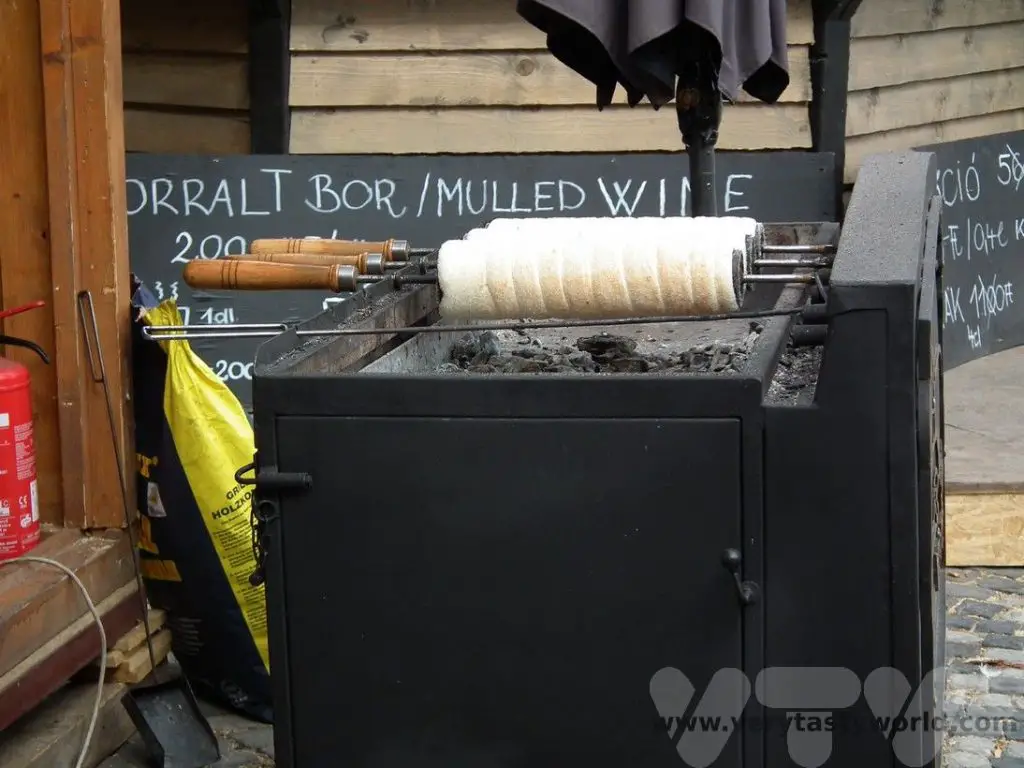
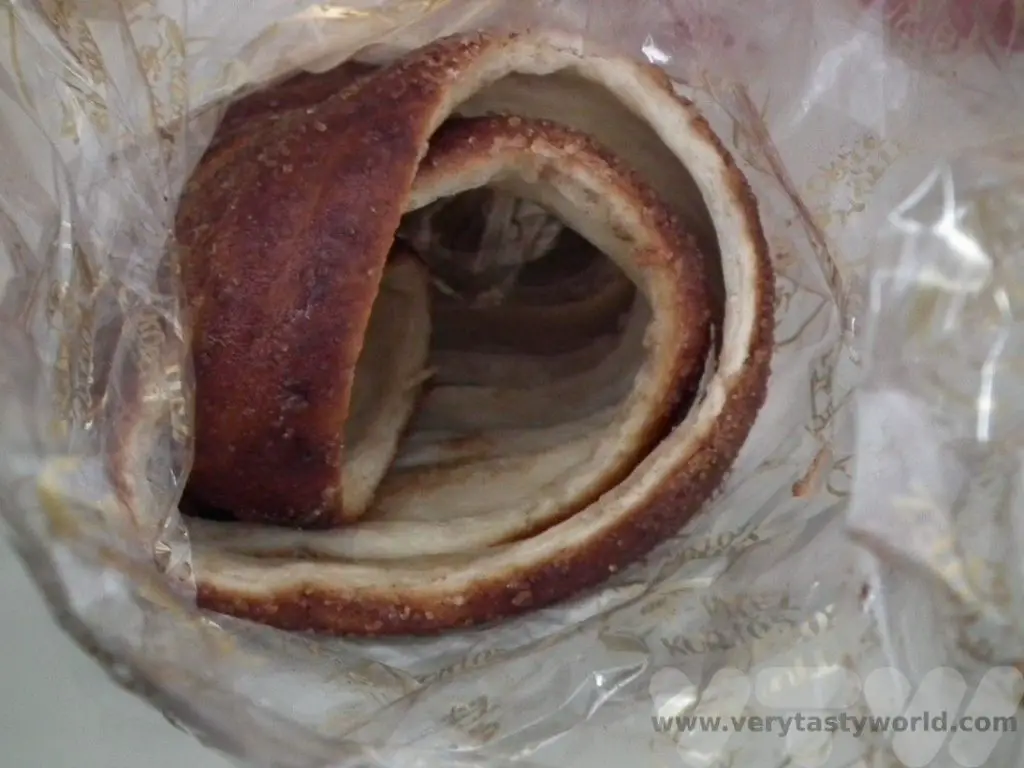
Visit Parliament Building
An alternative to spending time on Castle Hill is to visit the Hungarian Parliament. It’ll take around half an hour to walk there from the palace area. To British people this magnificent building looks very familiar. Hungary’s neo-Gothic parliament building was designed by Imre Steindl, who won a competition to design a building that represented the unity of the three cities – Buda, Pest and Obuda (now District III-Óbuda-Békásmegyer) – which joined together in 1873.
The architecture bears a strong resemblance to the British Houses of Parliament, London’s Palace of Westminster, because the Hungarian politicians of the time wanted to demonstrate a commitment to Western European political role models, notably Britain. (How times have changed!)
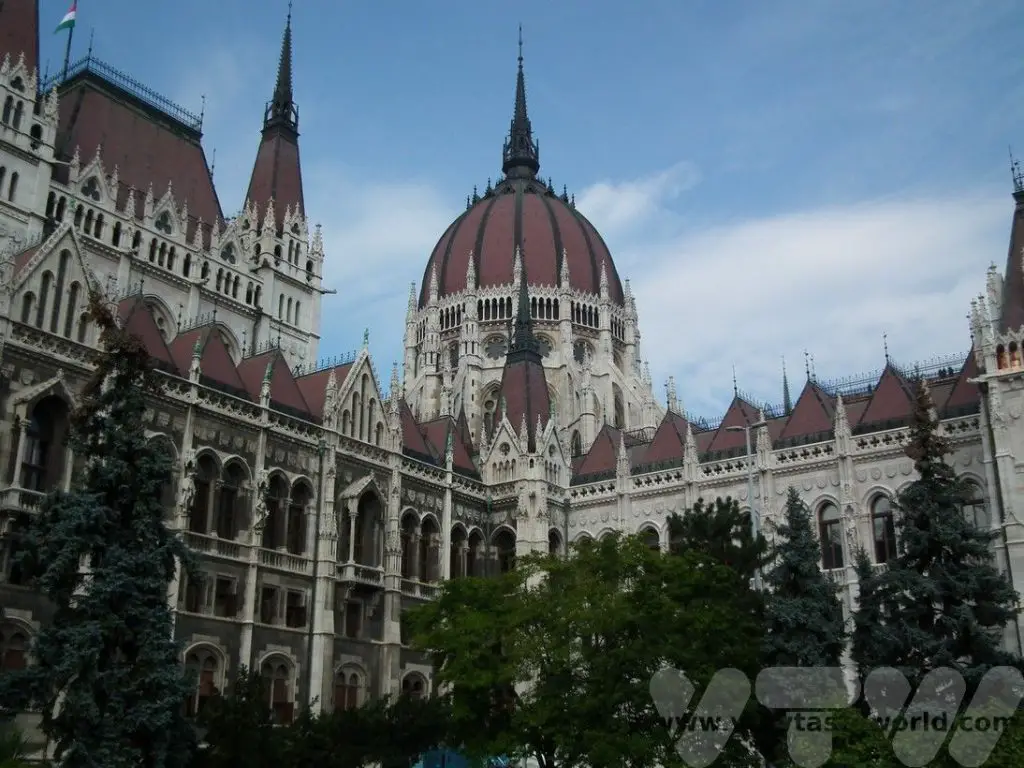
Guided tours are available but not on all days, so it’s worth checking – and booking – in advance.
Day 1 – Evening Boat Cruise on the Danube
It’s a very touristy thing to do but a boat trip along the Danube at night, with the bridges and buildings lit up, is a delightful way to spend the evening. There are lots of options from a simple boat trip to a full dinner service. We chose a drinks cruise because we wanted to enjoy the cityscape whilst enjoying a tipple and figured we might miss the best views if we were scoffing our dinner at the same time. It was perfect for us but there are all sorts of options to suit different budgets.
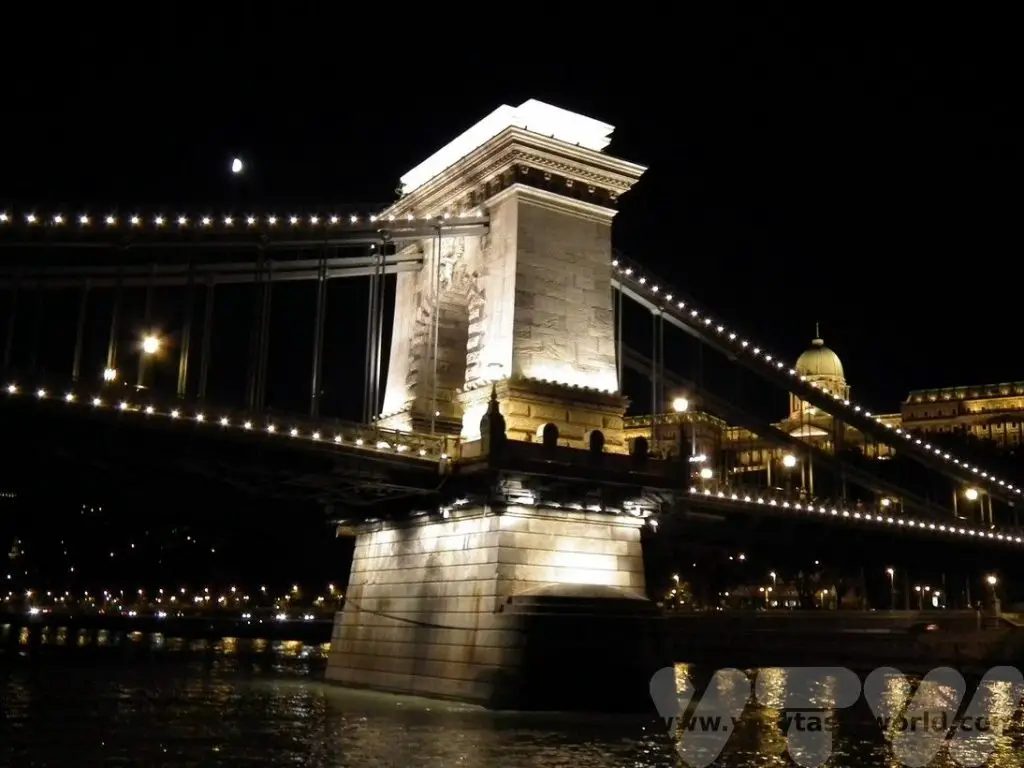
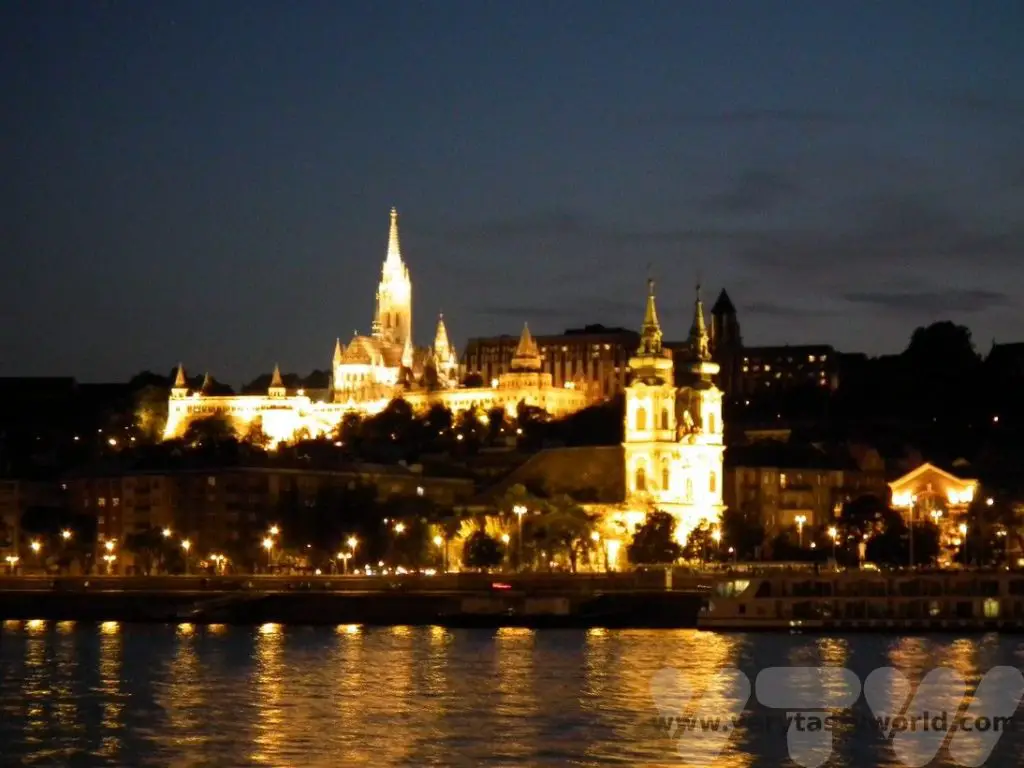
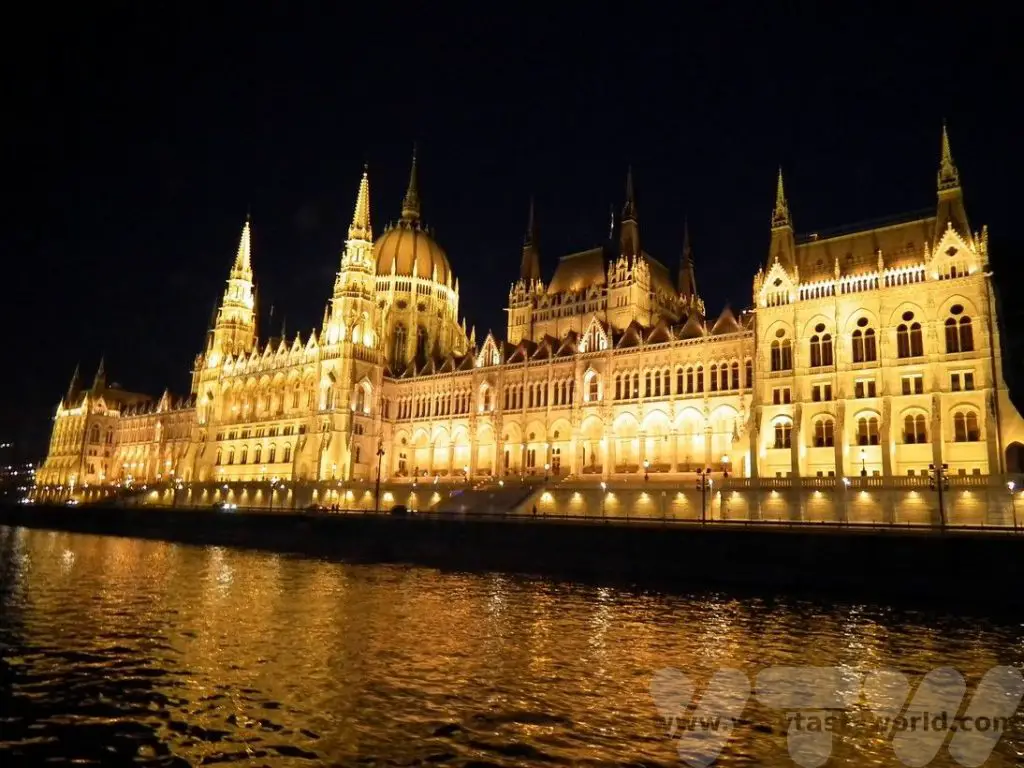
Day 2 – Morning
Explore Pest – A Communism Walking Tour
To complement the general city tour this was a genuinely fascinating insight into life under communism. Led by people who recalled their experiences, it was a good way to understand Budapest’s modern history through their personal stories as well learning as how communism influenced the city throughout its 20th Century history.
The country’s history of communism started in World War 2 when Hungary joined forces with Germany in 1940 and was involved with the invasion of the Soviet Union. By 1945 the Soviet army had defeated the invading armies and established themselves in Hungary, marking the start of communist rule. In 1956, a student demonstration escalated into a wider protest which was violently quashed by the communist leaders.
But it didn’t stop the protests and eventually the Soviet troops backed down, which led the people to believe that this might just be the start of a democratic process. However a few months later, the country was suddenly and unexpectedly invaded by a huge Soviet force who entered the city in tanks, killing many Hungarian people and destroying multiple buildings. Many of the people involved in the uprising were imprisoned and killed.
The main revolutionary leader was Imre Nagy, widely regarded as a hero who, although a communist politician himself, stood for a reformed form of communism. He was captured and executed in 1958. A memorial statue was erected in his honour. It was initially located near the Parliament building and depicted him standing on a bridge, looking to the building, a symbol of democracy. The picture below shows Imre Nagy’s statue in his original location but, due to political changes in recent times, it was removed in 2018 to a different location in the city – Jaszai Mari Square.
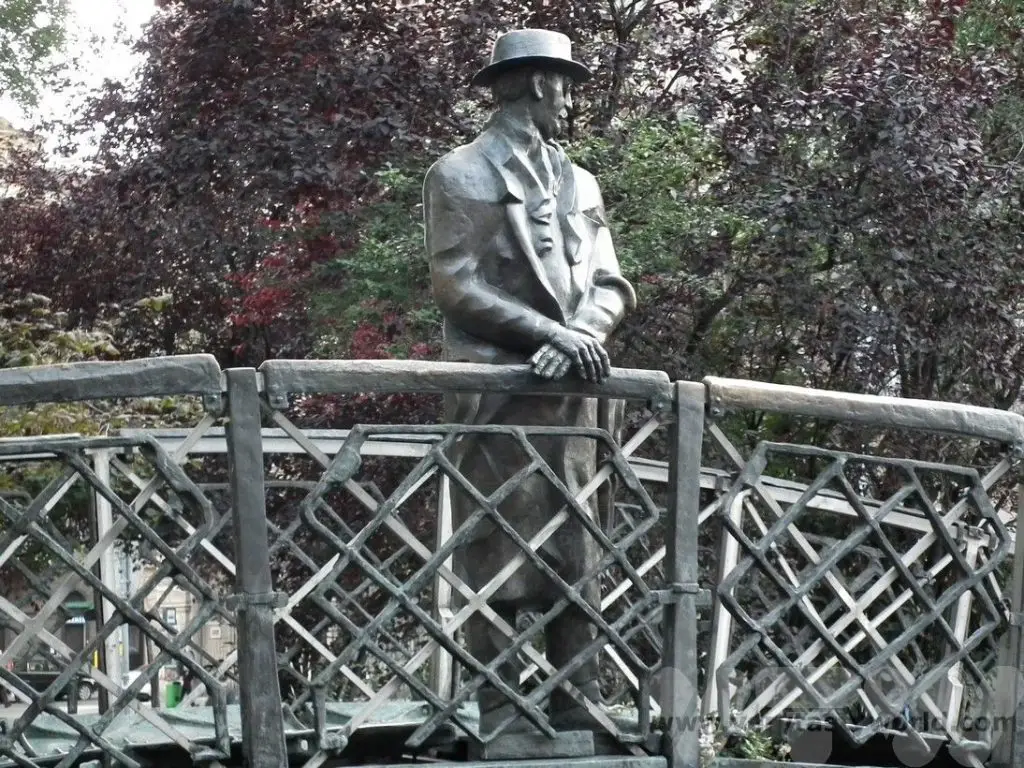
The tour was also really interesting from an architectural perspective. For example, take a look at the adjacent buildings in the photo below. The one on the left was built during the communist era – it is plain and functional, but importantly has seven stories of – somewhat cramped – building space compared with highly decorated and generous four stories of its neighbour, which was constructed over a century earlier.
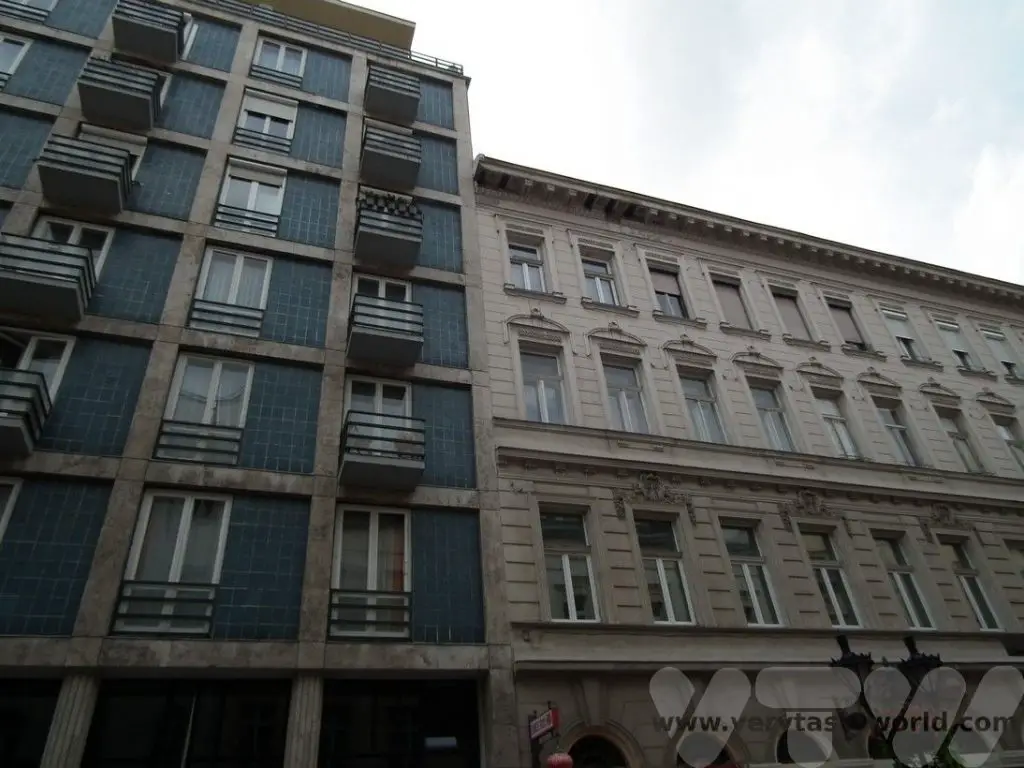
The Communist TV station, perfect for broadcasting all sorts of propaganda at the time, is housed in a magnificent building.
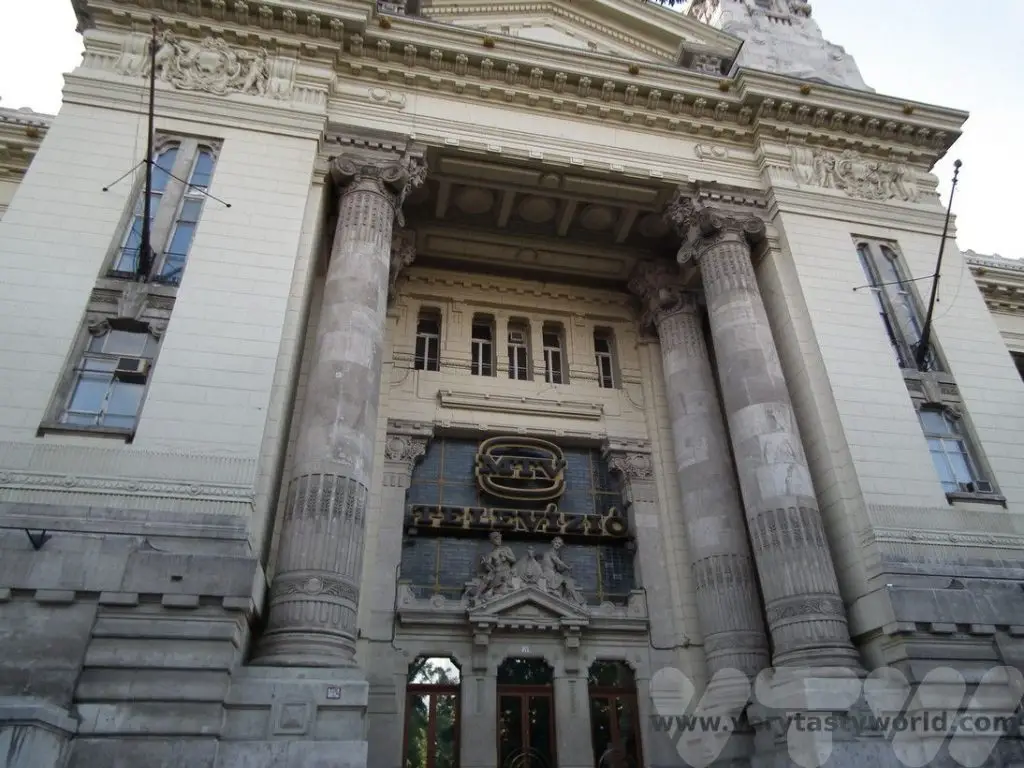
And if you need to see evidence of the number of conflicts, a large number of buildings still bear scars from multiple bullet holes.
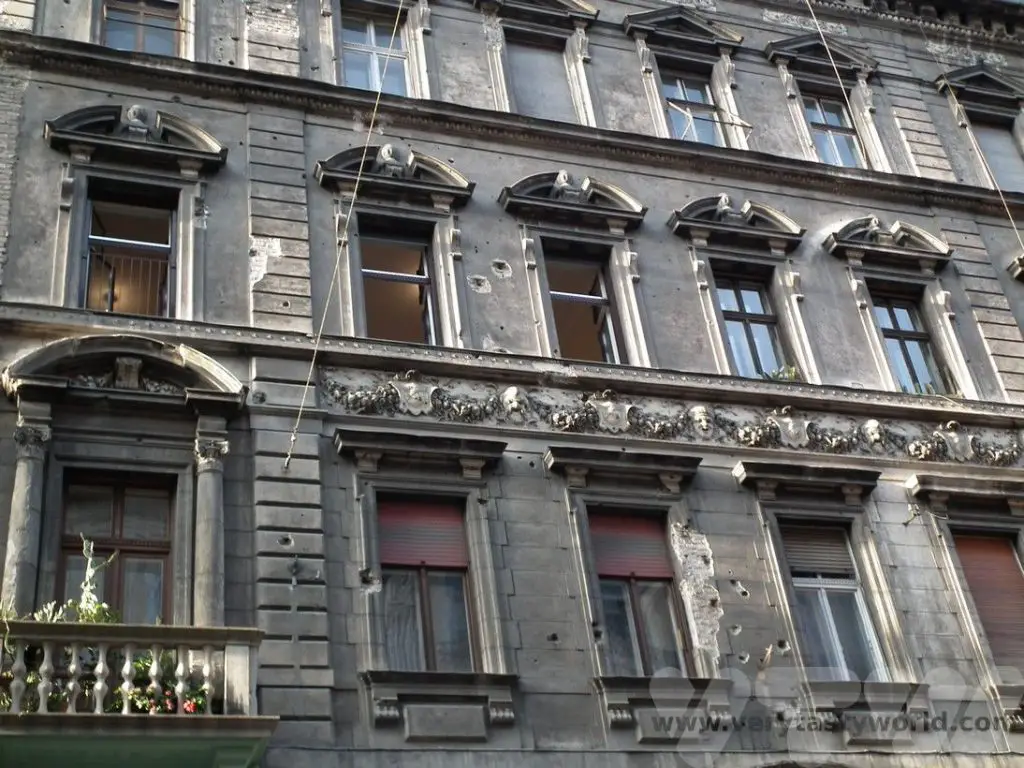
The whole tour was fascinating and particularly interesting because our guides could tell us about their personal lives under the regime.
Day 2 Afternoon
Franz Liszt Museum
Franz Liszt was Hungary’s most famous composer and a huge celebrity in his day – the phrase Lisztomania was coined to reflect the sheer frenzy of his adoring fans at his concerts. Housed in the building where he once lived, the compact Liszt Museum displays some of his music and personal possessions, as well as his piano. If you are interested in Liszt and classical music, it is worth stopping by.
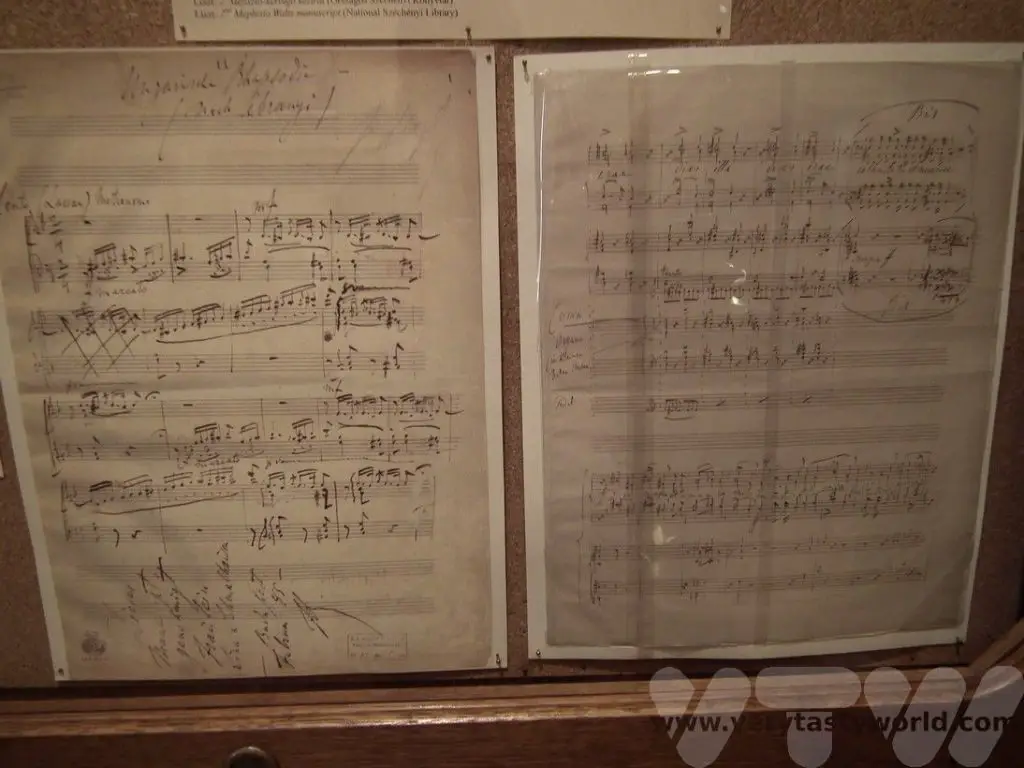

Heroes’ Square
Located on Andrássy Avenue, this is one of the city’s largest and most important squares, and features the Millennium Monument, which dates from 1896 and celebrates 1000 years of Hungarian conquest of the Carpathian Basin. It also has commemorative statues of the seven Magyar chieftains who led the Hungarian tribes when they arrived in the area in 895 CE.
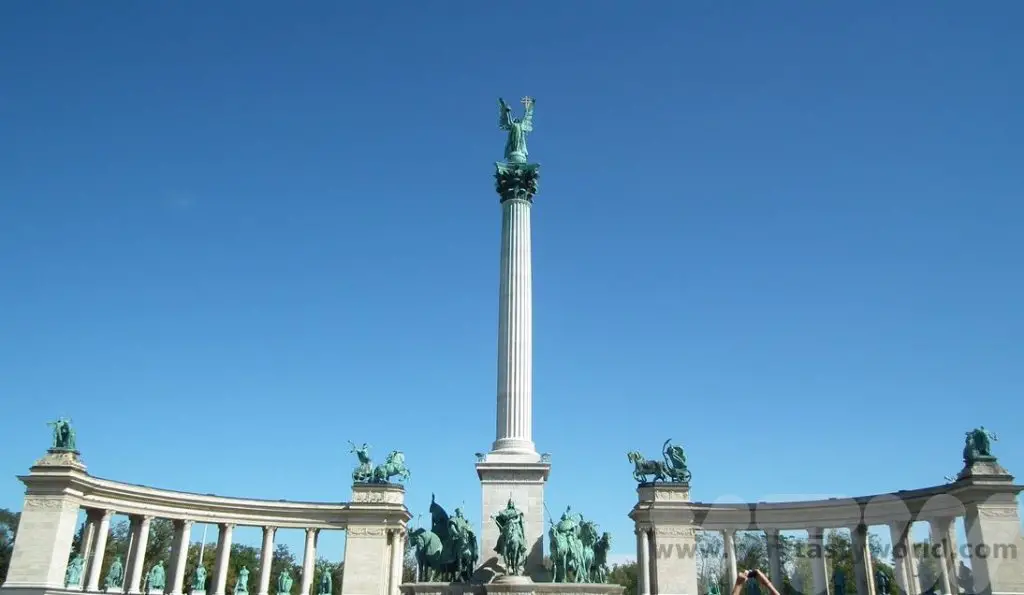
The Archangel Gabriel stands tall atop the central column, carrying the crown of St Stephen. Legend tells that Gabriel appeared to Stephen in a dream and bestowed the kingdom of Hungary upon him. The actual crown is kept in the Houses of Parliament.
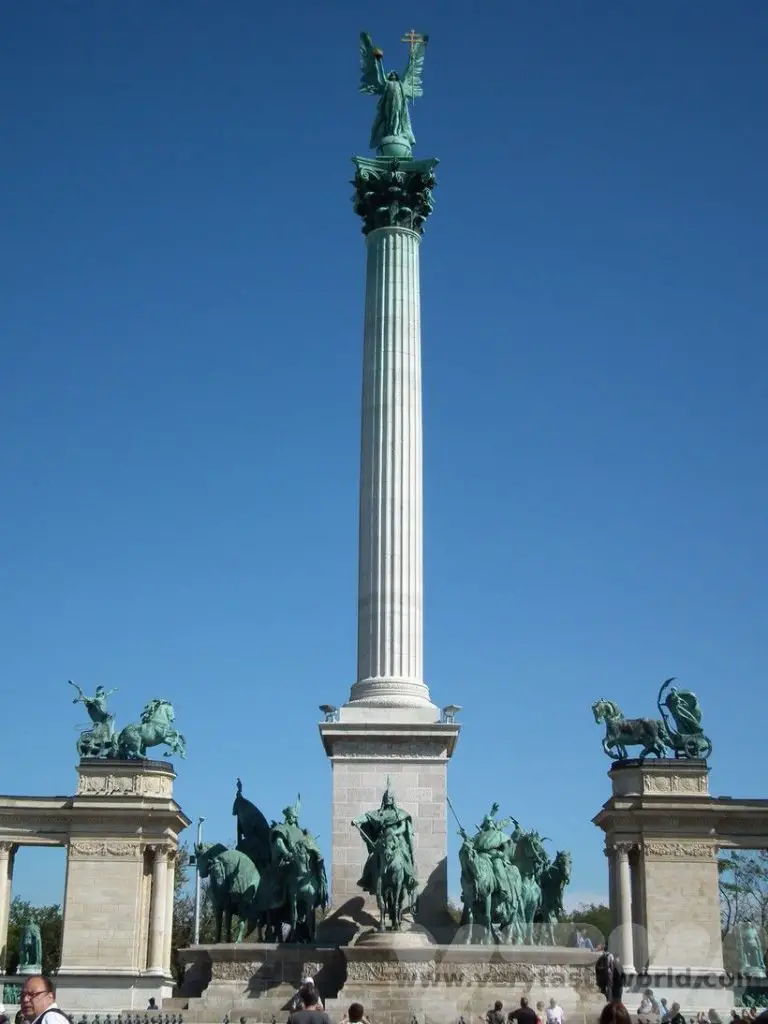
City park is located beyond the square and is one of the most popular green spaces in the area. It features some interesting architecture, including Vajdahunyad Castle, and is a nice place to relax.
The Museum of Fine Arts and the Palace of Art
Definitely worth a visit, these art galleries are located opposite each other on either side of Heroes’ square. The Museum of Fine Arts showcases permanent exhibitions from artists throughout the ages and includes works by some famous names. The Palace of Art, on the other hand, is a contemporary art gallery which doesn’t have a permanent collection but offers a variety of exhibitions of modern art.
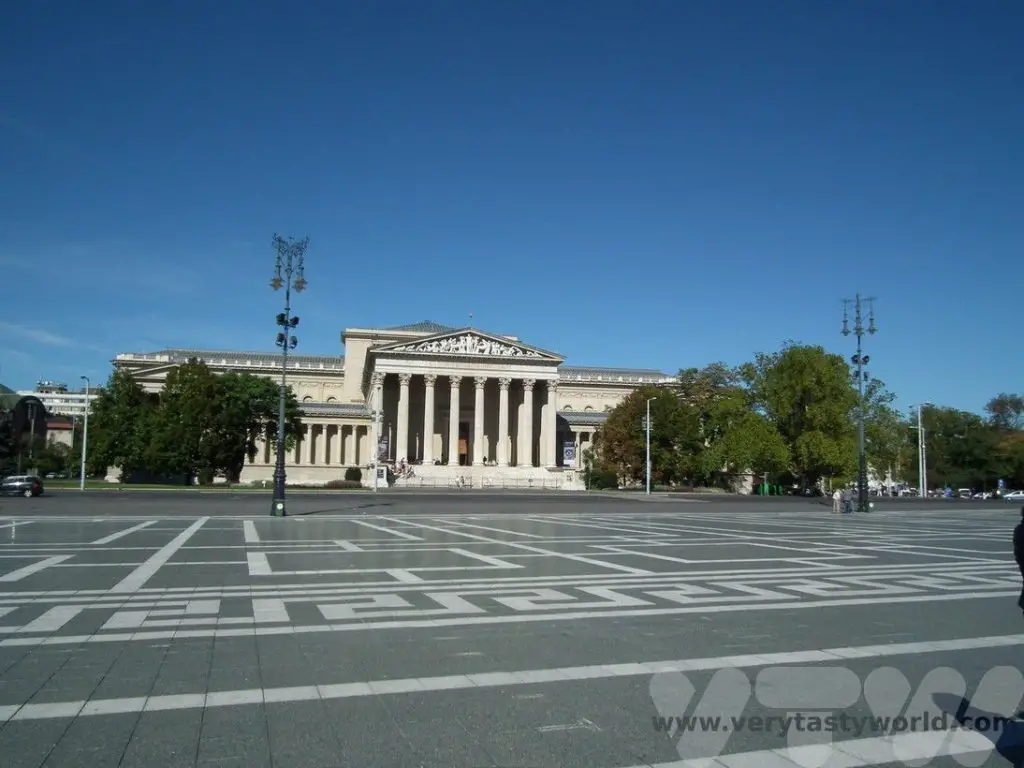
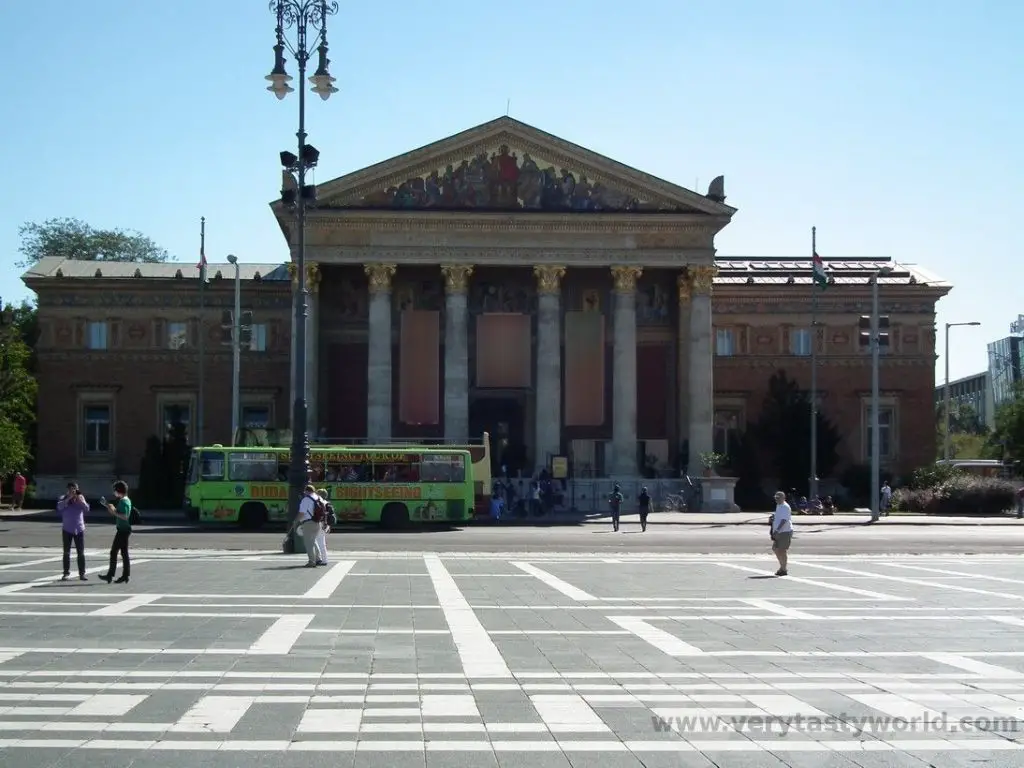
Visit Thermal Baths
Alternatively, if art isn’t your thing, the nearby Szechenyi Baths are one of the grandest thermal baths in Europe. Boasting fifteen indoor and three outdoor pools fed by two thermal springs, this is the perfect place to visit if you wish to enjoy some relaxing spa time.
Eating and Drinking in Budapest – From Grandiose to Grunge
Budapest has a huge variety of eating and drinking establishments.
We enjoyed a traditional Hungarian meal Paprika Vendeglo, a charming place with wooden décor and, as the name suggests, paprika hanging from the walls.
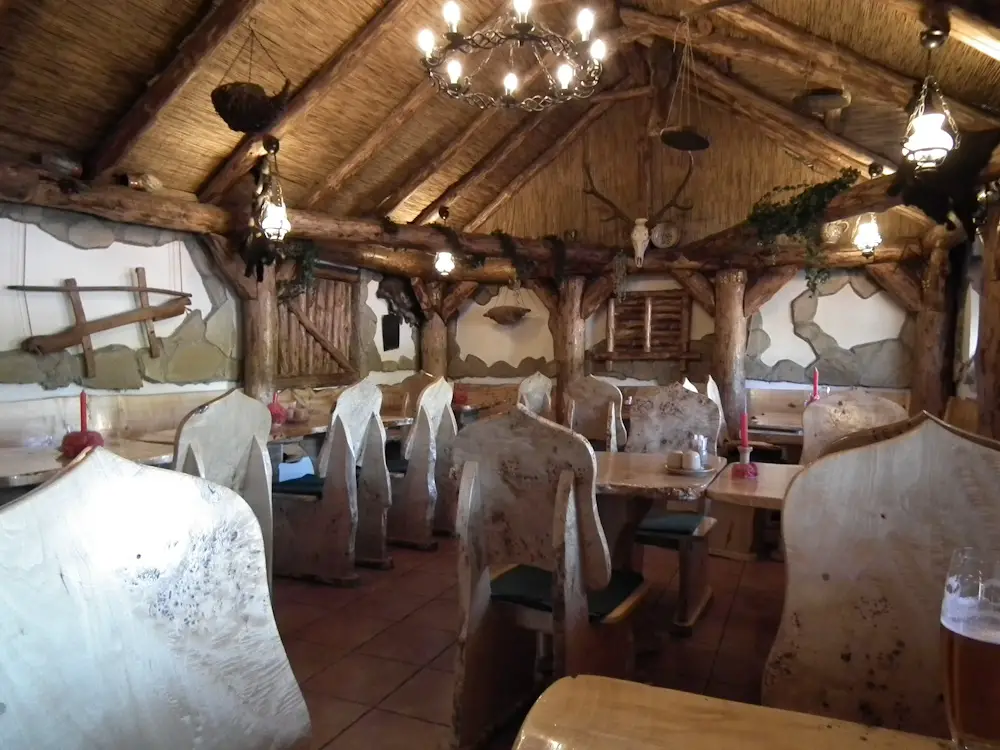
Goulash is one of Hungary’s most popular dishes. However, while we think of it as a stew in the UK, it is more likely to be served as a soup in Budapest. Other dishes involve lots of meat, cheeses and fresh vegetables, although veggie options are available. One thing that is particularly great about visiting Eastern Europe is the quality of fresh fruit and vegetables. Paprika is the traditional spice most associated with Hungary – it can be sweet or hot, powdered to use as a flavouring or as a vegetable. It guarantees a lovely gentle spiciness to many dishes.
If you’re after a bit of opulence (with the price tag to match), the New York Café describes itself as the most beautiful café in the world. It started out as a coffee house in 1894 and was hugely popular in the early 20th century. Its fortunes waxed and waned and it was left for derelict after World War 2 and became a sports shop. However, it was revitalised as a café in the 1950s and was completely renovated to its former glory in 2006.
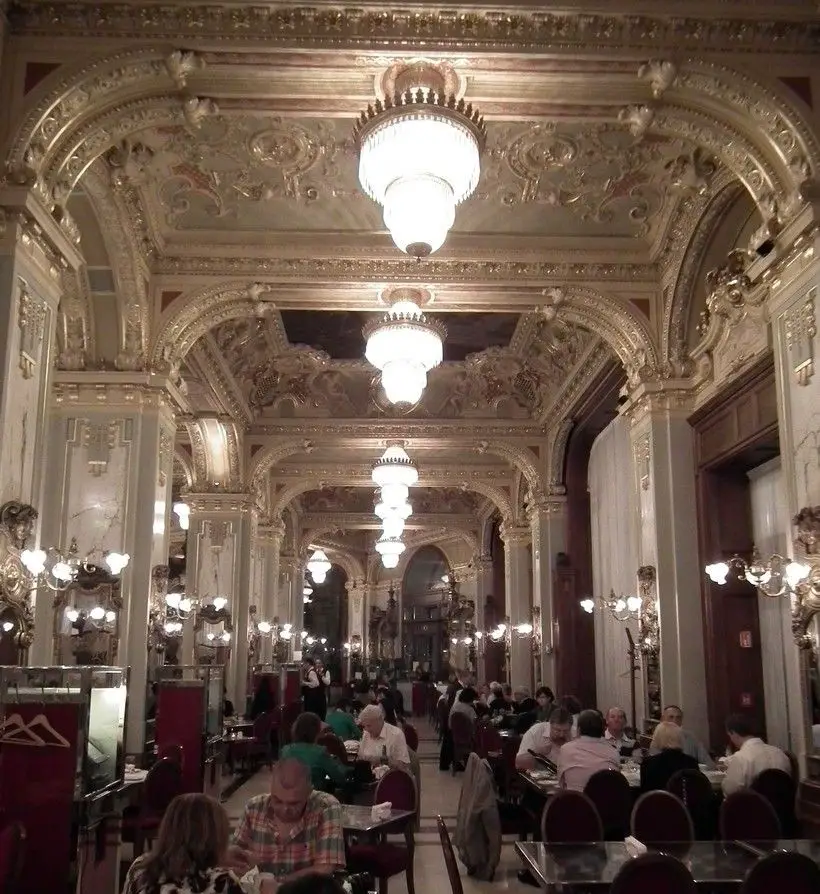
It offers coffee house fare as well as fine dining. You can only make a reservation for dinner in the evening so be prepared for a queue at busy times during the day. We enjoyed a lovely dinner there but check out the reviews as they can be somewhat mixed.
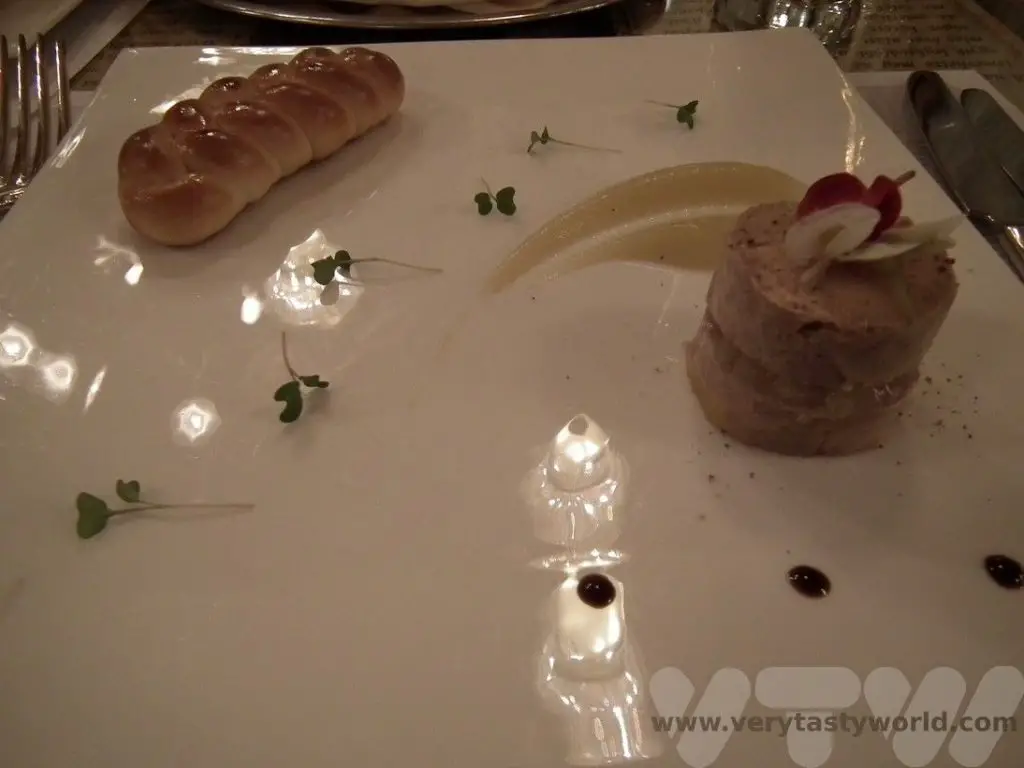
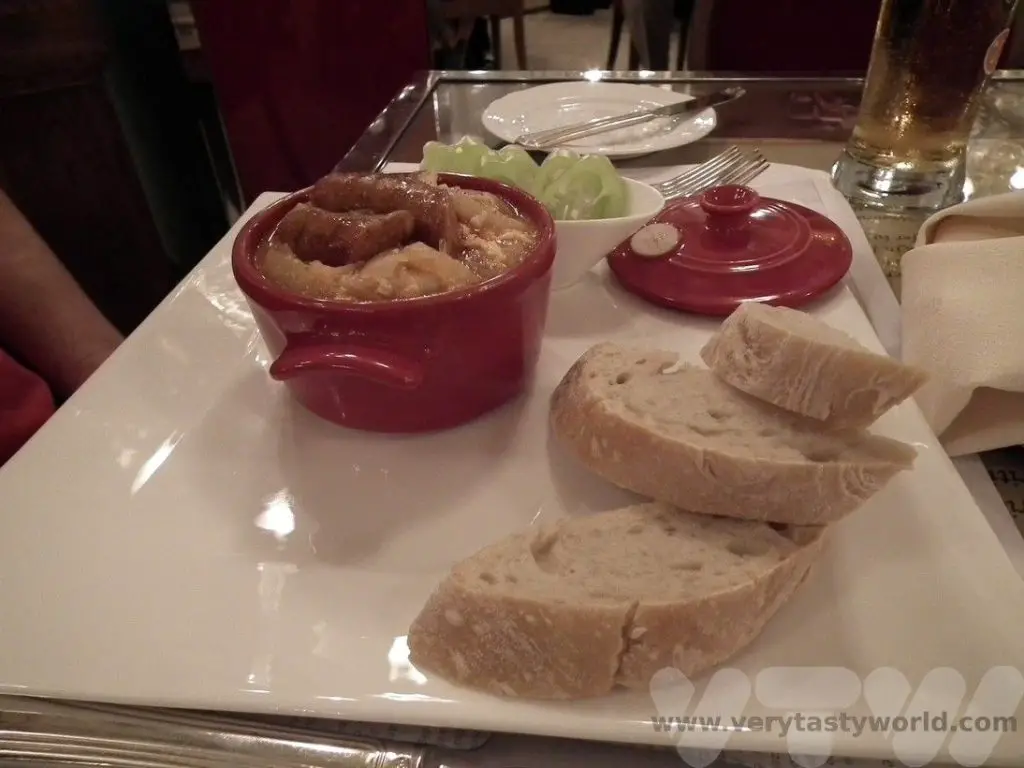
And at the opposite end of the spectrum you may well be in need of a beverage to quench your thirst at the end of a busy day’s exploring. And if you want a drink you can do a lot worse than to visit a ruin bar.
These are grungy bars that were originally set up in abandoned buildings in the city’s VII district in the early 2000s, providing cheap drinks and a lively sociable atmosphere. They are characterised by quirky décor and random bits of furniture that fill every nook and cranny within the building. Some have been established for years, others pop up for just one summer then vanish into obscurity. Some have projections of films on the walls, others play music.
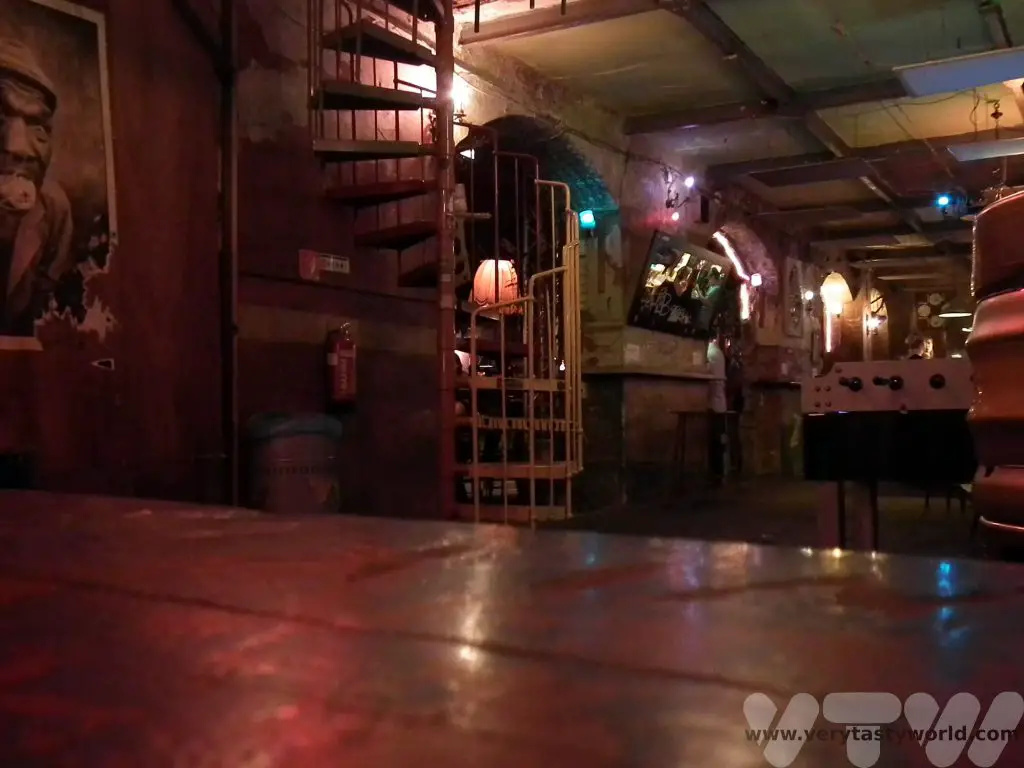
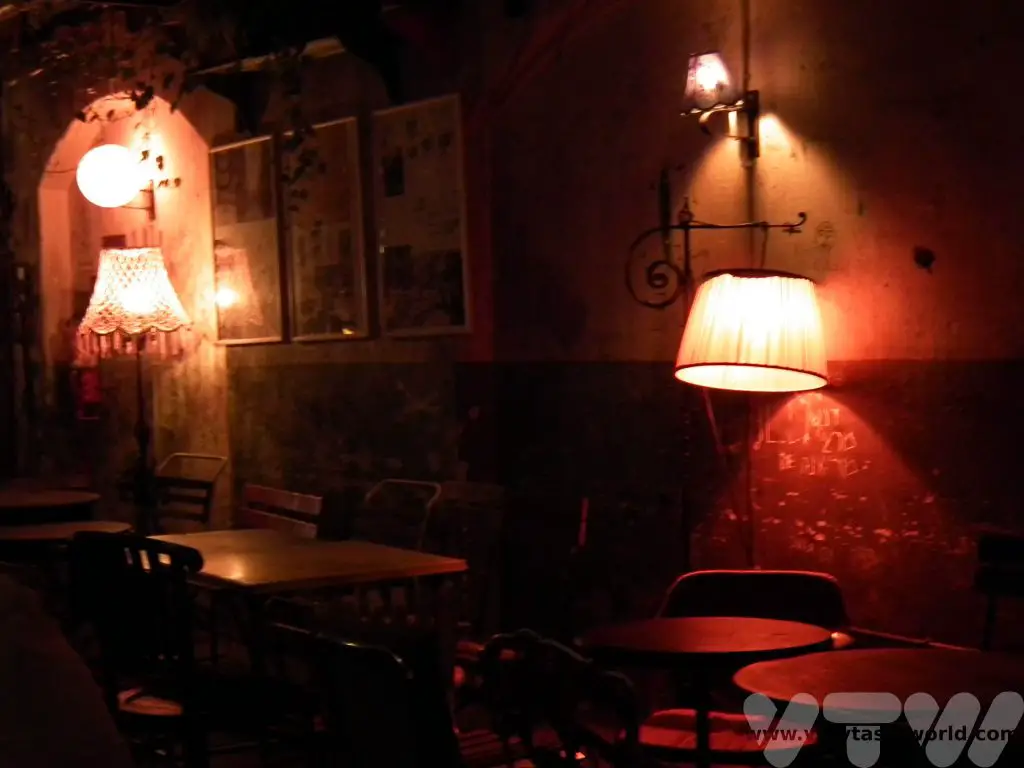
Our walking tour guides recommended Szimpla Kert on Kazinczy Utca – a great choice.
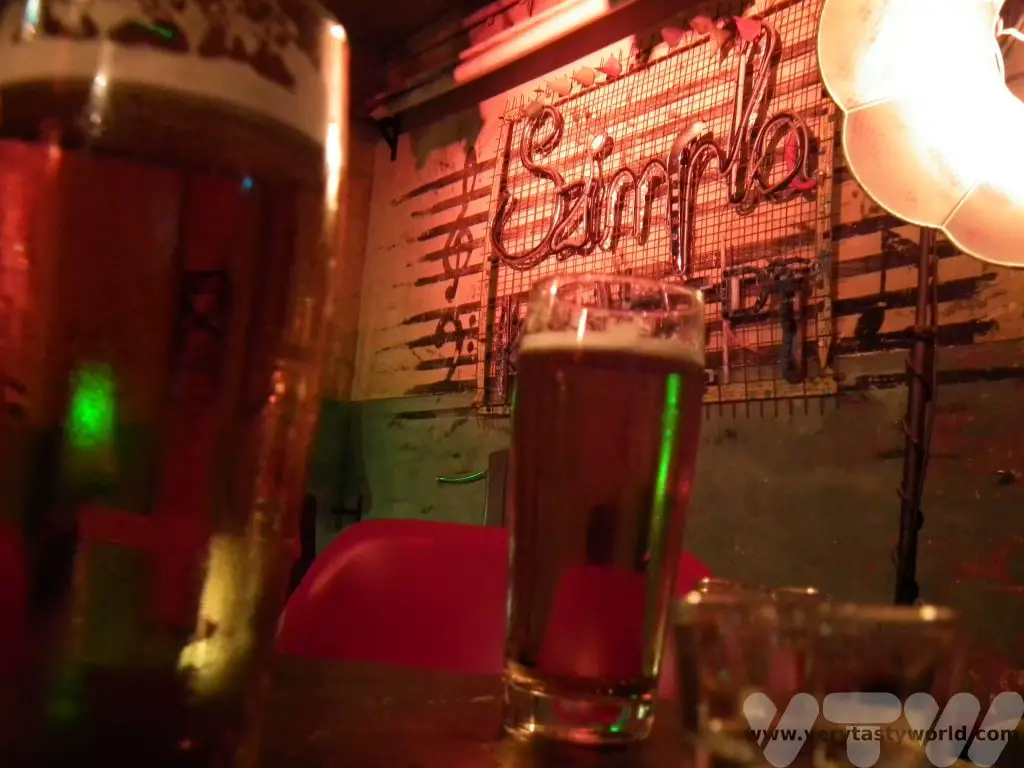
Ruin bars are perfectly convivial places to enjoy a cool beer or a shot (or more) of the local brew palinka, a fruit brandy, which is both sweet and strong.
Essential Foodie Souvenirs – we recommend bringing home as much paprika as you can fit into your bags. Hungary is one of the world’s biggest producers of paprika. This spice is synonymous with Hungarian cuisine and can be used in a huge range of dishes. There are many varieties on offer and they have different levels of sweetness and heat. Paprika not only adds the most glorious red colour to a dish but importantly, has bags of flavour! It should last well for up to a year.
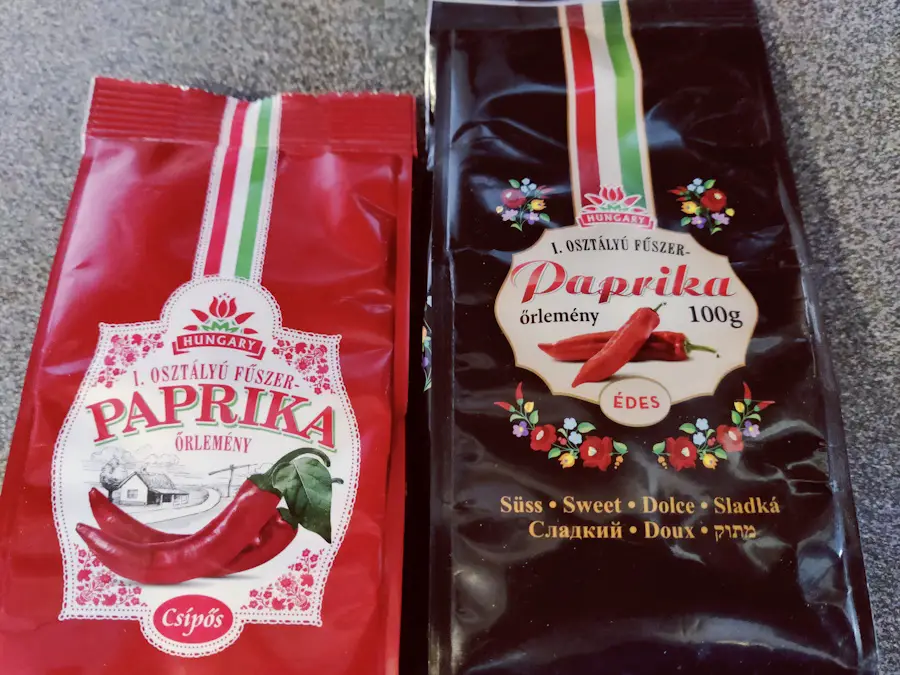
Budapest is a lovely city with so much history. Because it is so walkable, it really is possible to cram a huge amount of sightseeing – as well as some very enjoyable dining and drinking – into just a couple of days. Although it is almost certain to leave you wanting more…
Related Posts You May Enjoy

RECIPE: How to Make Stinging Nettle Hummus
If there’s one thing that can ruin a walk in the lovely English countryside it’s stinging nettles. If you brush past them with bare skin you can get a painful sting which usually isn’t harmful for most people but hurts for a while. But you can exact revenge on them by eating them! Nettles are not only edible, they are highly nutritious – they contain iron, calcium and magnesium, as well as vitamins A and B. They are great in soup, can be dehydrated to make crisps, can be used like spinach in a variety of dishes such as stir fries and stews, and can also be used in dips and sauces. The process of cooking with them renders them harmless by getting rid of the sting. One of our favourite things to make with them is stinging nettle hummus and we have a recipe.
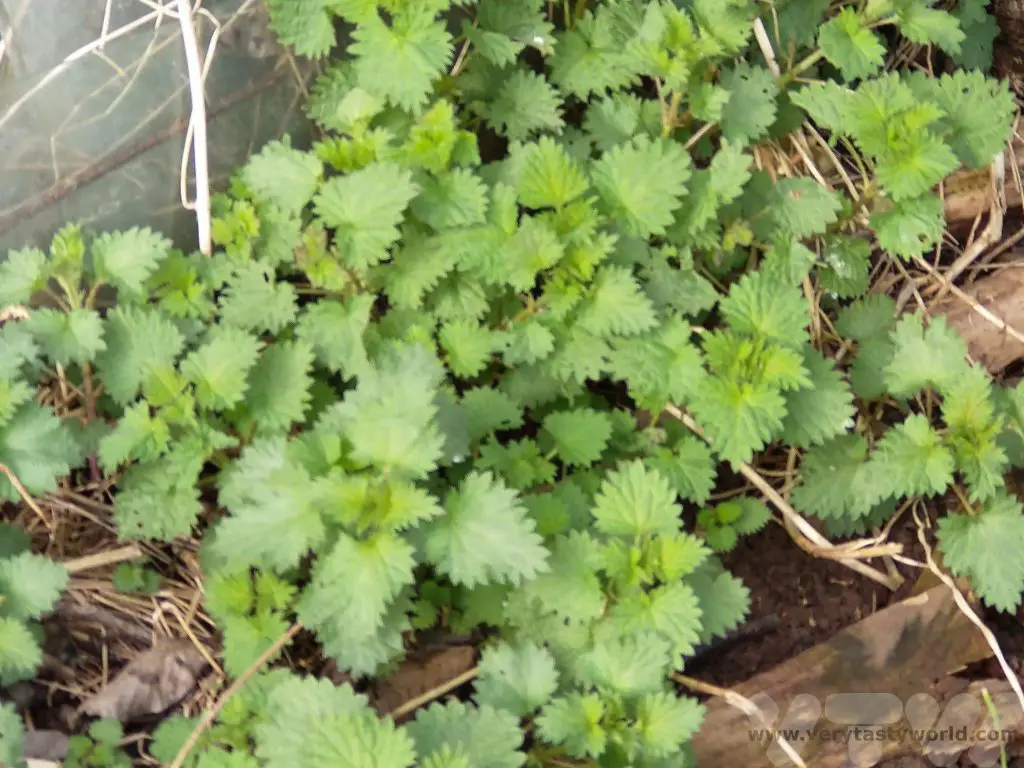
Despite them being found all over the British Isles nettles are not native plants, they were introduced by the Romans a couple of thousand years ago. Some stories suggest that they were used by Roman soldiers who would flog themselves with the nettle plants in order to use the stings to warm their skin in cold northern climes.
If you do get stung by a nettle there is a plant that you can use that helps soothe the pain. The standard view is that a dock leaf rubbed onto the sting will help. Actually it’s a plantain leaf (which used to be called dock in bygone times) which is more likely to help. Rubbing the sting with a dock leaf won’t harm but plantain will provide more relief.
It is the perfect time of year to go foraging for spring greens. We are already keeping an eye on our local patches of wild garlic, ground elder, mustard garlic, sorrel and three-cornered leek to see how they are growing, and also to plan lots of recipes for them. Stinging nettles are absolutely ready right now.
Preparing Stinging Nettles For Hummus
Go foraging for nettles. Try to find a patch where it’s unlikely that dogs may have been walking (just in case they have used that area for a toilet). Hardy foragers pick the nettles with their bare fingers but we use gloves to save ourselves from the stings. It’s best to pick in early spring to get the most tender leaves (the leaves will become quite tough as summer progresses). You need around half a carrier bag’s worth but you don’t need to be precise.
A word of warning – nettles are generally one of the easiest plants to identify but please be 100% sure that you have identified the correct plant. If you have the slightest doubt, don’t eat it. Plant identification apps aren’t always reliable either.
Wearing gloves, wash the nettles and have a look through them to see whether there are any leaves that should be discarded and look out for any insects to brush away. You can also make sure that no extraneous leaves from other plants. It’s quite common for grasses to end up in your bag as well.
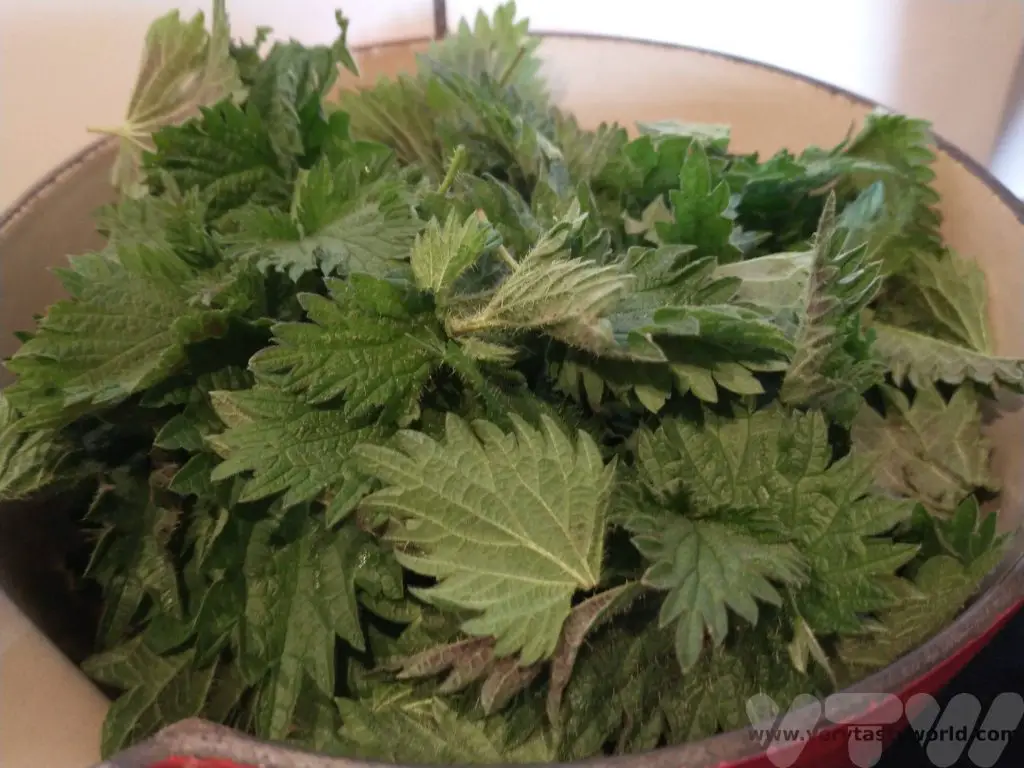
Place the nettles into a saucepan and pour boiling water over them to cover them. Stir for a minute or so. They will start wilting. This process gets rid of the sting and you can handle them with your bare hands from now on.
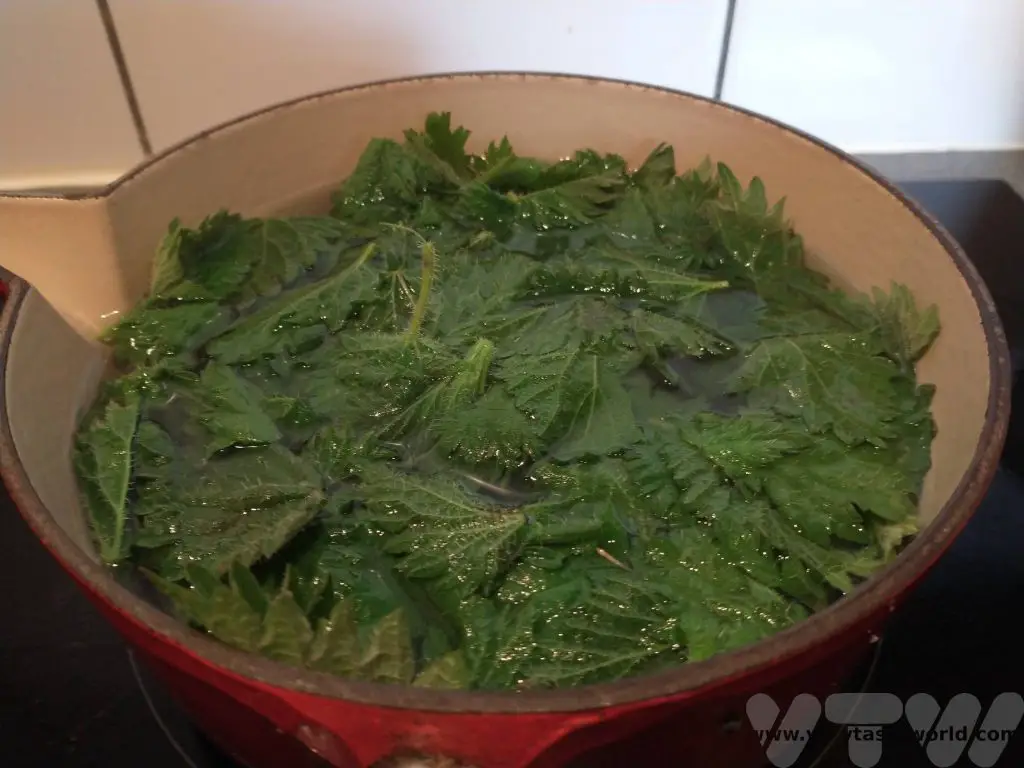
While they still have their lovely green colour, using a slotted spoon, transfer them into a bowl of cold water for a few minutes.
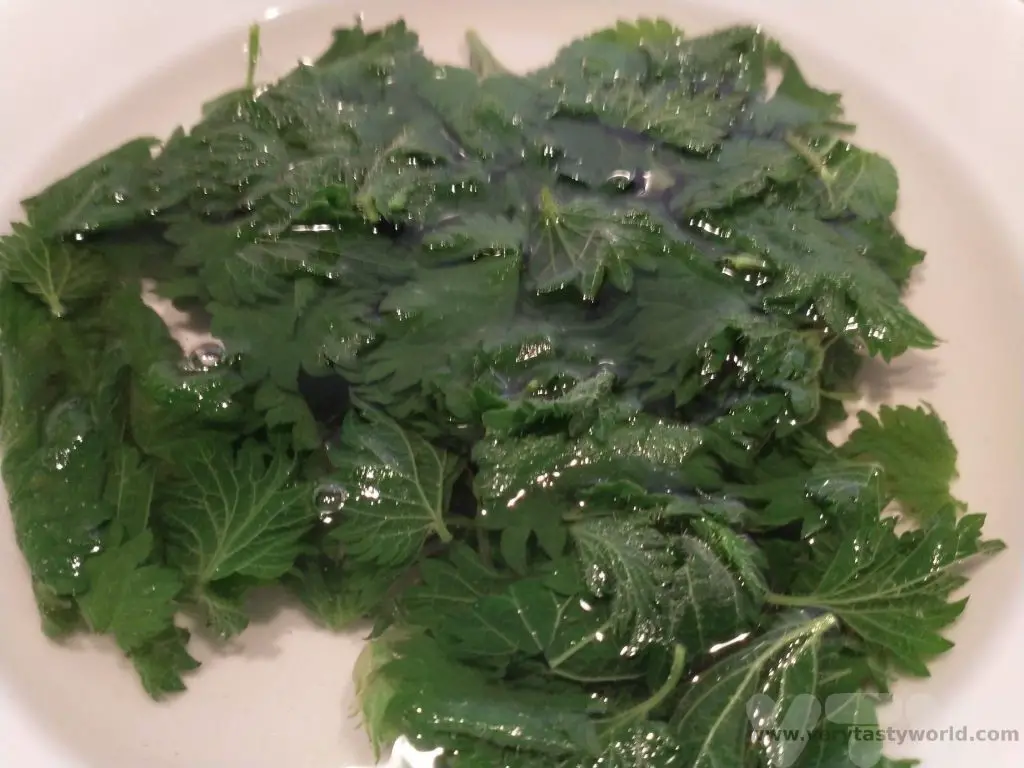
Keep the hot water from the saucepan and pour it into a mug – you can enjoy a nice cup of nettle tea, which has a mild, refreshing flavour and tastes a bit like green tea or coca tea. Then drain the nettles and let them dry naturally. They can then be used in our stinging nettle hummus recipe.
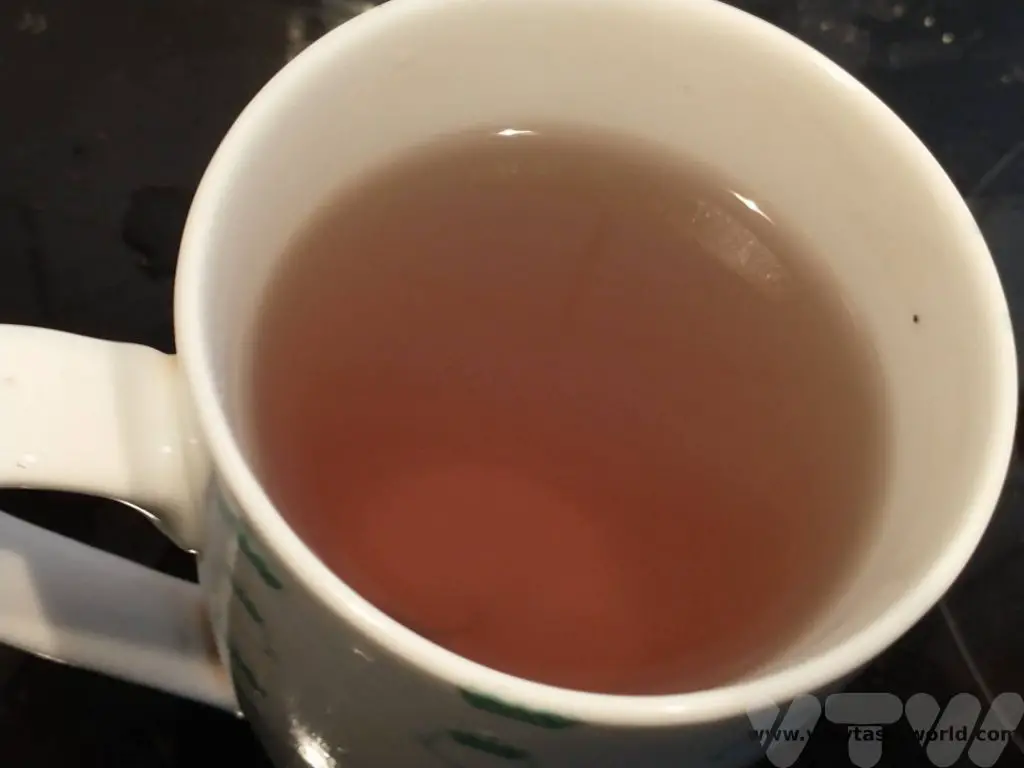
Stinging Nettle Hummus Recipe
Ingredients
Bowl of blanched stinging nettles
1 can of chickpeas, drained (if you’re keen to avoid food waste, you can keep the liquid, which is called aquafaba, which can be used to make vegan meringues)
1 large or 2 small cloves of garlic
Juice of 1 lemon
1 dsp peanut butter (you can substitute tahini, or omit completely if you can’t eat nuts)
Slosh of olive oil
Pinch of sea salt
Method
In a food processor or blender, combine the lemon juice, garlic and peanut butter. Give them a whizz.
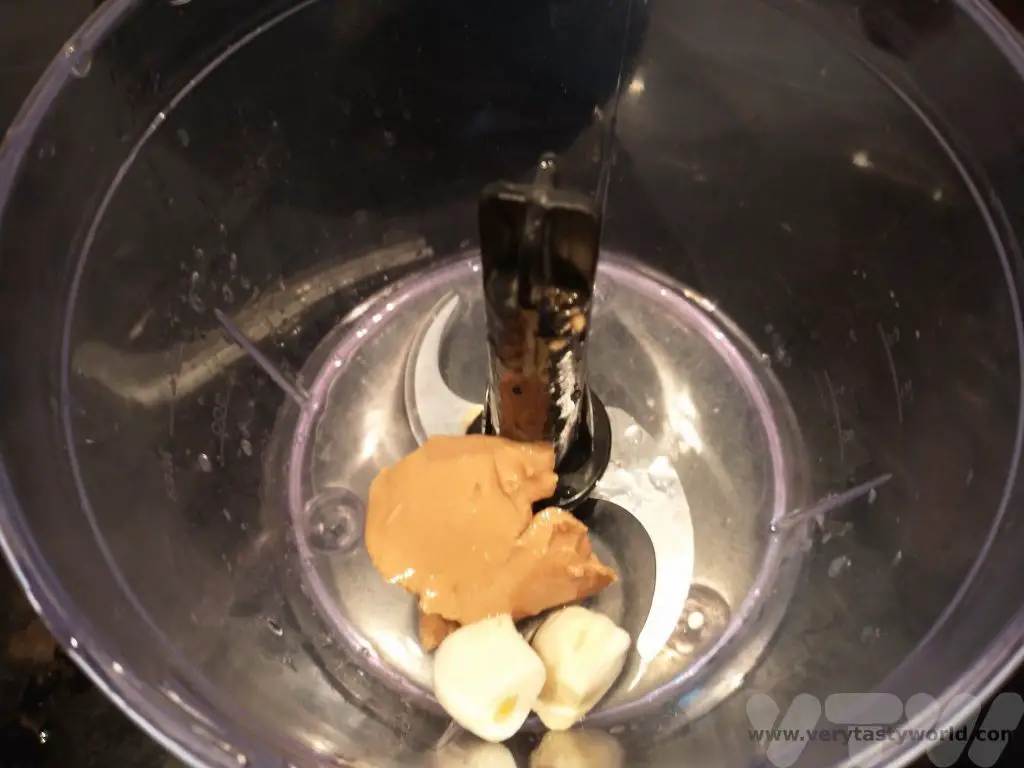
Add half the chickpeas and half the nettles with a slosh of oil and blend again.
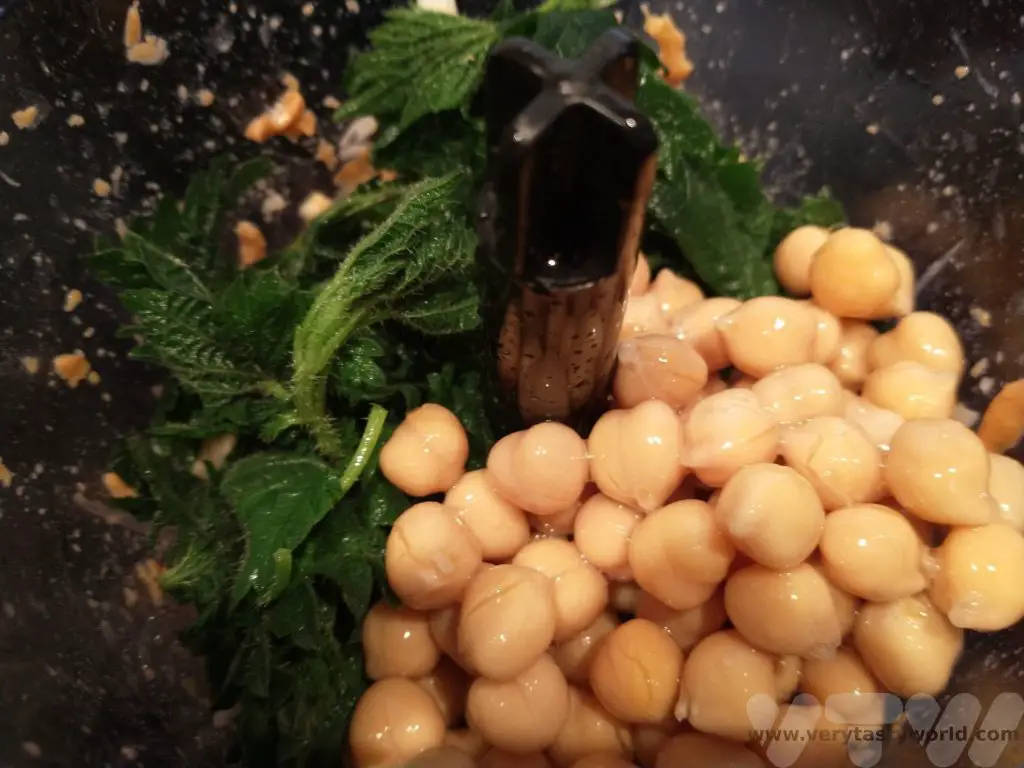
Scrape the sides of the bowl. Add the remaining nettles, chickpeas and a pinch of salt, and blend again.
Have a taste – does it need more lemon or salt? Add seasoning as necessary. We tend to like sour flavours so added the juice of an extra half lemon. You can decide how much you would like your blend depending on whether you prefer a smooth or chunkier texture.
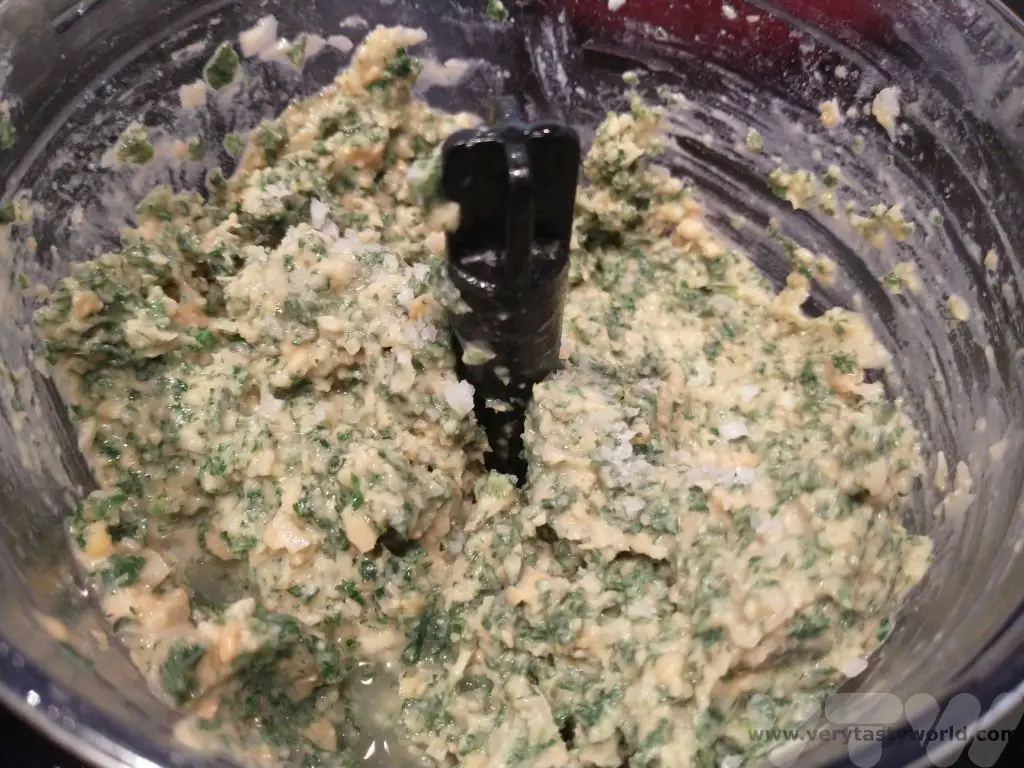
Decant into a bowl and serve with warm pitta bread.
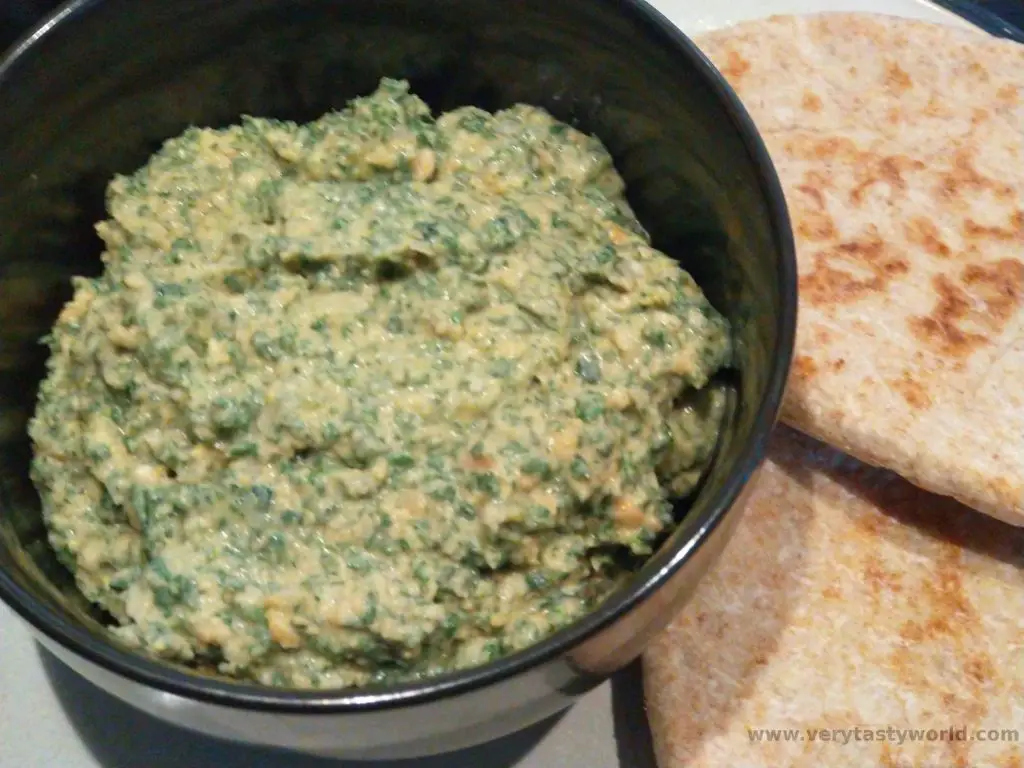
Related Posts You May Enjoy

- RECIPE Oyakodon Donburi
- Zero Waste Recipes Before Your Holiday
- RECIPE: Vegetable Biryani Tamil Nadu Style
- RECIPE: Vegan Wild Garlic Pesto
- Recipe: Venetian Pasta Sauce
- RECIPE: Biryani Raita Recipe
- RECIPE: How to Make Costa Rica’s Gallo Pinto
- Recipe: Japanese Simmered Pork Belly – Buta no Kakuni
- RECIPE: How to Make Umeboshi
How Hot Is Wasabi?
A Guide to Fresh Wasabi
Did you know that a lot of the time the fiery, nose-wince-inducing, slightly-eye-watering wasabi that you eat with your sushi doesn’t actually contain much wasabi? The wasabi powders and pastes that you buy in the shops or which are used in many restaurants are usually a combination of mustard, horseradish, green food colouring and just a hint of wasabi, probably from the stem or leaves. Eating fresh wasabi is a completely different experience. And how hot is wasabi?
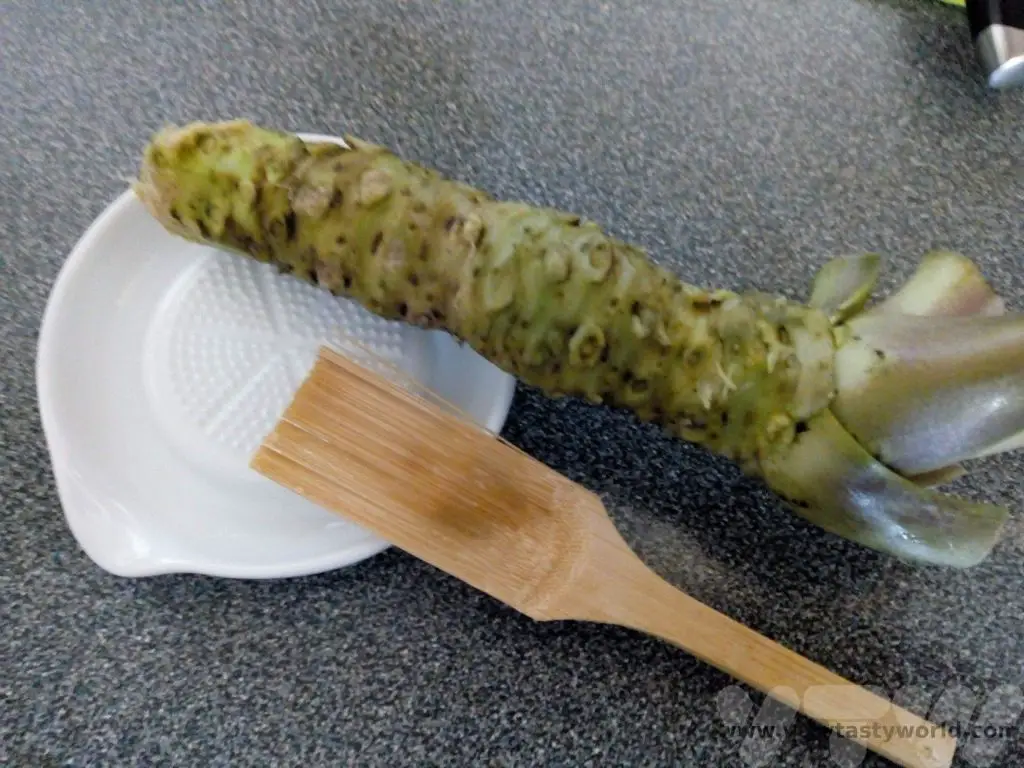
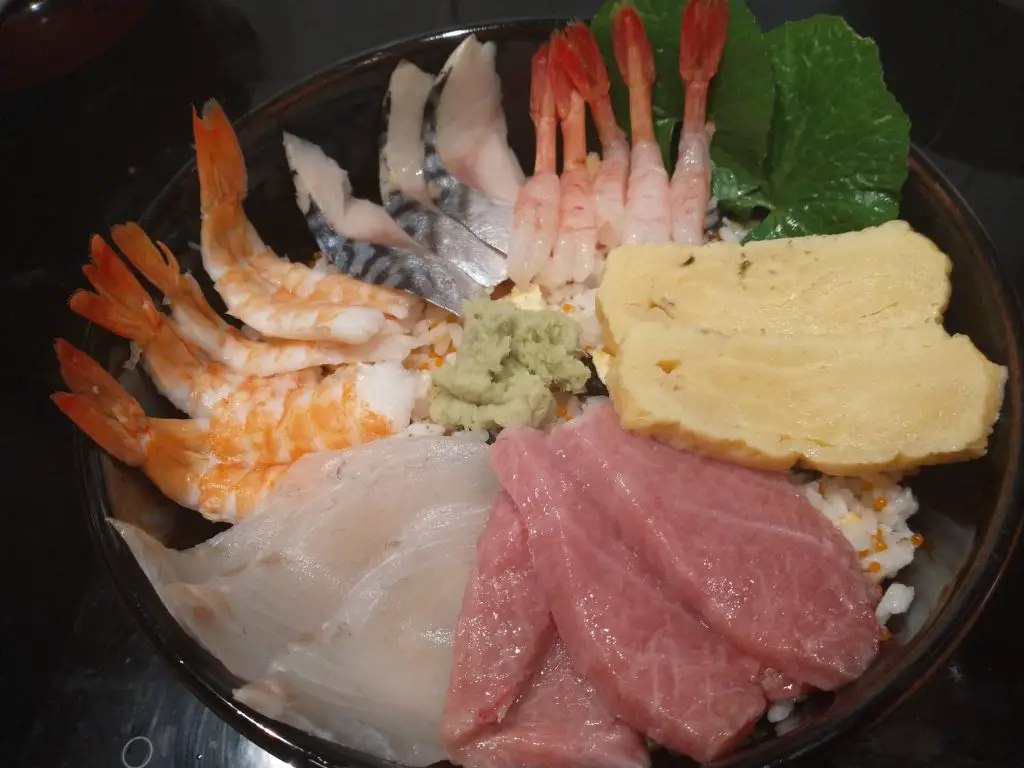
Growing Fresh Wasabi
Wasabi as a plant is similar to horseradish in that both belong to the Brassica family (which is quite a broad family as it also contains vegetables such as cabbage, broccoli and kale) and both have a fiery pungency but they are different species and offer very different flavours.
Horseradish is really easy to grow in the UK. It’s like a weed and grows rapidly in the wild. We regularly see horseradish growing by the roadside or in parks. (We would like to forage for it but although we could pick the leaves it’s against the law to dig up roots on land you don’t own.) It’s the long white root that provides the flavour. Wasabia Japonica’s flavour comes from its rhizome, which is kind of like a swollen stem.
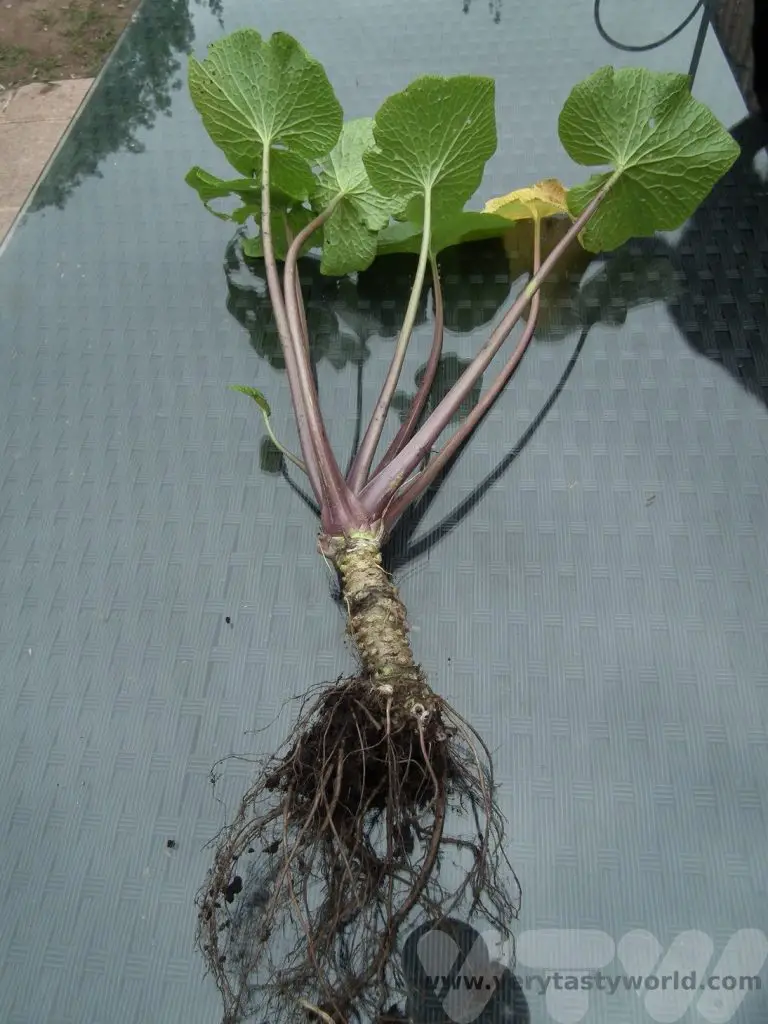
Traditionally wasabi grows next to crystal clear gravelly mountain streams in rural Japan (a delightfully romantic image) but it is actually possible to grow wasabi in the UK (although our garden is significantly less romantic than a beautiful mountain region). Water grown wasabi is known as sawa- or mizu-wasabi, soil grown is known as hatake-wasabi.
Our soil grown wasabi needs a little love. It likes relatively cool conditions and much prefers the shade to the sunshine. We once had to move our wasabi into a sunny spot temporarily and it wilted like the Wicked Witch of the West. (It recovered 24 hours later when it was back in the shade.) It also needs to be well watered, although it doesn’t like to sit in water. A cool, rainy British summer is ideal. We grow it in pots close to the north facing wall of our house. It takes a while for the rhizome to grow – you need to be patient for a couple of years – but the result is worth it. The cat was very impressed with our attempts.
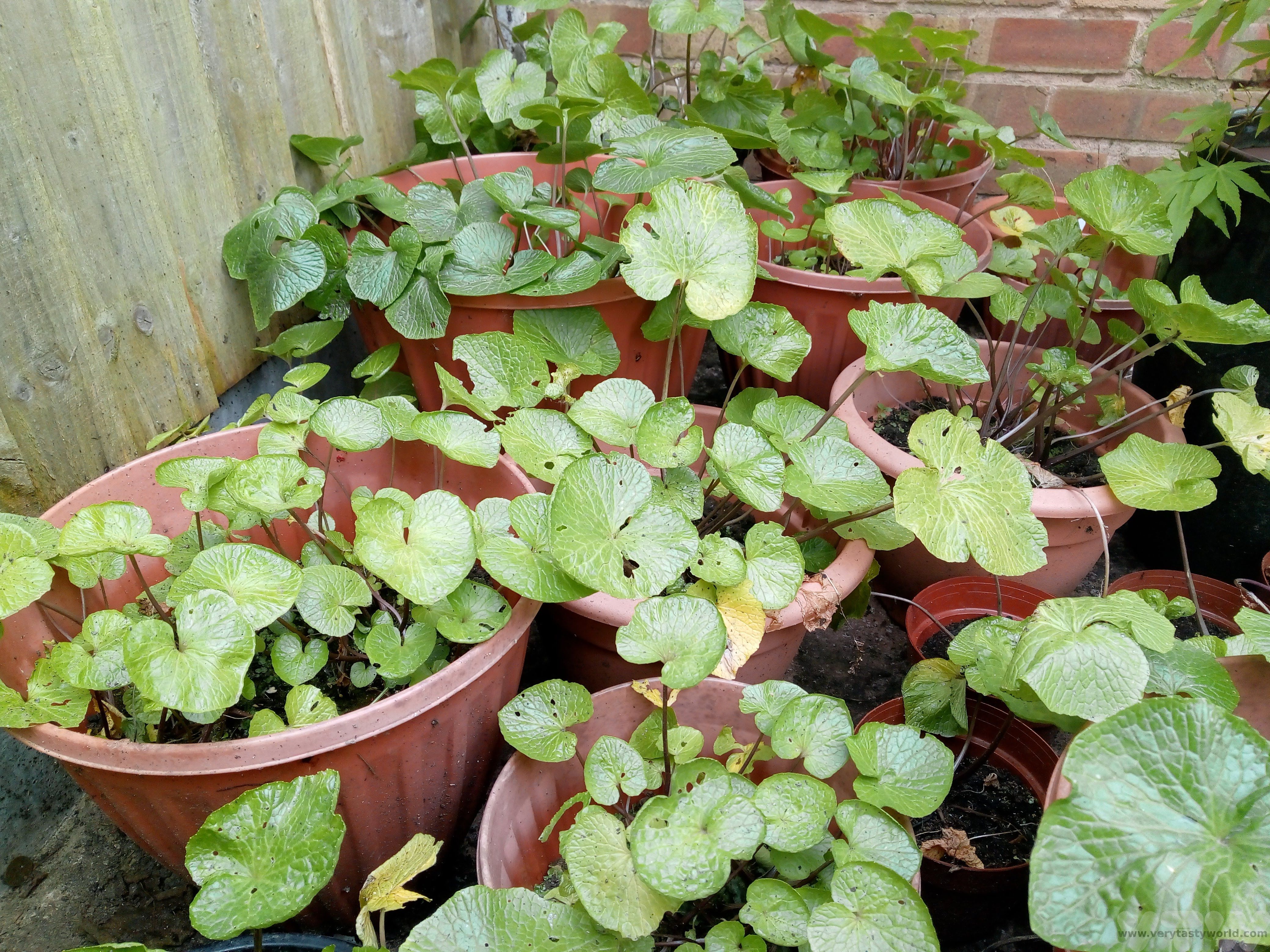

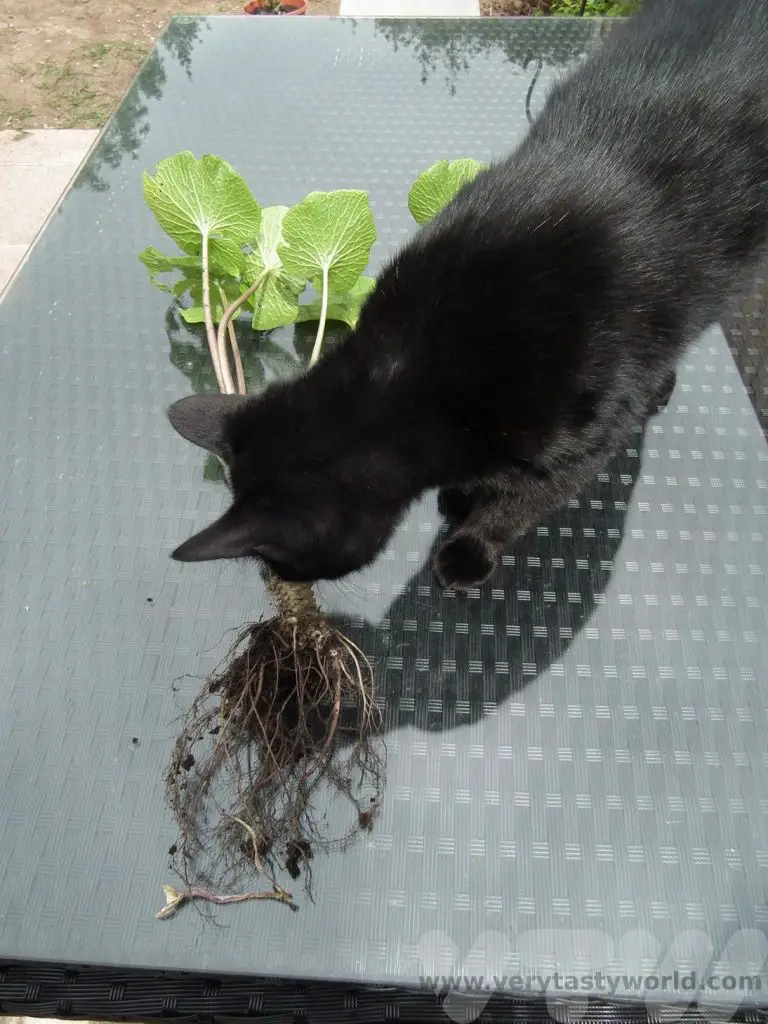
Eating Fresh Wasabi
The first time we ate fresh wasabi, it was a revelation. It did have that amazing familiar pungency but it also has a sweetness that you don’t expect. One of the advantages of growing wasabi is that the other parts of the plant are all edible: the lovely heart shaped leaves can be used as a garnish (and eaten), the stems chopped up like herbs and even the delicate flowers, which are especially good in a tempura. The other parts are much more mild and, while they impart flavour, don’t have the pungency of the rhizome.
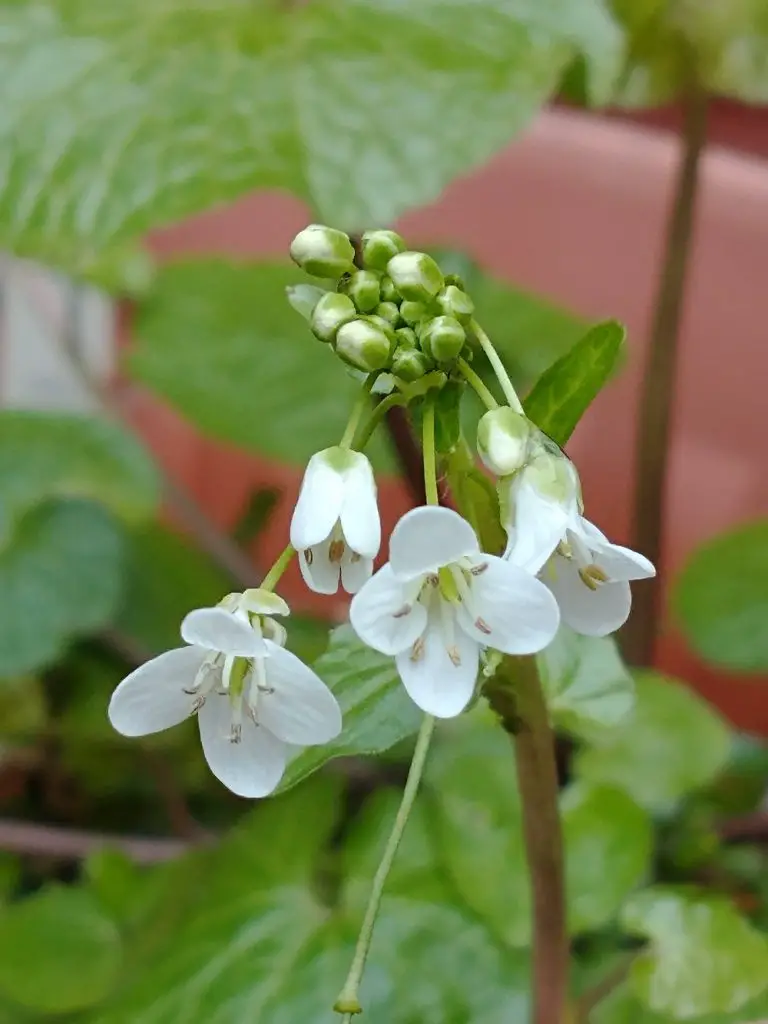
How To Prepare Fresh Wasabi
Wasabi rhizomes can grow up to 100g in size, although some can be bigger. You would have to have a big sushi party to get through that amount but it is possible to store it.
The pungency of the wasabi fades when it is exposed to air, so it is best to grate it just before serving. There are various graters you can buy. Traditionally, a shark skin grater is used, although it is usually made from a type of ray. Purists prefer this, claiming that this is the one that ensures that the wasabi has the best creamy consistency and brings out the best flavour. But you can also get other types, including a metallic grater or, our preference, a ceramic grater.
Using a vegetable peeler, we just scrape off a small amount of the rhizome’s outer layer, up to the length we wish to grate, then grate the wasabi in a circular motion.
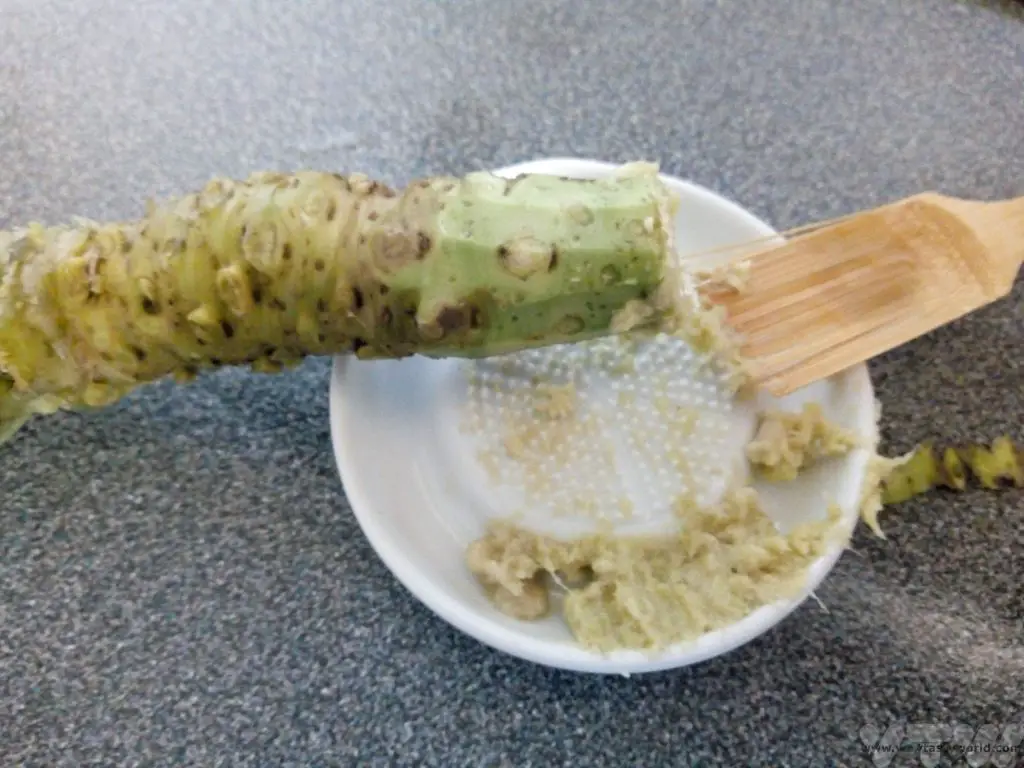
One useful little implement is a bamboo brush which you can use to gather up the grated wasabi. The stiff bristles are much more efficient at negotiating the grater’s bumps than our fingers. Gather the grated wasabi up into a nice little ball and serve. It’s worth grating slightly less than you think you will need – you can always grate more.
Storing Wasabi
A fresh rhizome will store well in the fridge for a couple of weeks. We tend to keep it wrapped in damp kitchen paper and grate as much as we need. If we don’t get through an entire rhizome in that time, it tends to go a bit black, so the best thing to do is freeze it. The whole rhizome doesn’t freeze well but grated wasabi freezes brilliantly.
We tend to grate into portions and then store inside little plastic tubs – the sort you get sauces/dips in with a takeaway meal. Then we seal – in order to minimise exposure to the air and pop into the freezer. Take them out when you need them. The portions thaw in no time at all. Alternatively, you can wrap the grated wasabi into parcels of clingfilm.
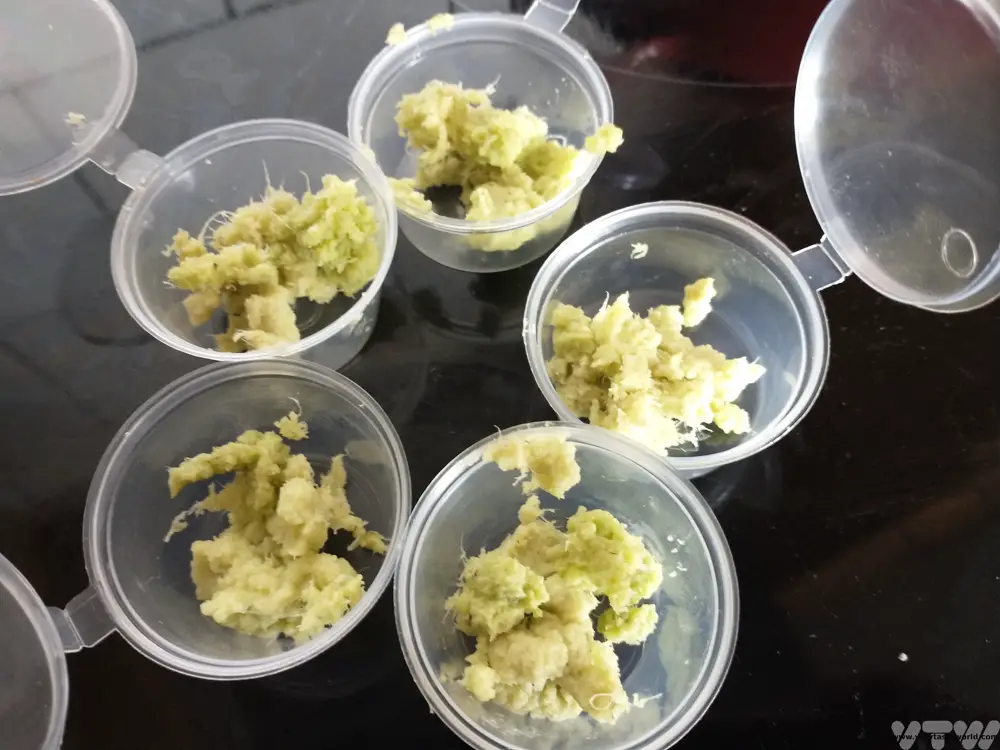
So How Hot Is Wasabi?
Unlike chillies, which have the Scoville scale to measure their heat level, wasabi heat doesn’t really have a similar measurement system. The Scoville scale is based on dilution of the chemical capsaicin – how much water it takes before you can no longer detect the heat of the chilli. But wasabi is a root not a pepper and instead of releasing capsaicin, it contains allyl isothiocyanate, a compound which is also found in mustard, radish and horseradish. Its pungency is a result of its volatility – the gas it releases feels as though it goes straight up your nose rather than remaining on your tongue like the capsaicin of chilli.
People’s reactions to wasabi will differ quite widely. Some people can scoff the hottest of chillies but can’t take the heat of wasabi. But it is undoubtedly hot! Fresh wasabi has a milder pungency than the horseradish/mustard/green paste.
How To Eat Wasabi With Sushi
Wasabi and sushi go together like fish & chips, salt & pepper and gin & tonic. Wasabi was originally used with sushi in the Edo period in Japan and was thought not only to help mask any smells from the fish it was also considered to have properties that help prevent the growth of bacteria.
The best way to eat wasabi with sushi is to mix it with a small amount of soy sauce in a little dish. Never dip the rice part into the dish – the rice will soak up the soy sauce and all you’ll get is a mouthful of nose-wincing salt, losing the delicate flavour of the fish. Instead, turn the sushi upside down and dip the fish side into the sauce. (It’s absolutely fine to eat sushi with your fingers.) If you are having an omakase meal, where the chef prepares the sushi for you, it is likely that they will add exactly the correct amount of sauce and wasabi, so you won’t need to worry.
We love making chirashizushi – a bowl of seasoned rice with a layer of seafood atop – which we serve with our own fresh wasabi and garnished with the lovely heart-shaped wasabi leaves.
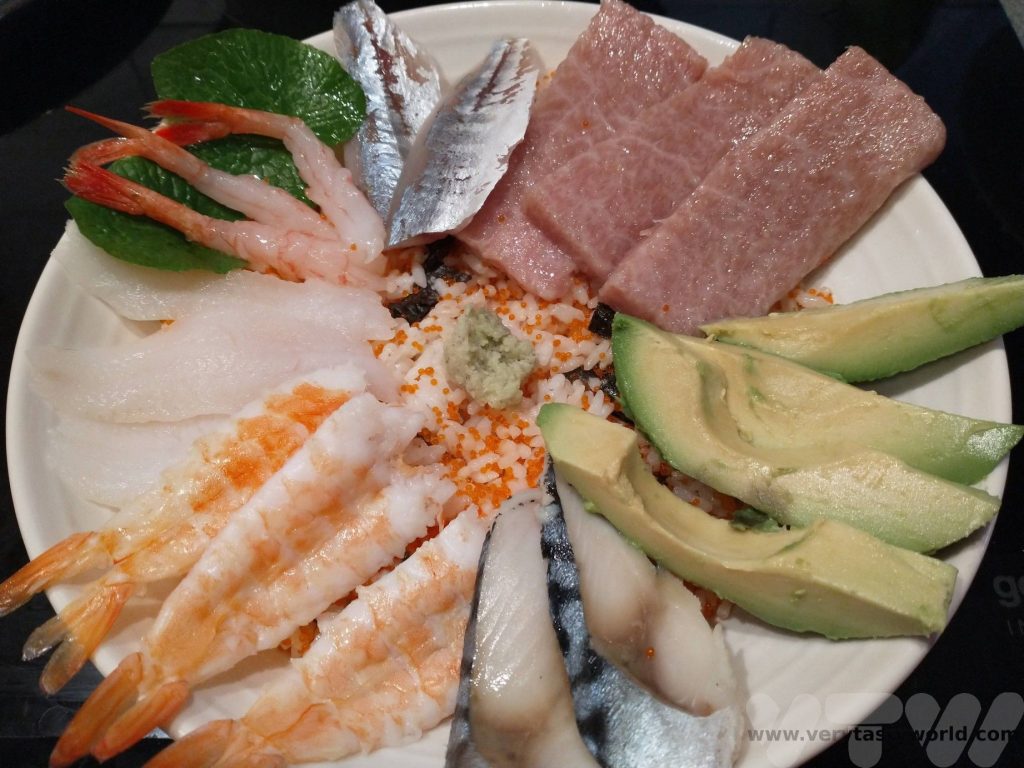
Related Posts You May Enjoy

- Recipe: Simmered Shiitake Mushrooms

- How to Use Public Transport in Japan

- RECIPE Oyakodon Donburi

- Planning a Trip to Japan

- The Makanai: Cooking for the Maiko House

- Setsubun Food – Bean Throwing Day

- The Gassho Farmhouses of Rural Japan

- Recipe: Japanese Simmered Pork Belly – Buta no Kakuni

- RECIPE: How to Make Umeboshi


- RECIPE Oyakodon Donburi
- Zero Waste Recipes Before Your Holiday
- RECIPE: Vegetable Biryani Tamil Nadu Style
- RECIPE: Vegan Wild Garlic Pesto
- Recipe: Venetian Pasta Sauce
- RECIPE: Biryani Raita Recipe
- RECIPE: How to Make Costa Rica’s Gallo Pinto
- Recipe: Japanese Simmered Pork Belly – Buta no Kakuni
- RECIPE: How to Make Umeboshi
Happy, Happy Holi in Nepal
Originating from the Indian subcontinent and celebrating the arrival of spring, Holi is known as the Festival of Colour, Festival of Spring or the Festival of Love. And it really is all three of those things. Like many festivals across the world its date is based on a lunar calendar and it falls on the last full moon of winter. It is celebrated by Hindus, Sikhs and Jains and has become an increasingly popular event all over the world. In the countries that celebrate, Holi is a national holiday when everyone comes together to celebrate spring and love. We were lucky to spend Holi in Nepal a few years ago.
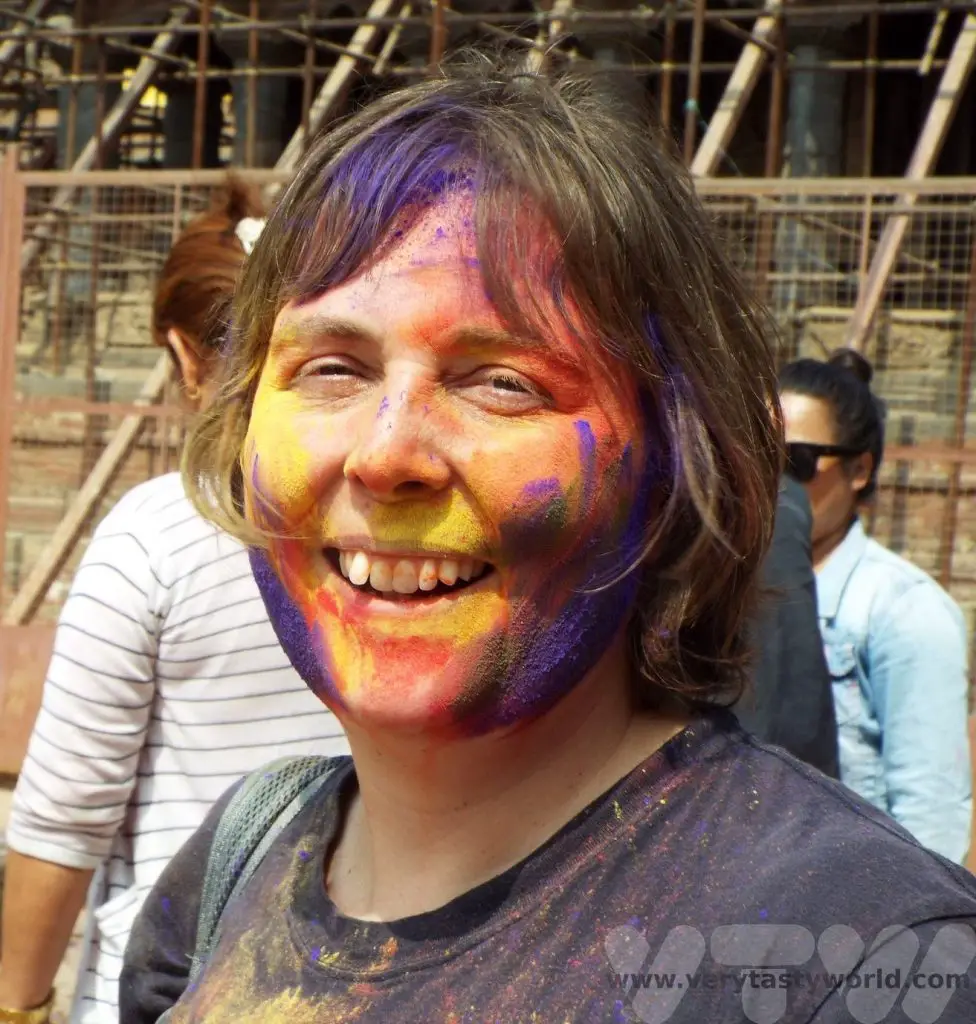
There are a number of rituals associated with the festival and these can vary between different regions. The celebrations start in the evening before Holi with a Holika Dahan where communities gather and light a fire, burning a symbolic effigy of a demoness who attempted to kill her nephew, Prahlad, a worshipper of the God Vishnu. This represents the triumph of good over evil. Traditionally participants contribute wood for the fire and dance and sing together. It’s important to remember that Holi is also about love and repairing broken relationships.
The following morning is Rangwali Holi (Dhuleti), the festival of colour. And it doesn’t matter who you are or where you are from, you are welcome to join in the fun. Everyone takes part and those serious about ‘Playing Holi’ will be armed with all sorts of devices to make the day as colourful as possible – there will be powdered paints, water pistols containing ordinary or coloured water, water balloons (you have to watch out for those as they can be quite a surprise). People often wear white clothes in order to show off all the colours. You can buy paint powder from street vendors everywhere.
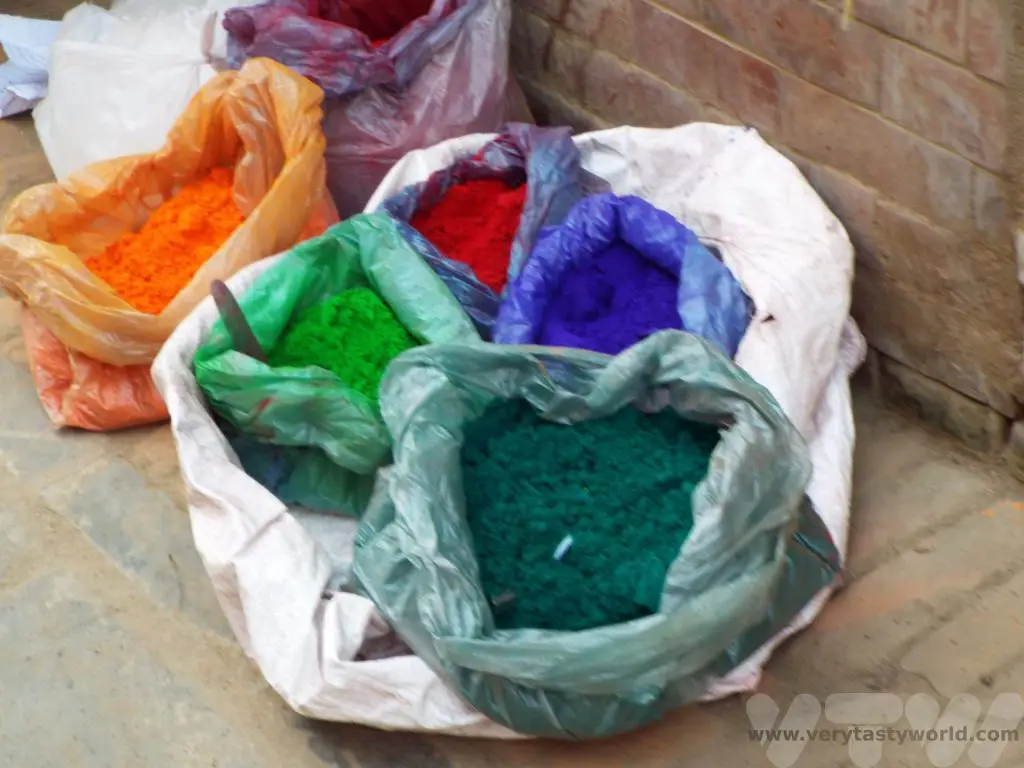
Holi In Nepal
In Nepal Holi celebrations begin eight days before the full moon, starting off with the raising of a chir – a long bamboo pole embellished with brightly coloured strips of cloth in three circular layers. This chir will be burned on the night before the full moon, again symbolising the burning of Holika and the victory of good over evil.
We were in Nepal during Holi a few years ago and it was one of the most fun days we have ever had when travelling. After a fantastic journey travelling through Bhutan and Southern Nepal, including a stay at the Neydo monastery and a couple of days in the Chitwan National Park where we undertook a walking safari and learned to cook with the local Tharu people. We had travelled back to Kathmandu to explore the capital as well as nearby Bhaktapur and Patan, all cities with an incredibly rich cultural heritage. (We will post about these in detail another time.)
Bhaktapur, also known as Khwopa, is a UNESCO world heritage site, a city located some 13km from Kathmandu. It has some of the most remarkable architecture, with squares that contain beautiful temples and statues.
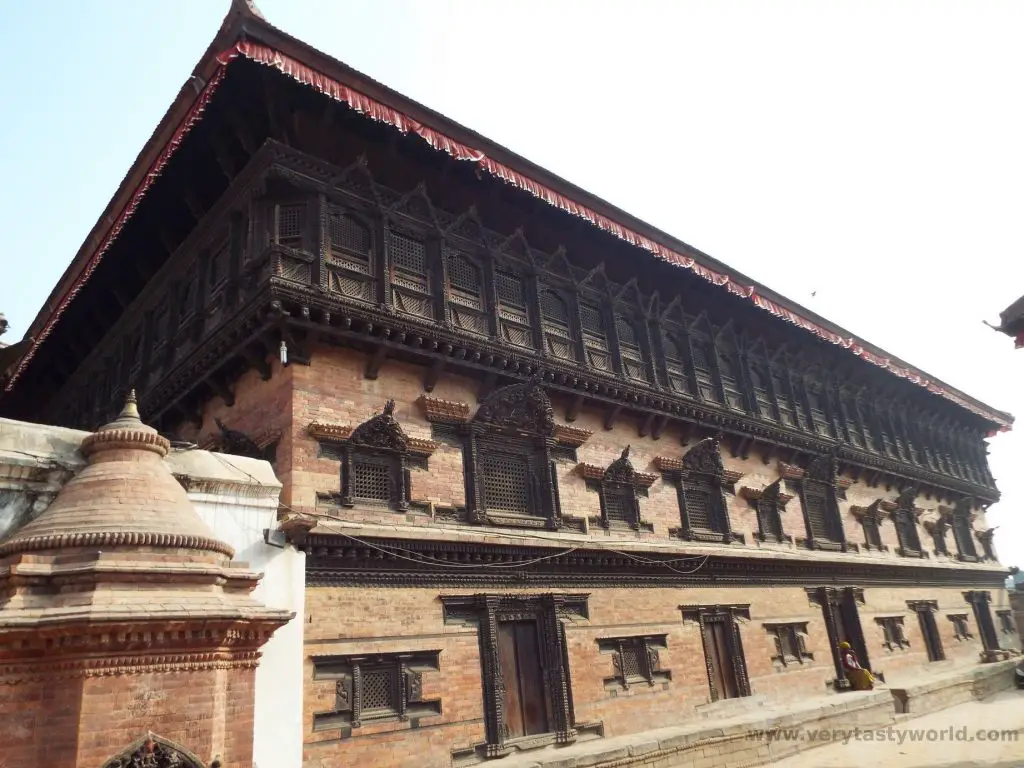
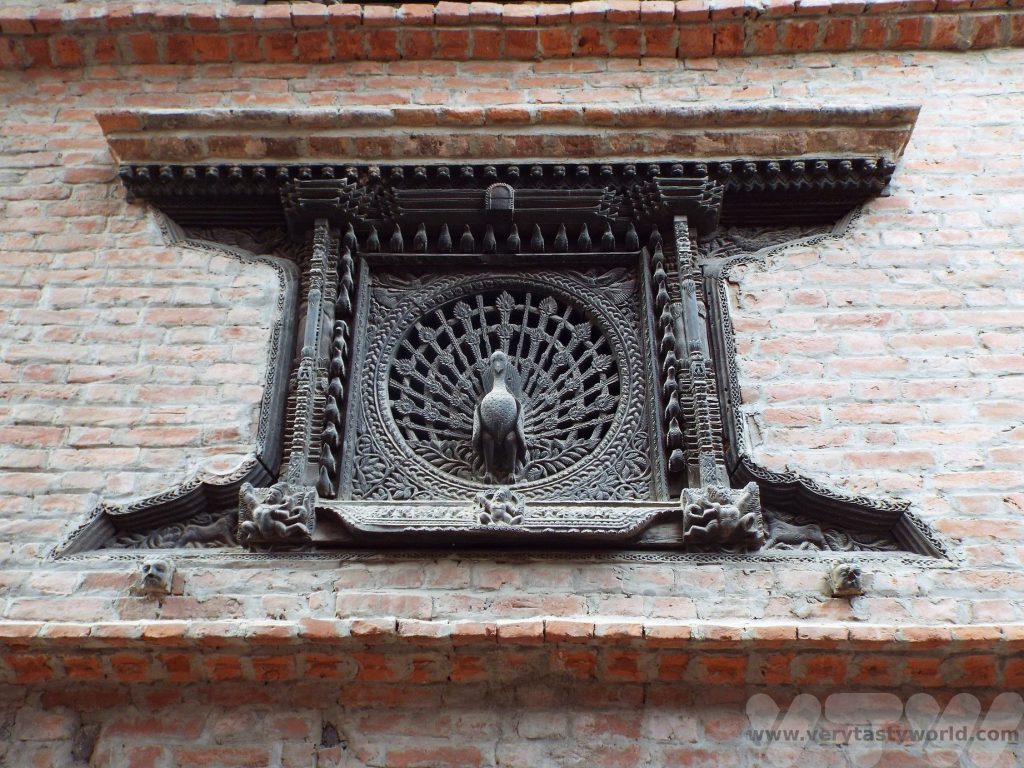
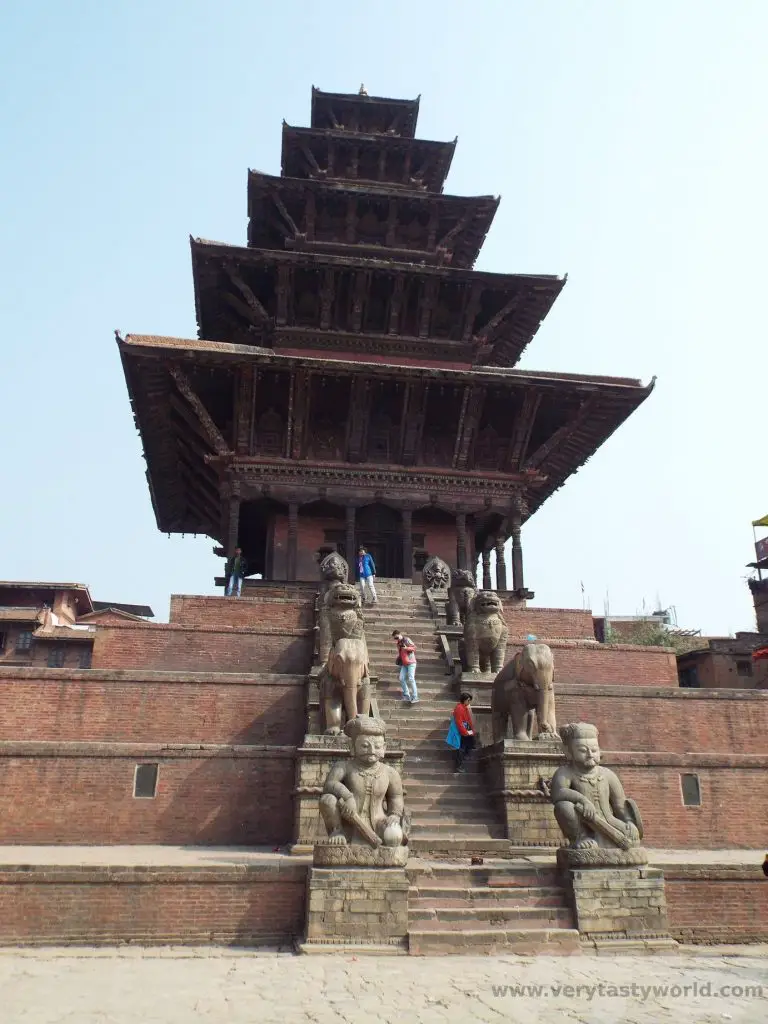
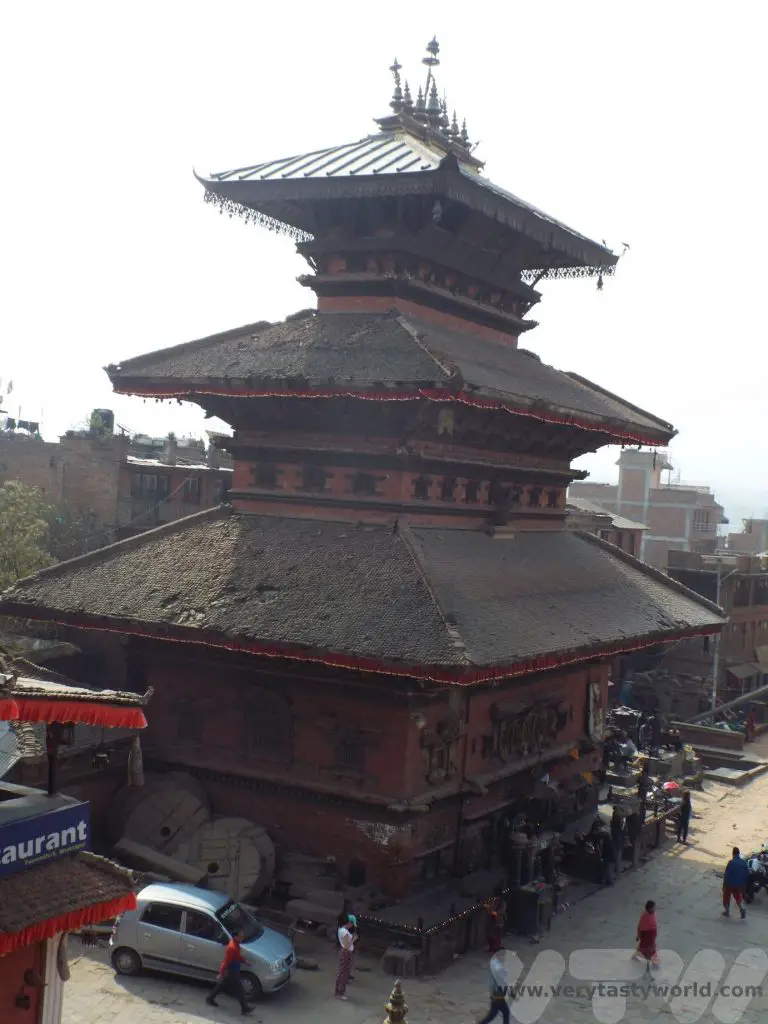
Patan is another UNESCO site. Around 5km from Kathmandu, it is so close to the capital that even though it is Nepal’s third largest city, it almost feels like a suburb of Kathmandu these days. Along with the capital and Bhaktapur it is one of Nepal’s three royal cities. It is also known as Lalitpur – City of Beauty – a title that is hugely apt.
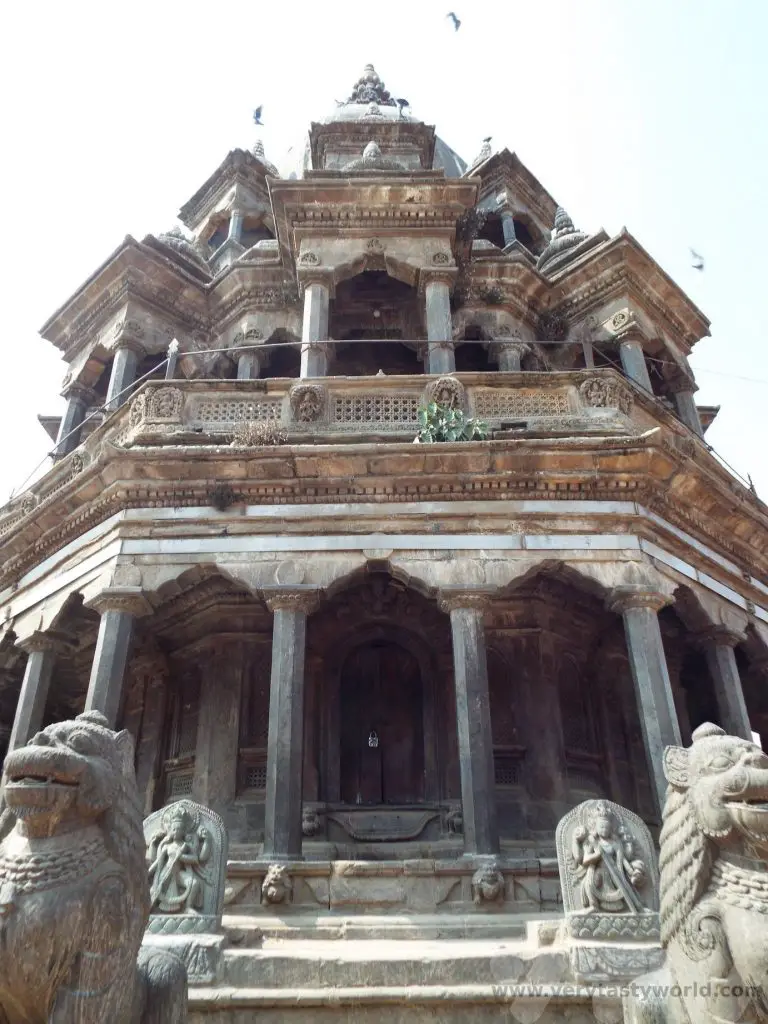
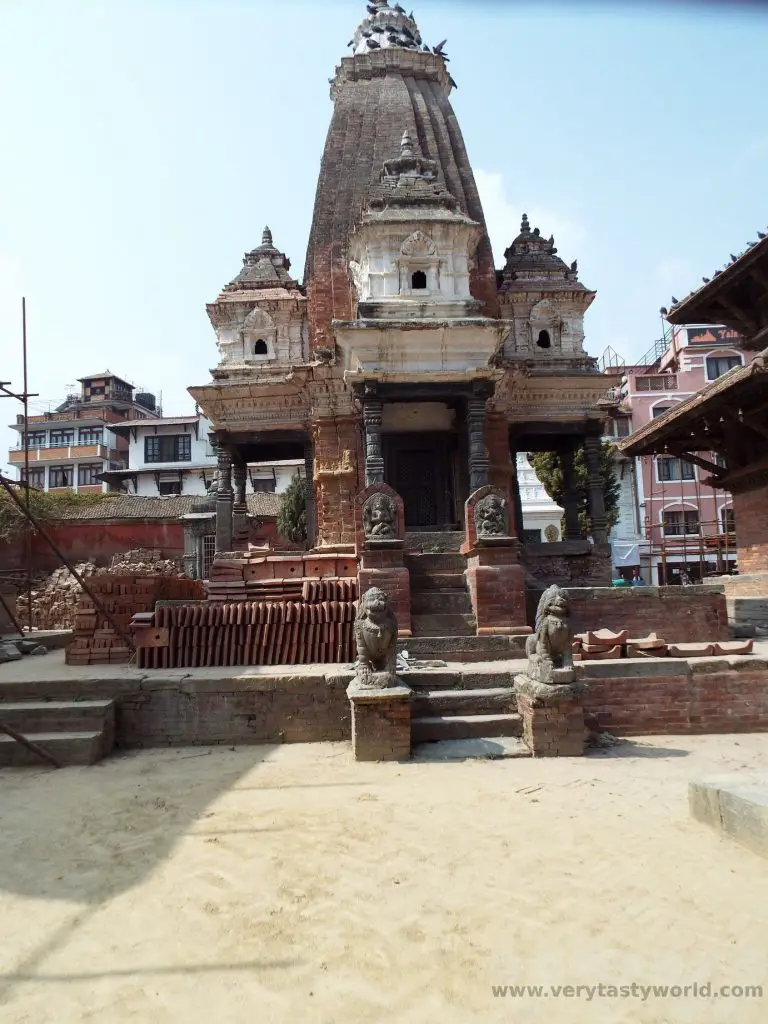
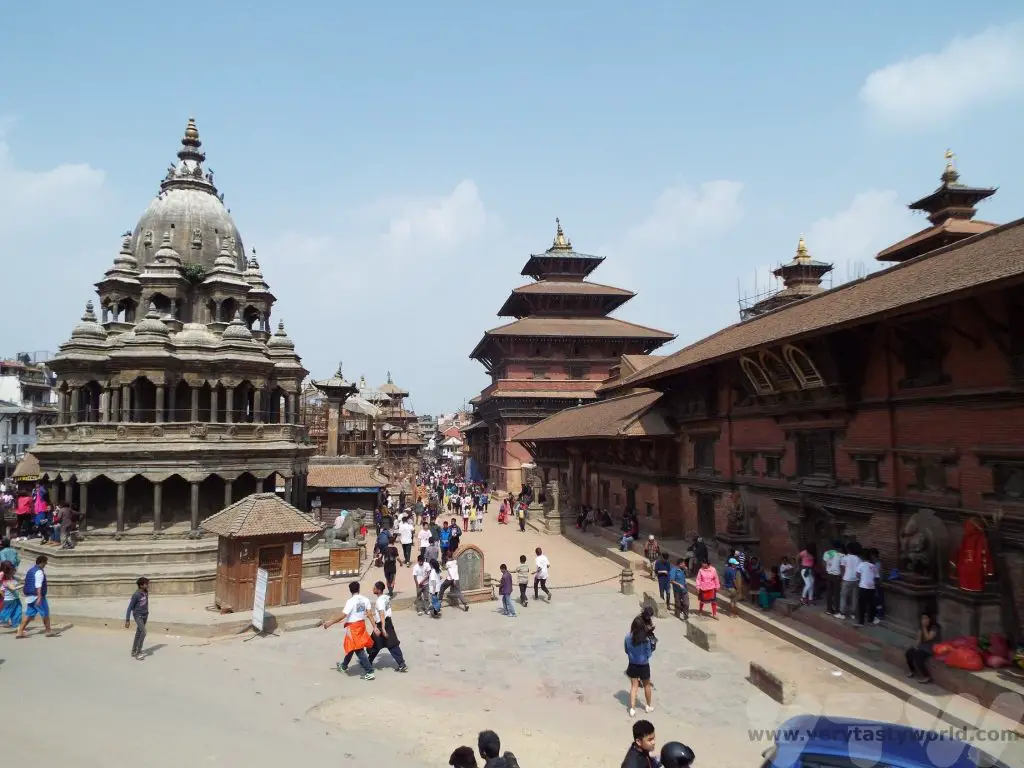
Sadly, both cities and their remarkable historic buildings were badly damaged during an earthquake in 2015 and repairs have been ongoing for some years.
Happy, Happy Holi
Holi began tentatively for us. We were doing a walking tour in the early morning in Bhaktapur when a smiling young man approached us as we were strolling down a side street, smeared a little red powder paint on our cheeks, and declared “Happy Holi!”. We wished him the same.
As soon as we had paint on our faces we quickly discovered that we were fair game. People would come up to us and anoint us with paint powder. Children bearing water pistols would quietly approach us then squirt us before running away, shouting joyously as we gave chase, their families looking on smiling and laughing. And we loved every moment.
Moving on to Patan, by mid-afternoon the town squares were filled with crowds as music played loudly and colours filled the air.
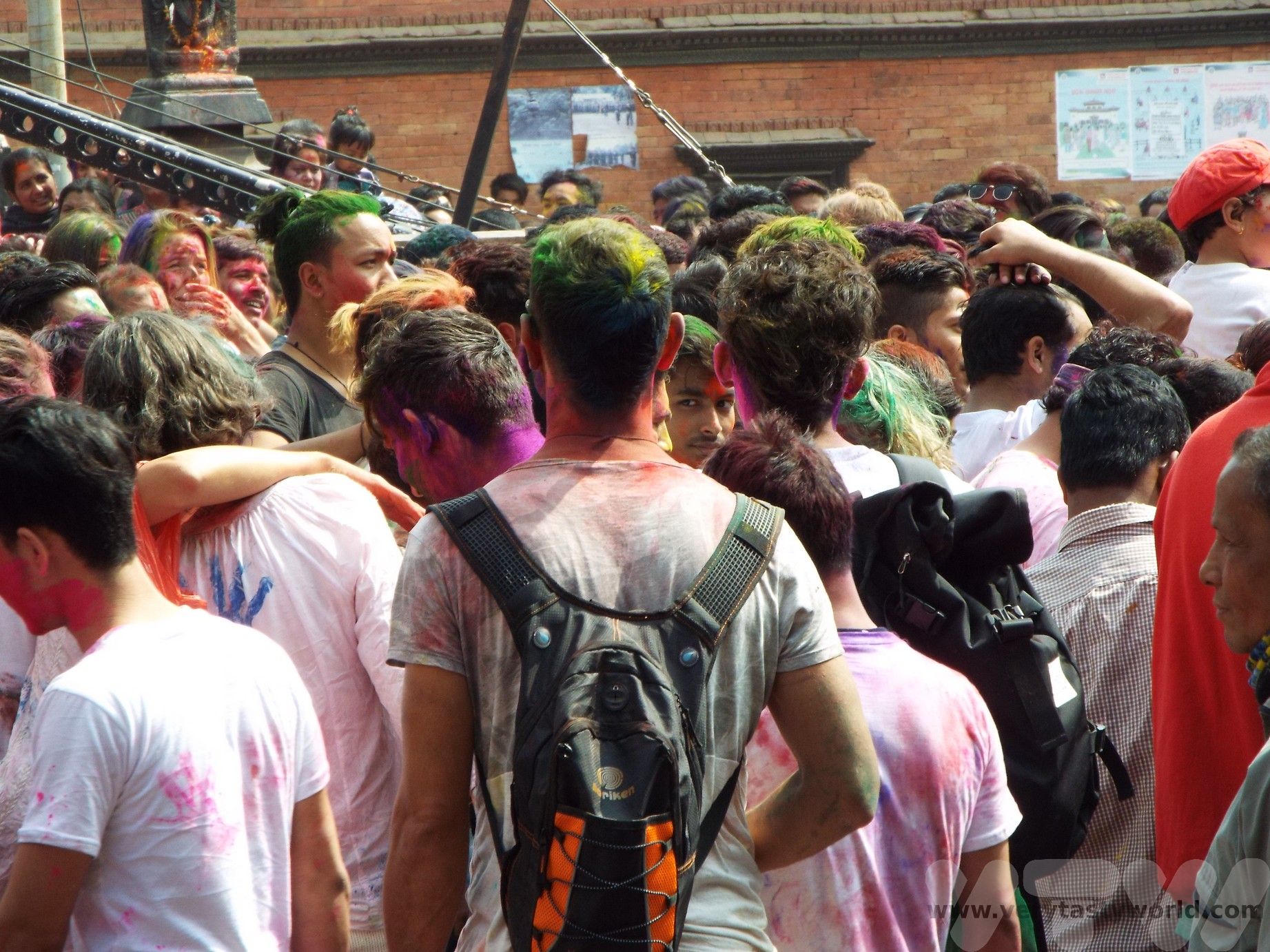
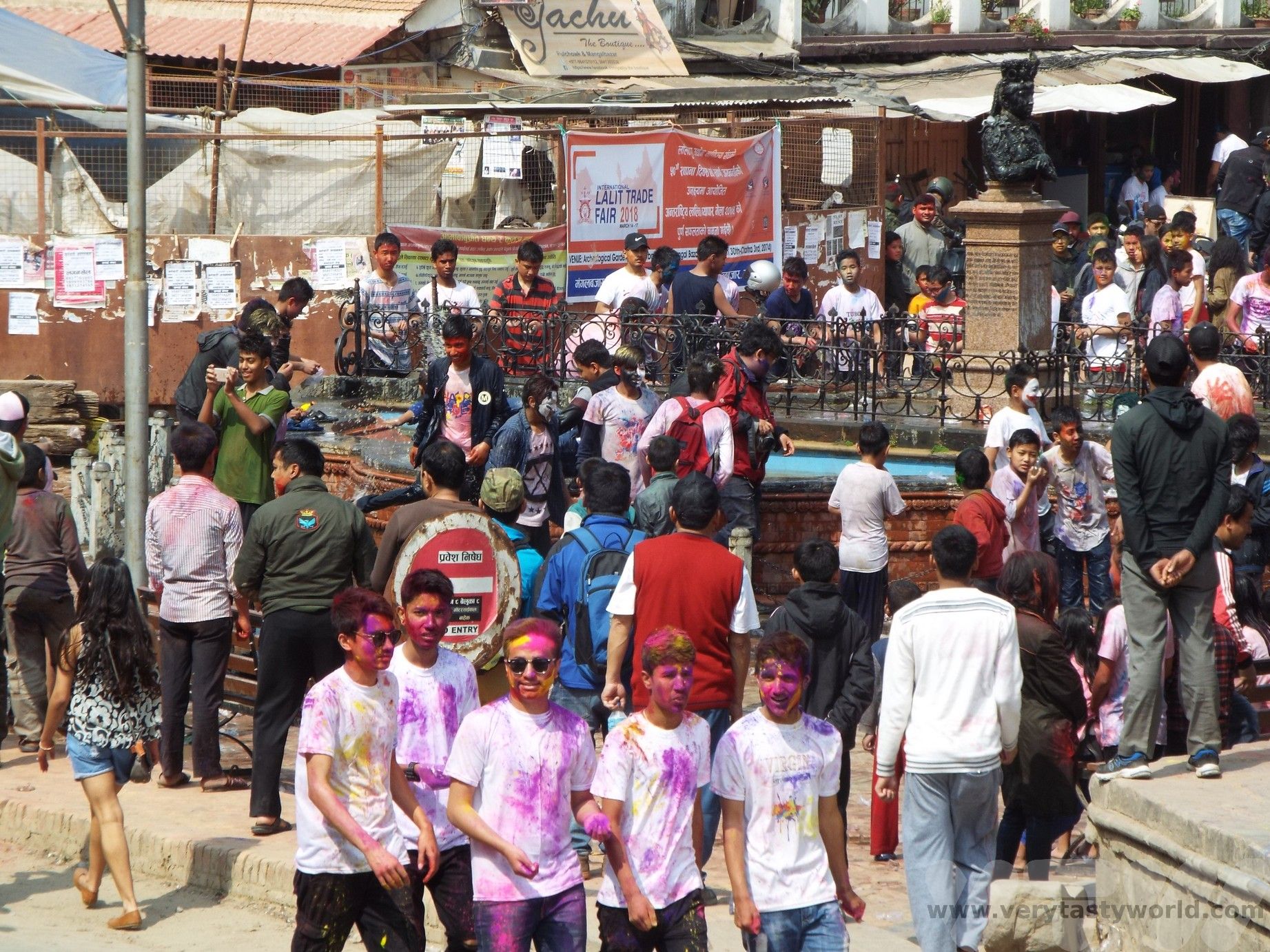
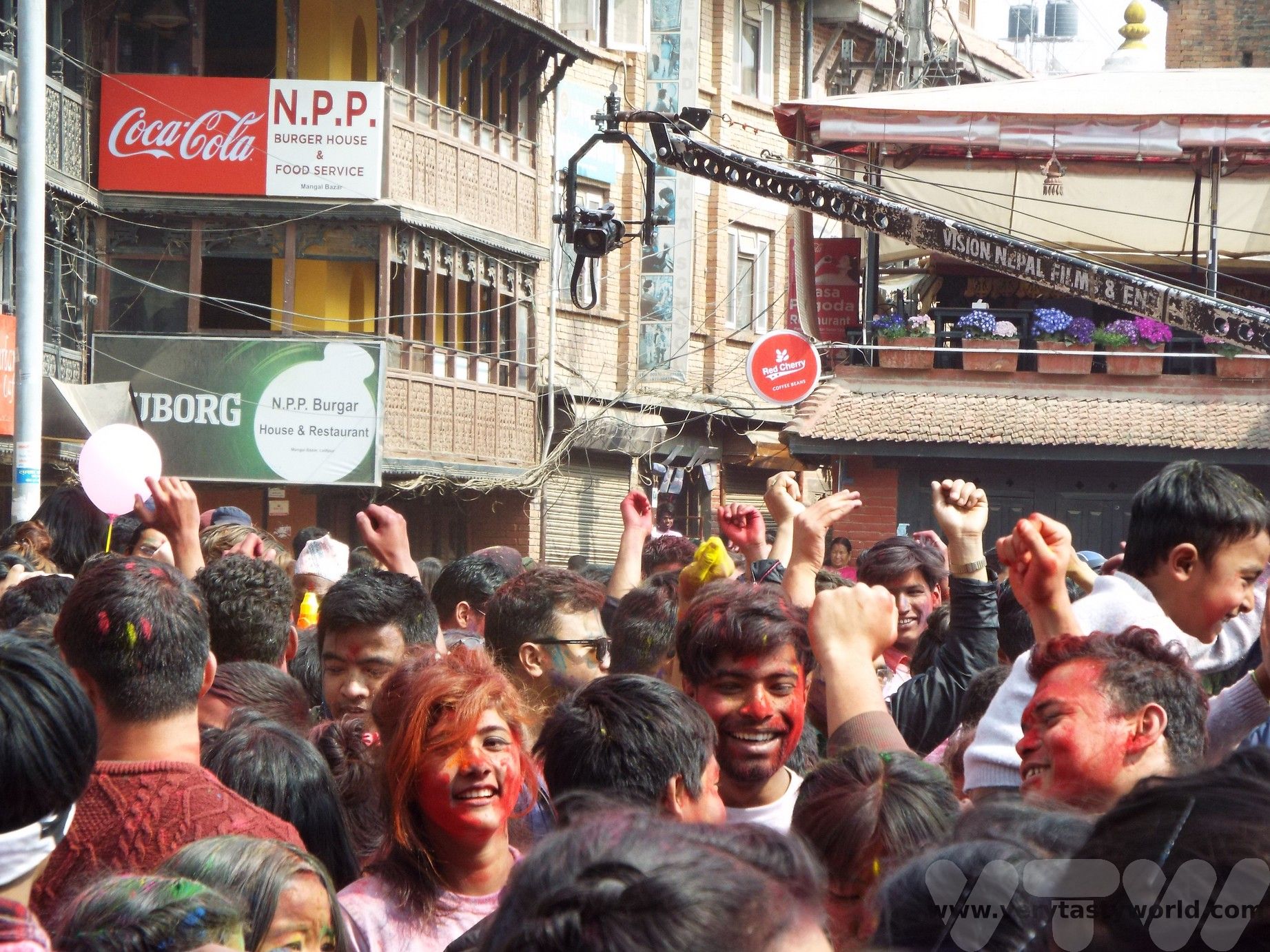


Even one of the local dogs took part.
Walking through the town people were singing and dancing in the streets, “Happy, Happy, Holi!”
It was lovely looking out at the celebrations over Durbar Square.
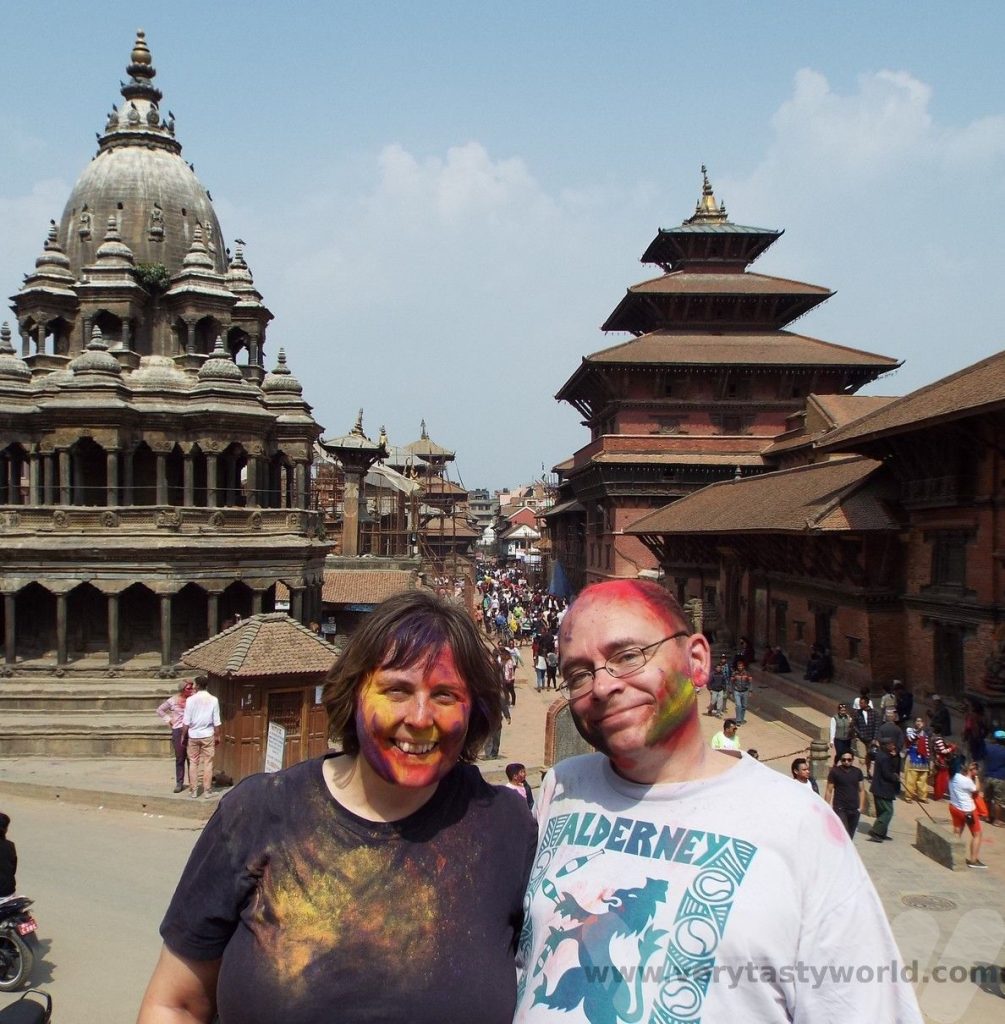
Holi In Nepal – Celebratory Food
Of course we wanted to try some of the local food. At a tiny restaurant off one of the side-streets near Durbar Square in Patan, we joined local people sitting on benches in front of low tables, and discovered chatamari. We sat down on a bench and watched the cook expertly make this lovely dish. It’s a celebratory food and it seemed entirely appropriate for the day.
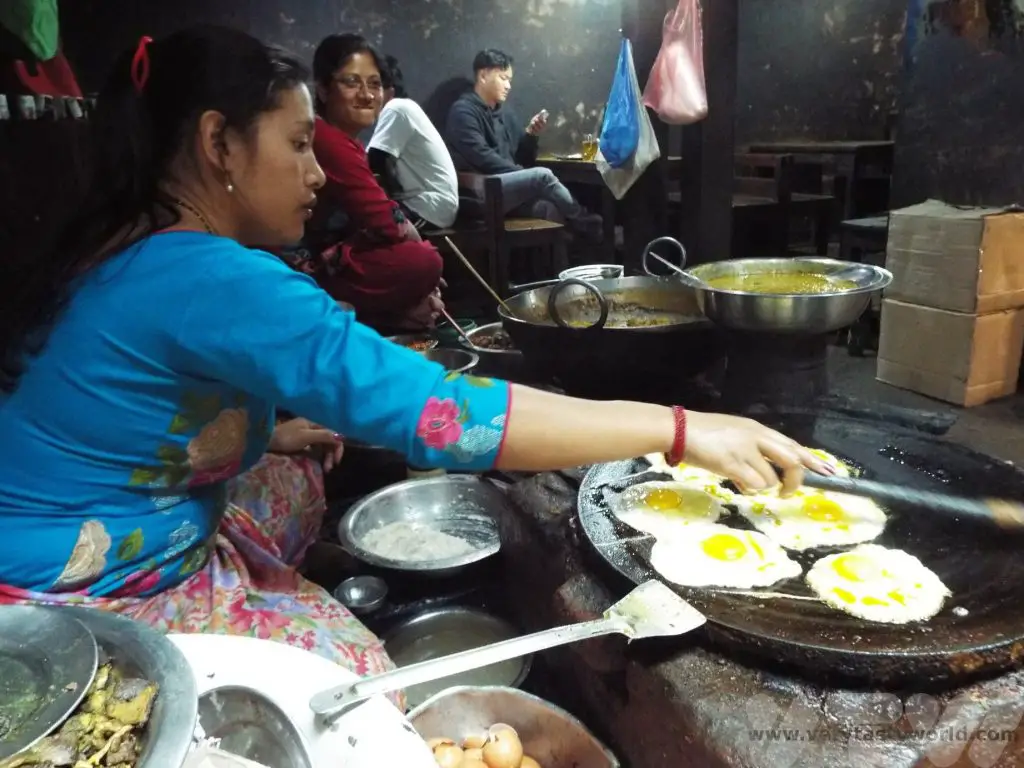
Chatamari is a specialty of the Newar community of the Kathmandu valley. It is like a pancake with toppings. The batter is made from rice flour, spices and eggs. It is then fried on top of a circular flat grill and various toppings are added as it cooks – ours comprised minced meat, onions and a fried egg – but fully veggie options are available.
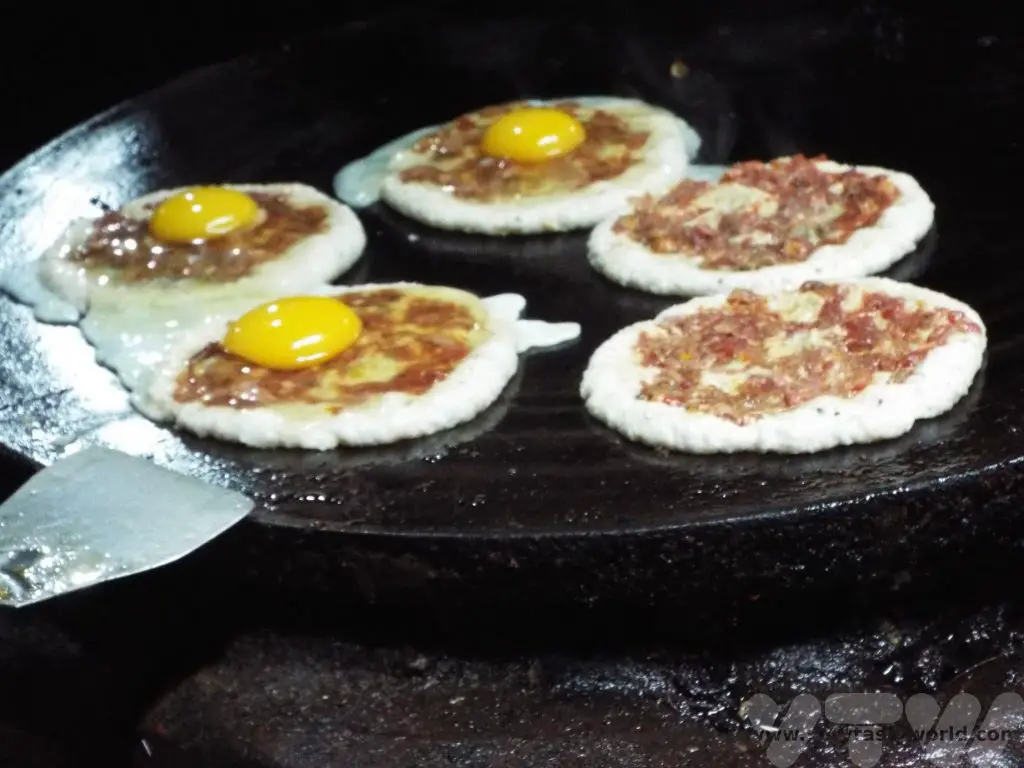
These were the star dish but were accompanied with some roasted lamb, a potato curry and bhuteko bhatmas, soybeans roasted in Nepali spices, which were spicy, crunchy and absolutely delicious. (And perfectly complemented a nice, cool beer.)
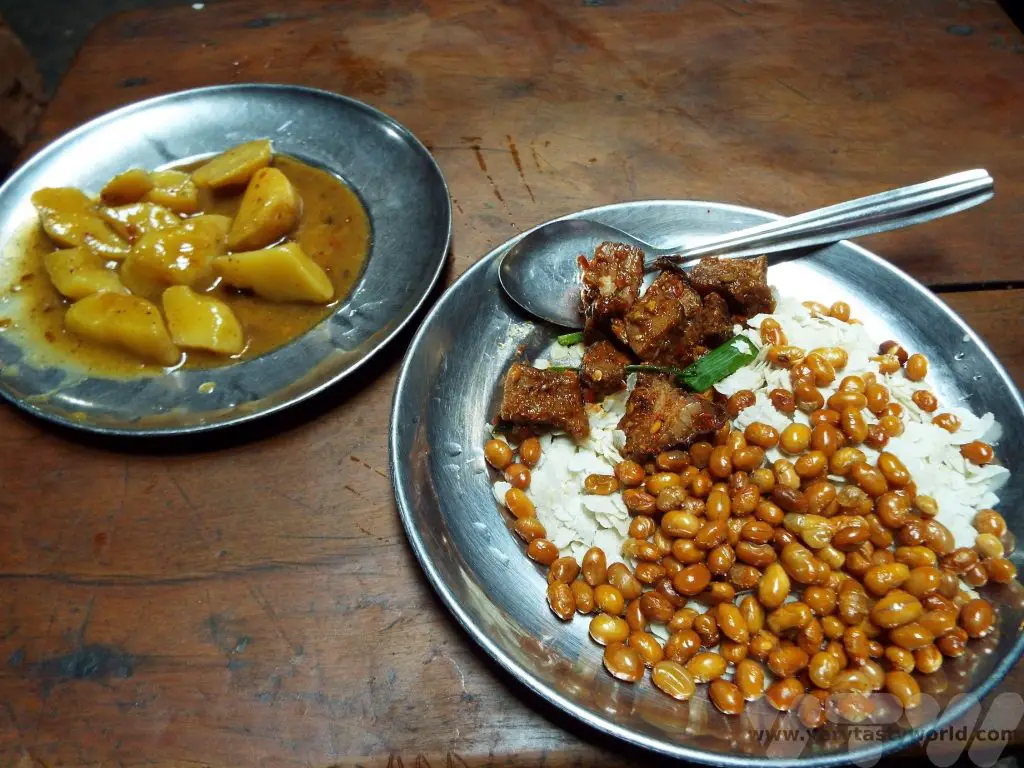
After lunch it was time to head back into the happy mayhem and explore further. The local children were particularly interested in playing Holi with us. Just as we were about to leave Patan we asked a passer-by to take a photo of colourful us – by the time he had figured out the camera setting… PHOTOBOMB! The kids were very happy to show us their pre-prepared waterbombs.

Arriving back at our (relatively posh) hotel in Kathmandu, absolutely covered in paint, we were a little unsure about how we would be received. Nobody minded, they knew it was Holi, and the local people were delighted that we had taken part and we were greeted with smiles. We showered very carefully, doing our utmost not to get paint on the hotel’s towels. We were largely successful.
Holi in Nepal was one of the most colourful, delightful and – above all else – happy festivals we have ever attended. It was truly a day of joy.
